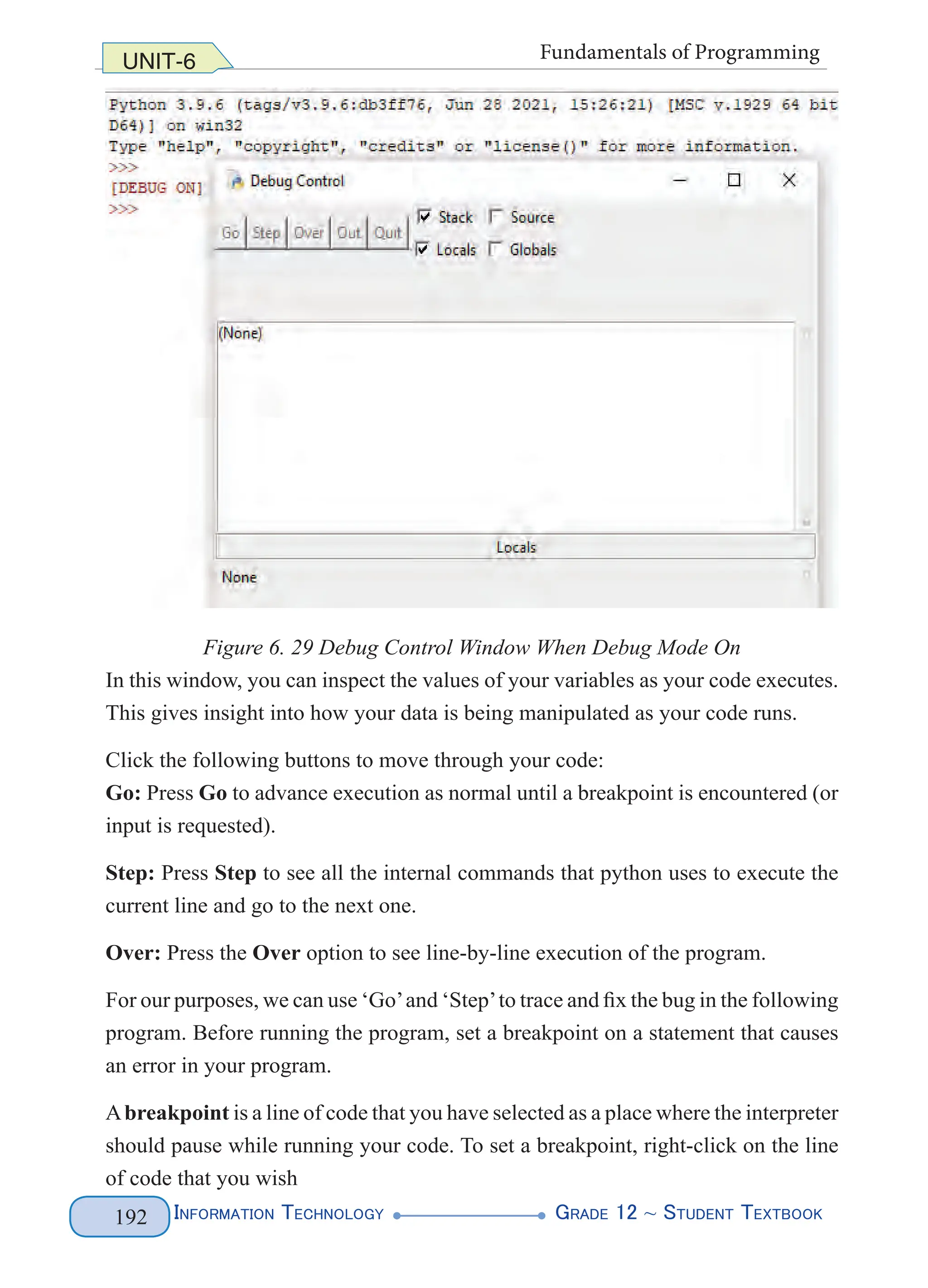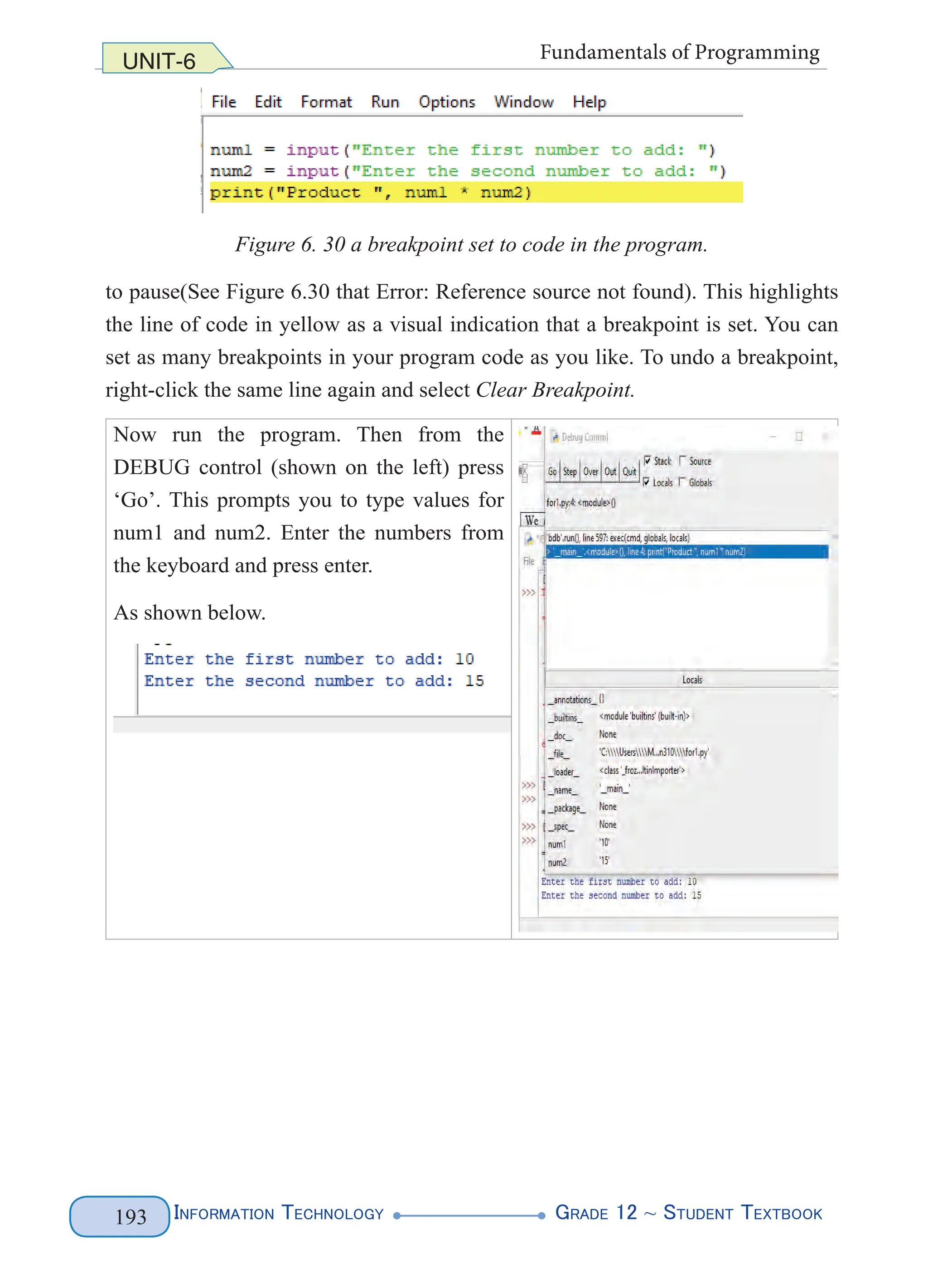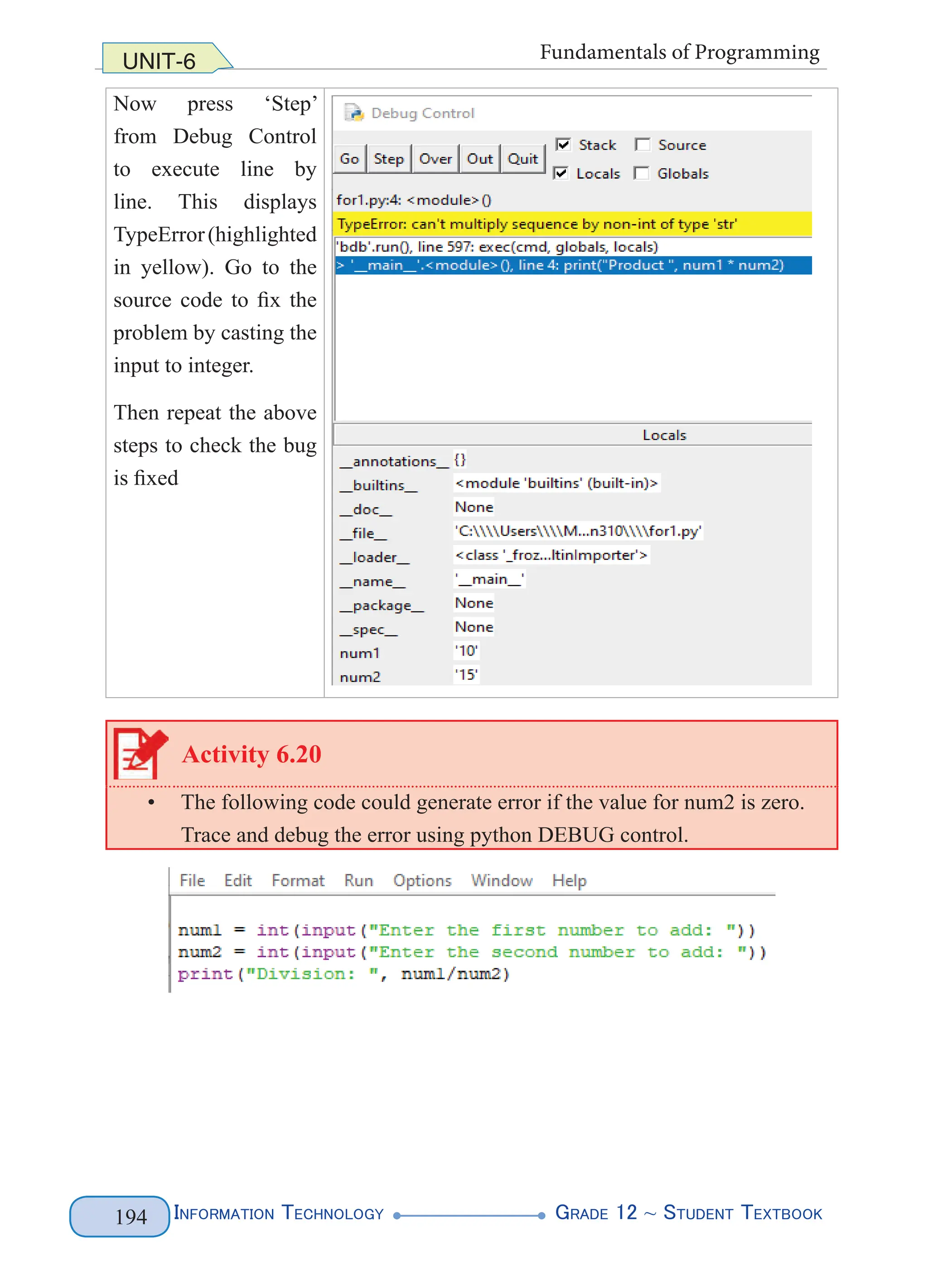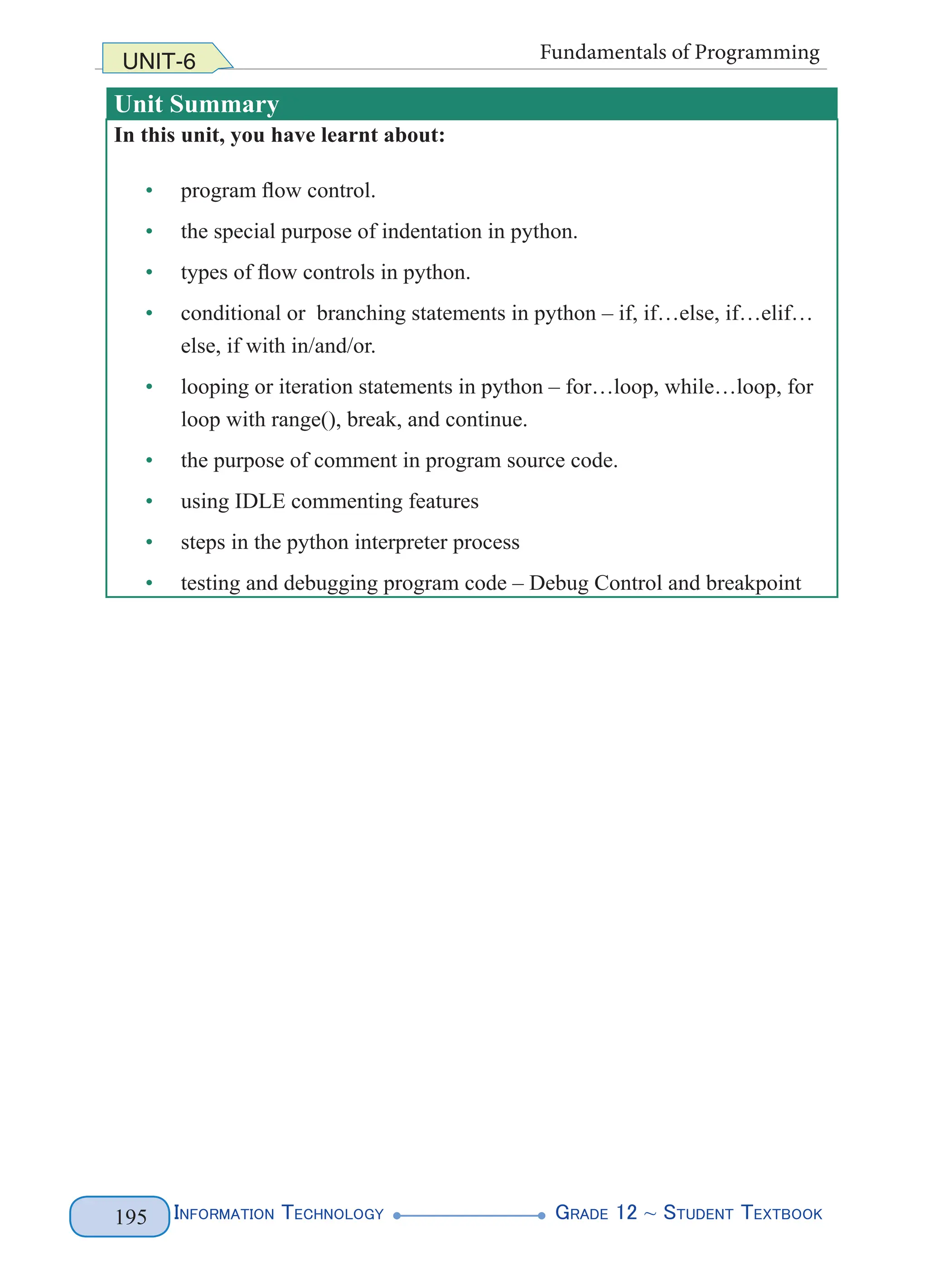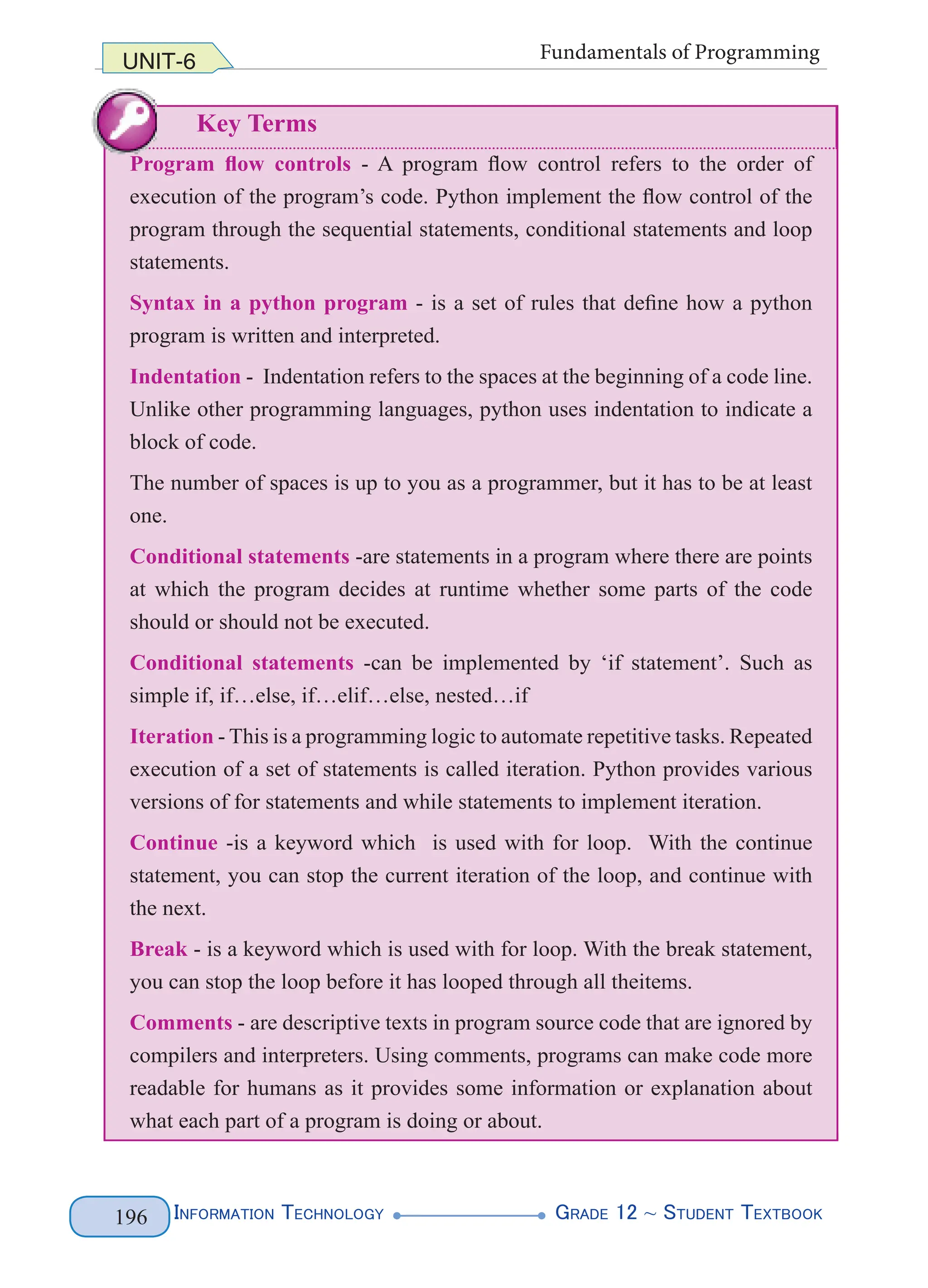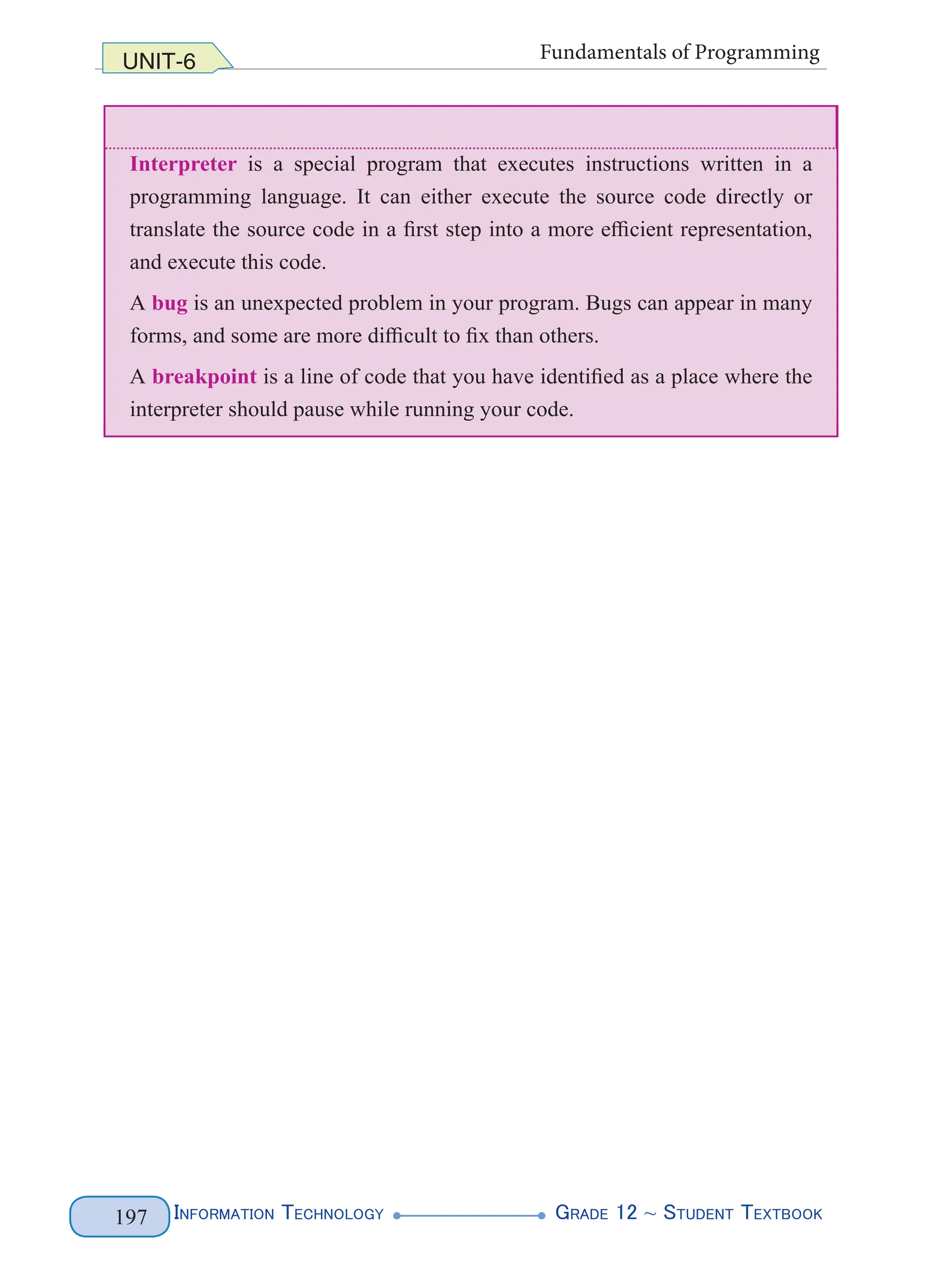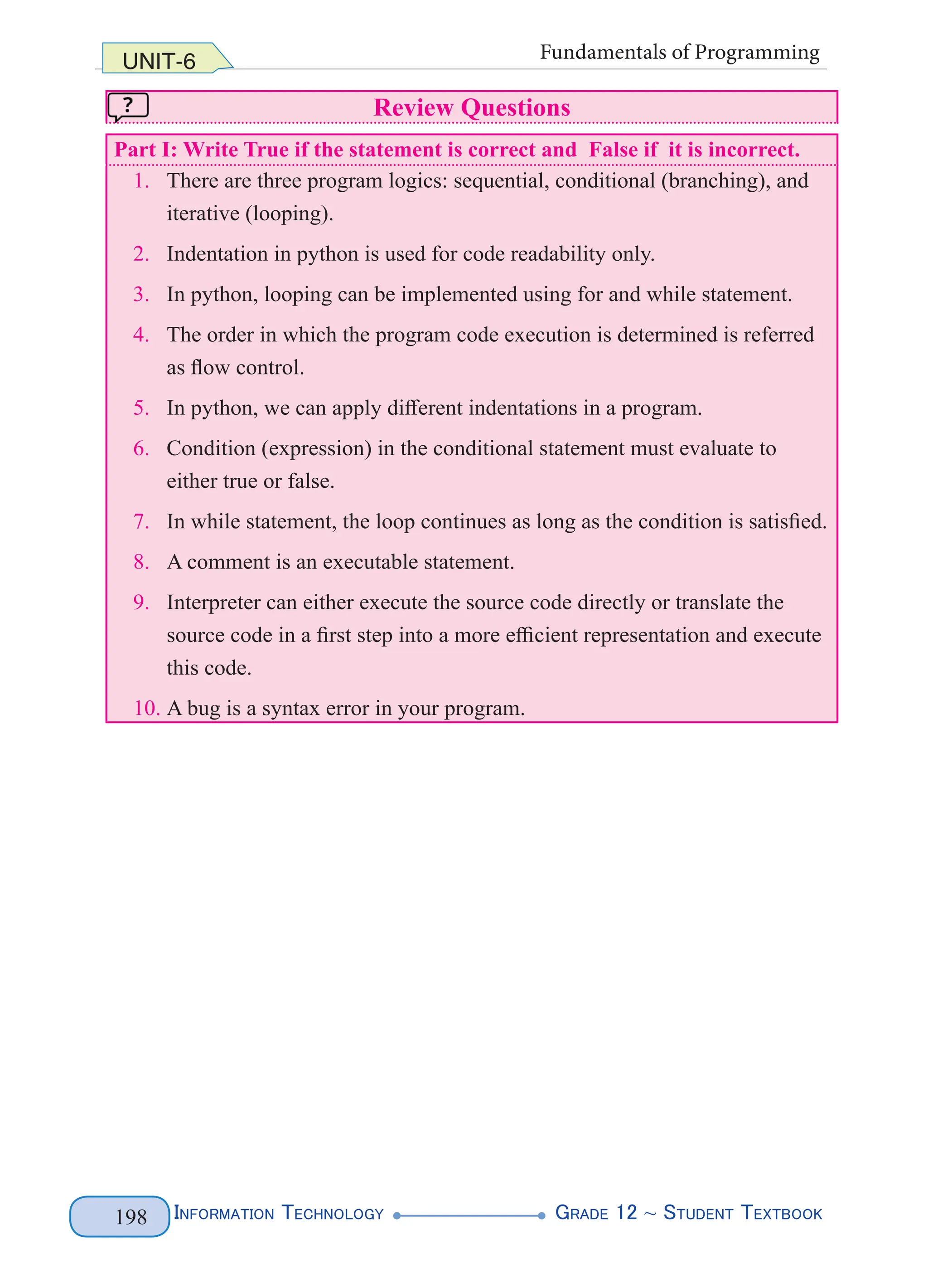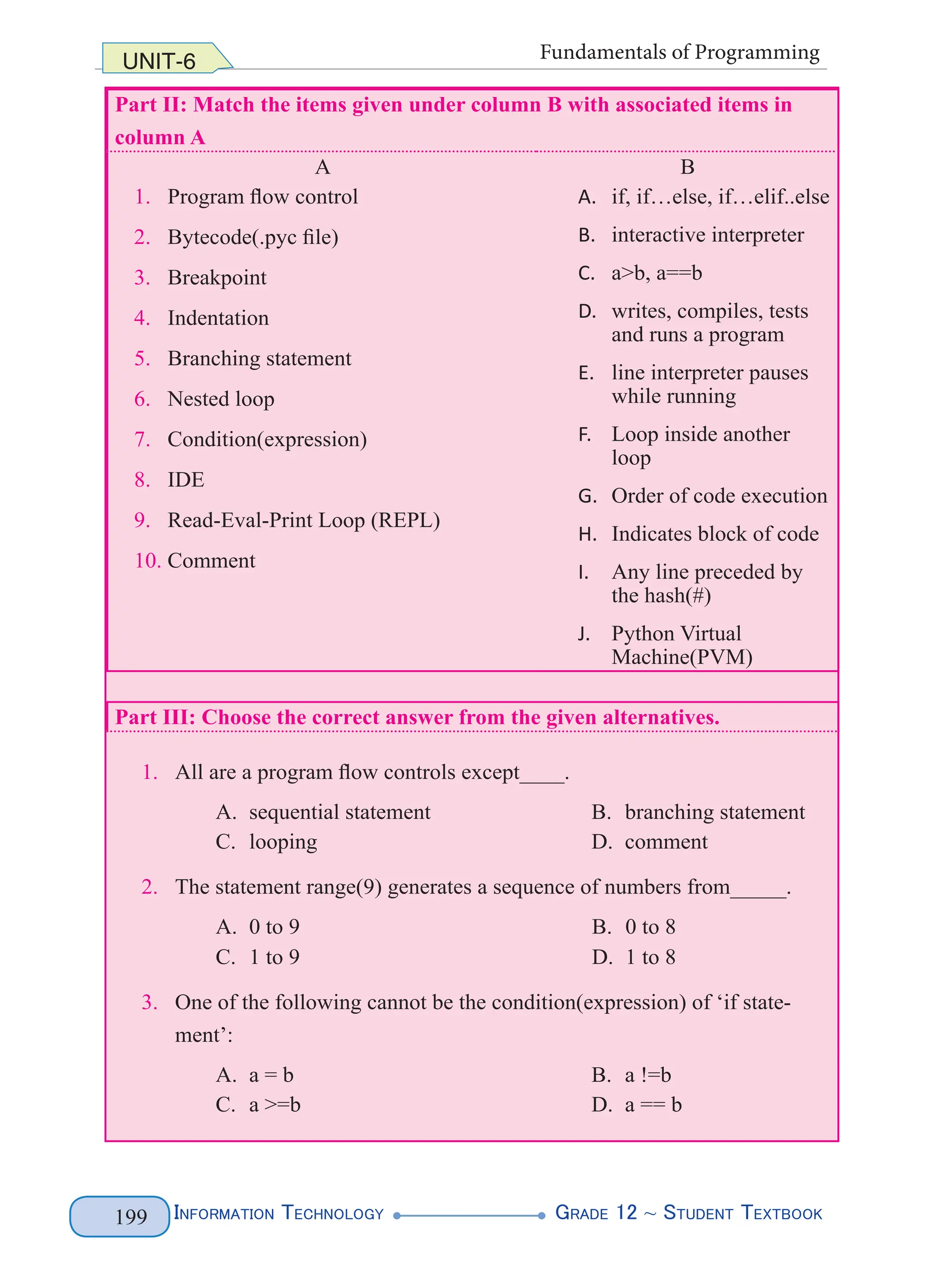The Grade 12 Information Technology textbook from the Federal Democratic Republic of Ethiopia covers essential topics such as ethical, legal, social, environmental, and health issues associated with information systems. It outlines the importance of digital identity management, intellectual property rights, and emerging technologies like big data and cloud computing. The textbook emphasizes responsible use of technology and awareness of the implications of information systems on society while providing strategies for maintaining textbooks.



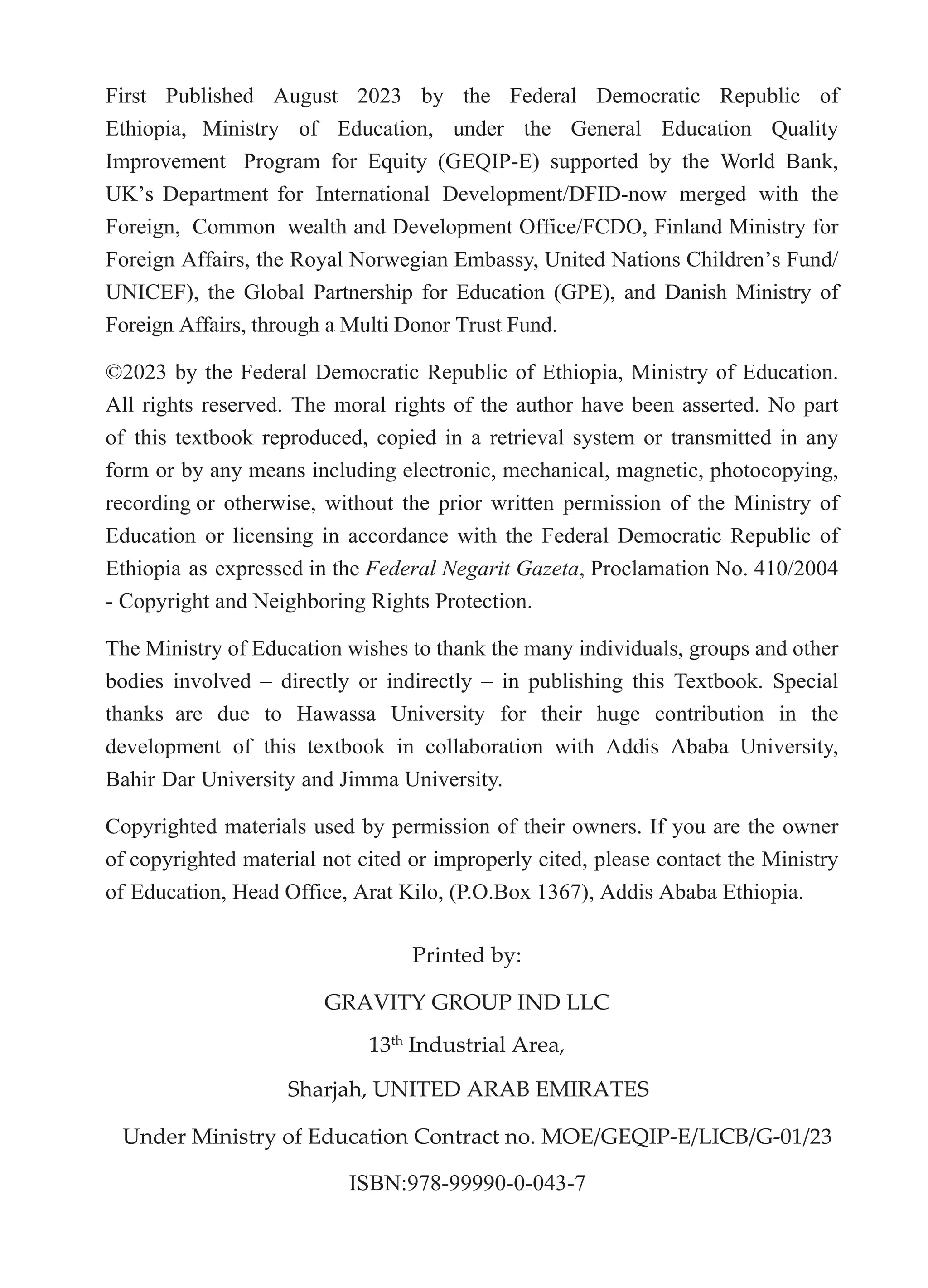
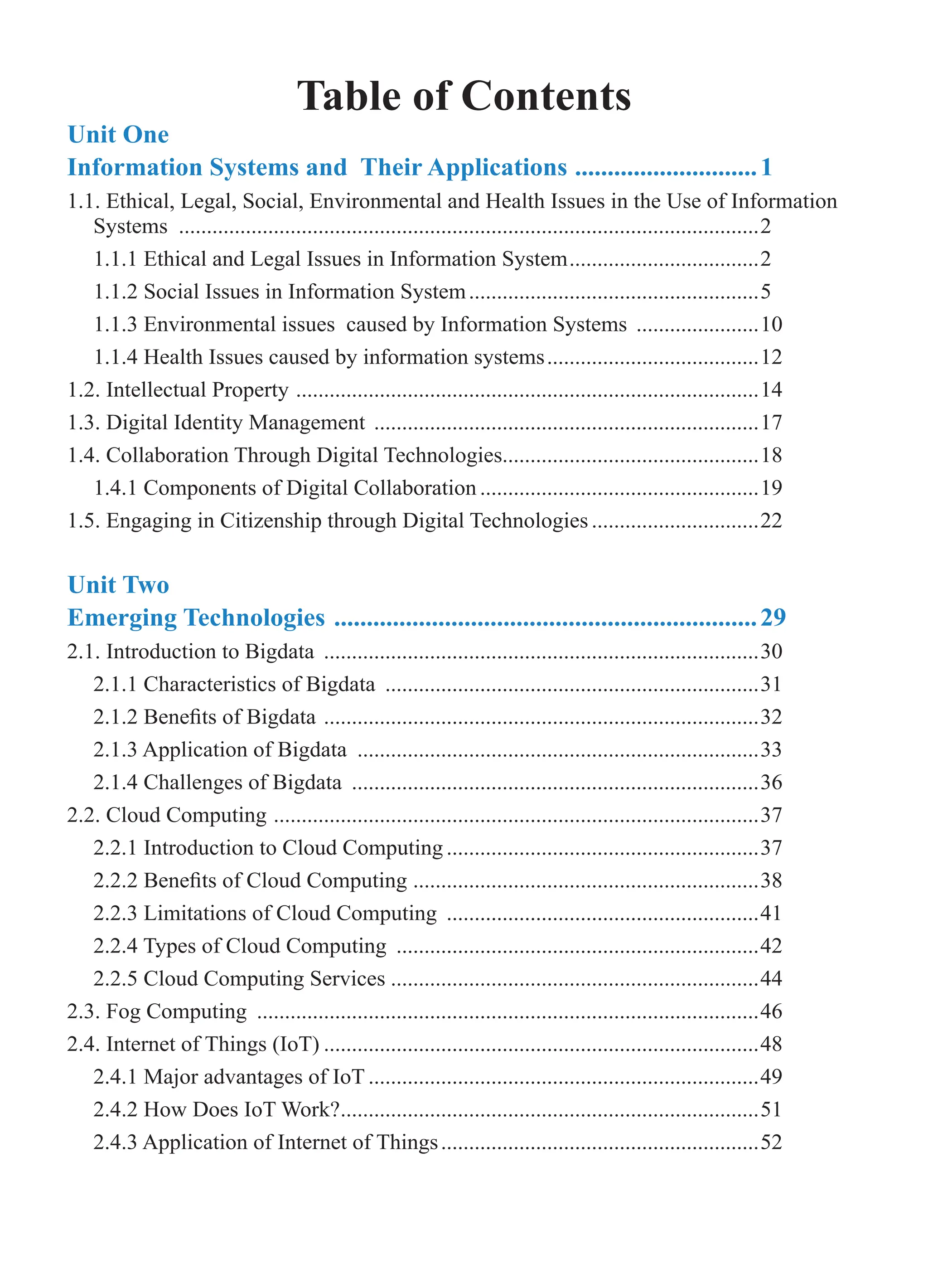
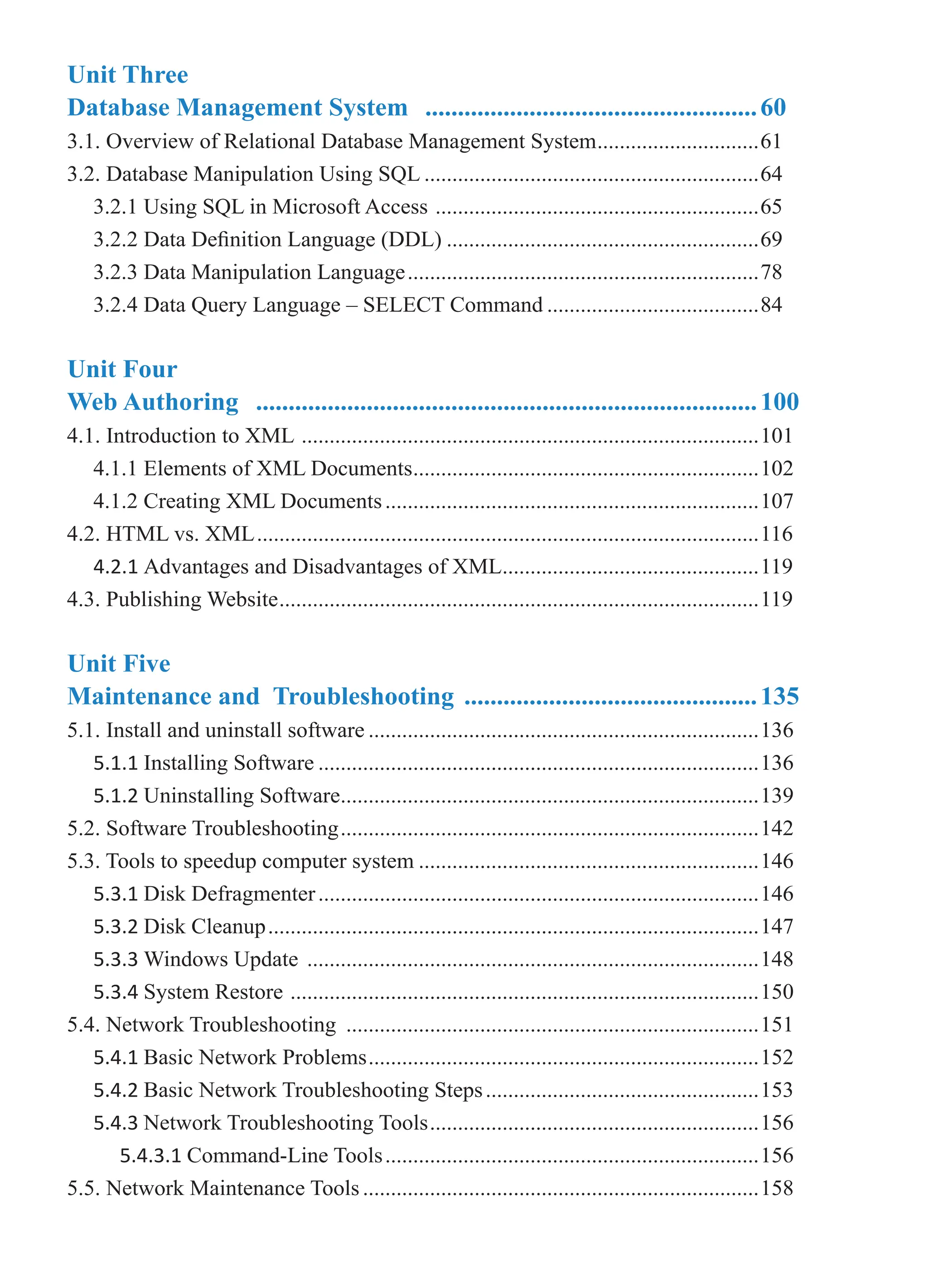
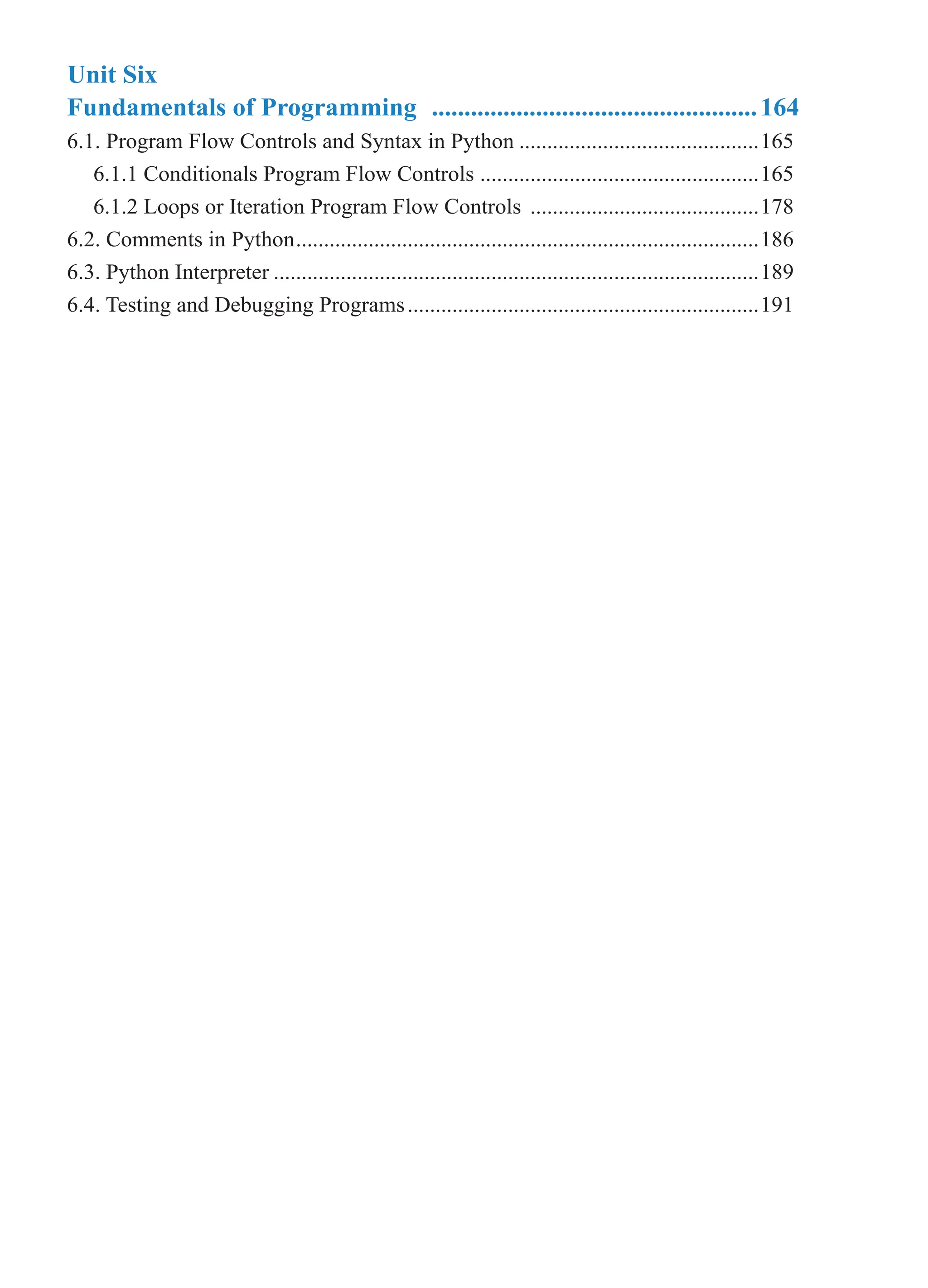
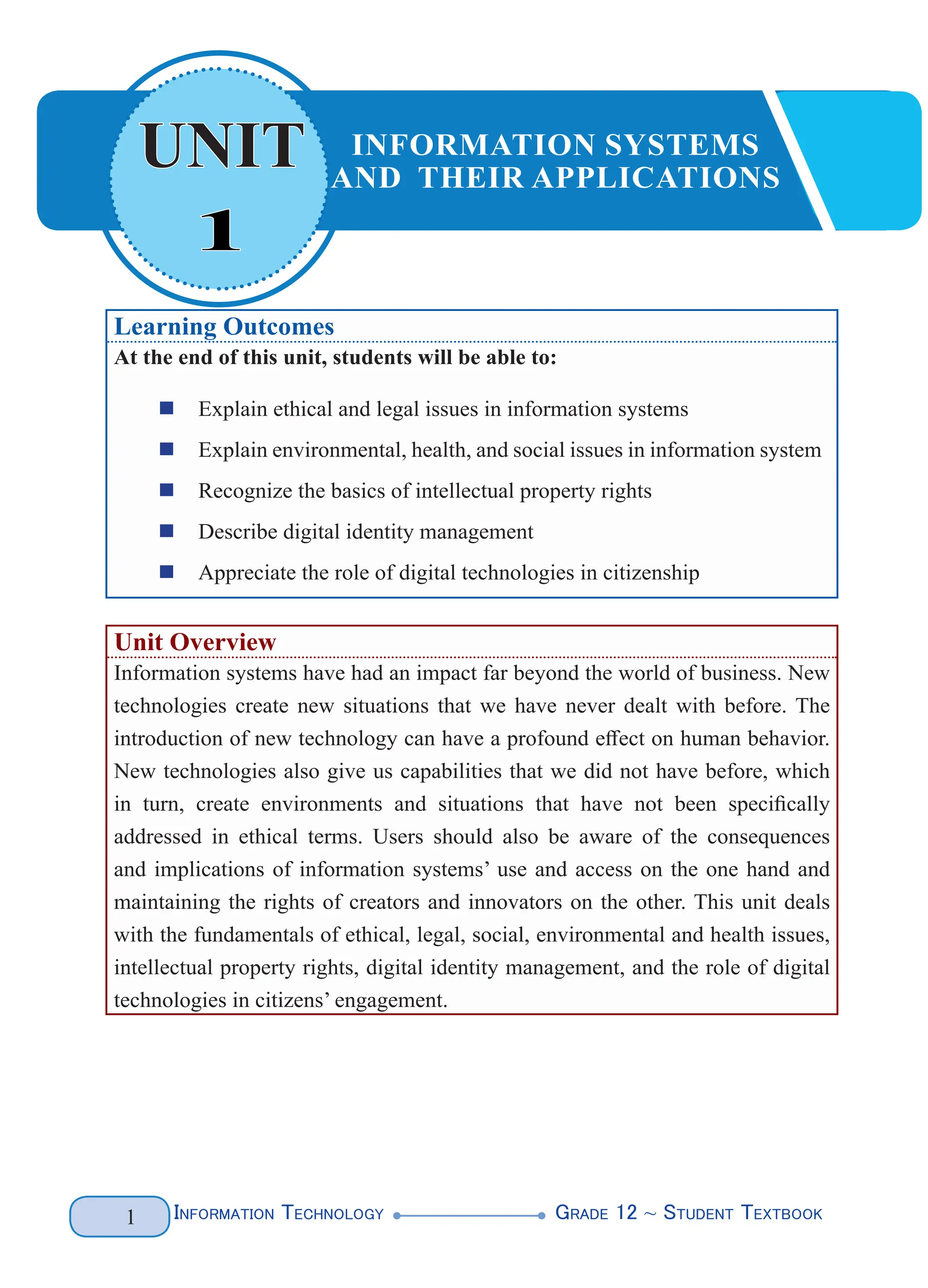
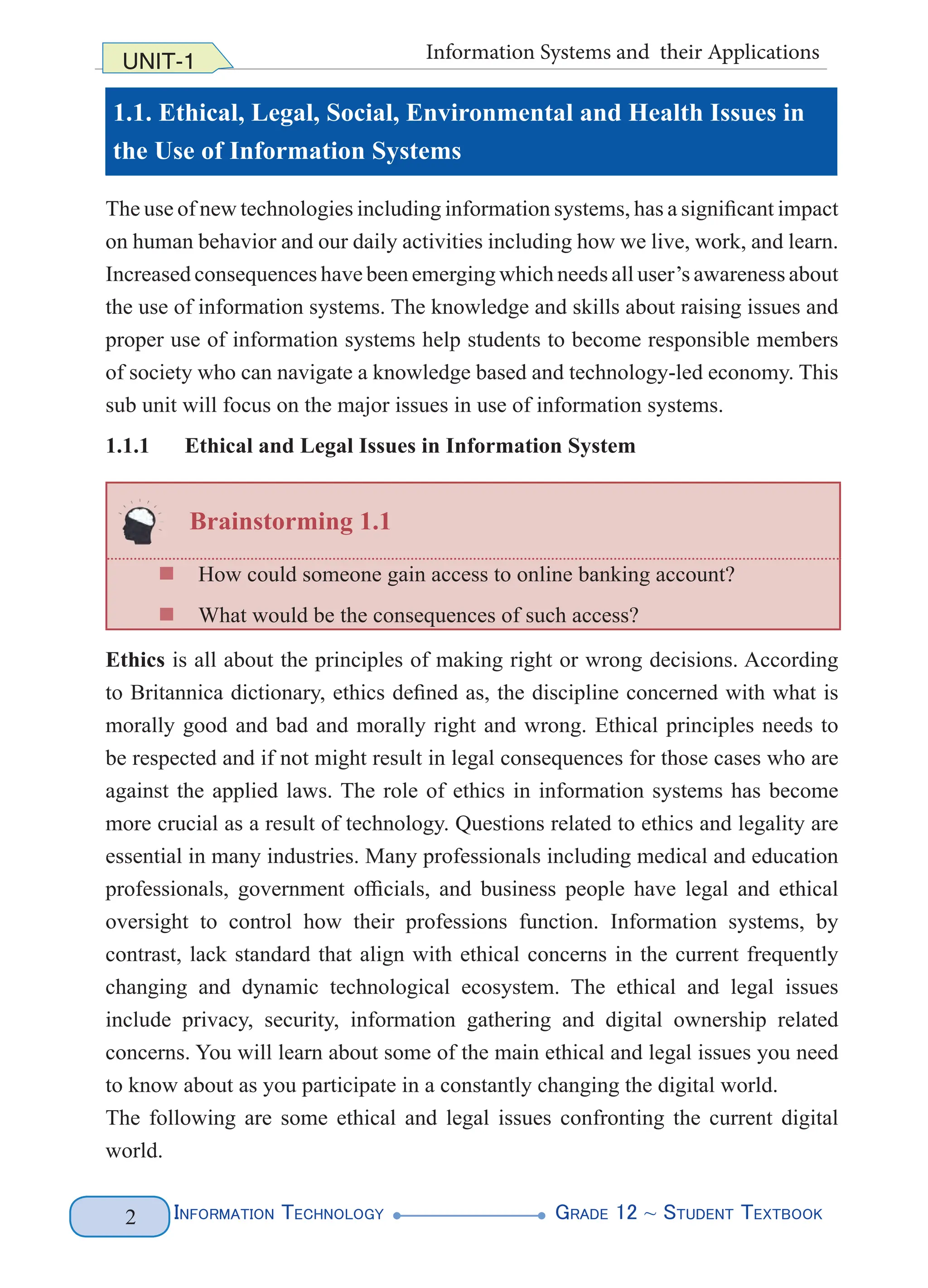
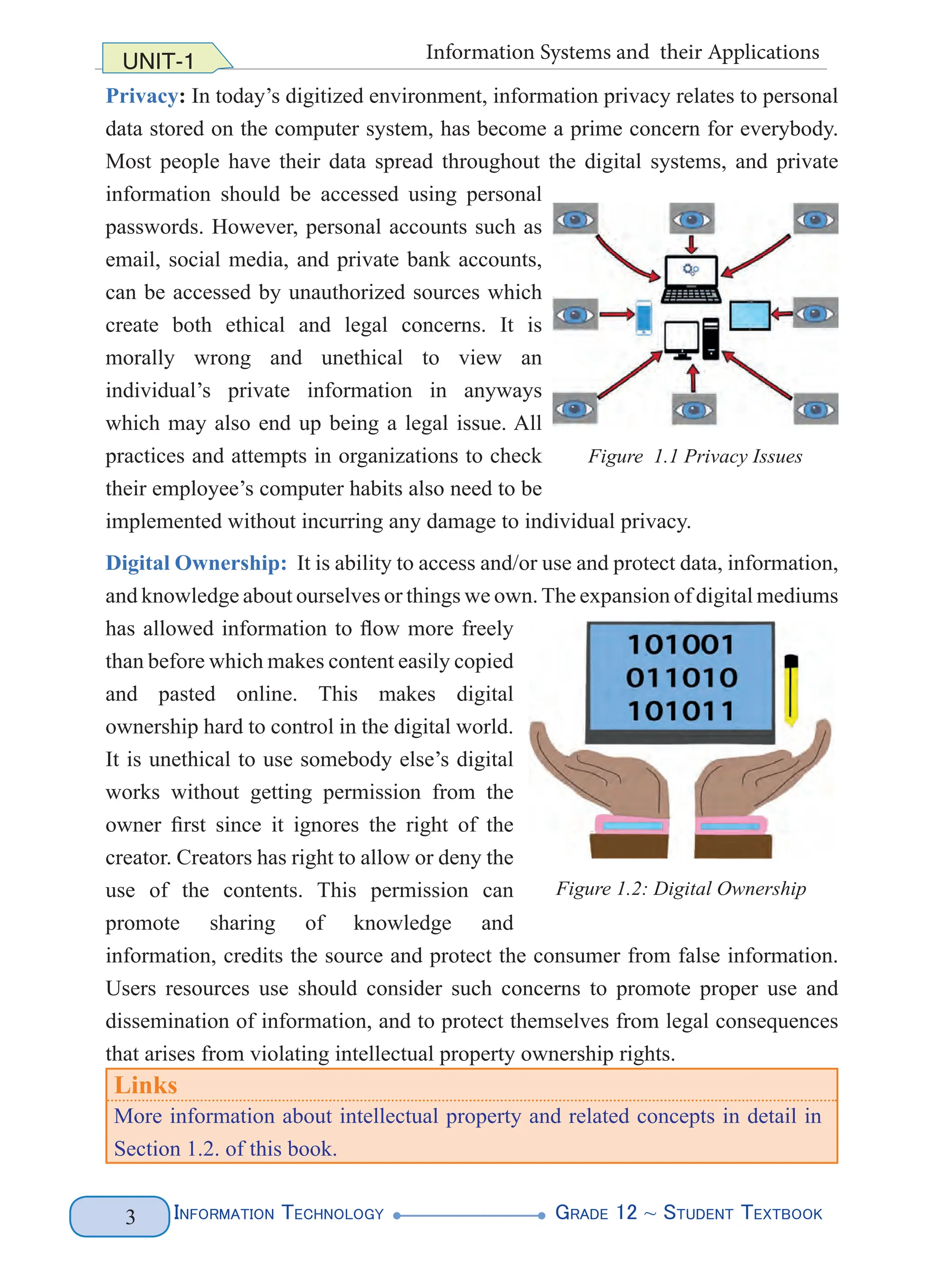
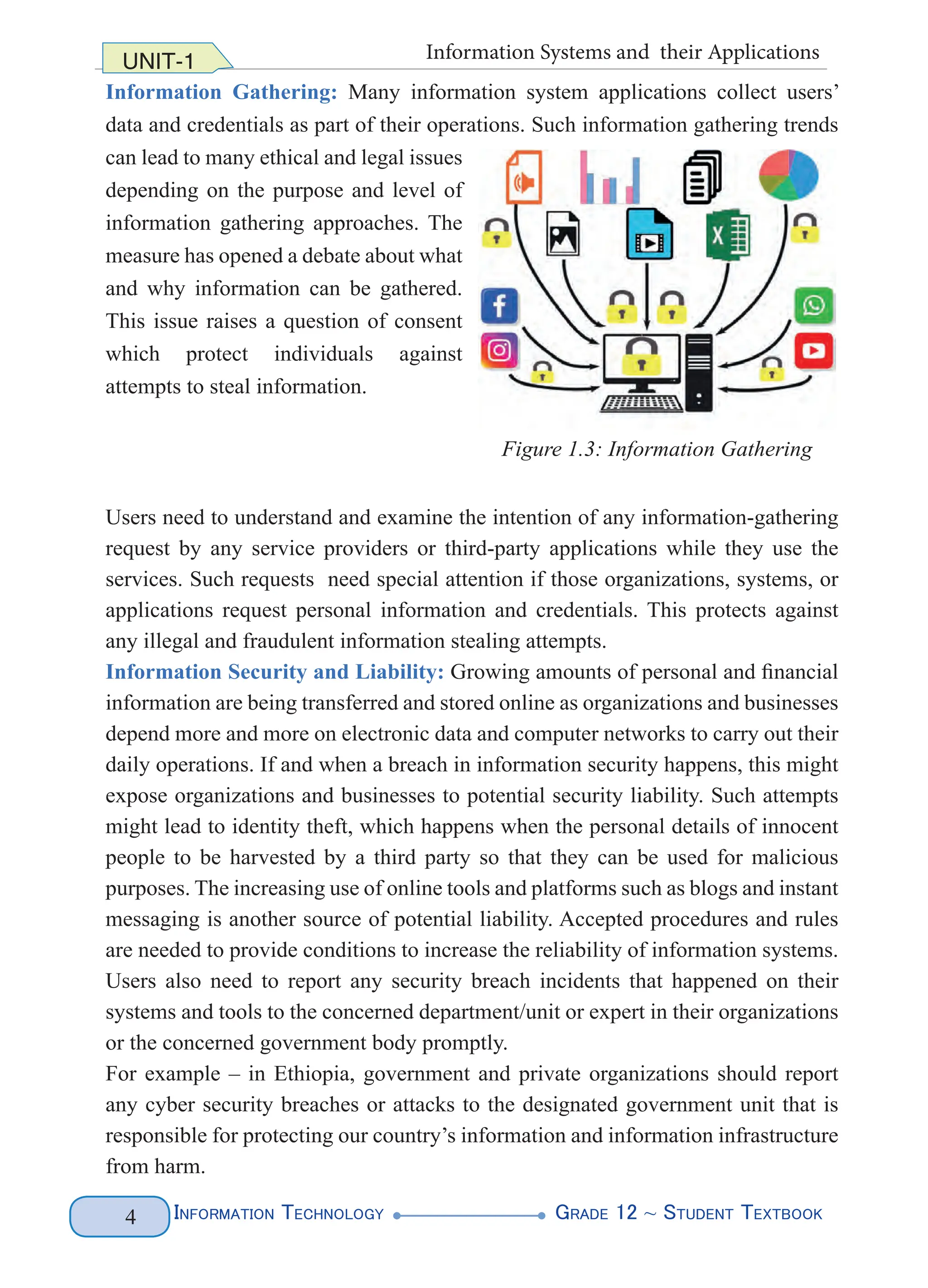
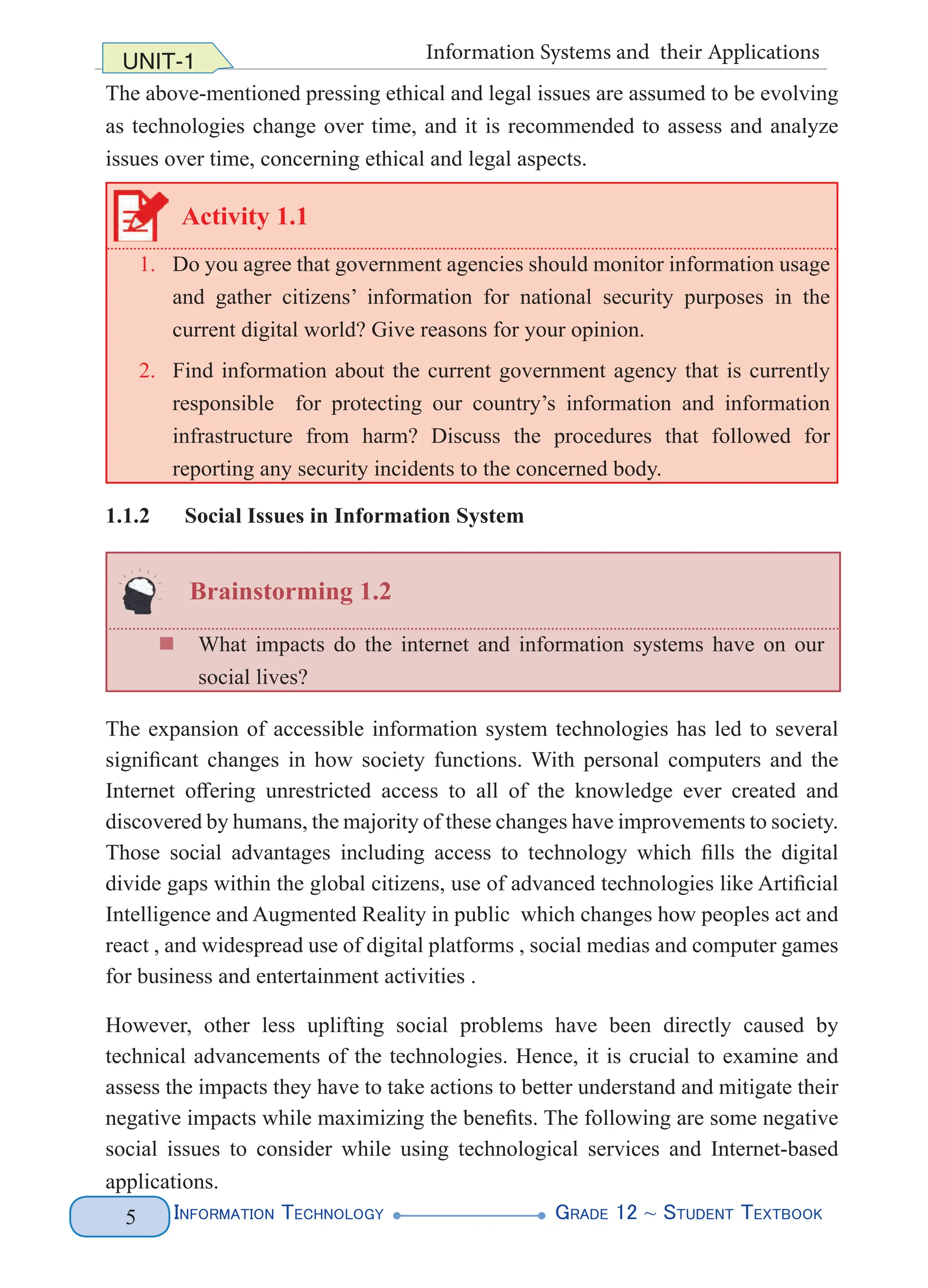
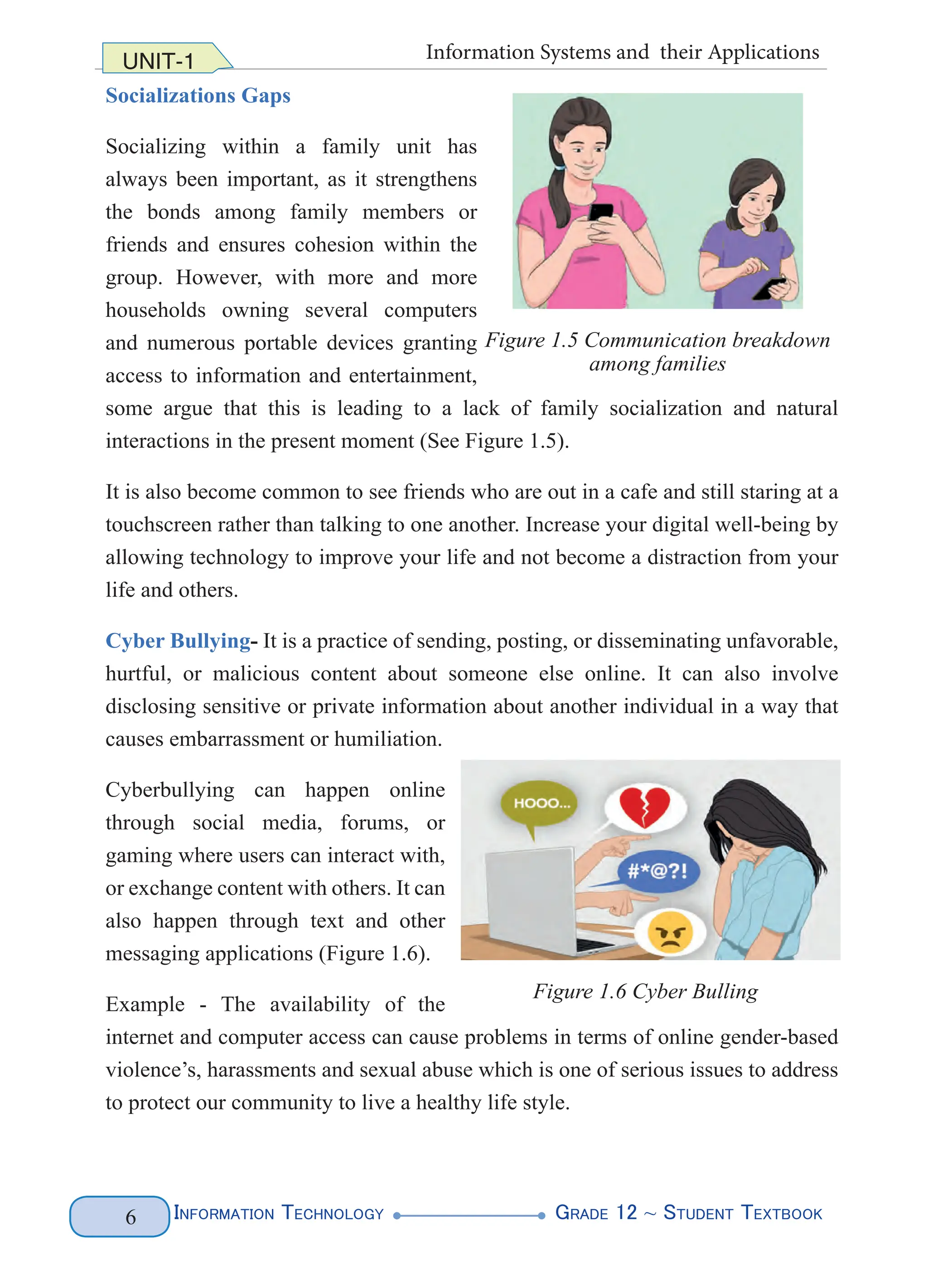
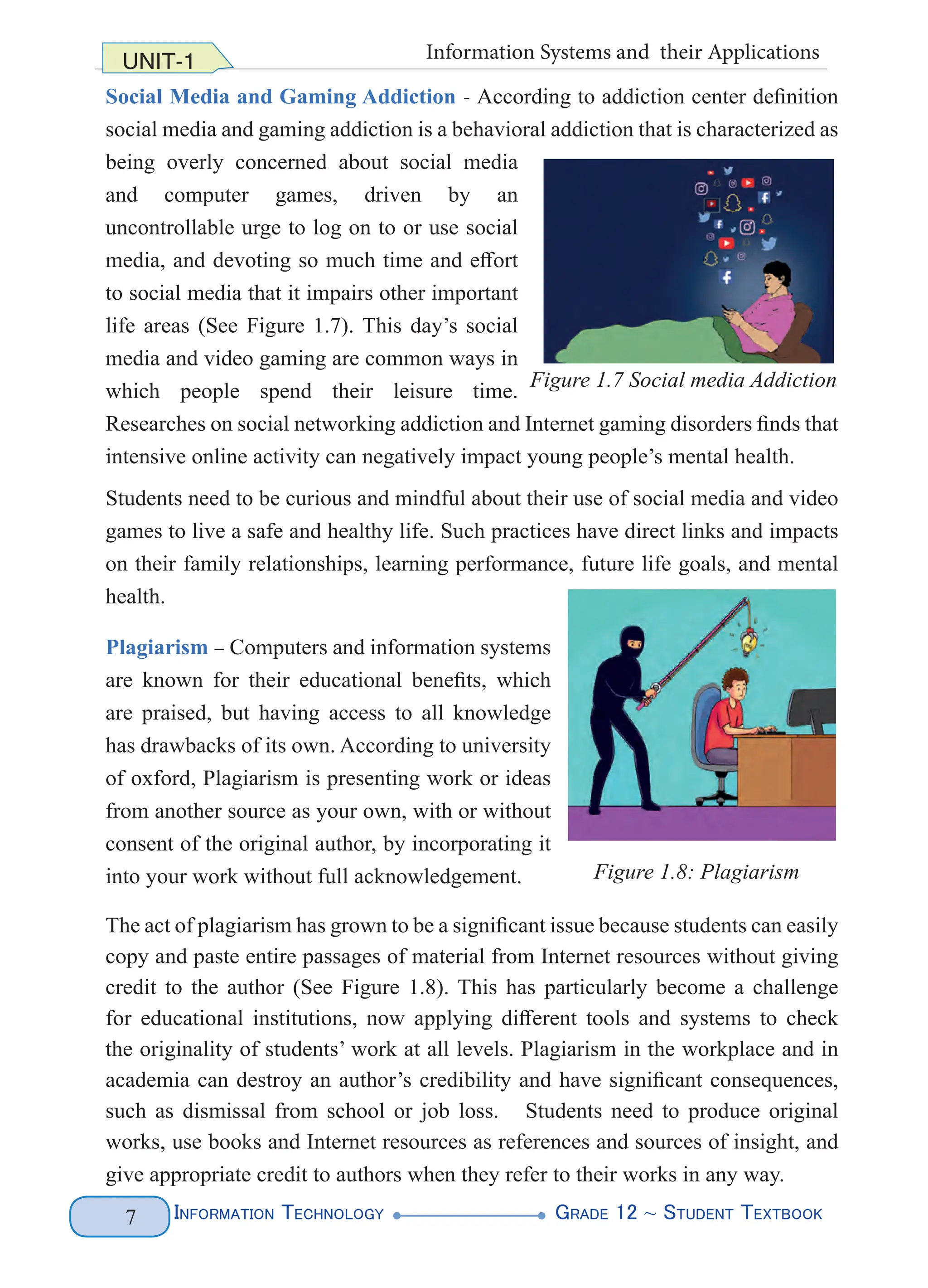
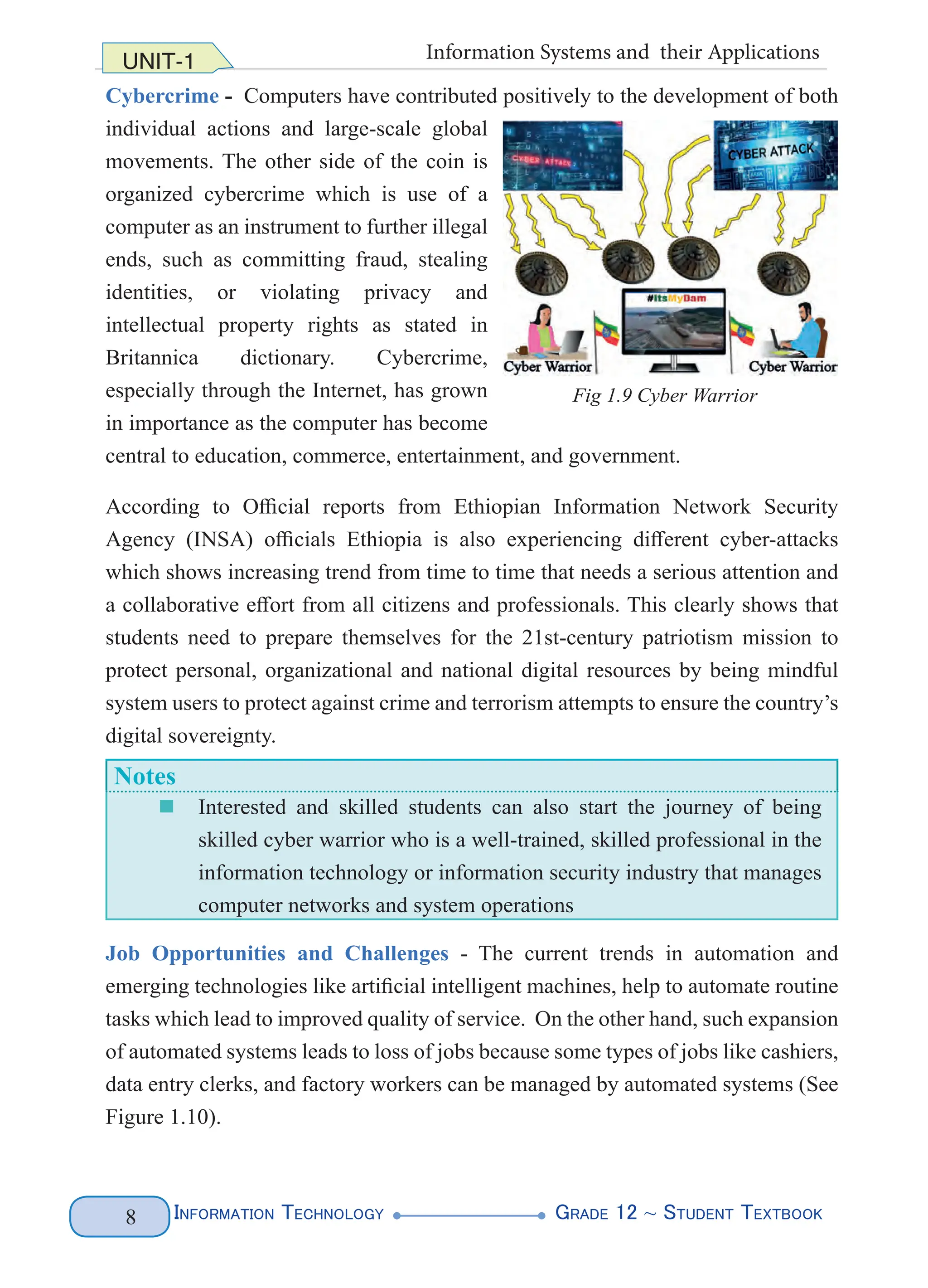
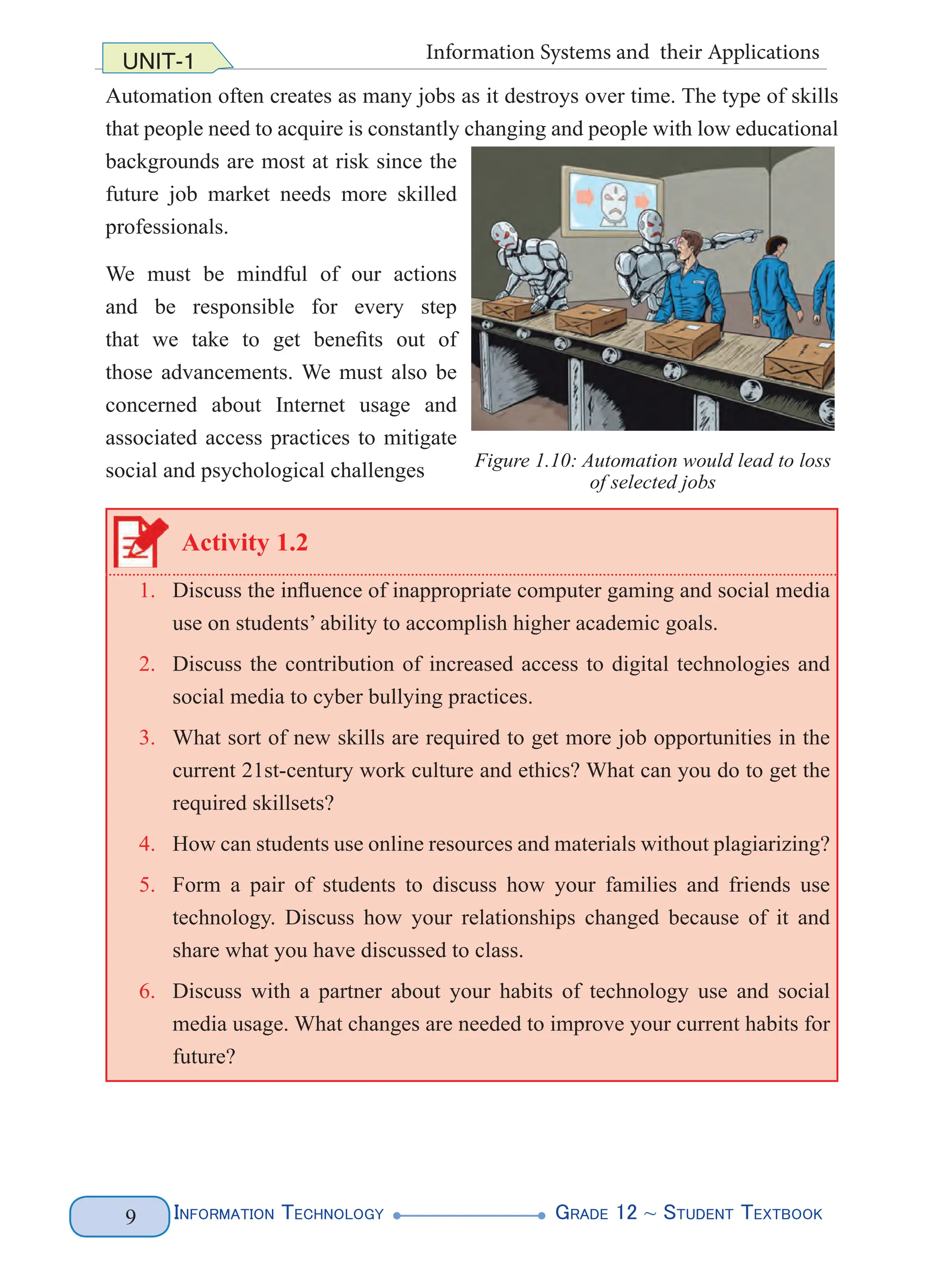
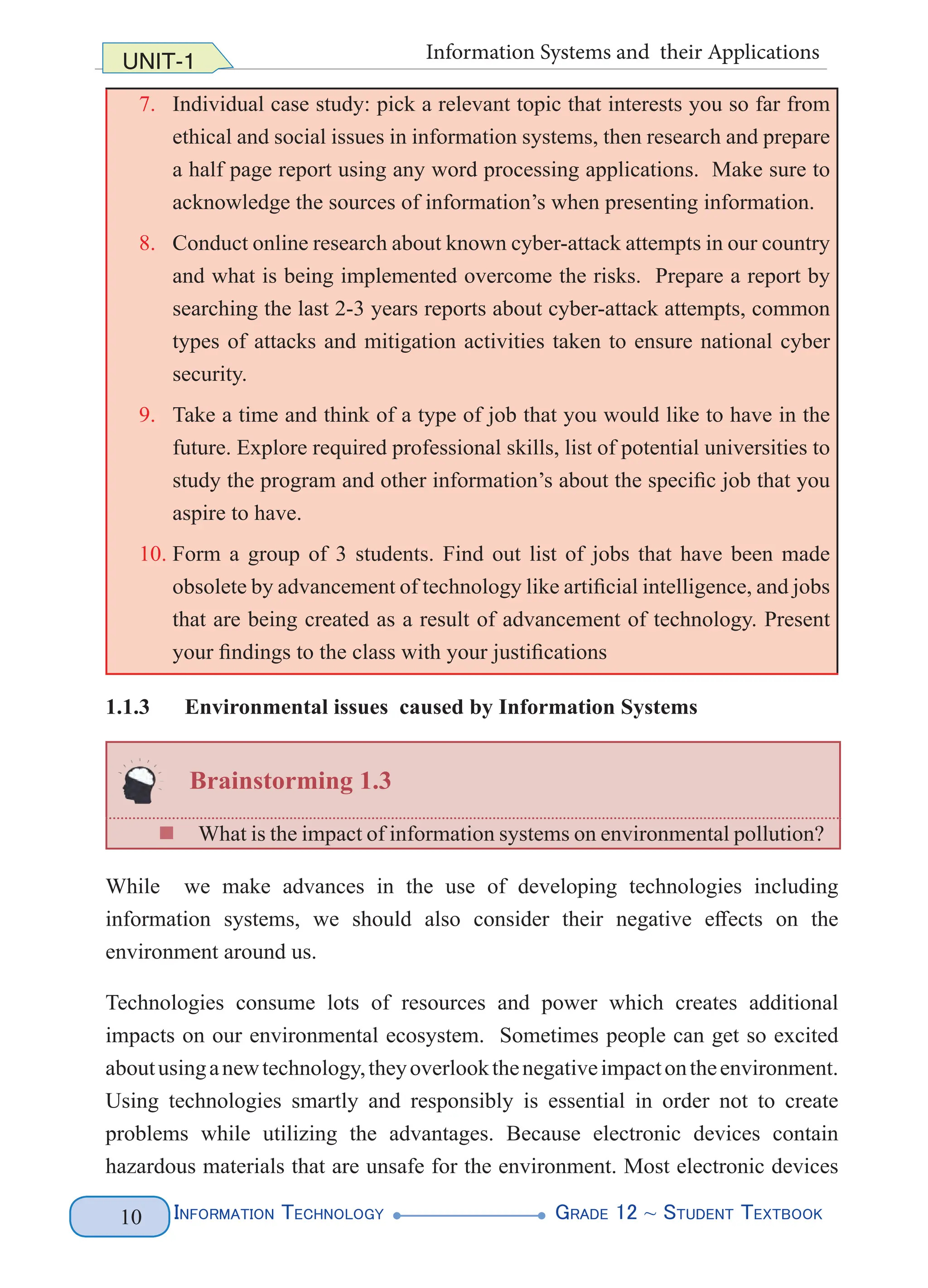
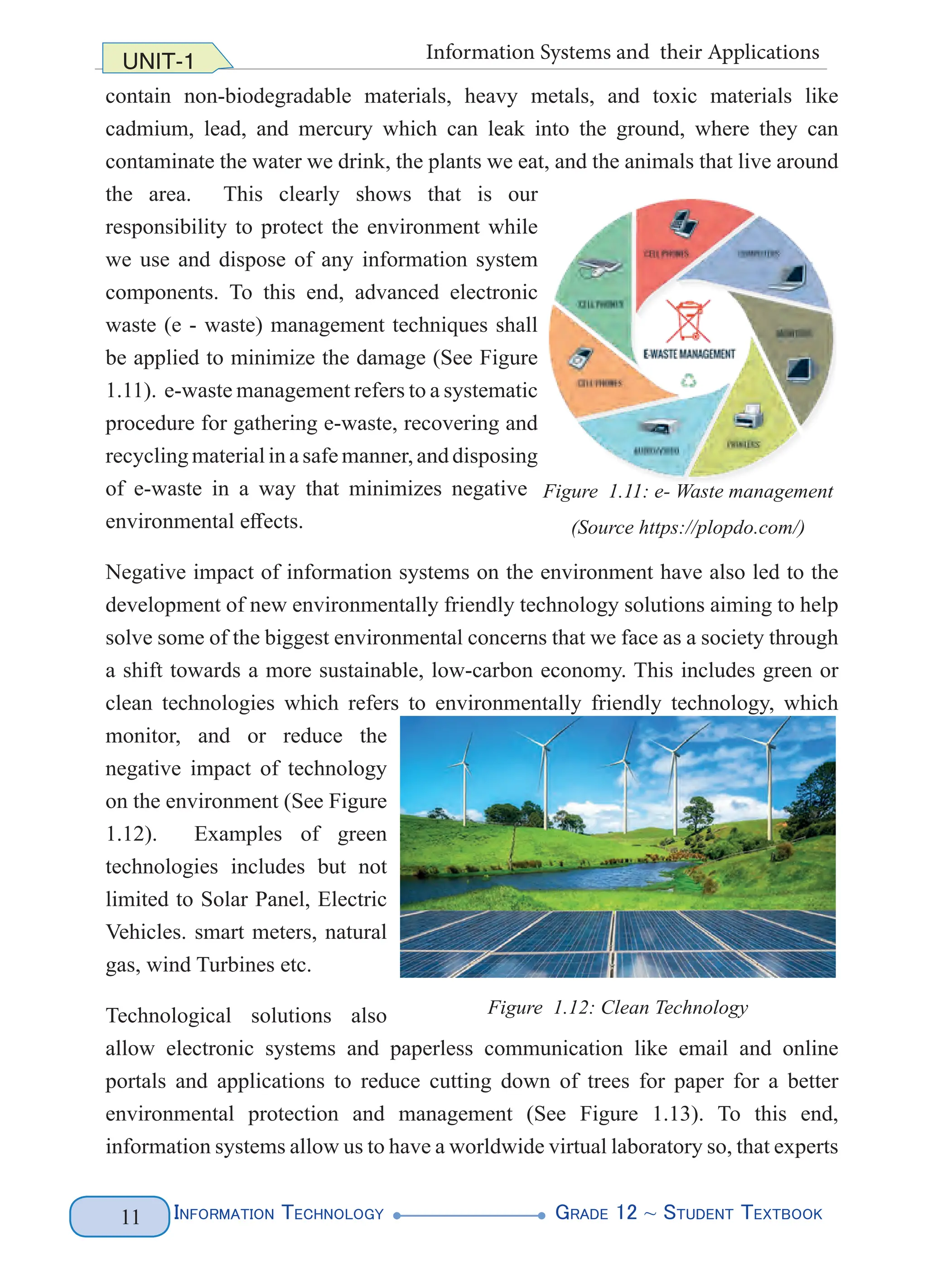
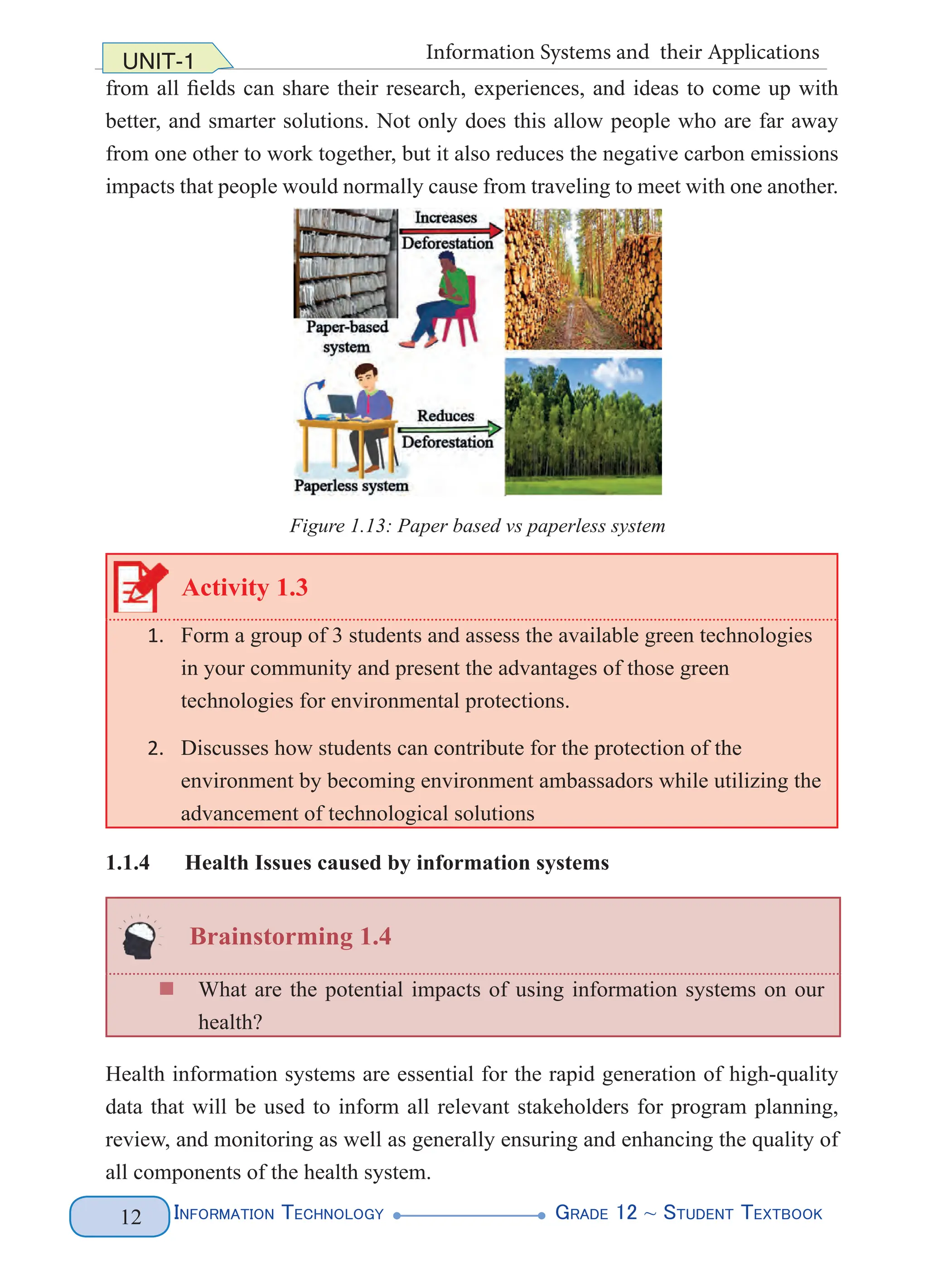
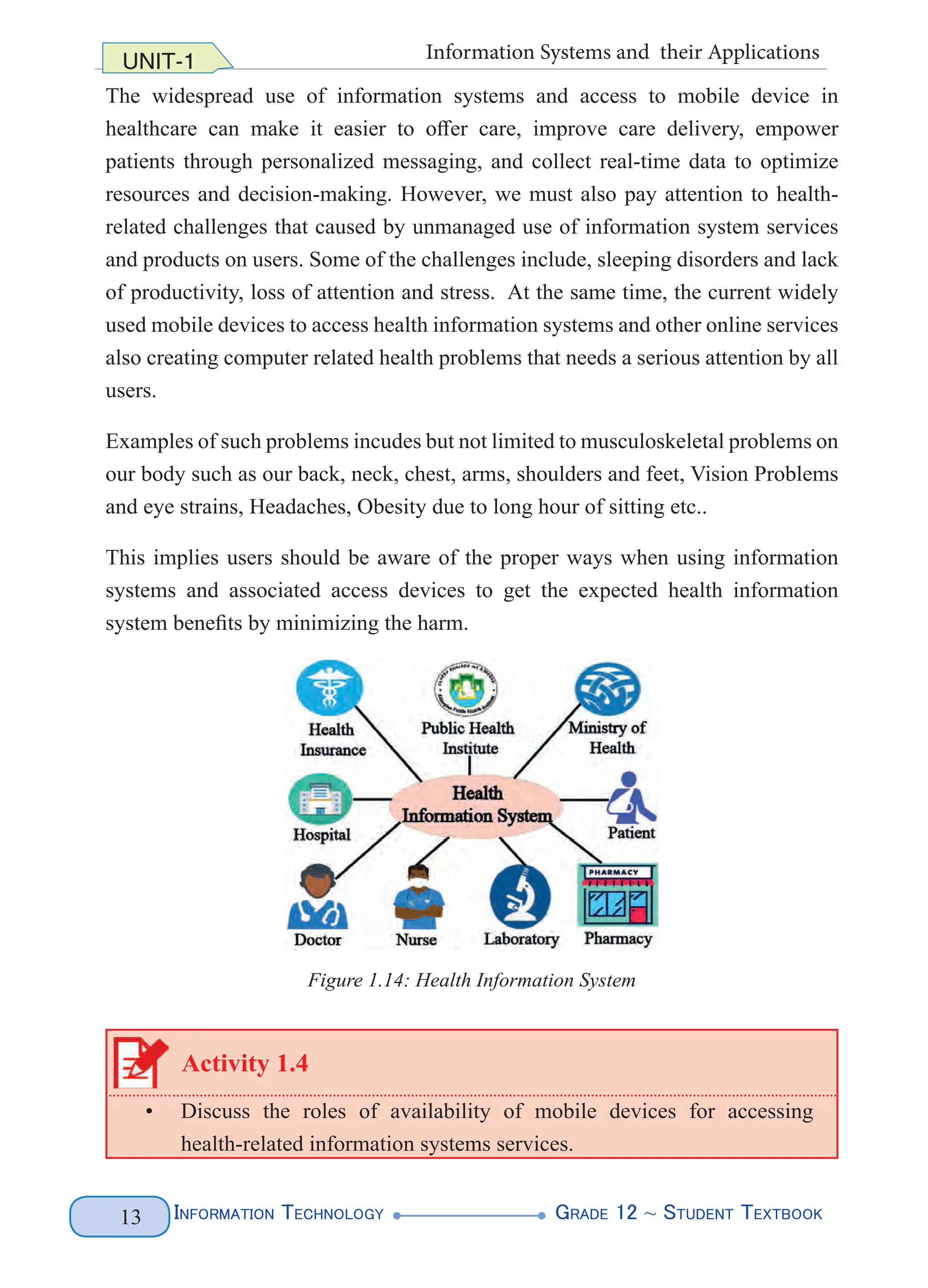
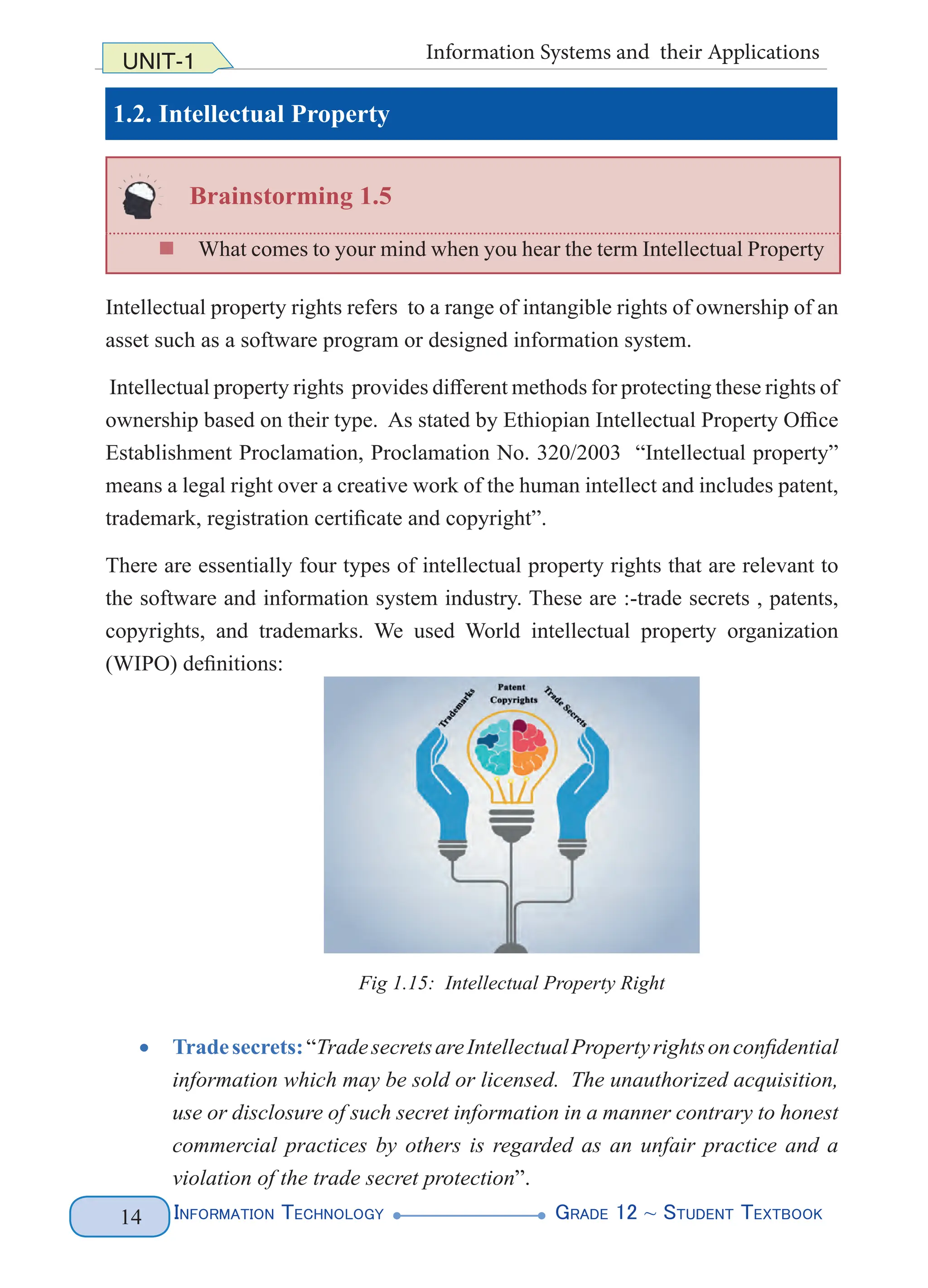
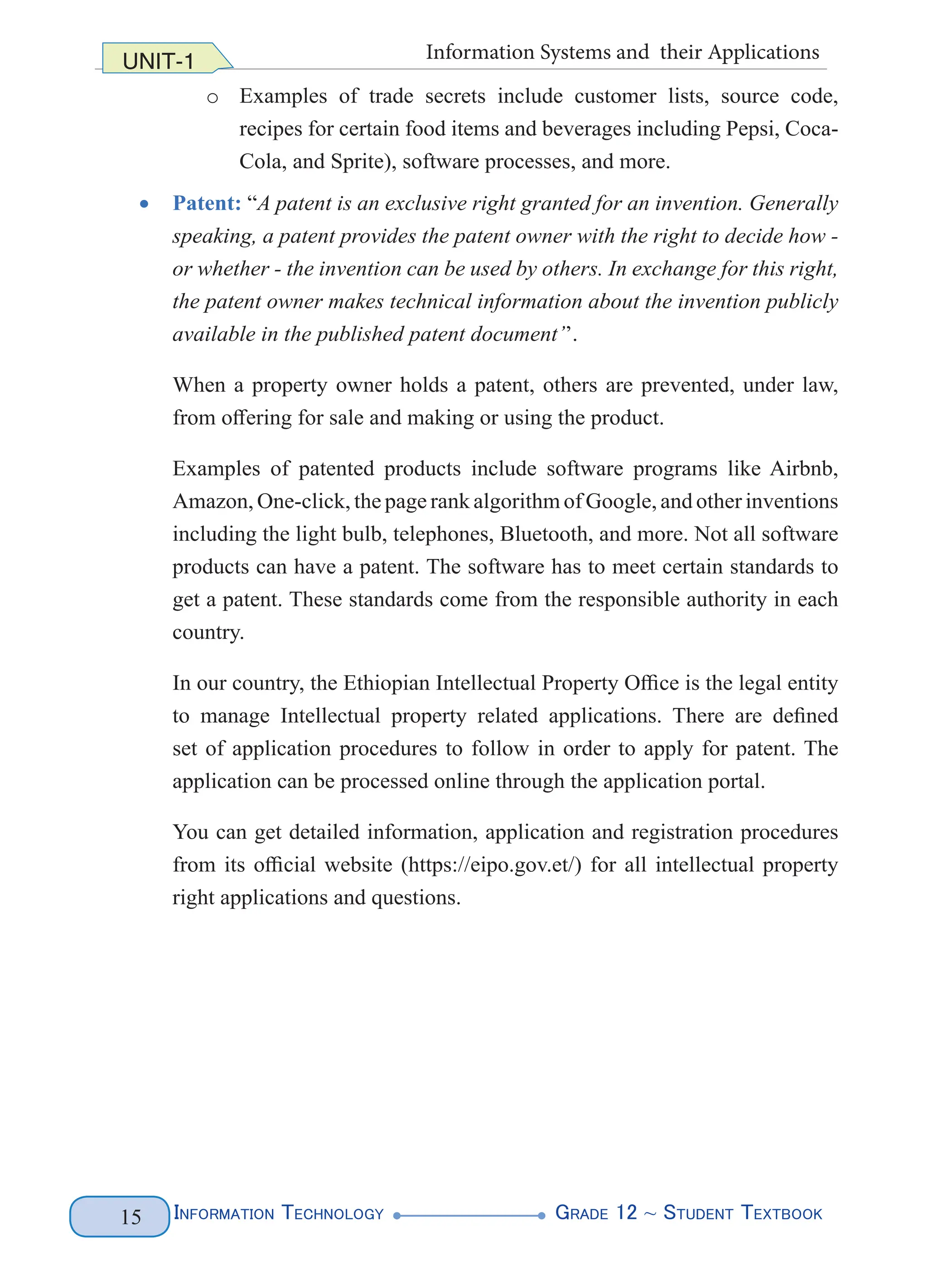
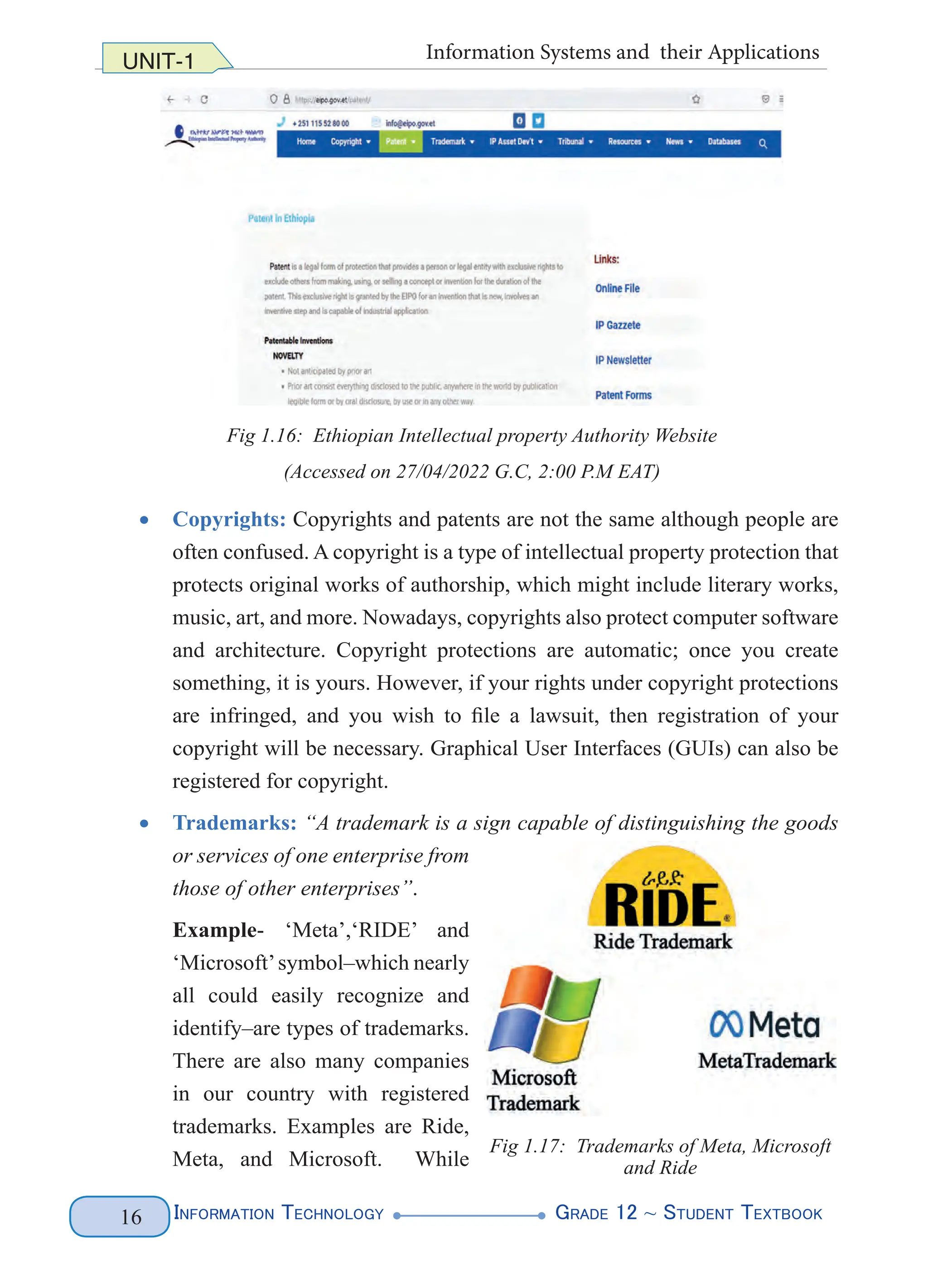
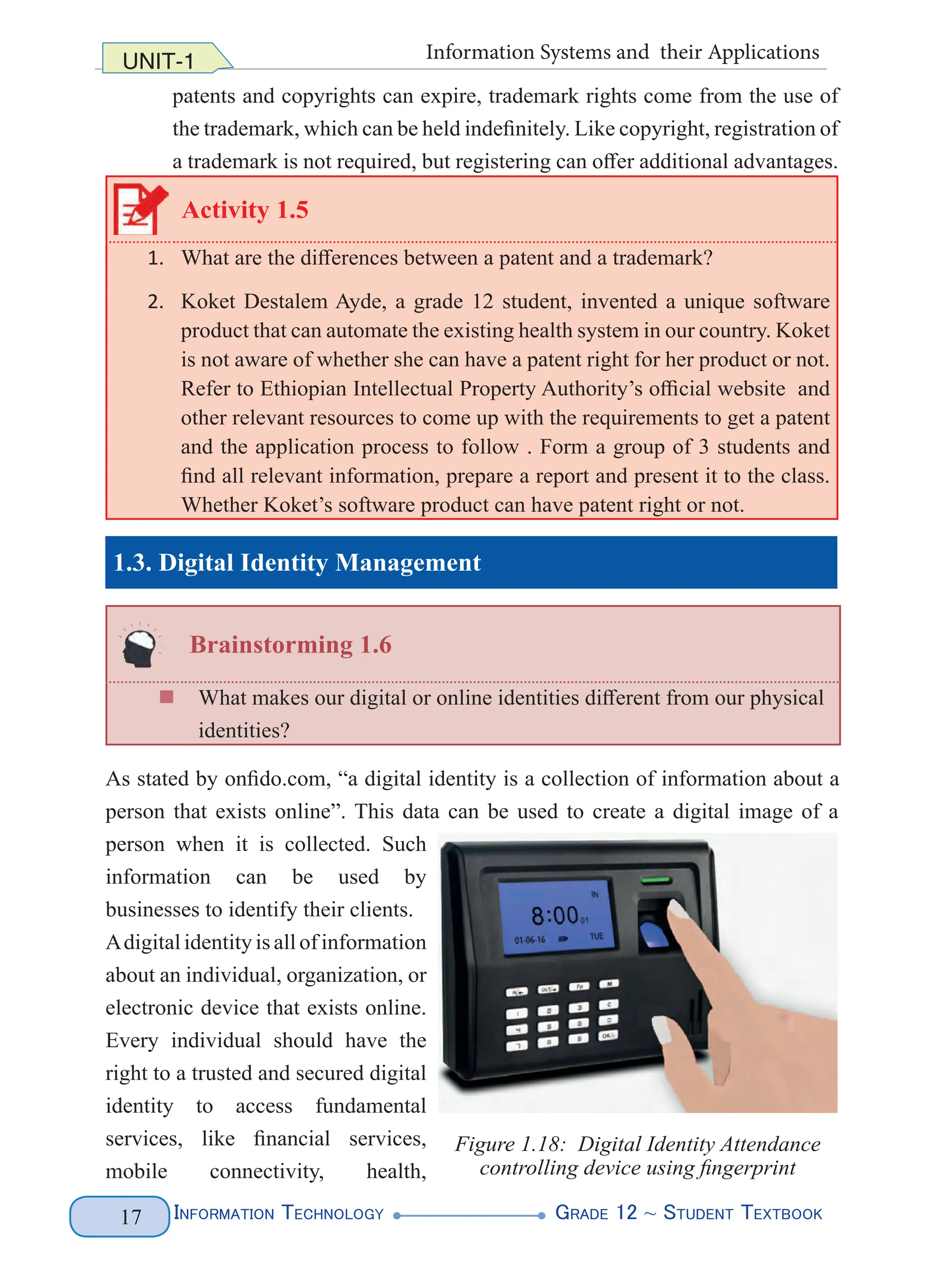
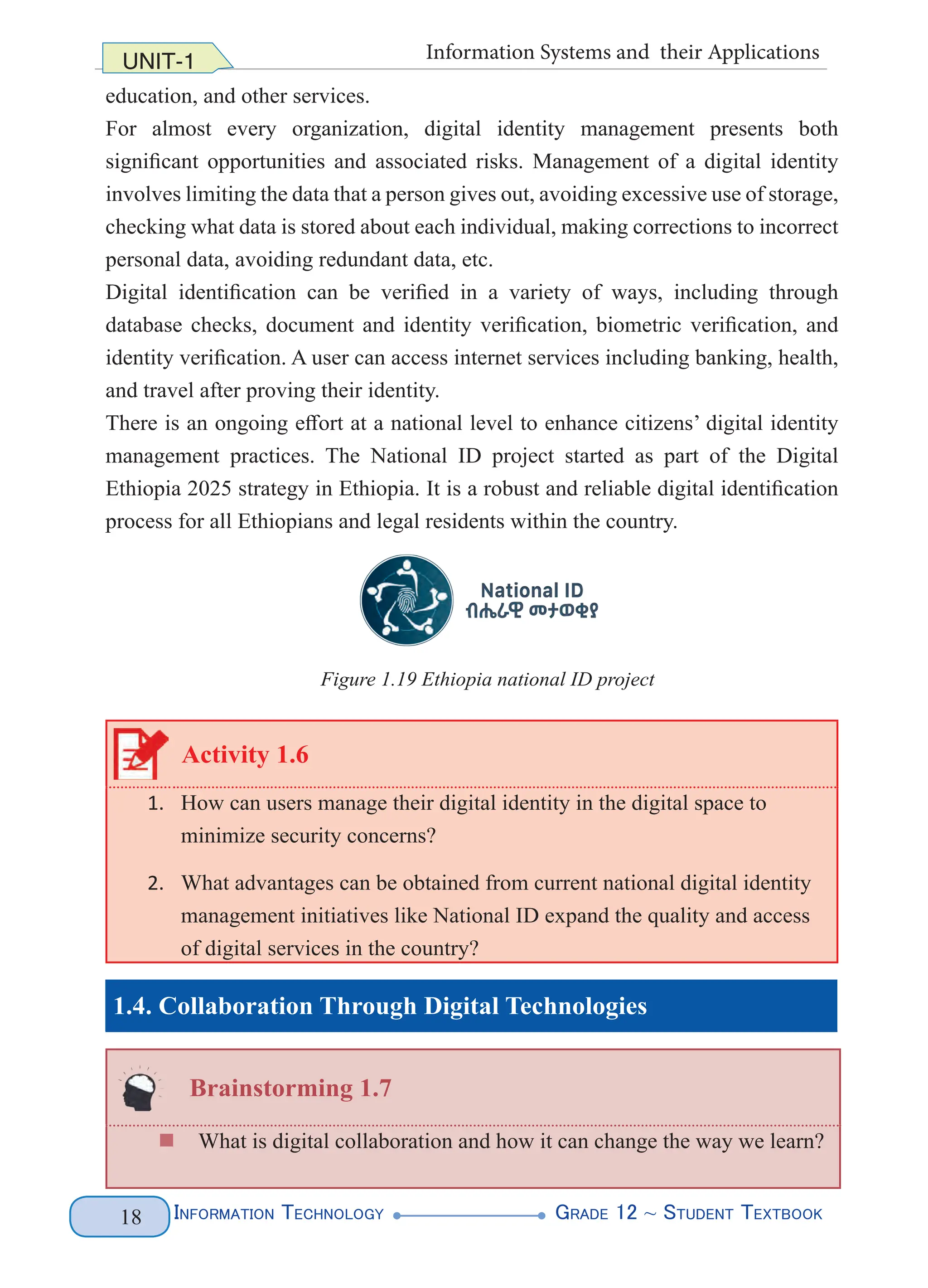
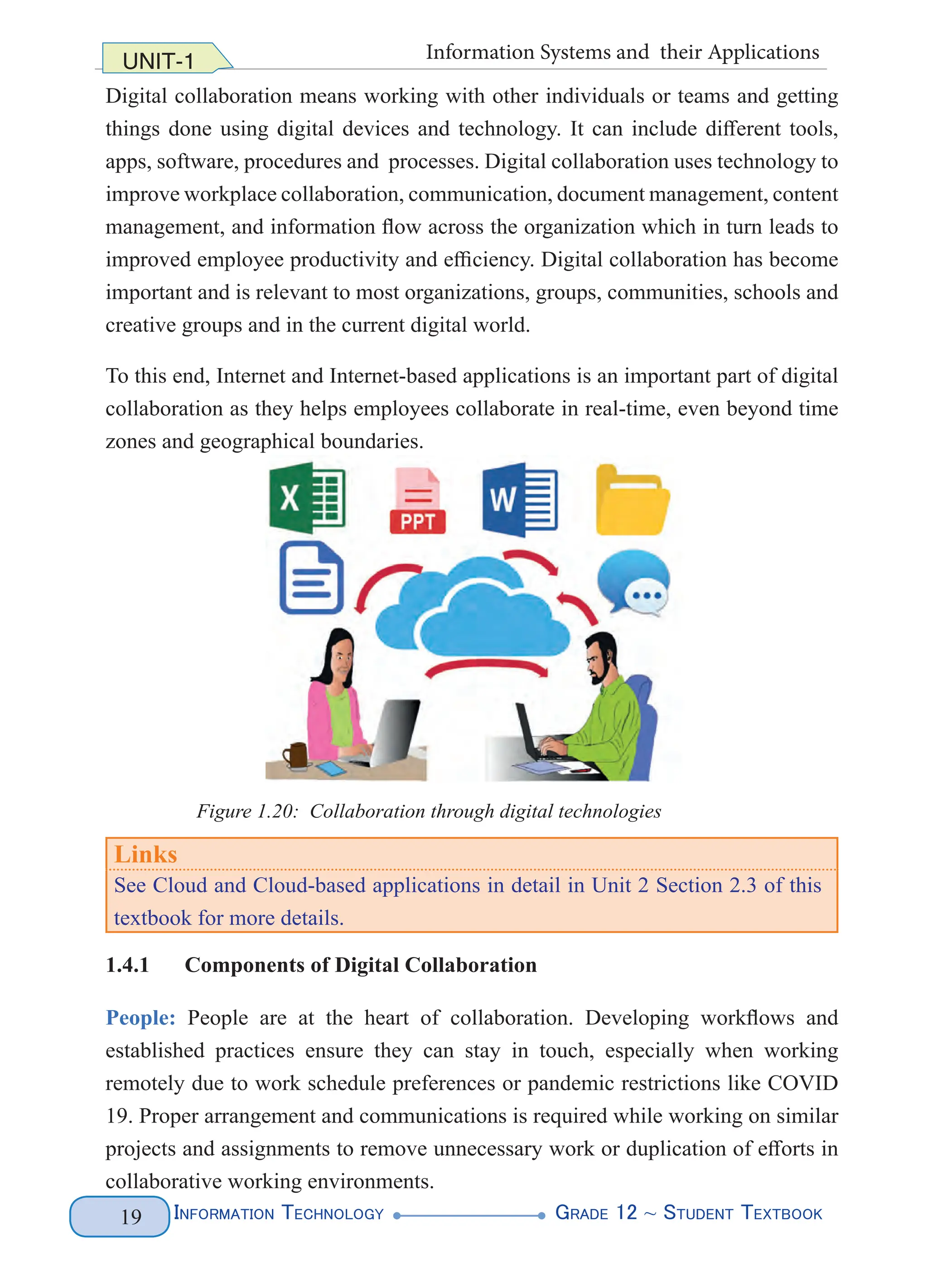

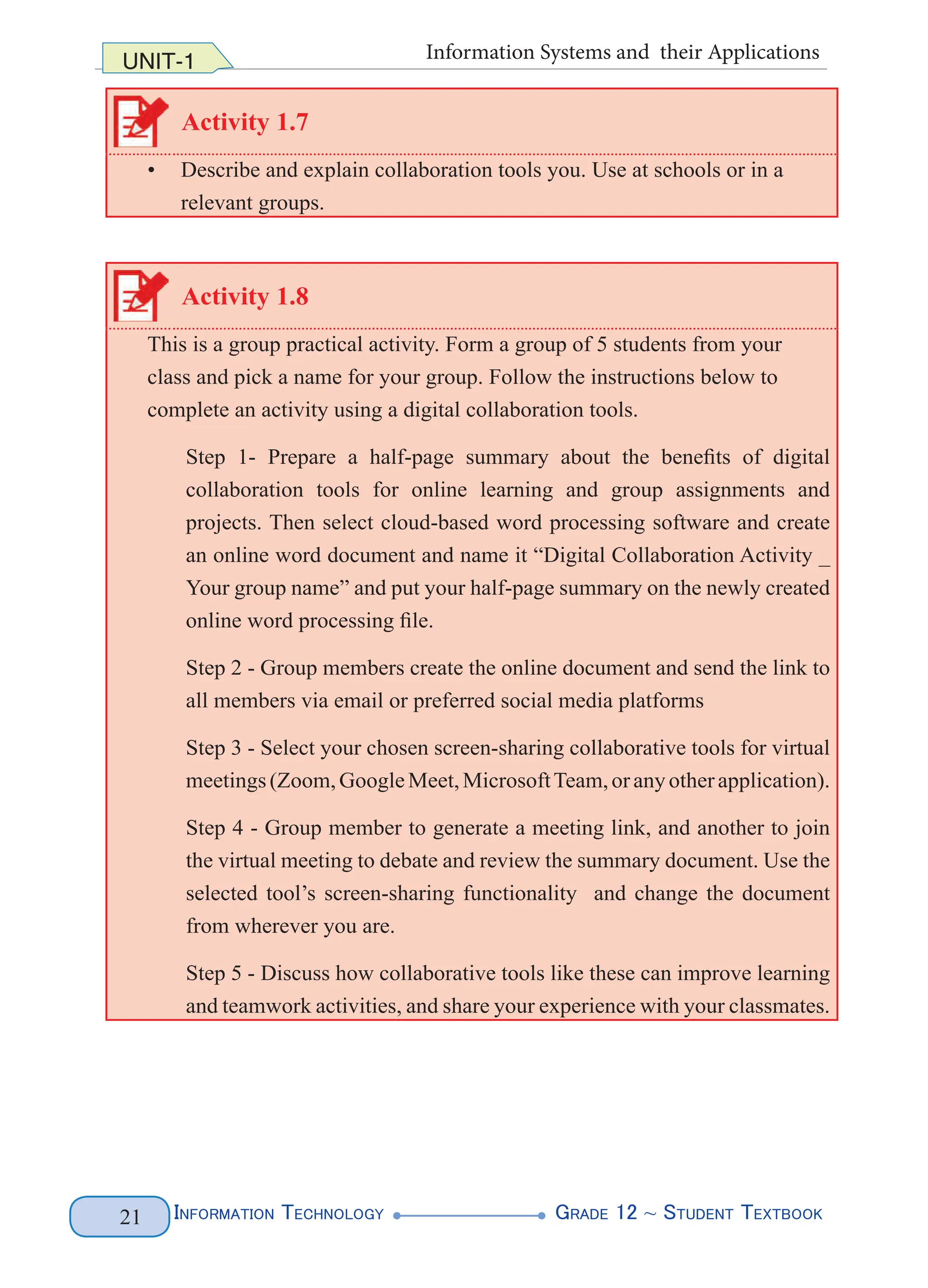
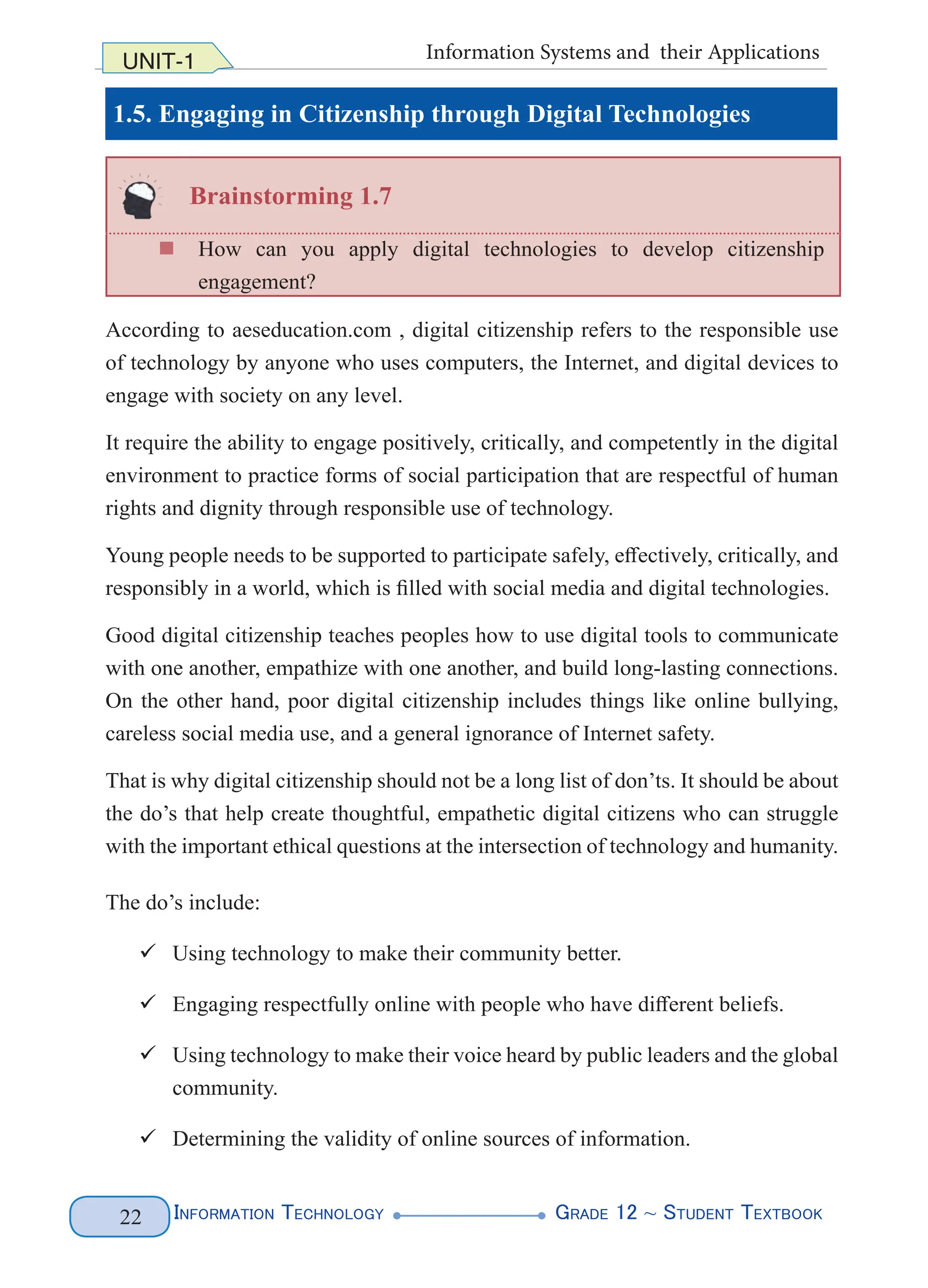

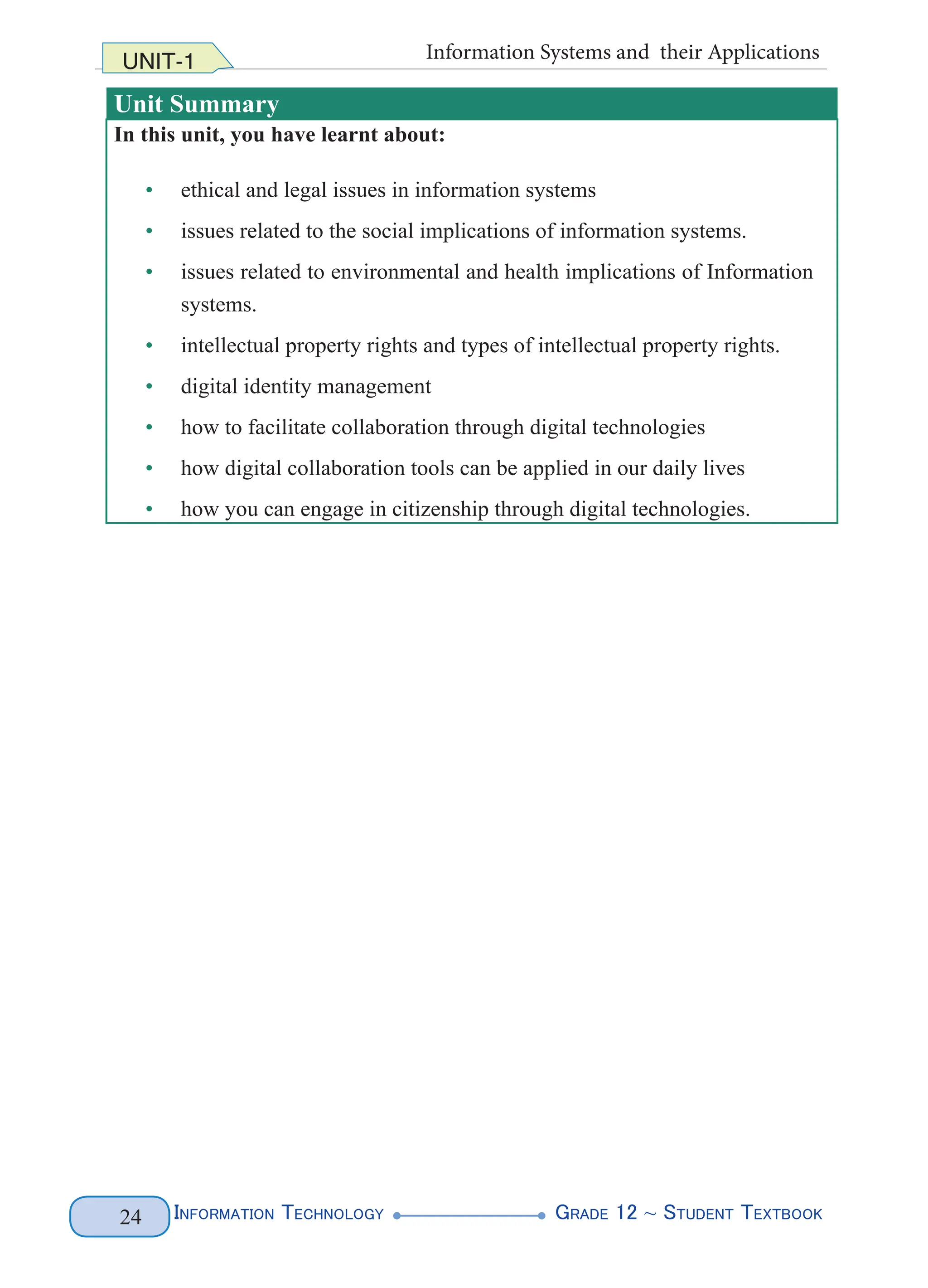
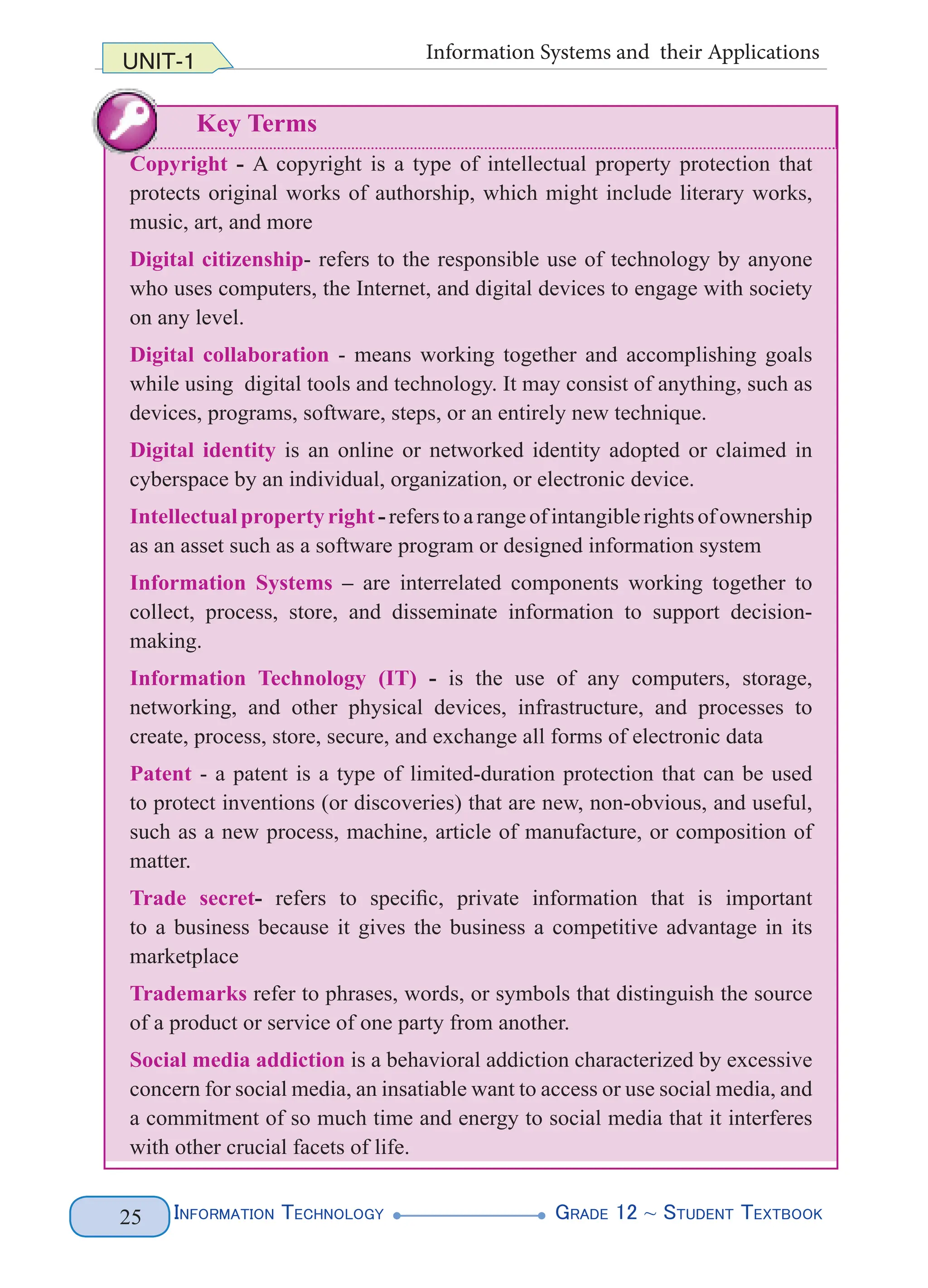

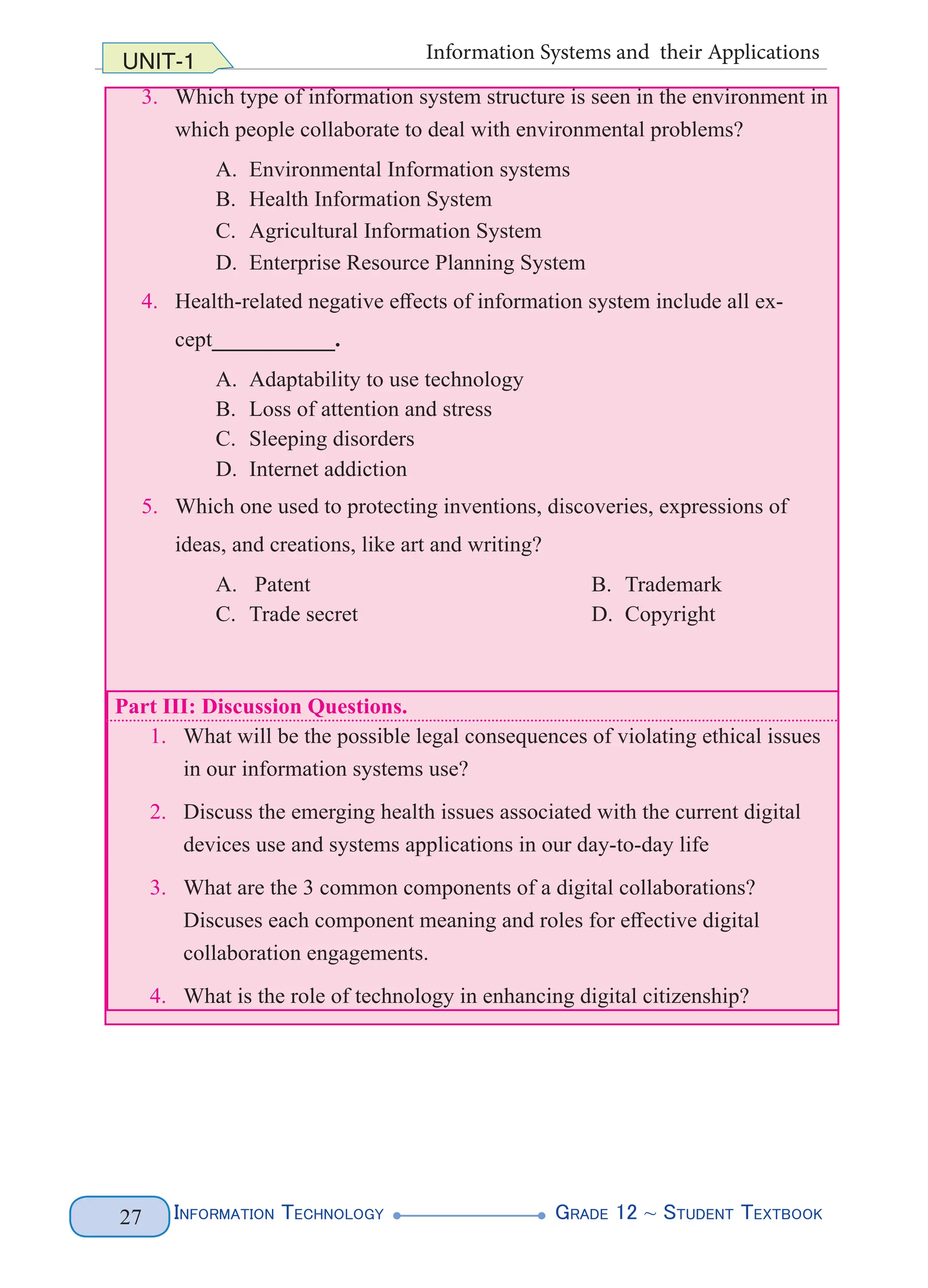
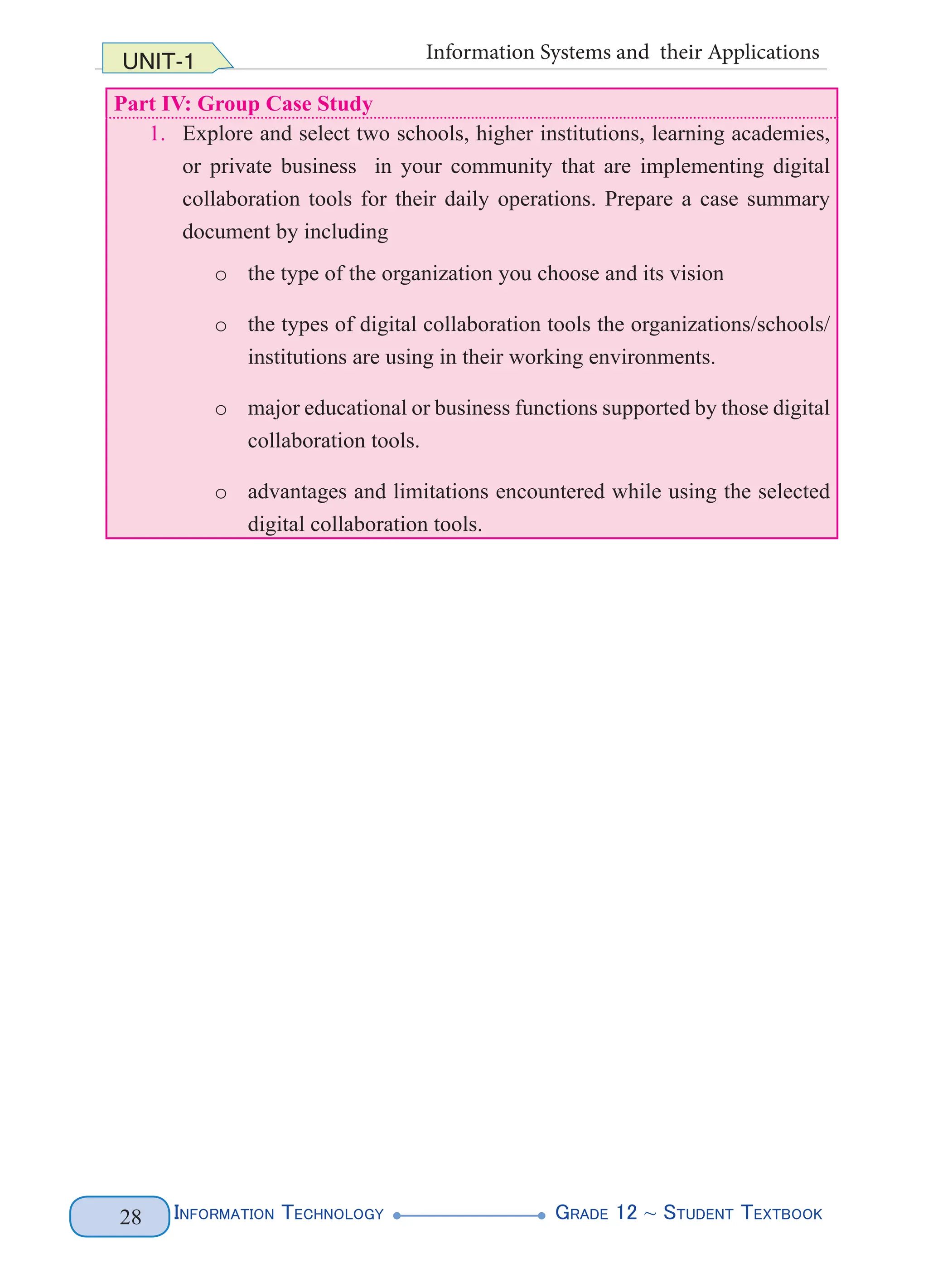
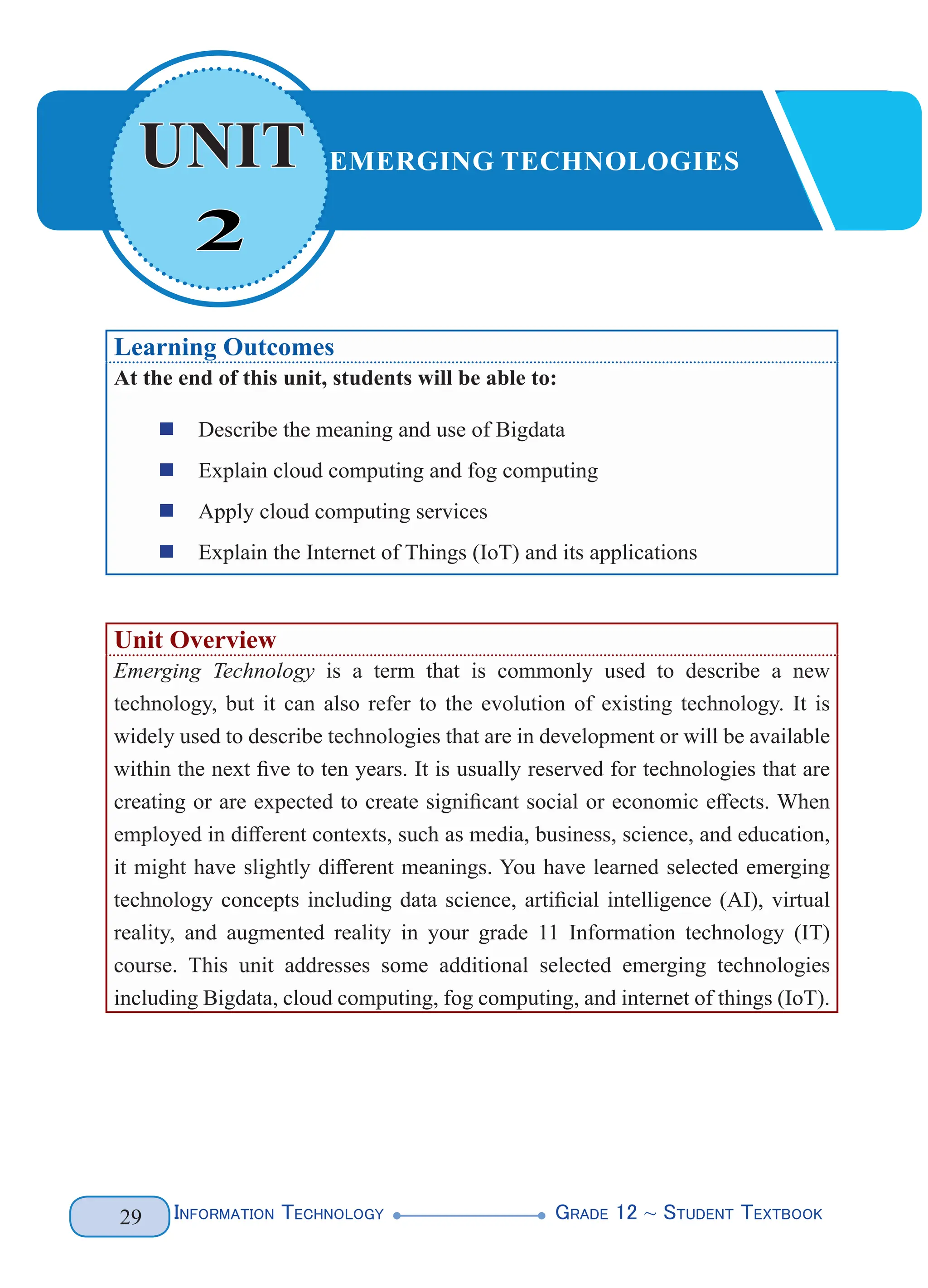
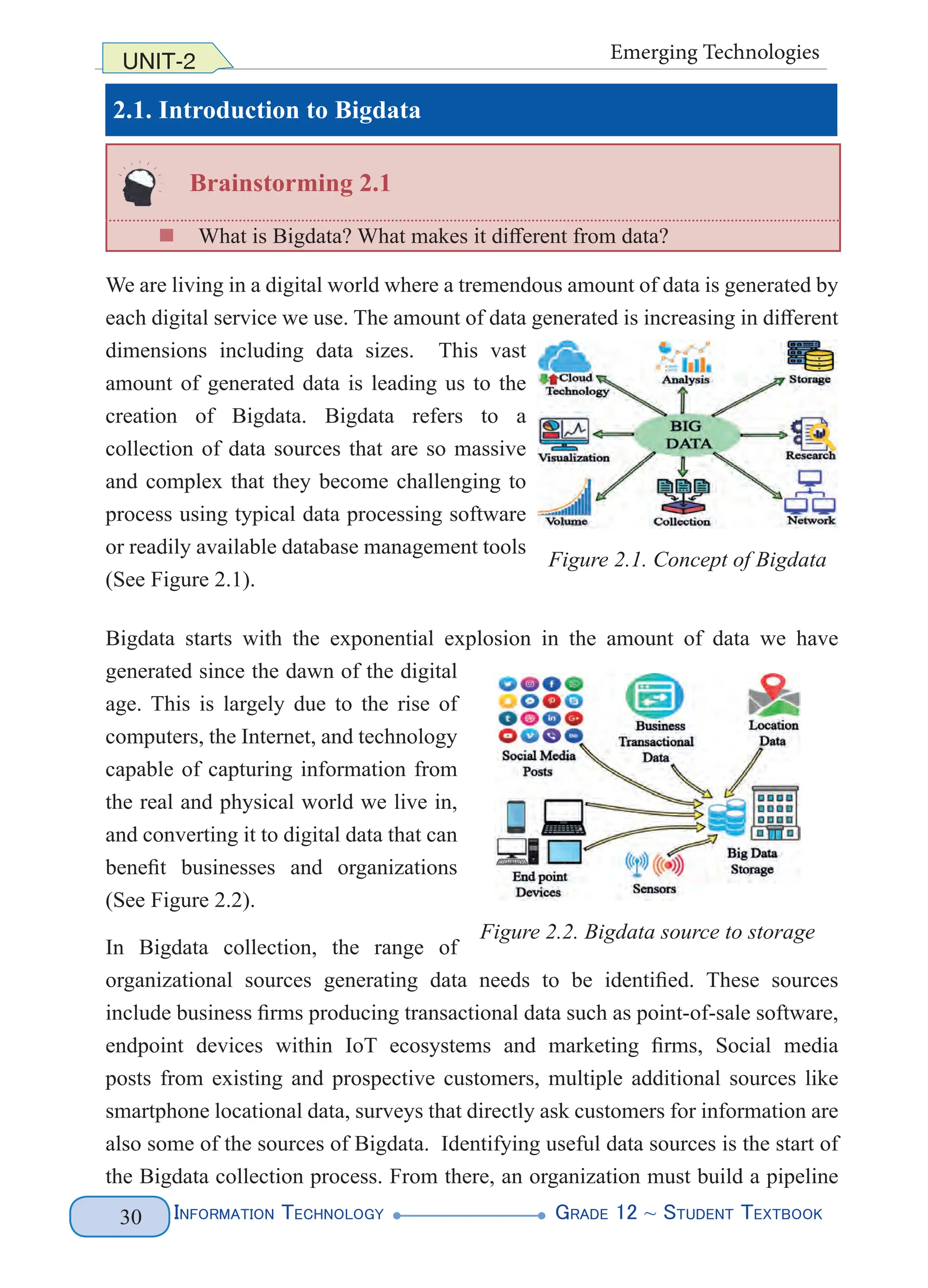
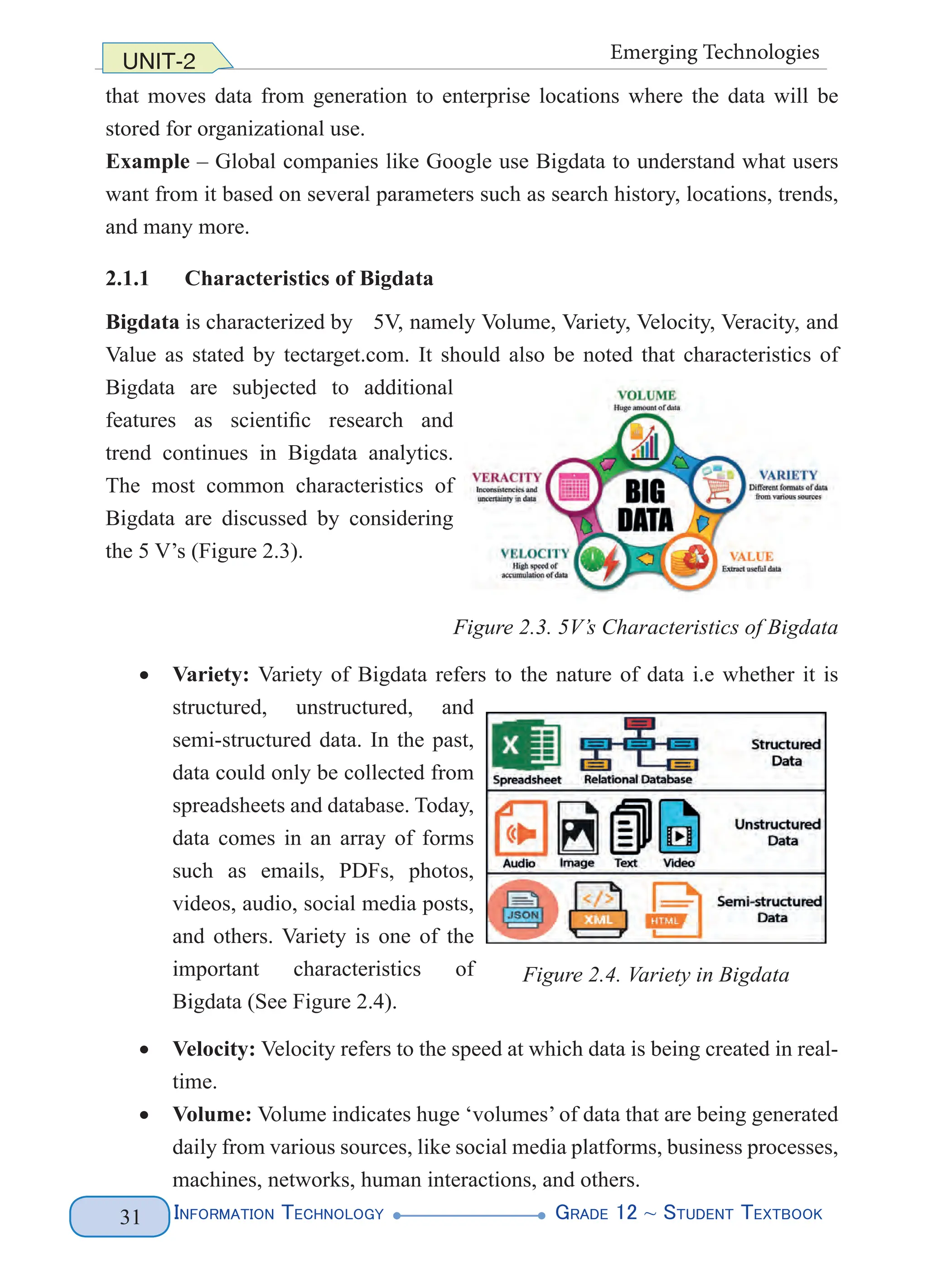
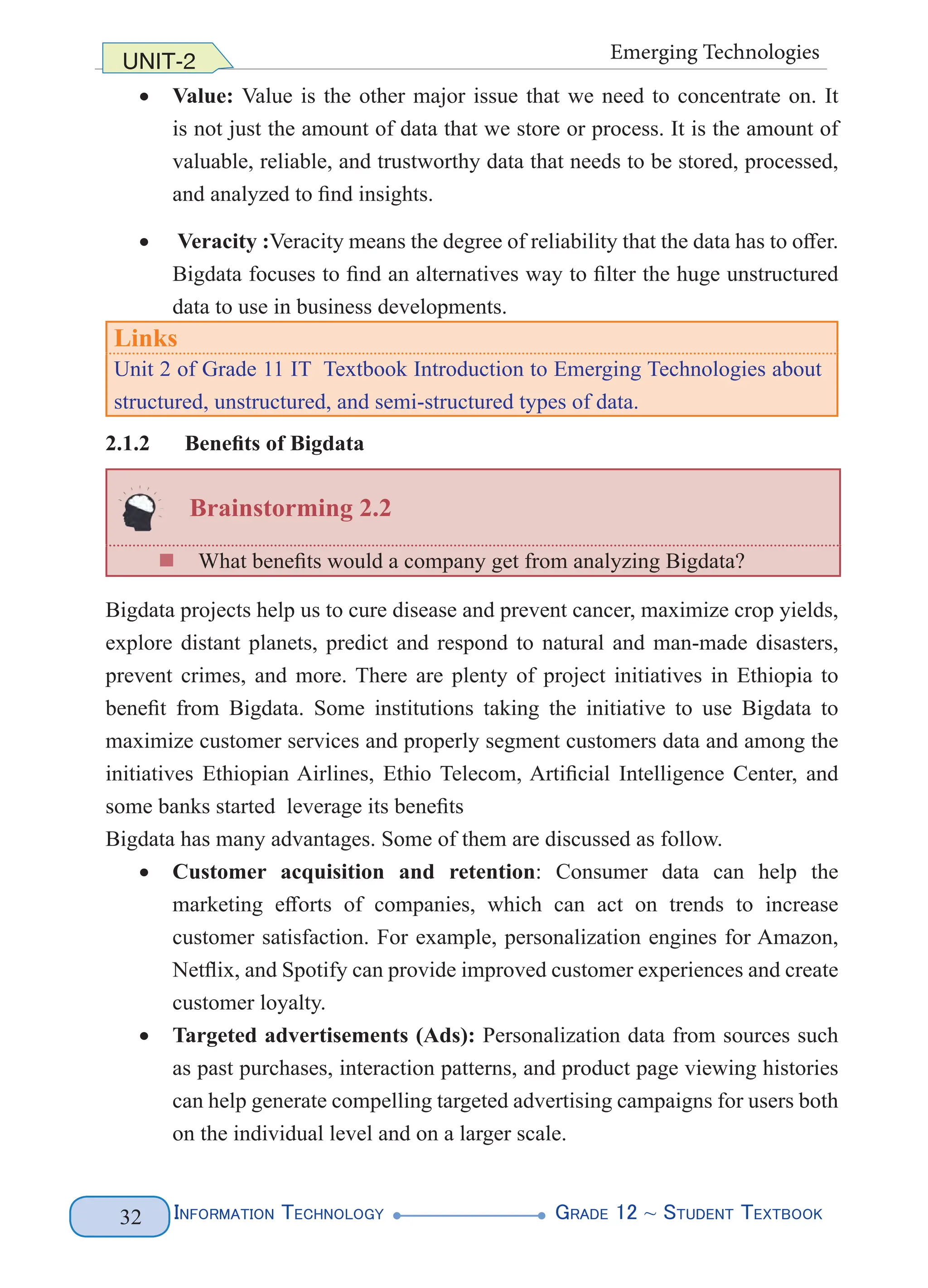
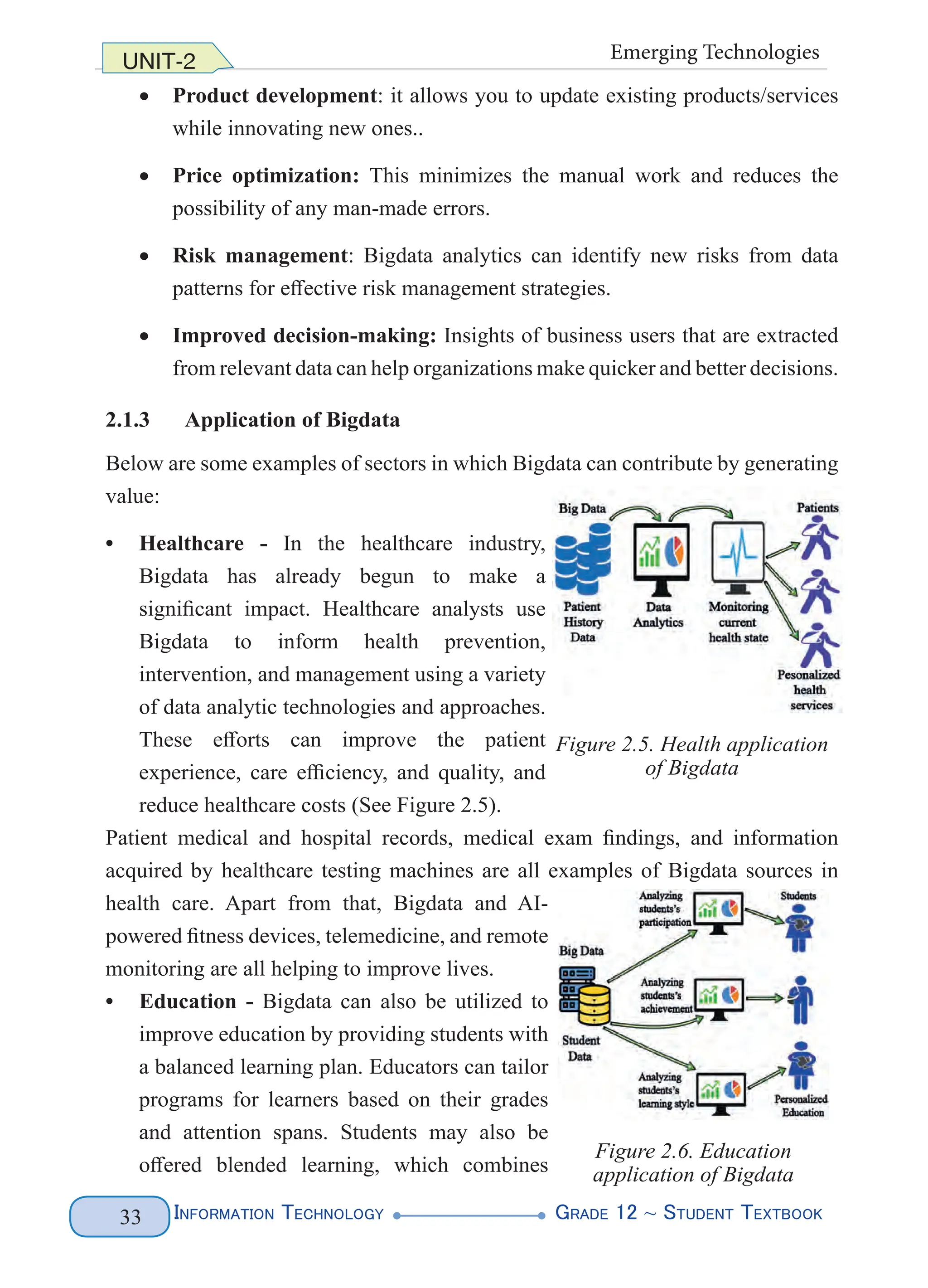
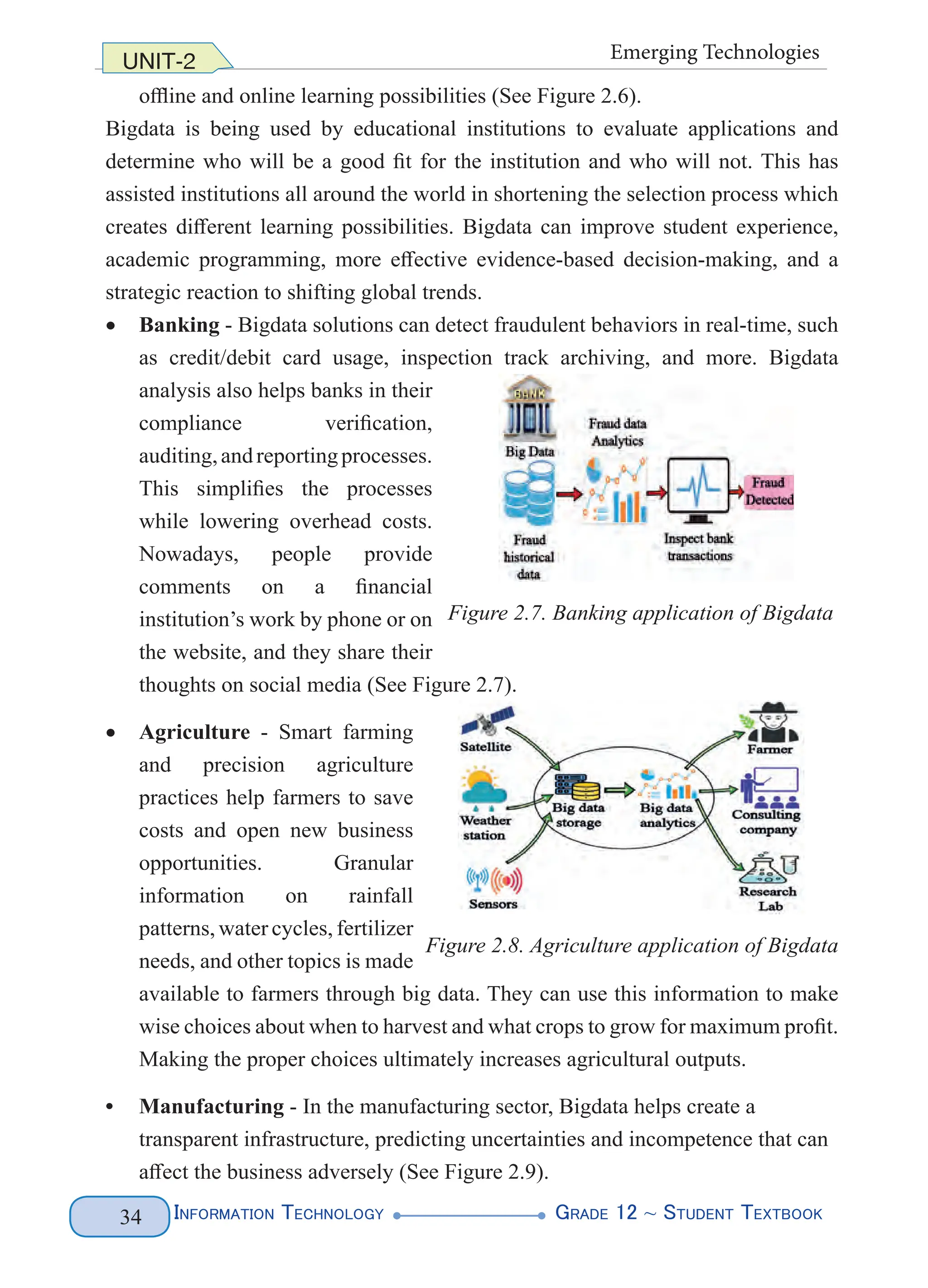
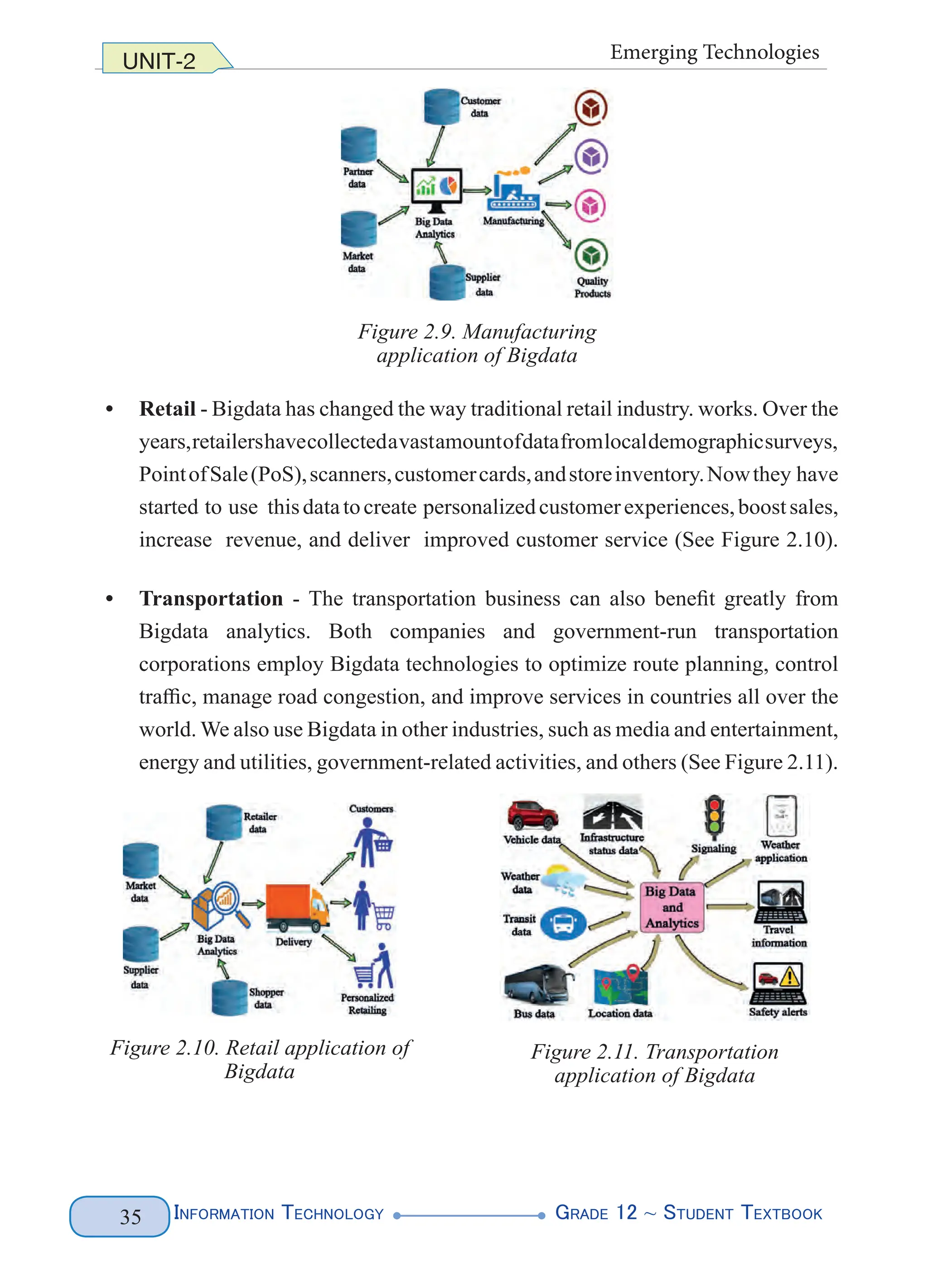
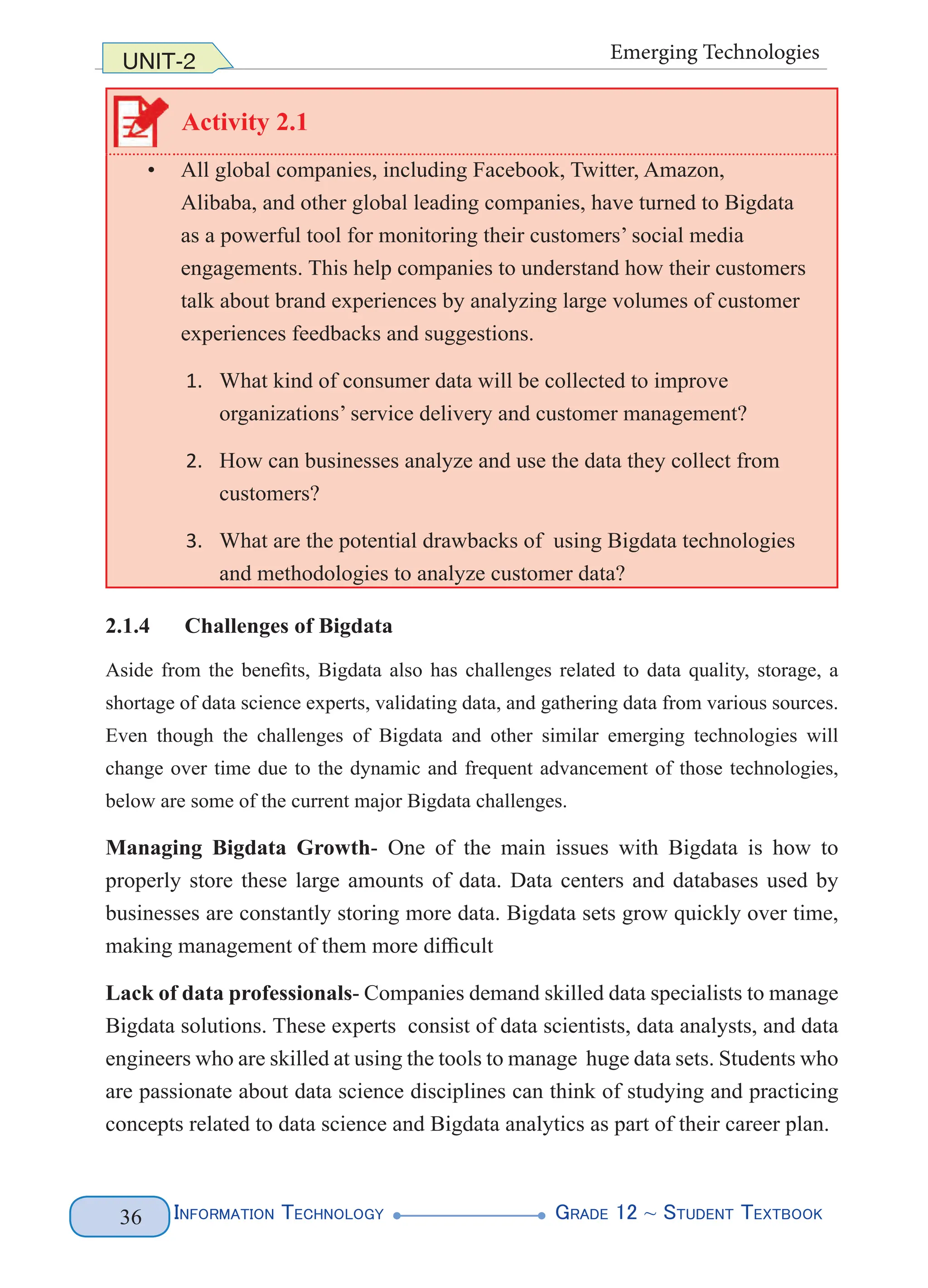
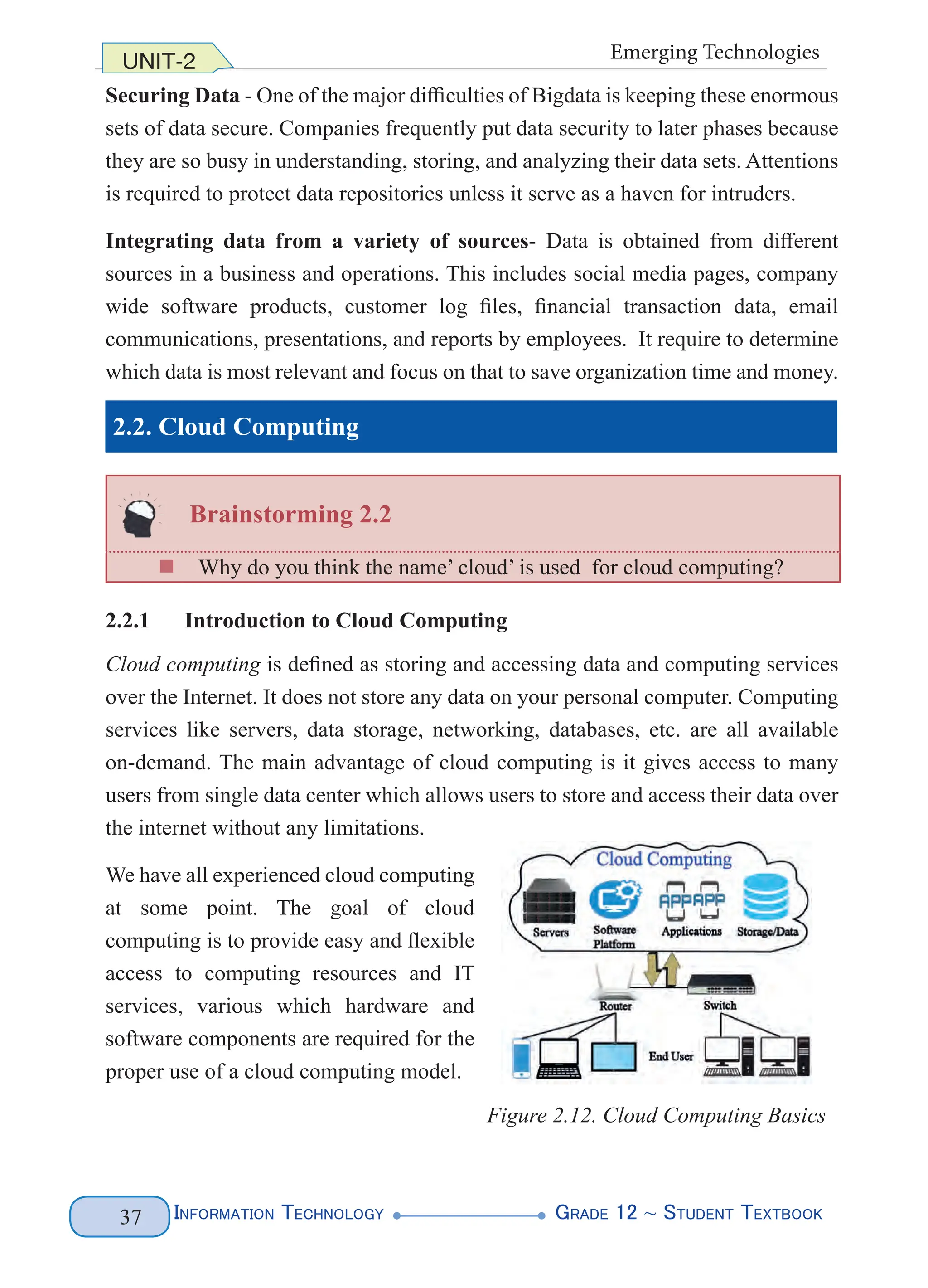
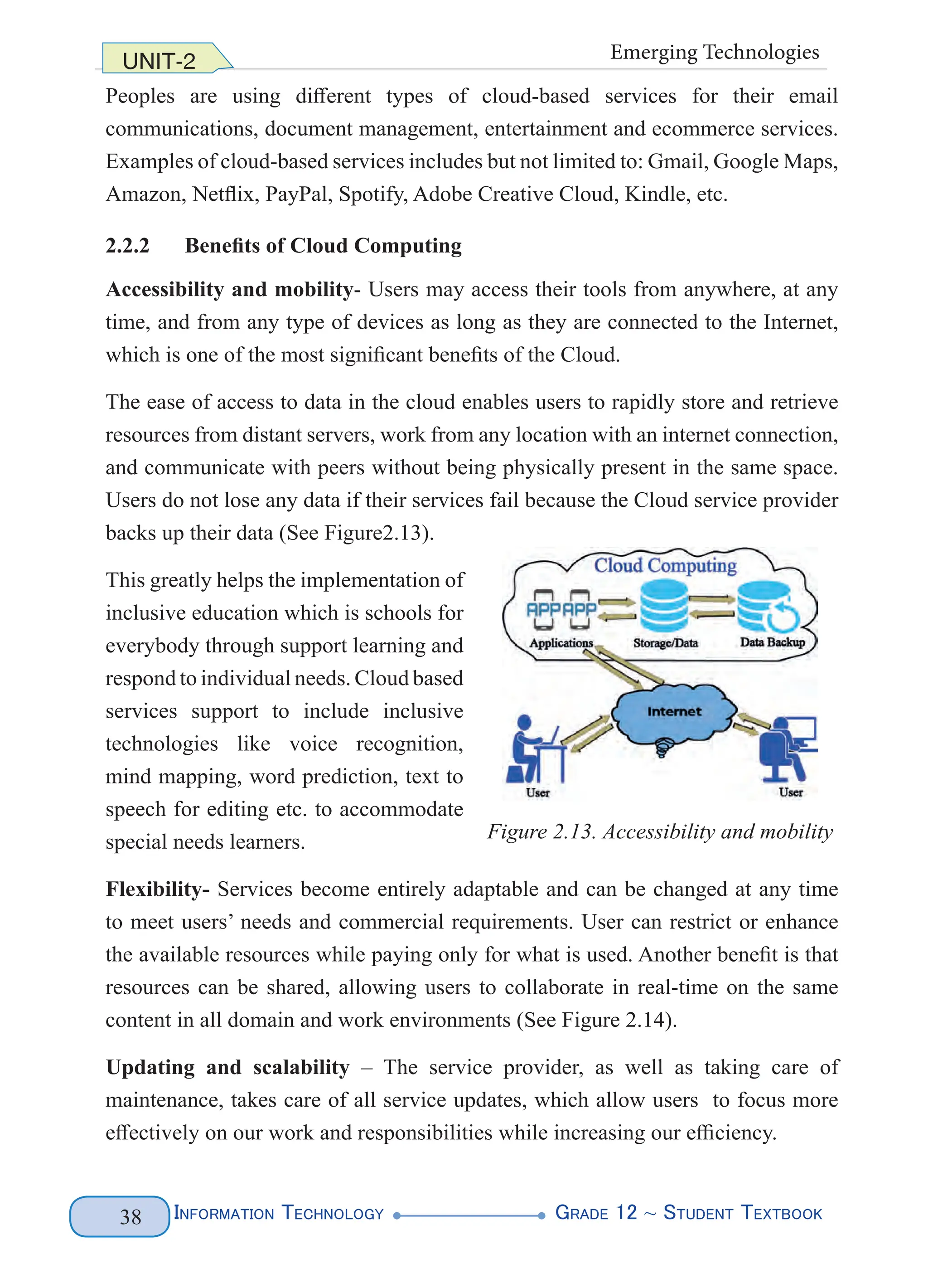
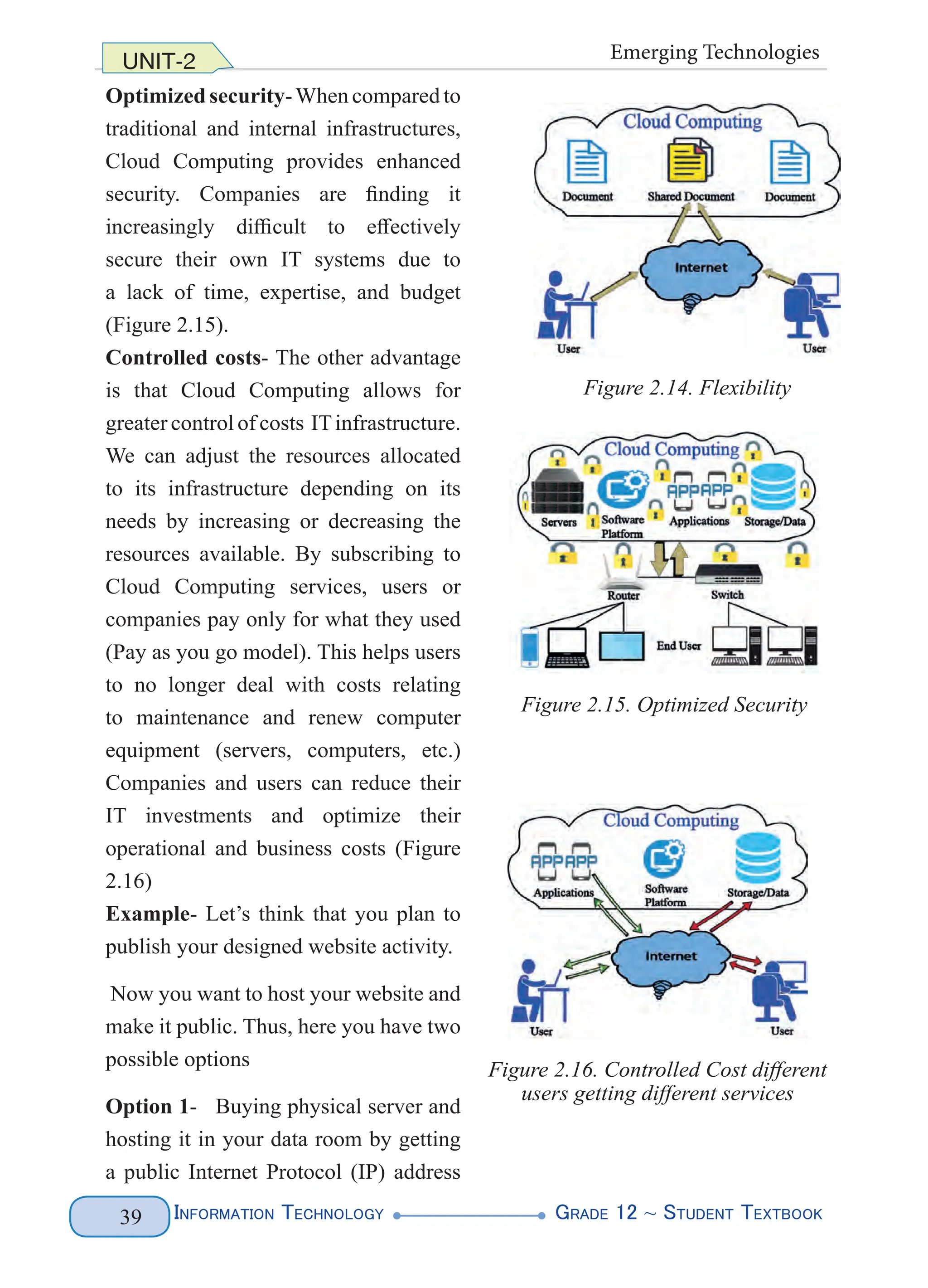
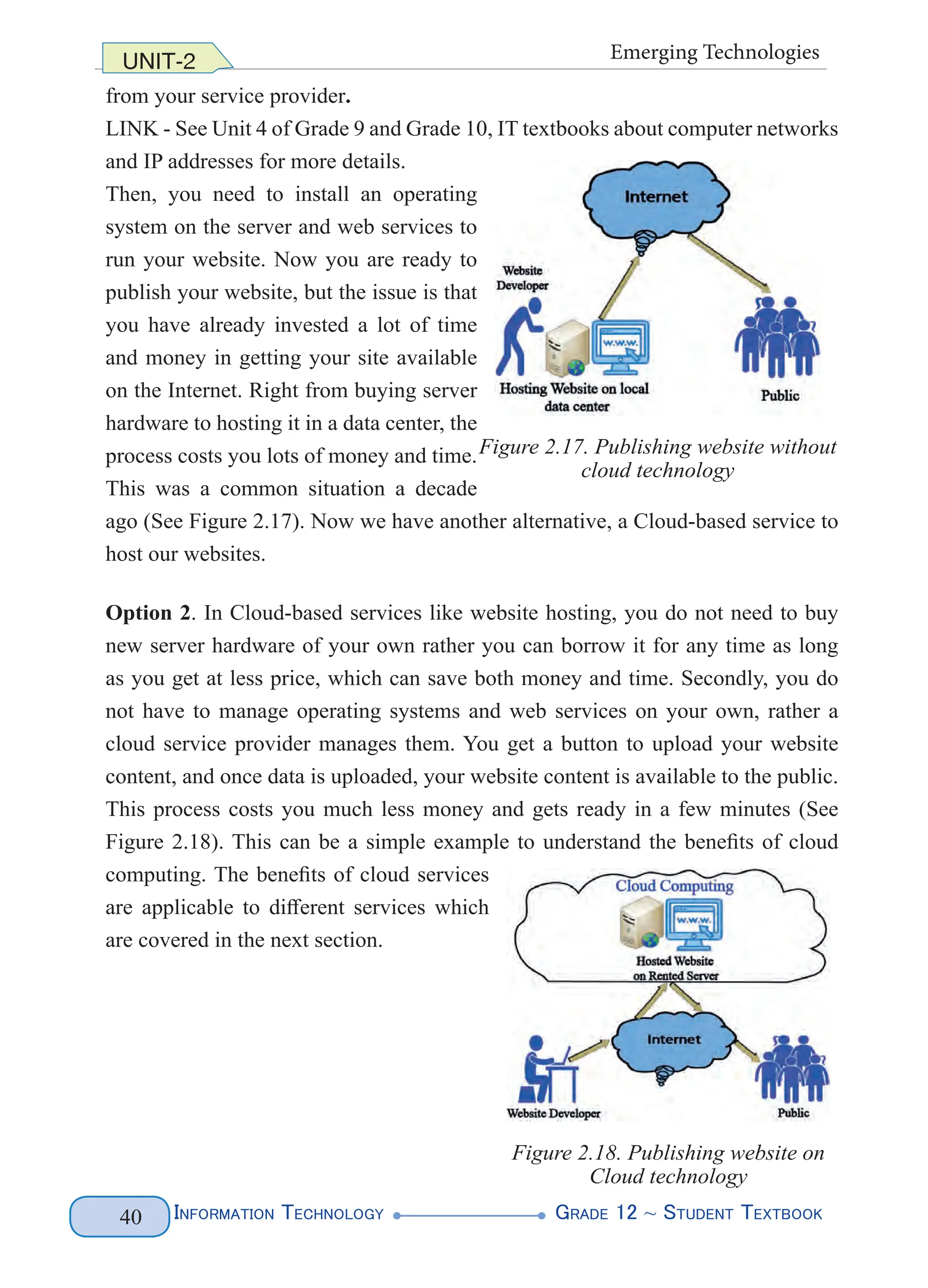
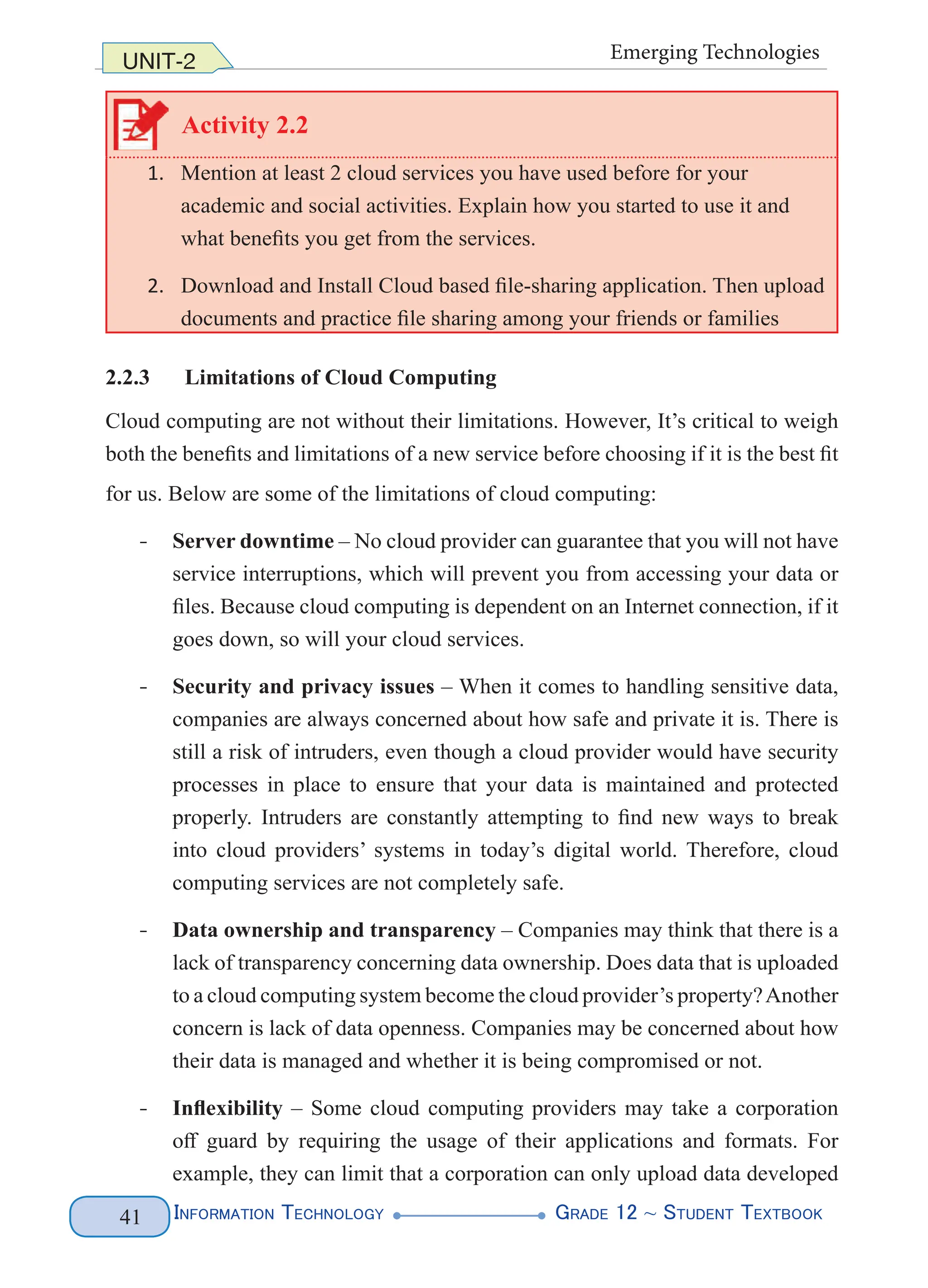
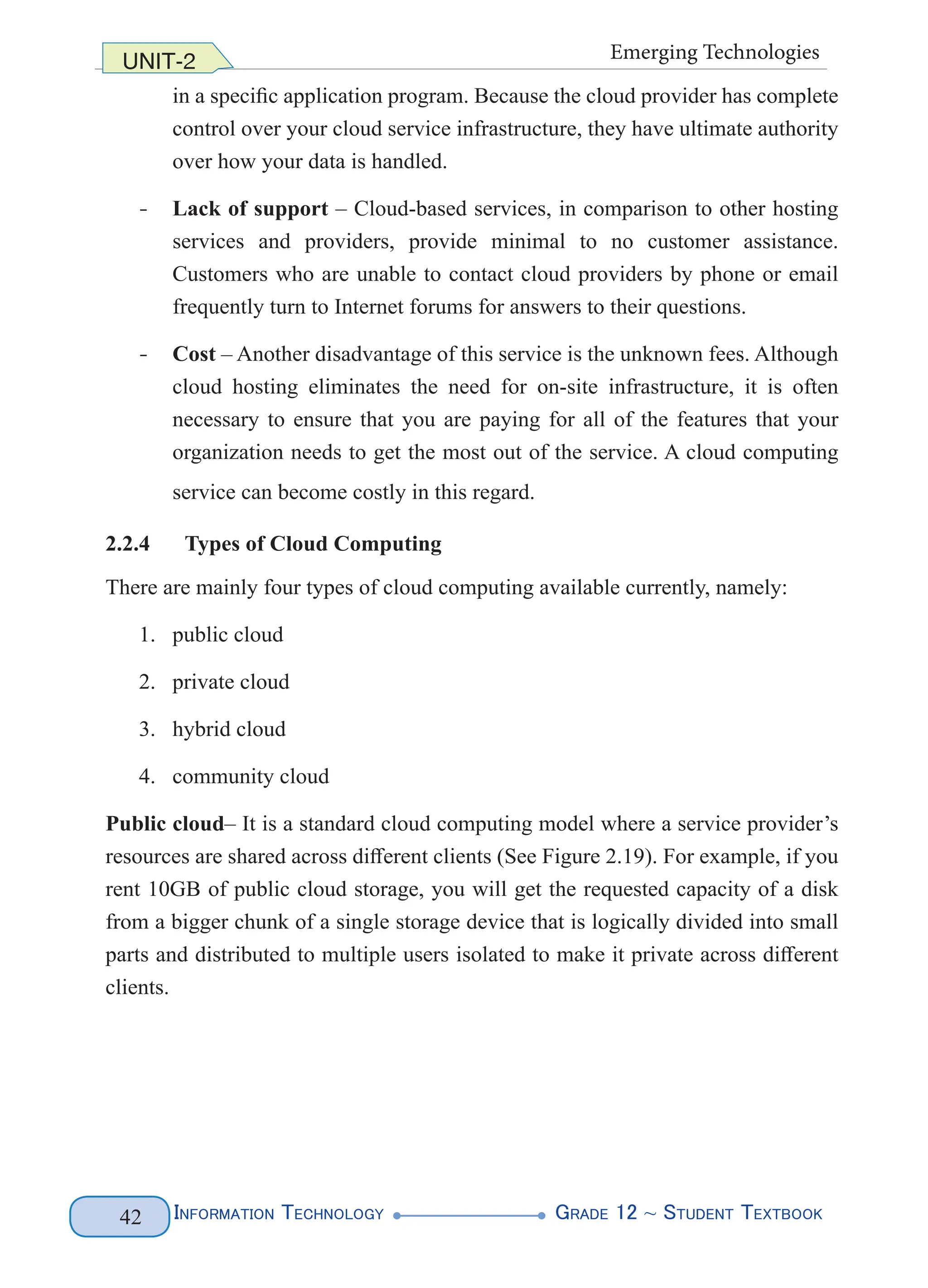
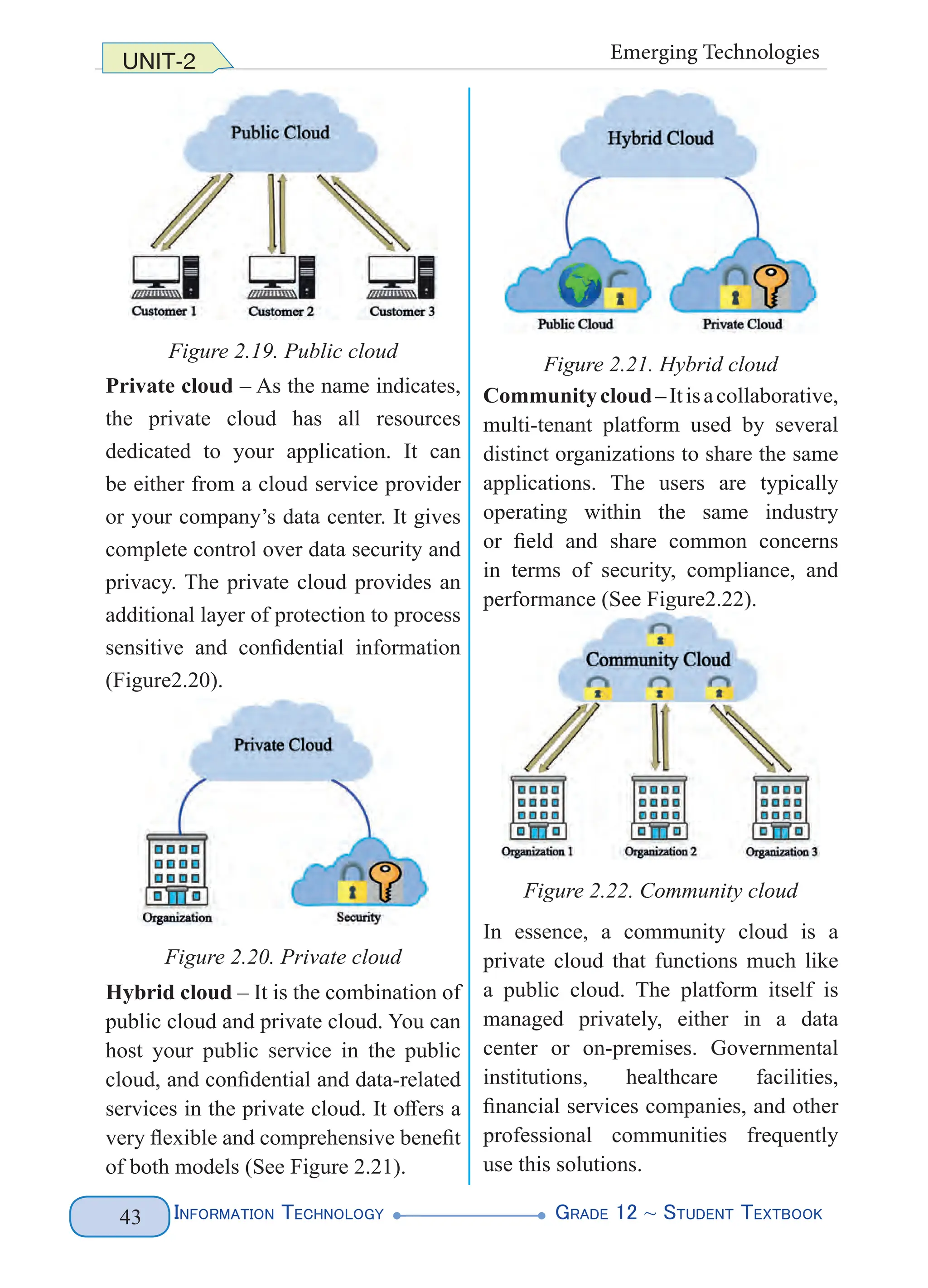
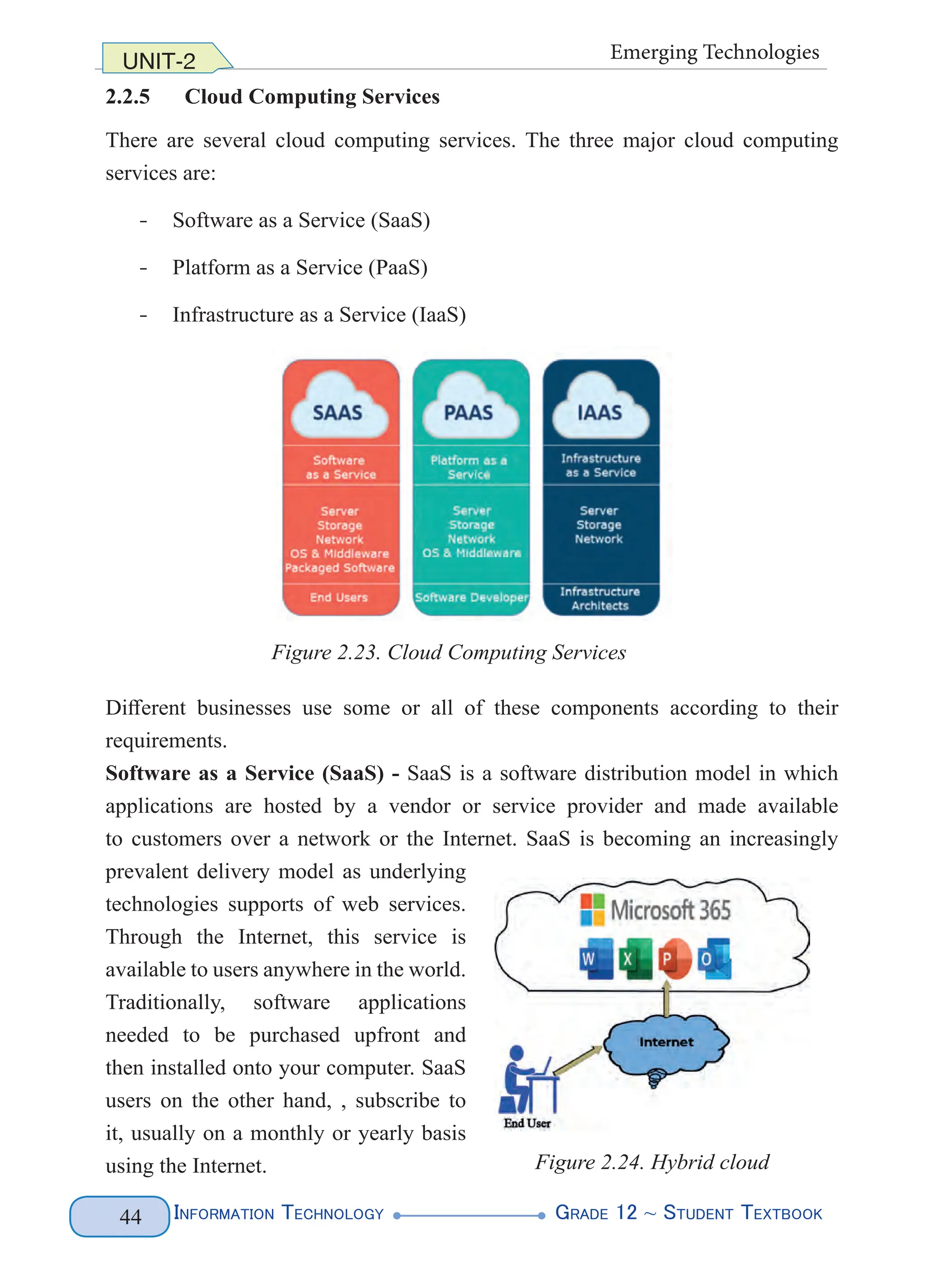
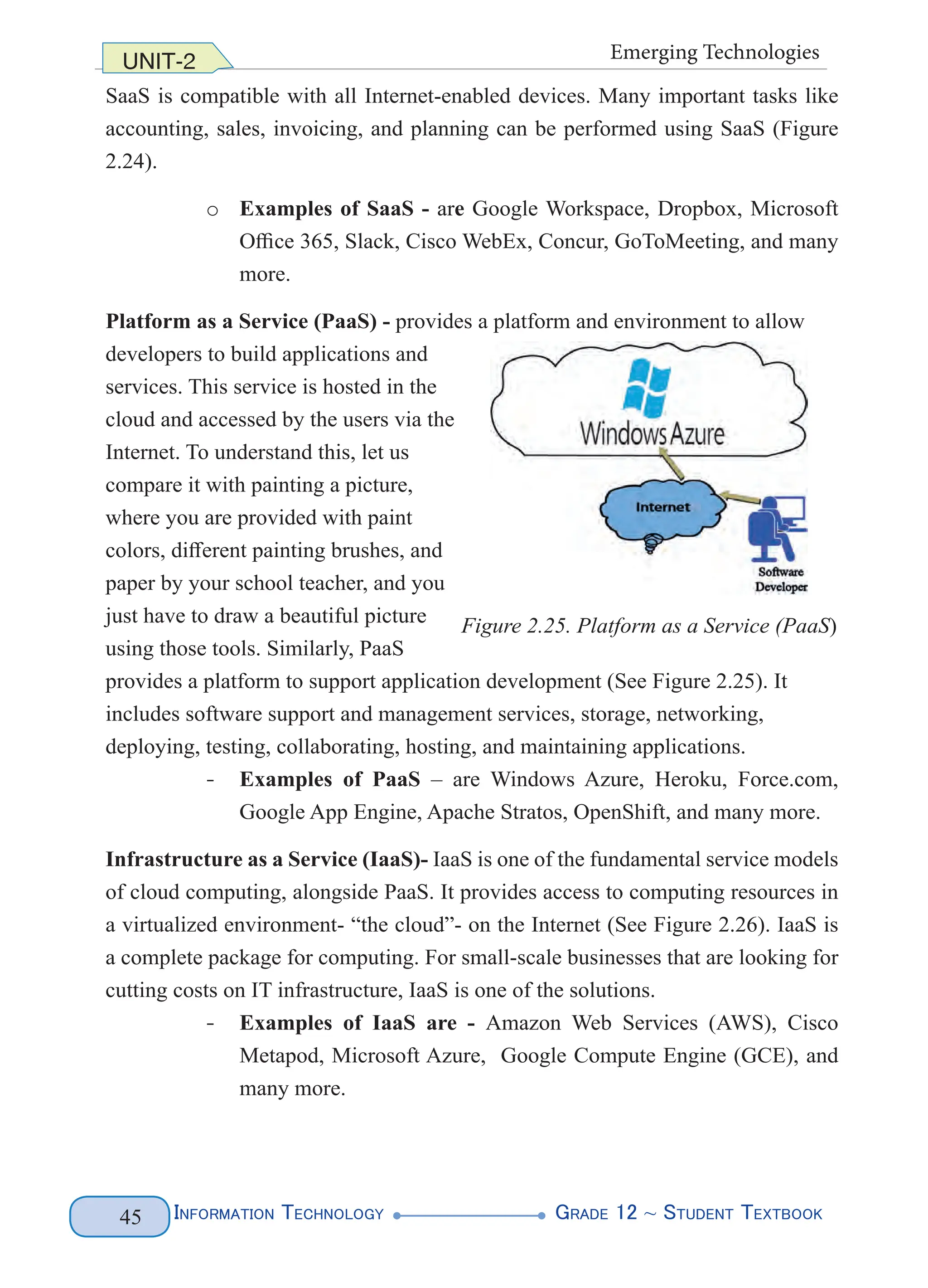
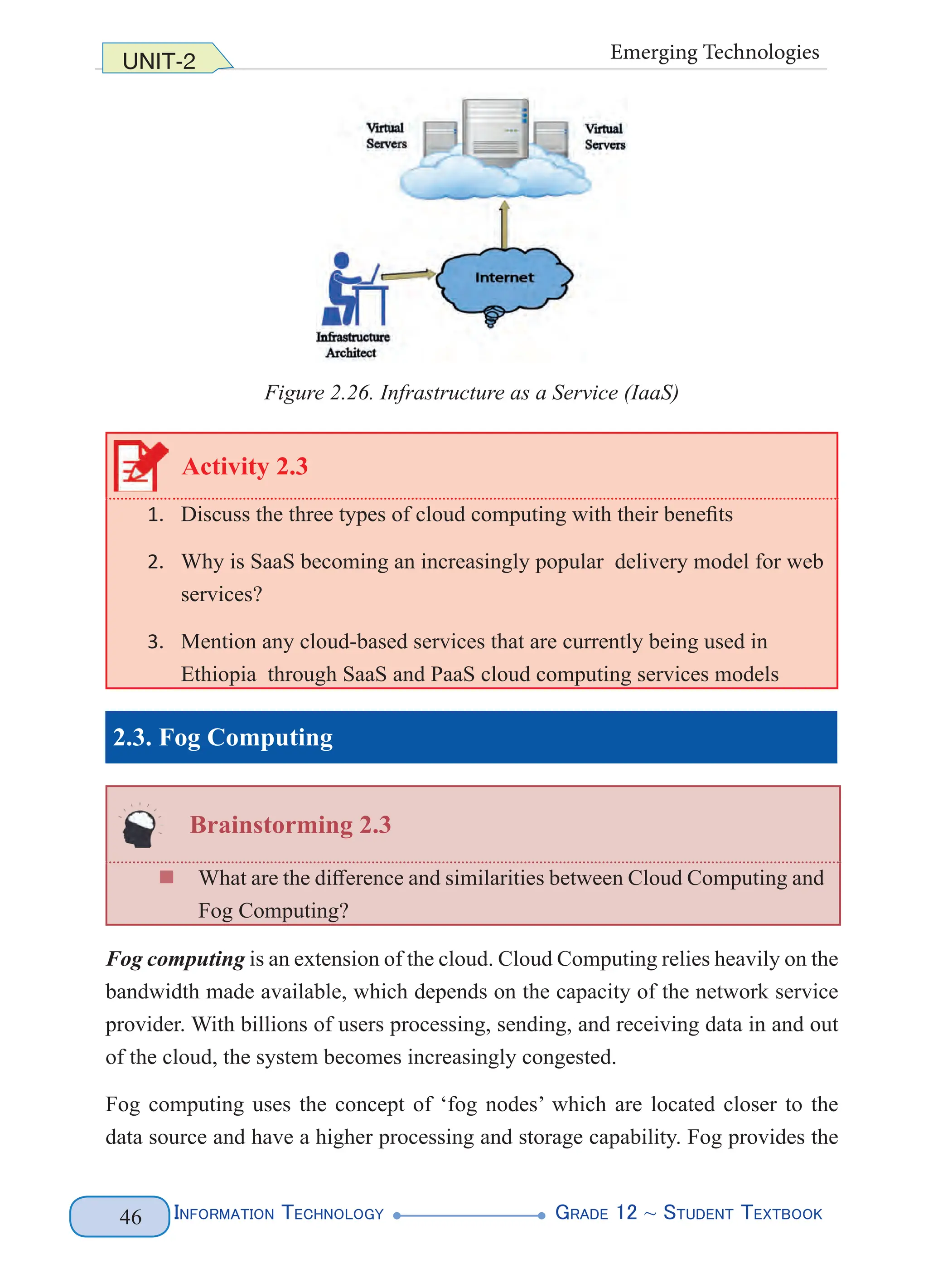
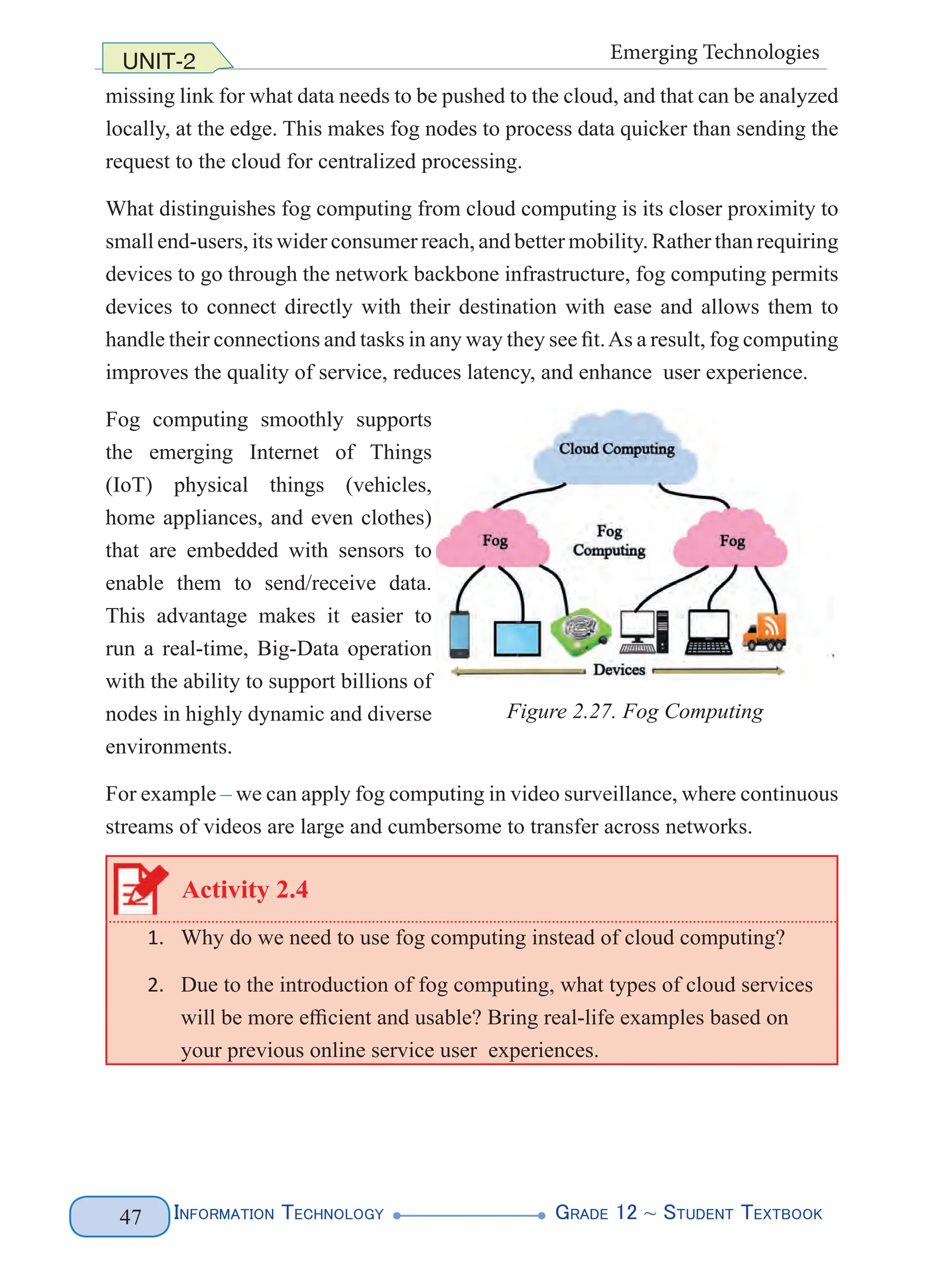
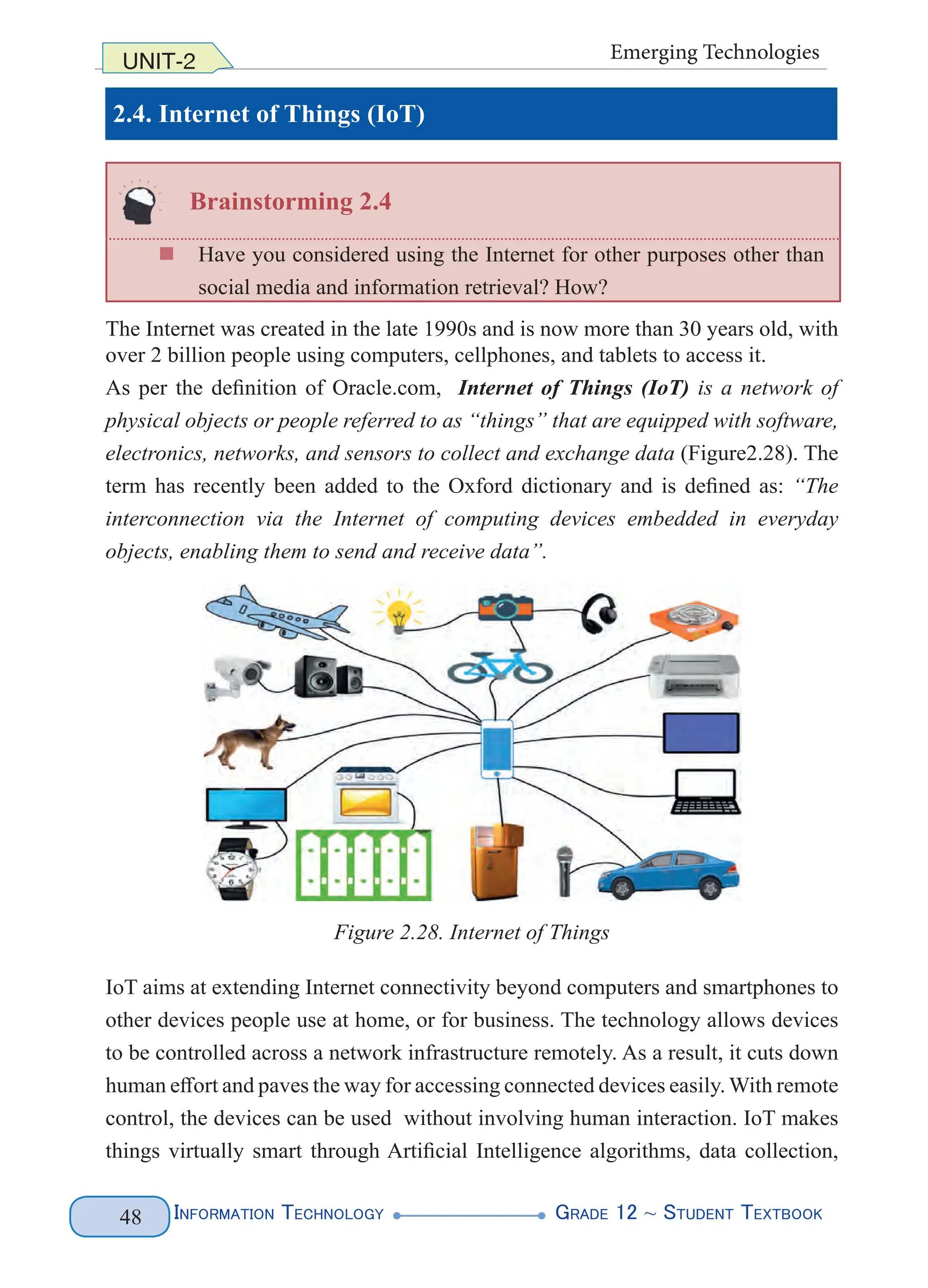
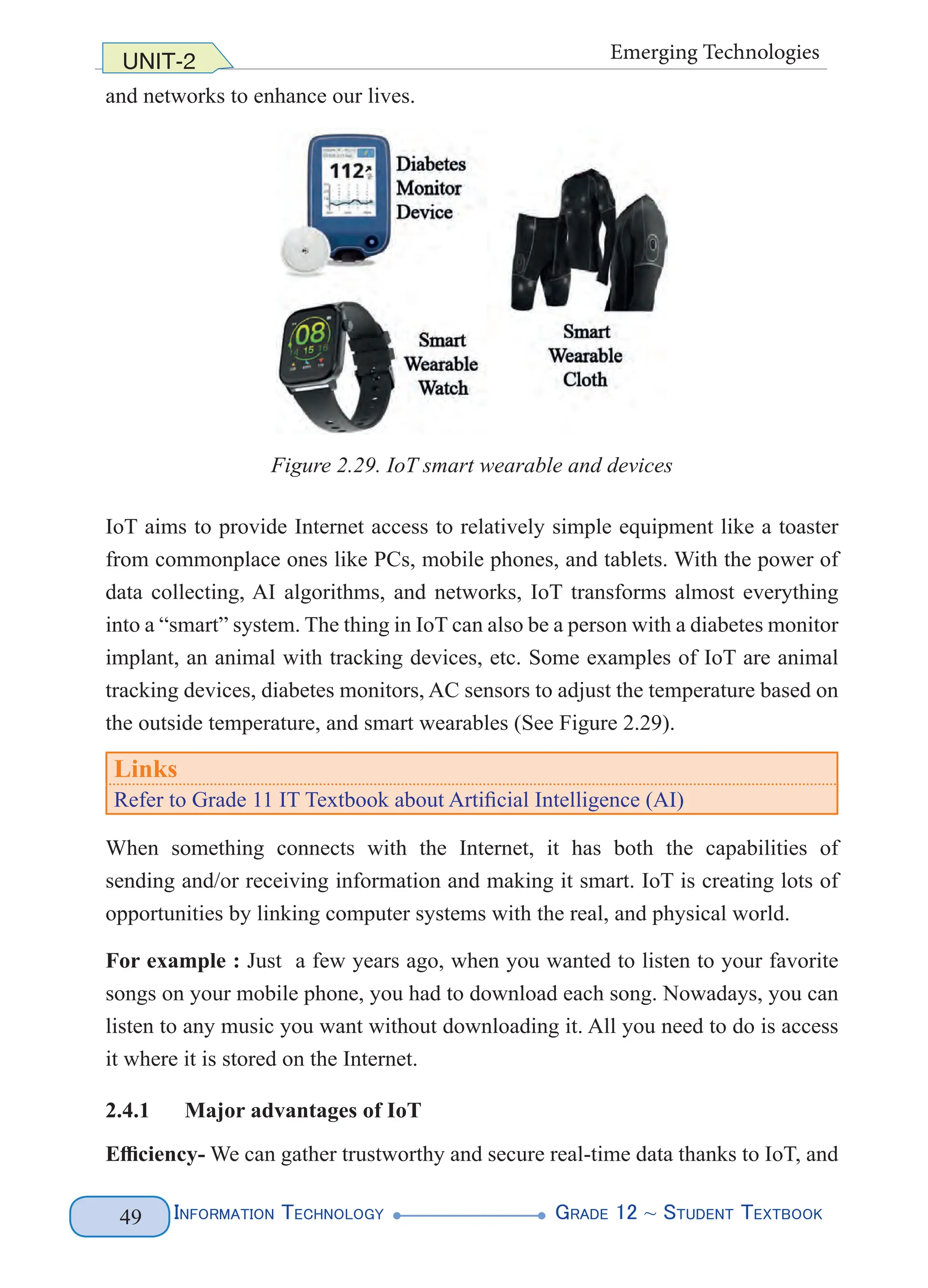
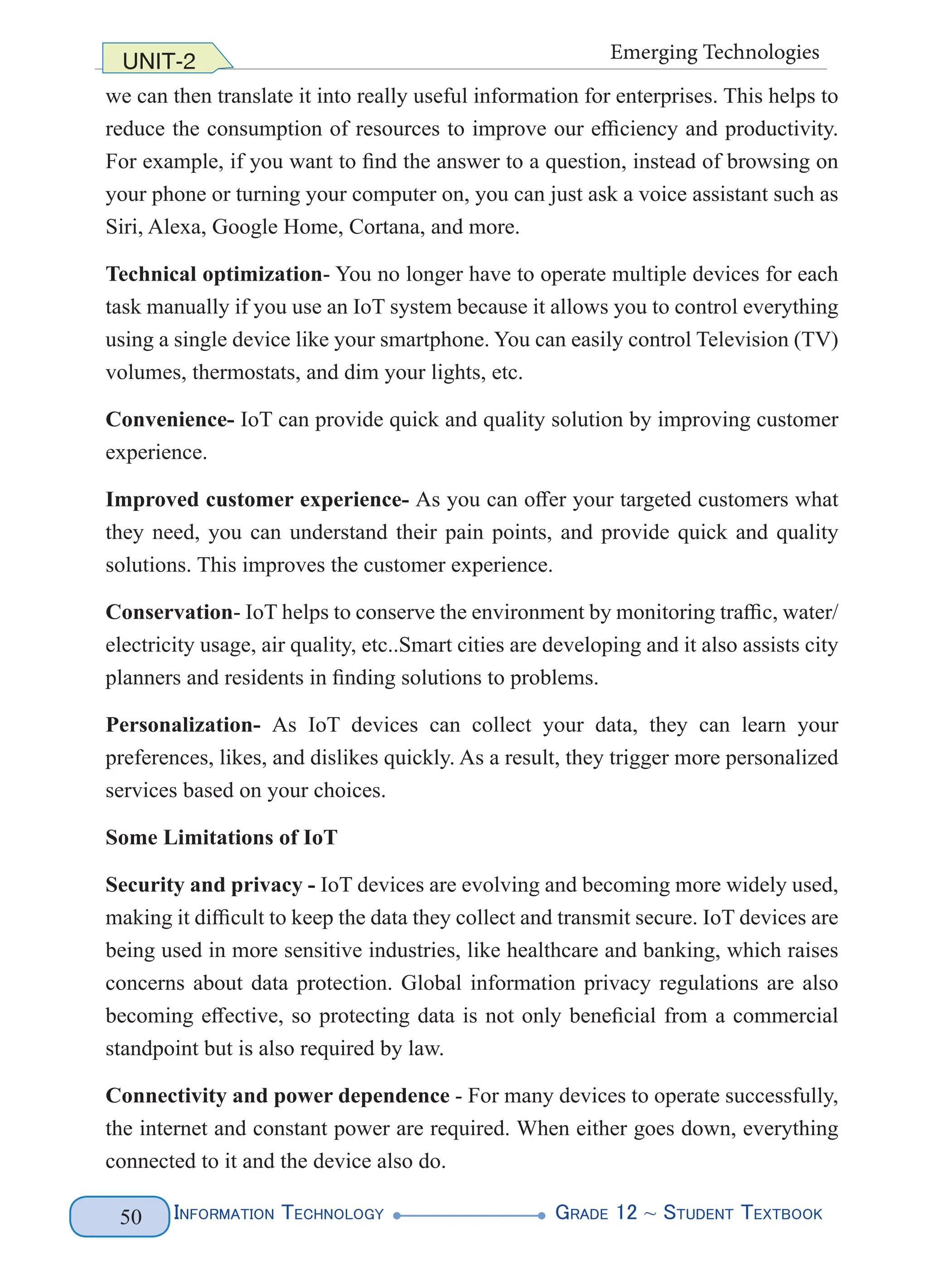
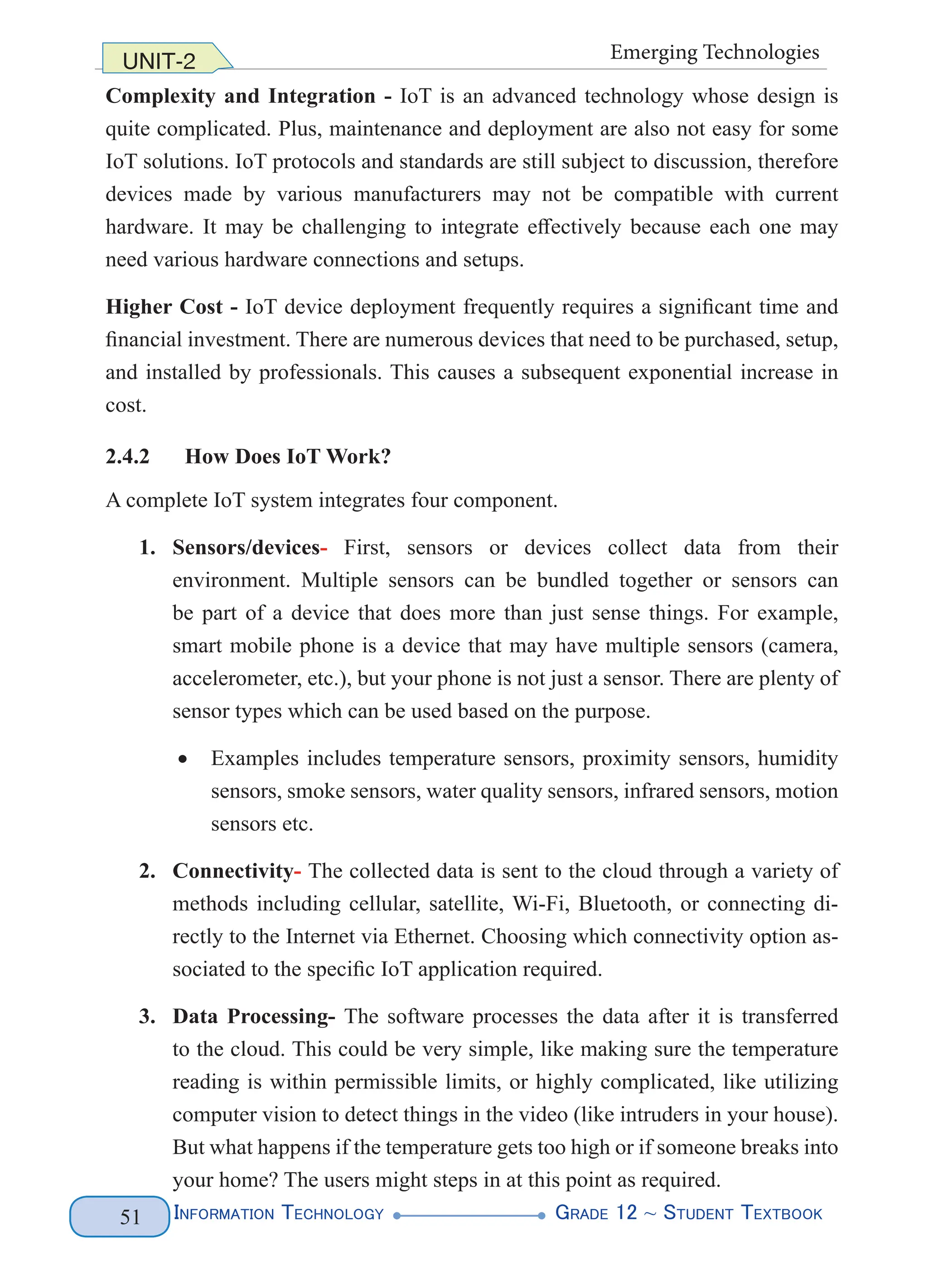
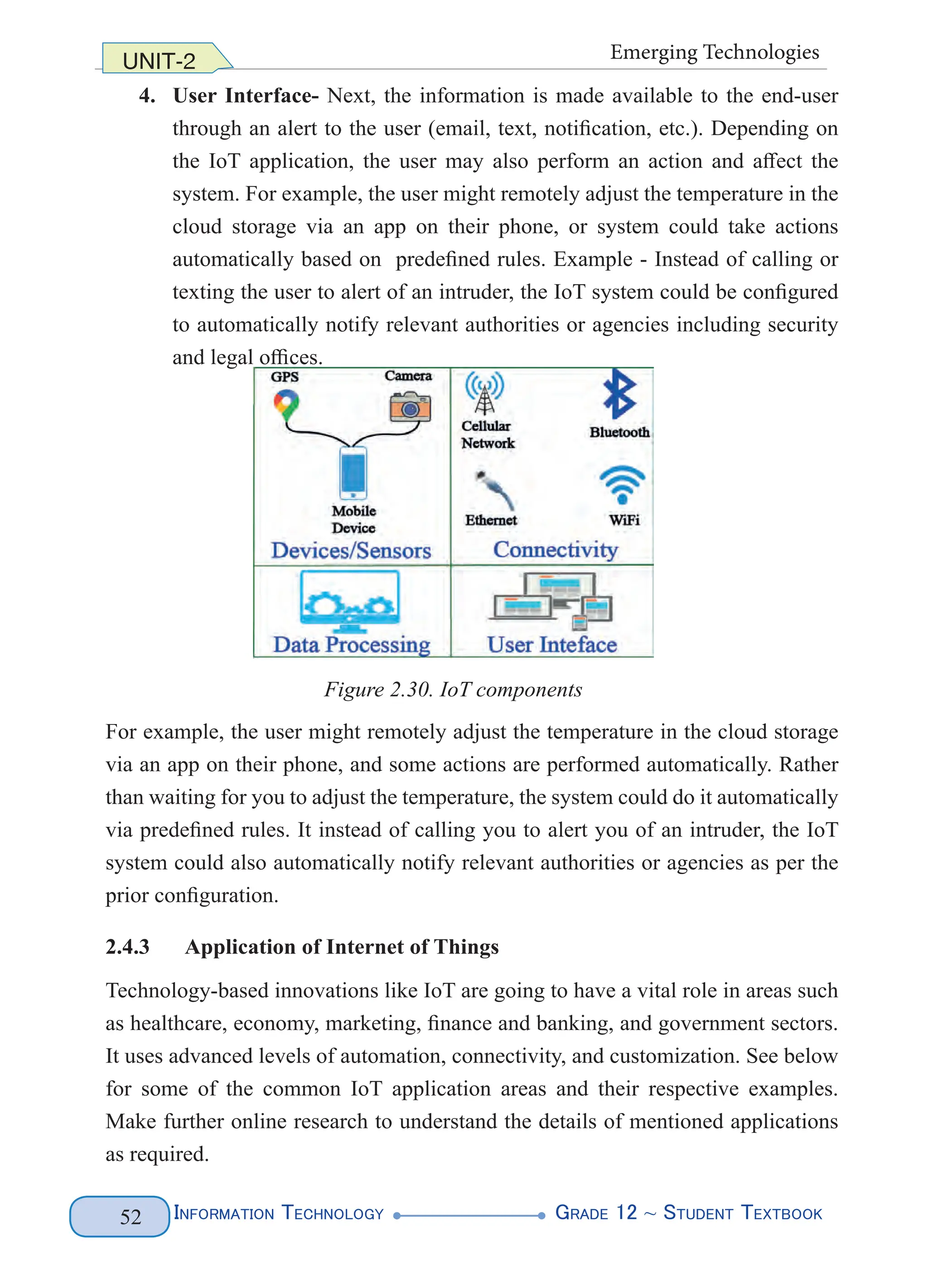
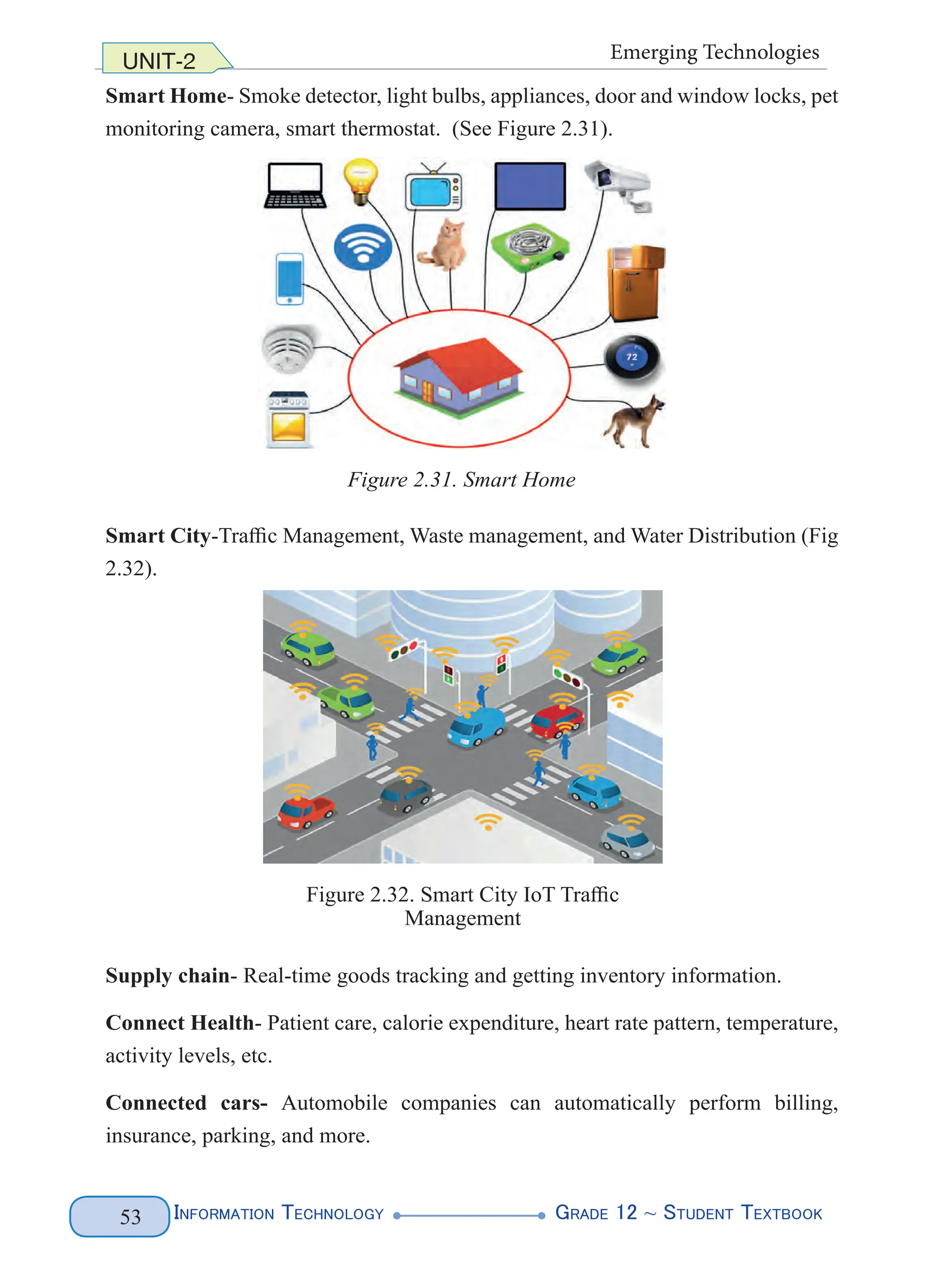
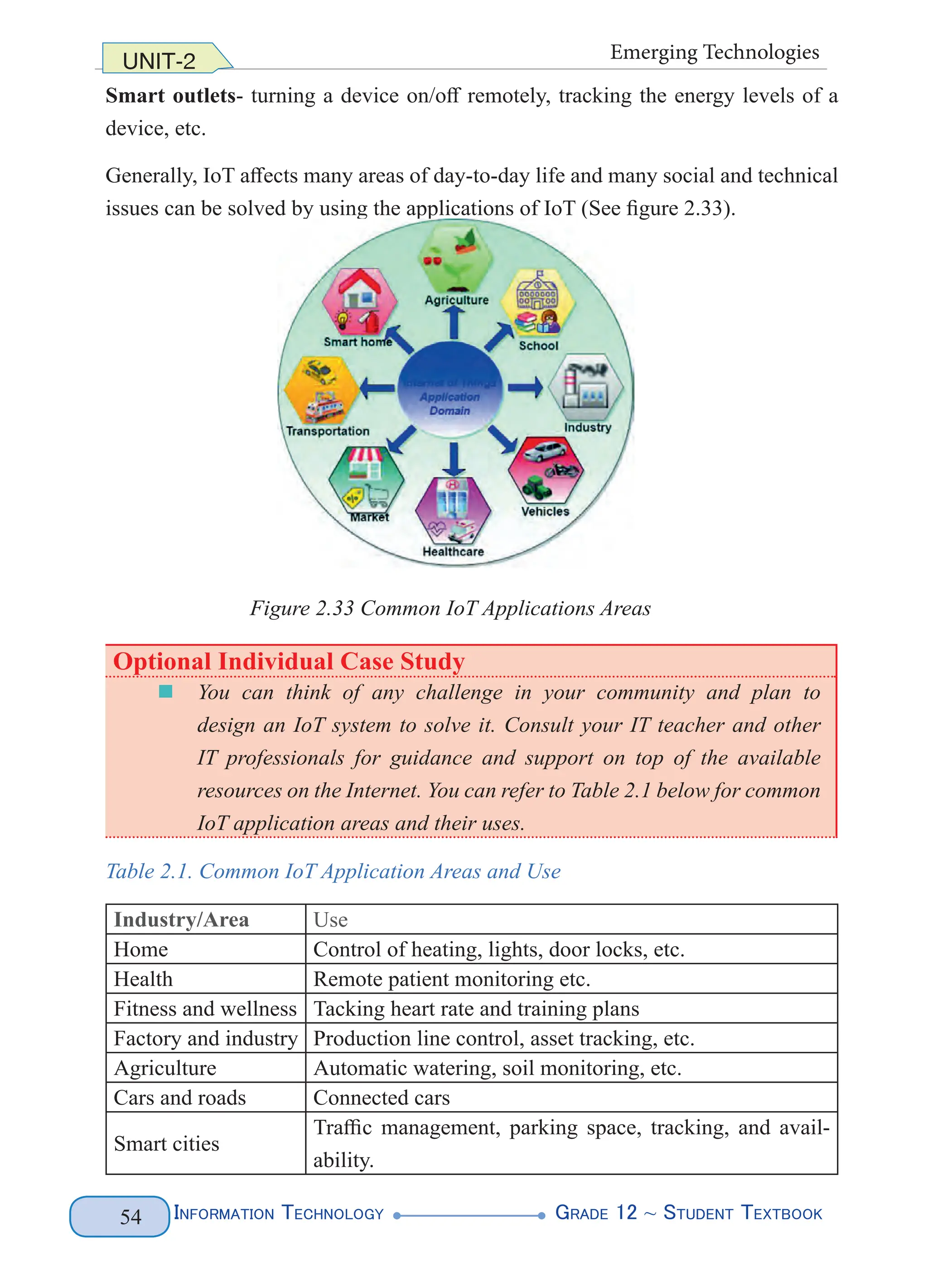
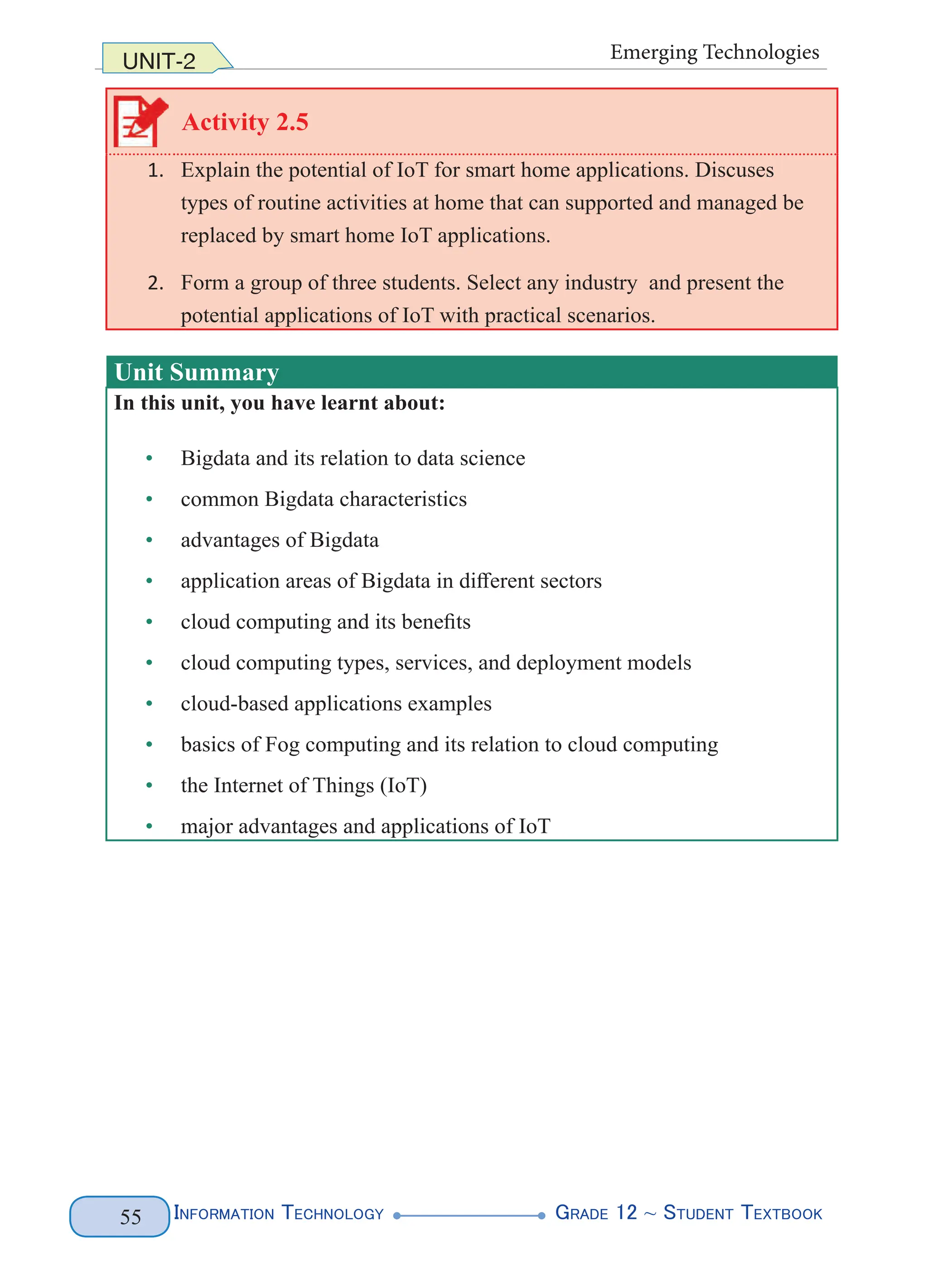
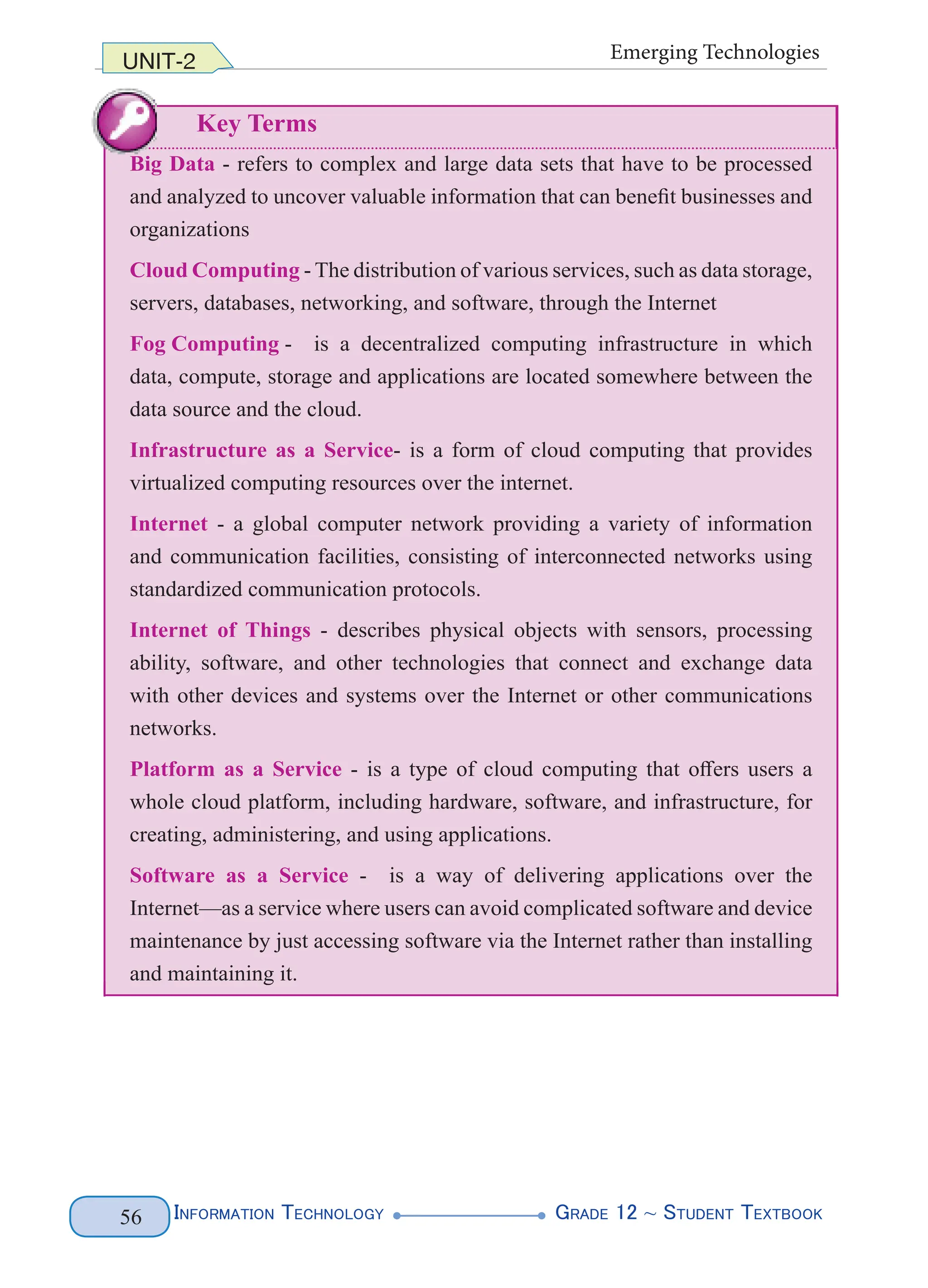
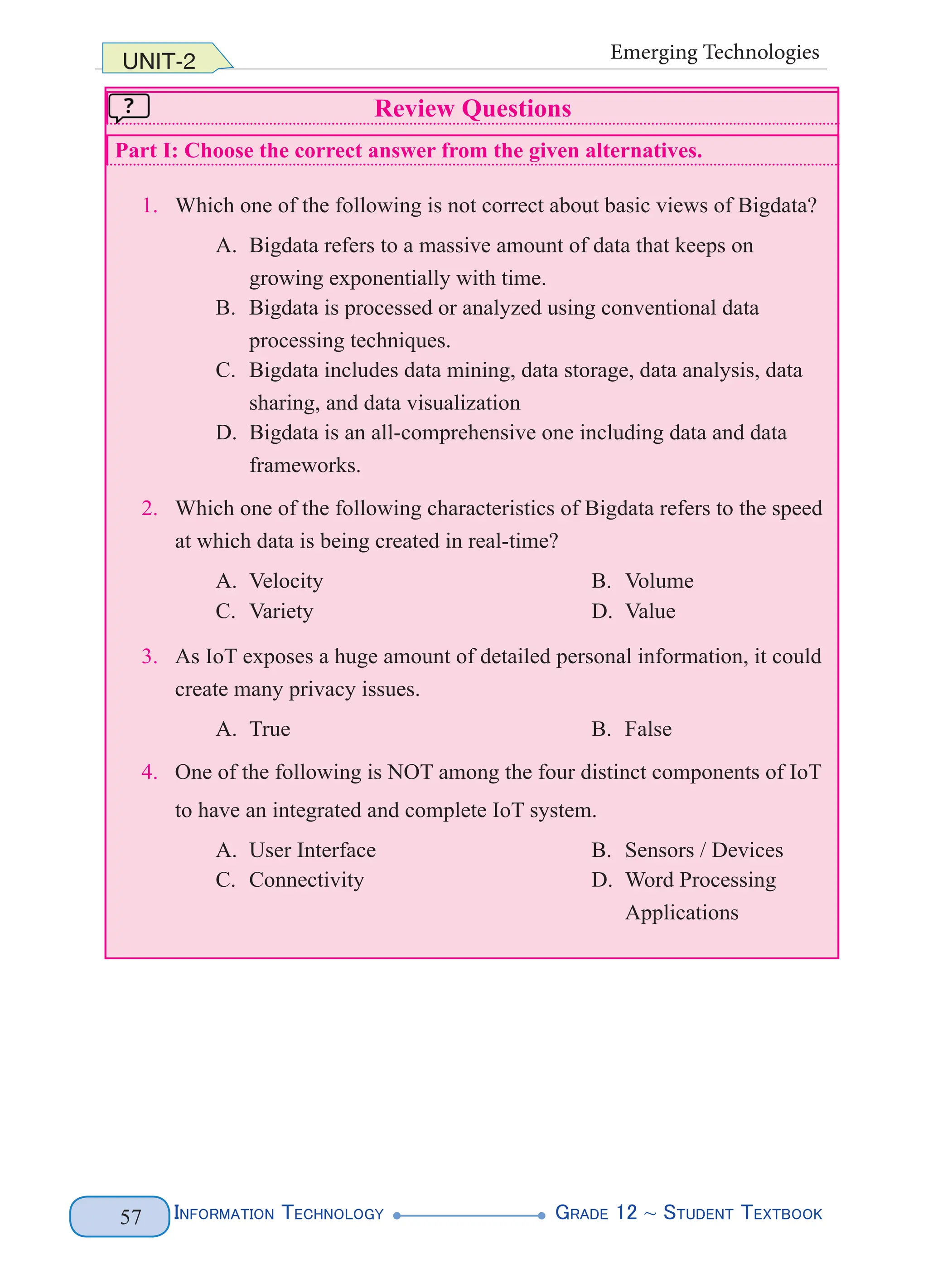
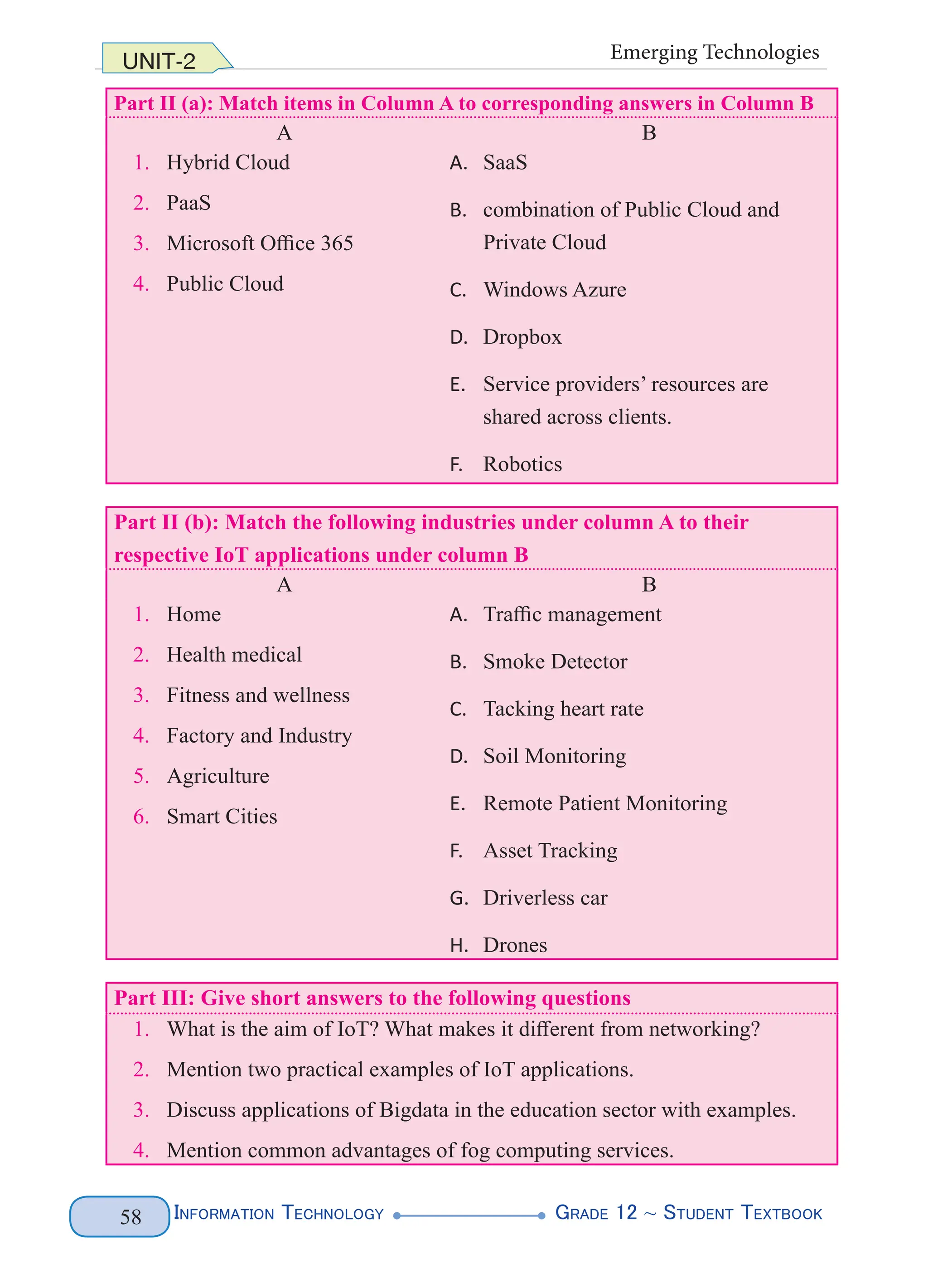
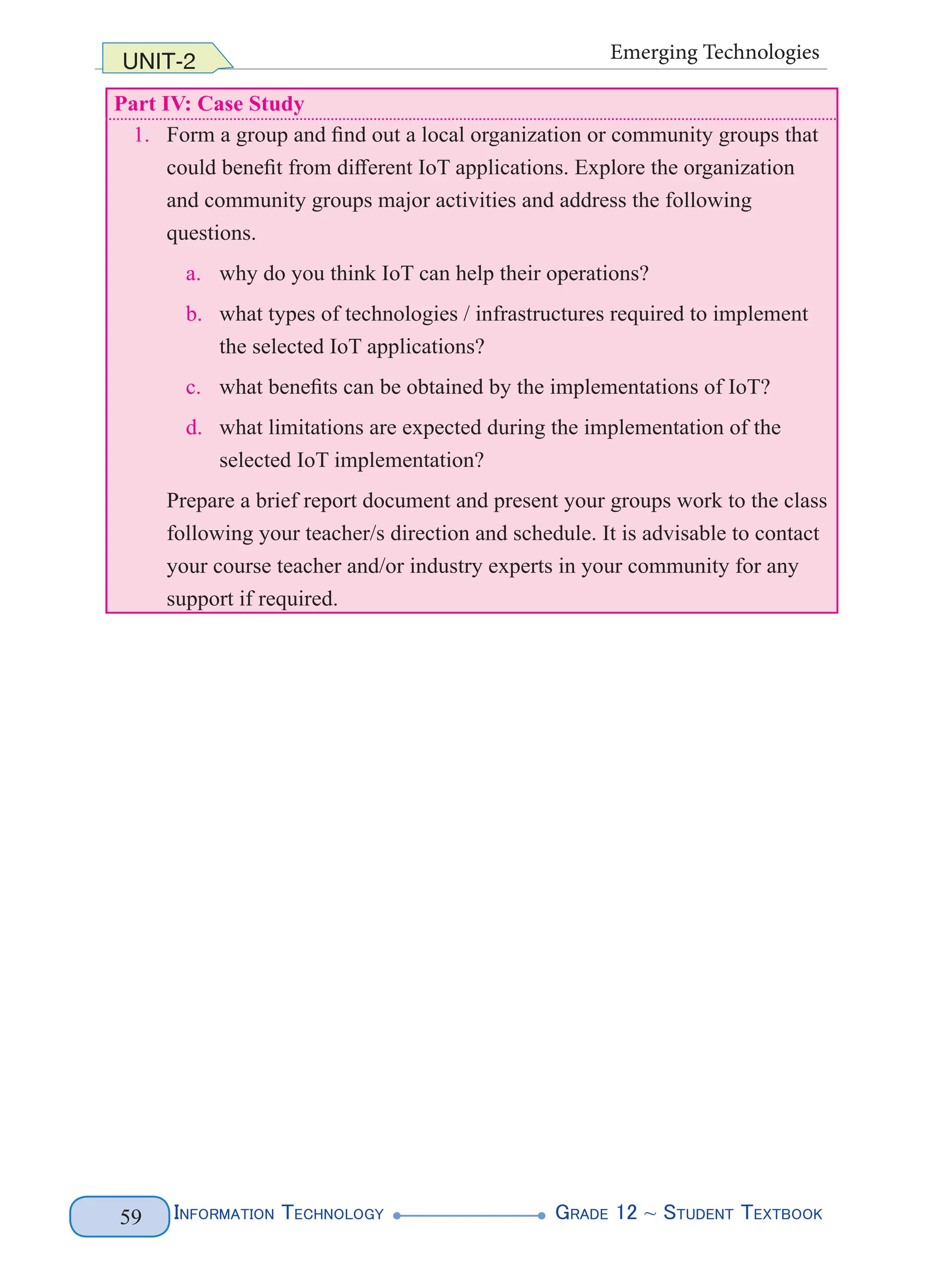
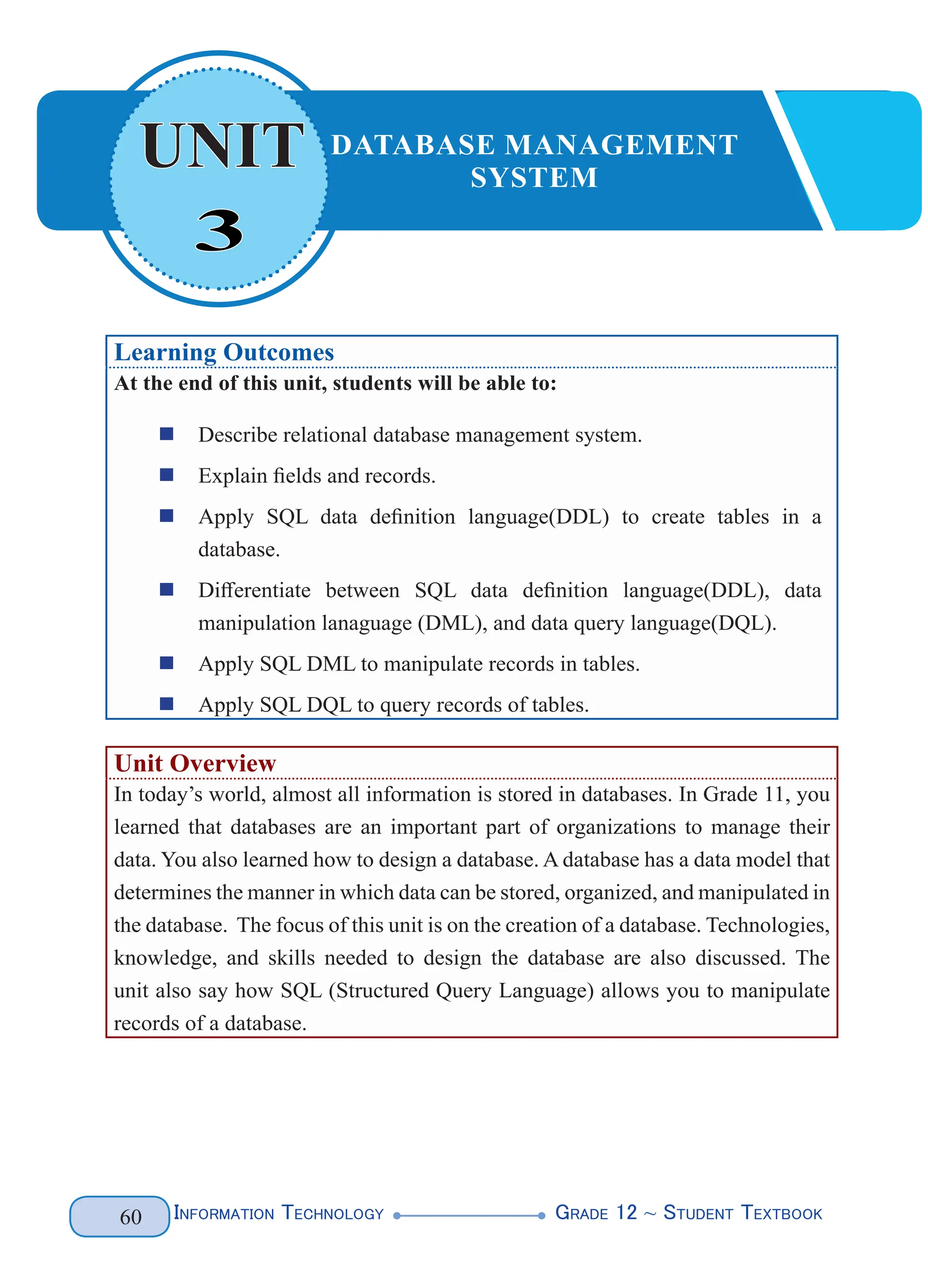
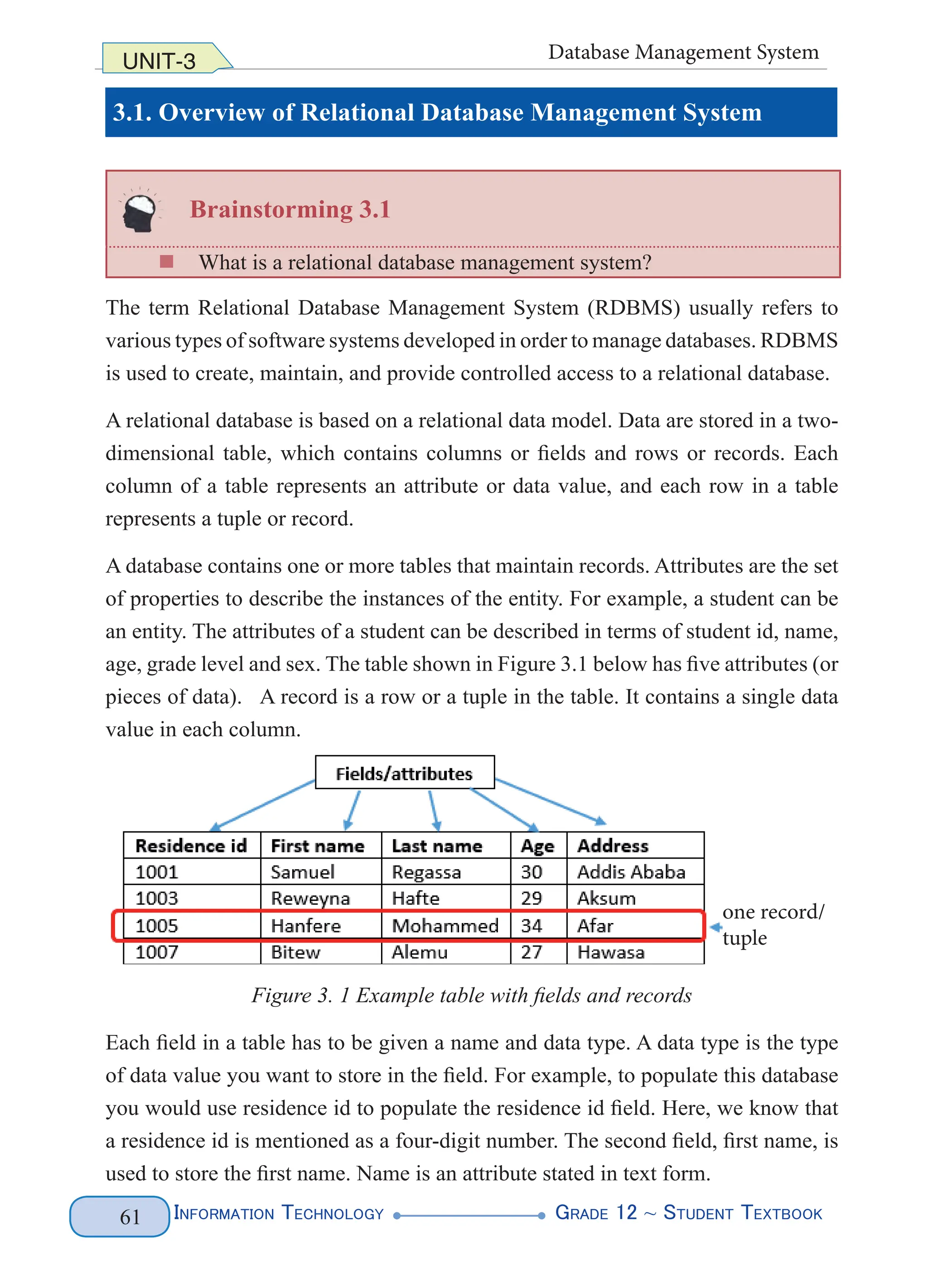
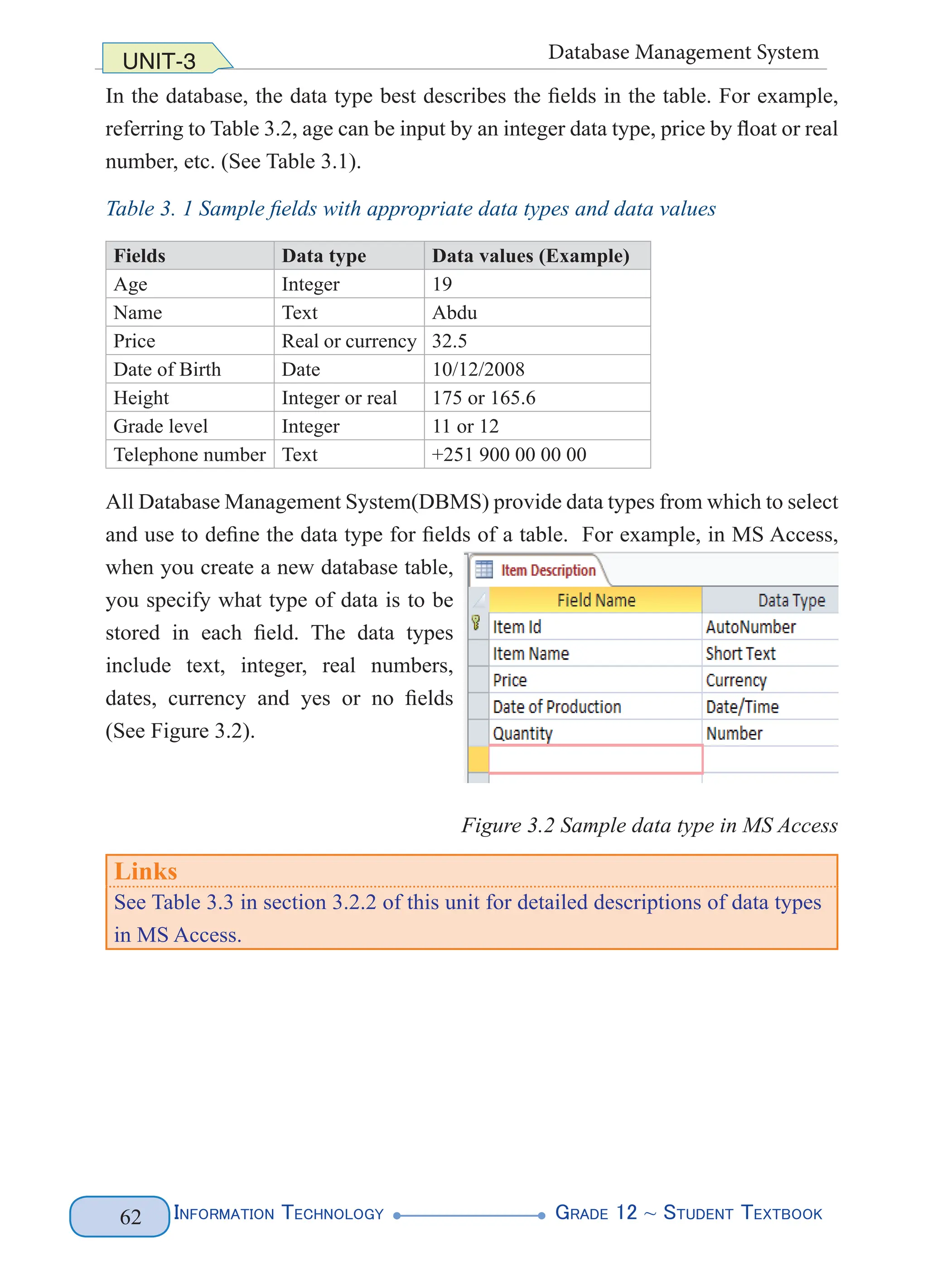
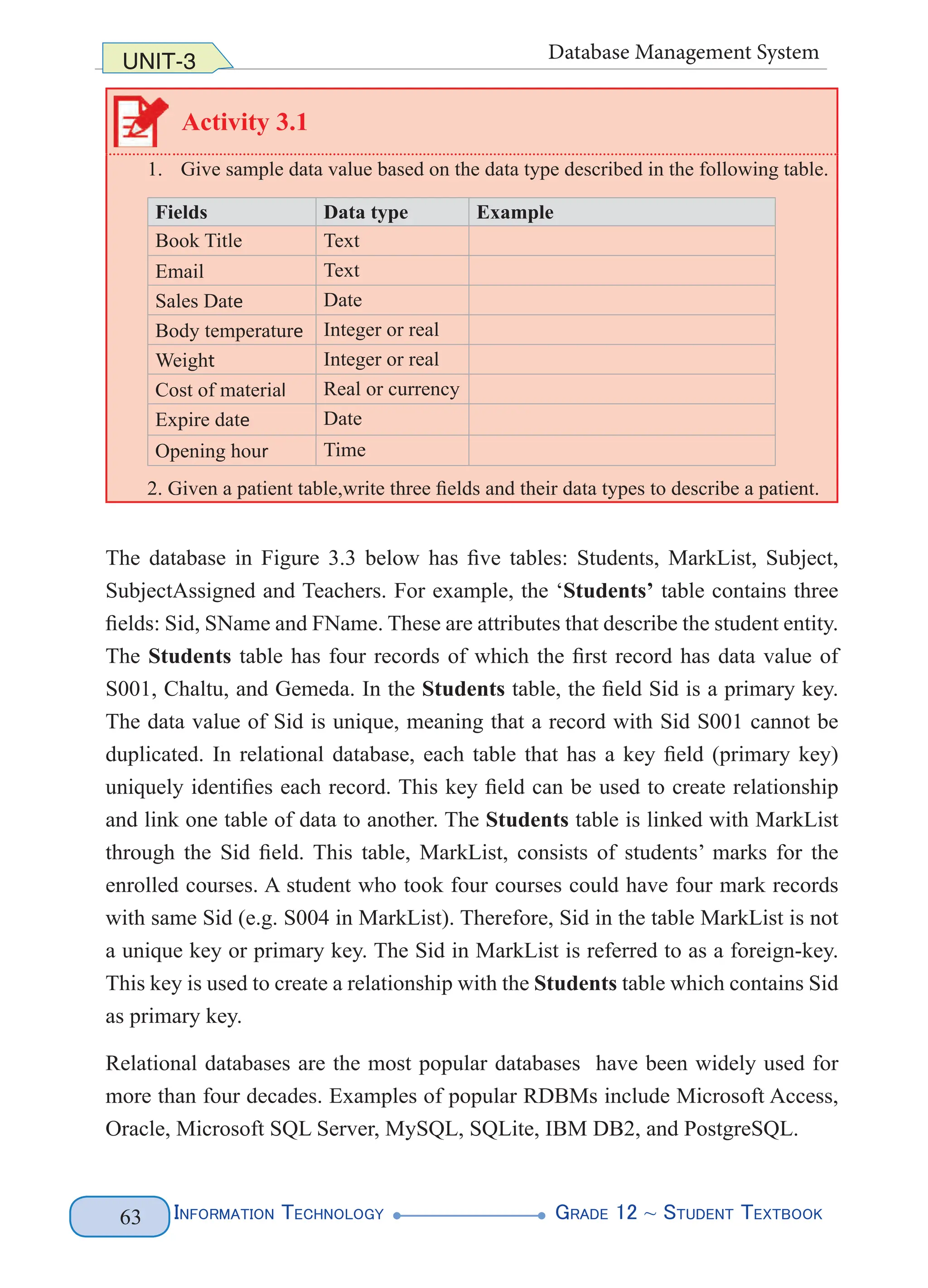
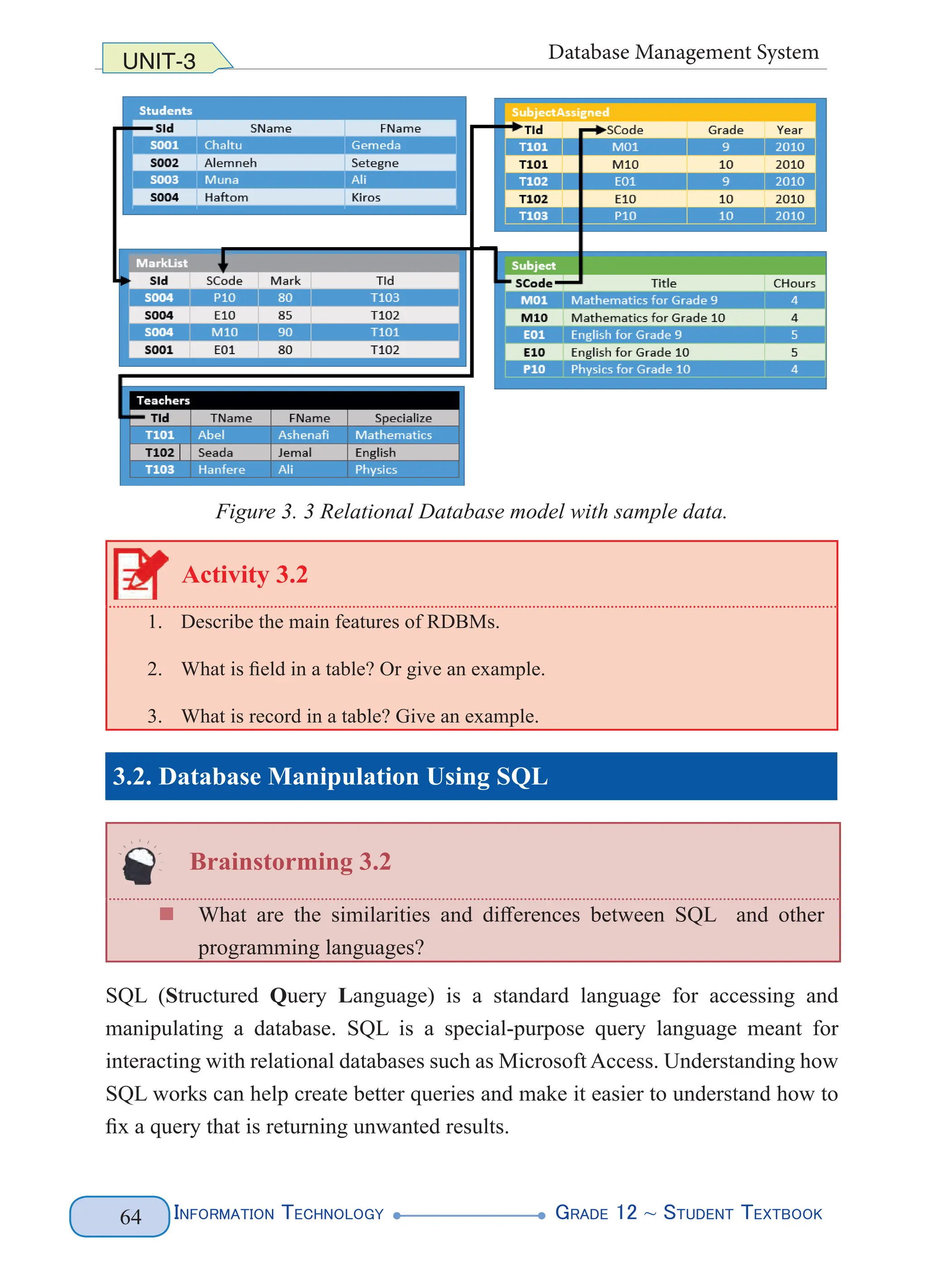
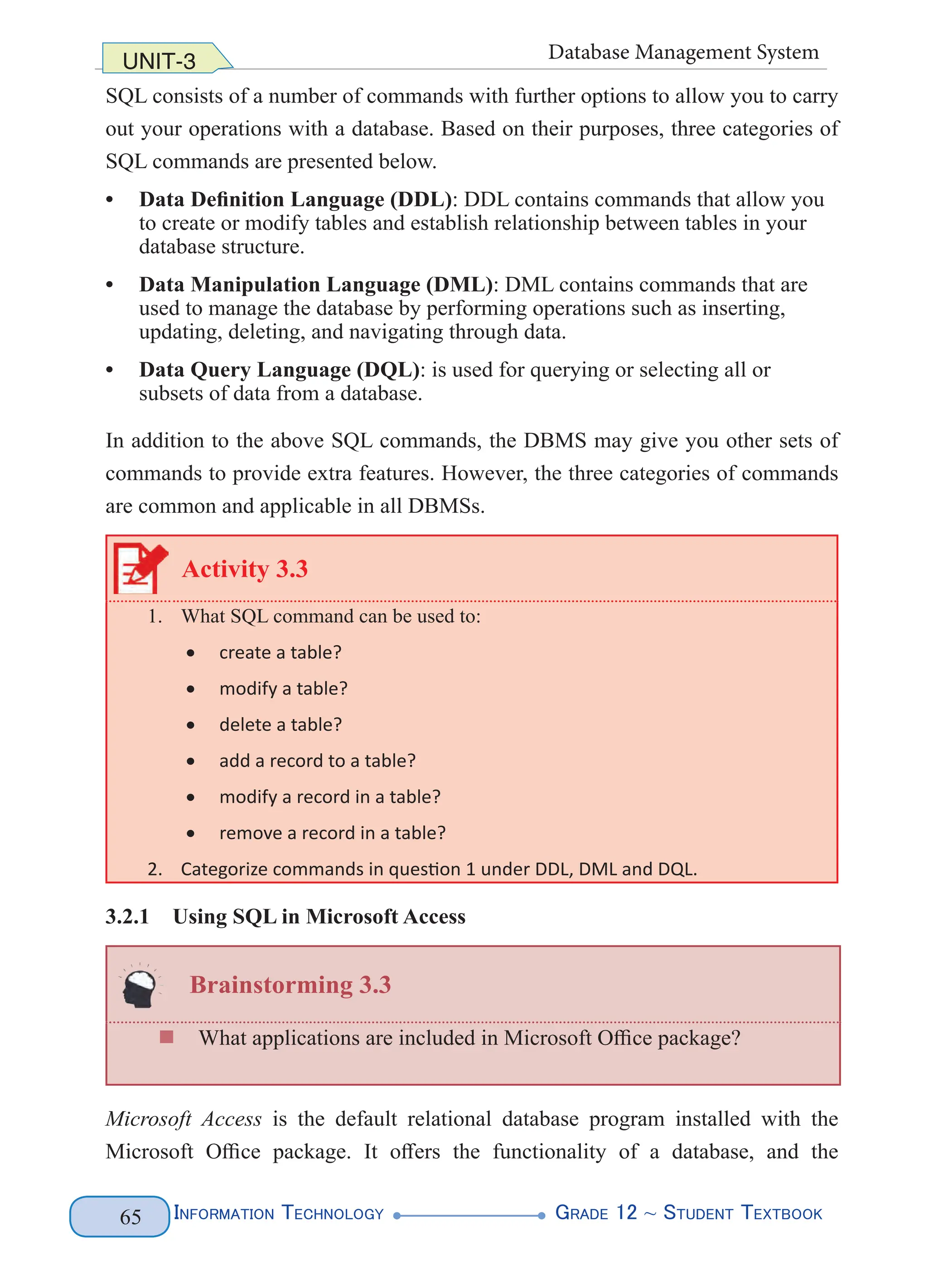
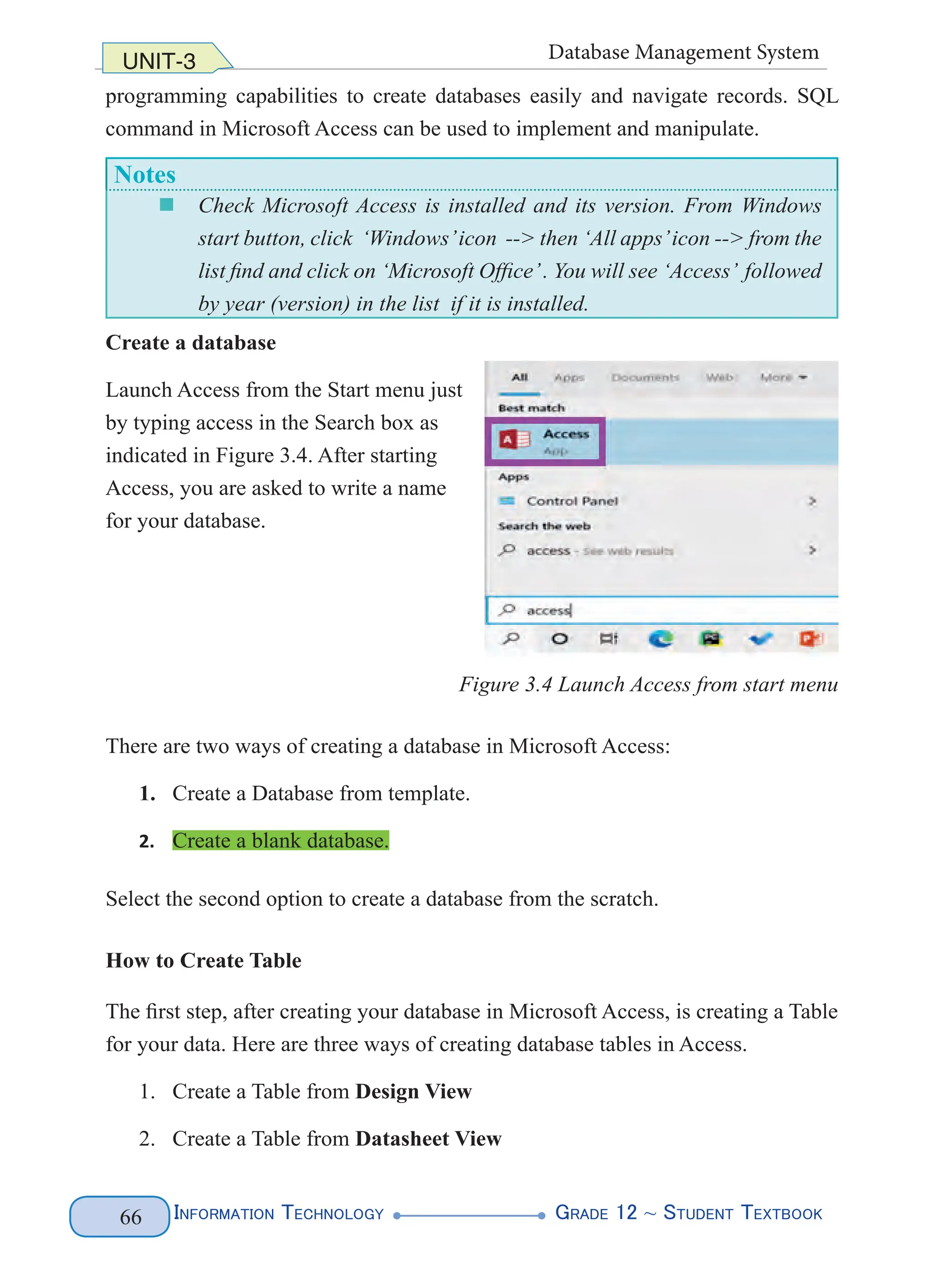
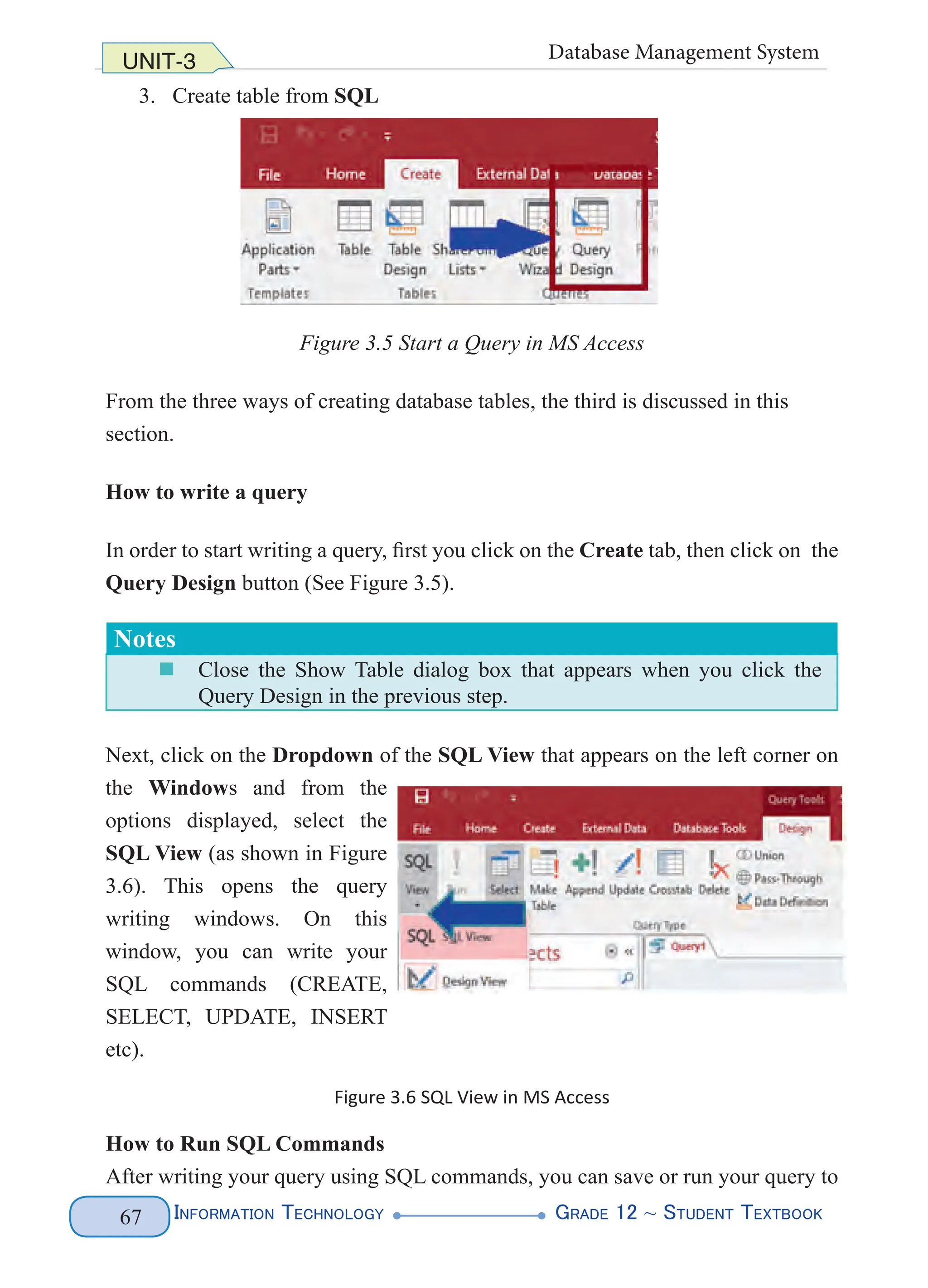
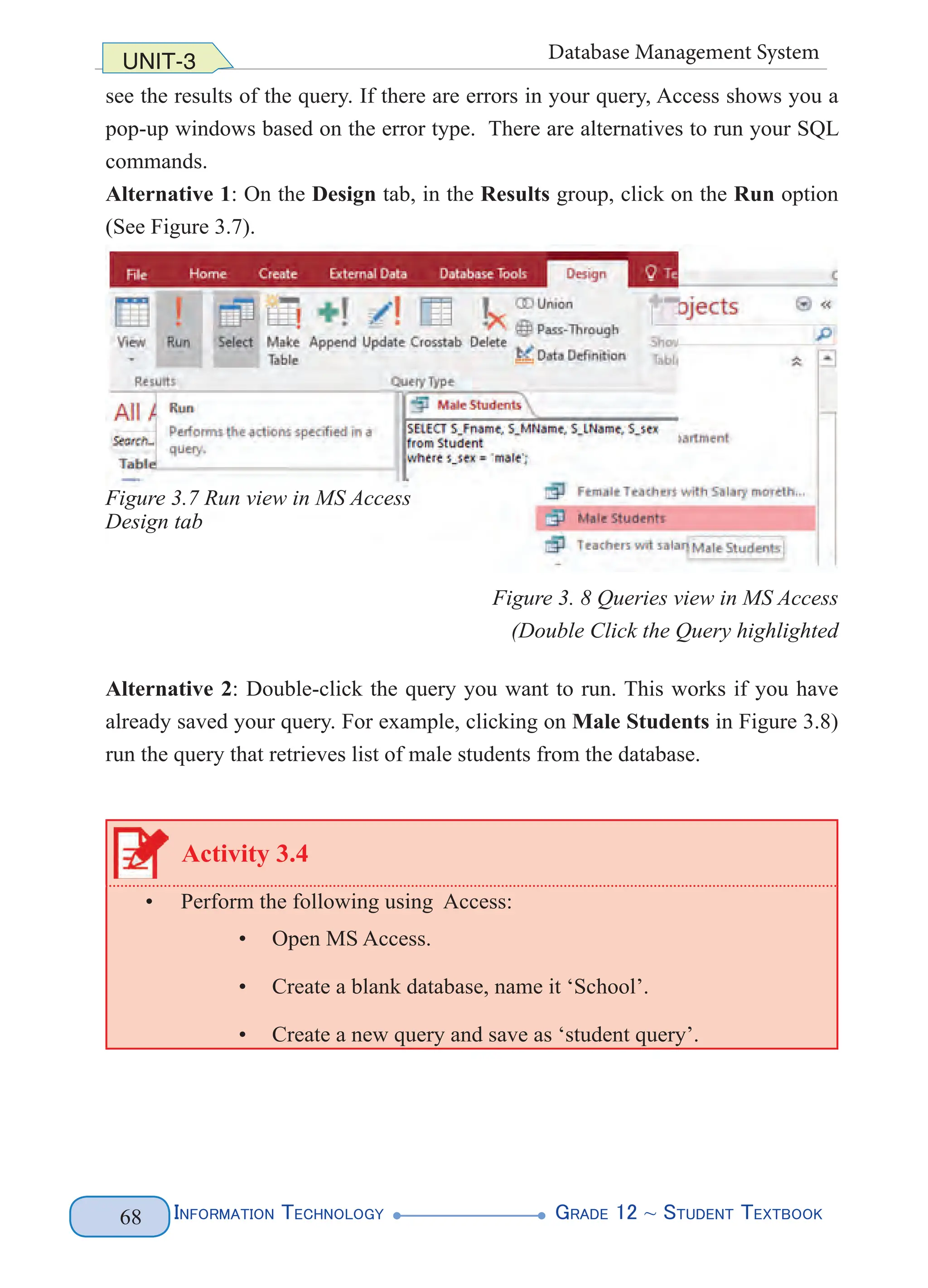
![Information Technology G
rade 12 ~ Student Textbook
69
UNIT-3 Database Management System
3.2.2 Data Definition Language (DDL)
DDL is part of SQL that is used to create and restructure a database. Some of the
most fundamental DDL commands include CREATE TABLE, ALTER TABLE,
and DROP TABLE
CREATE TABLE Command
The CREATE TABLE command is used to create a new table in a database. The
CREATE TABLE command provides various options to create a table. Table 3.2
illustrates the general syntax that is used to create a table.
Table 3. 2 SQL syntax for CREATE TABLE command
CREATE TABLE table_name(
Column1 datatype [Primary Key],
[Column2 datatype][REFERENCES table_name2(Column1)],
[Column3 datatype], [Column4 datatype]…)
Where:
1. CREATE TABLE is SQL command to create a table.
2. table_name is a name for the table. E.g. Farmer
3. Column1, Column2, Column3 are fields of the table. E.g. name, age,
subject, etc.
4. Optional [Primary Key] is a command to set unique identifier.
5. datatype describes the type of data a field can store. E.g. CHAR, INT, etc.
Notes
„
„ Each column in a table is required to define a name and a data type.
Various DBMS might use different data type names. In some case, the
name could be the same but different in their size and other details.
Therefore, you need to always check their documentation.
Some of the more specialized data types that are used in SQL statement in Access
are listed in Table 3.3.](https://image.slidesharecdn.com/g12-it-stb-2023-web-240506201855-05da823c/75/G12-IT-this-is-information-technology-text-for-all-76-2048.jpg)
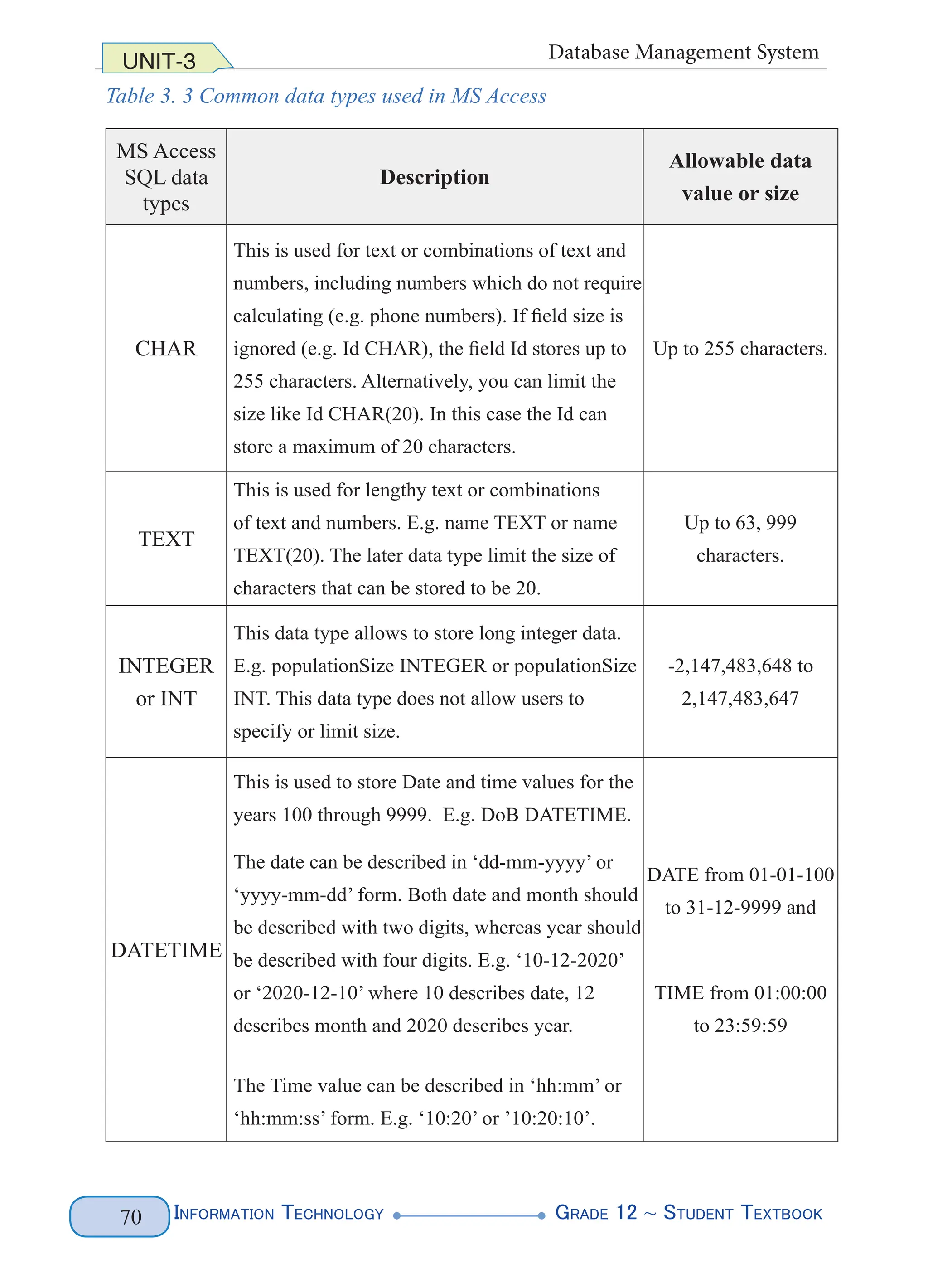
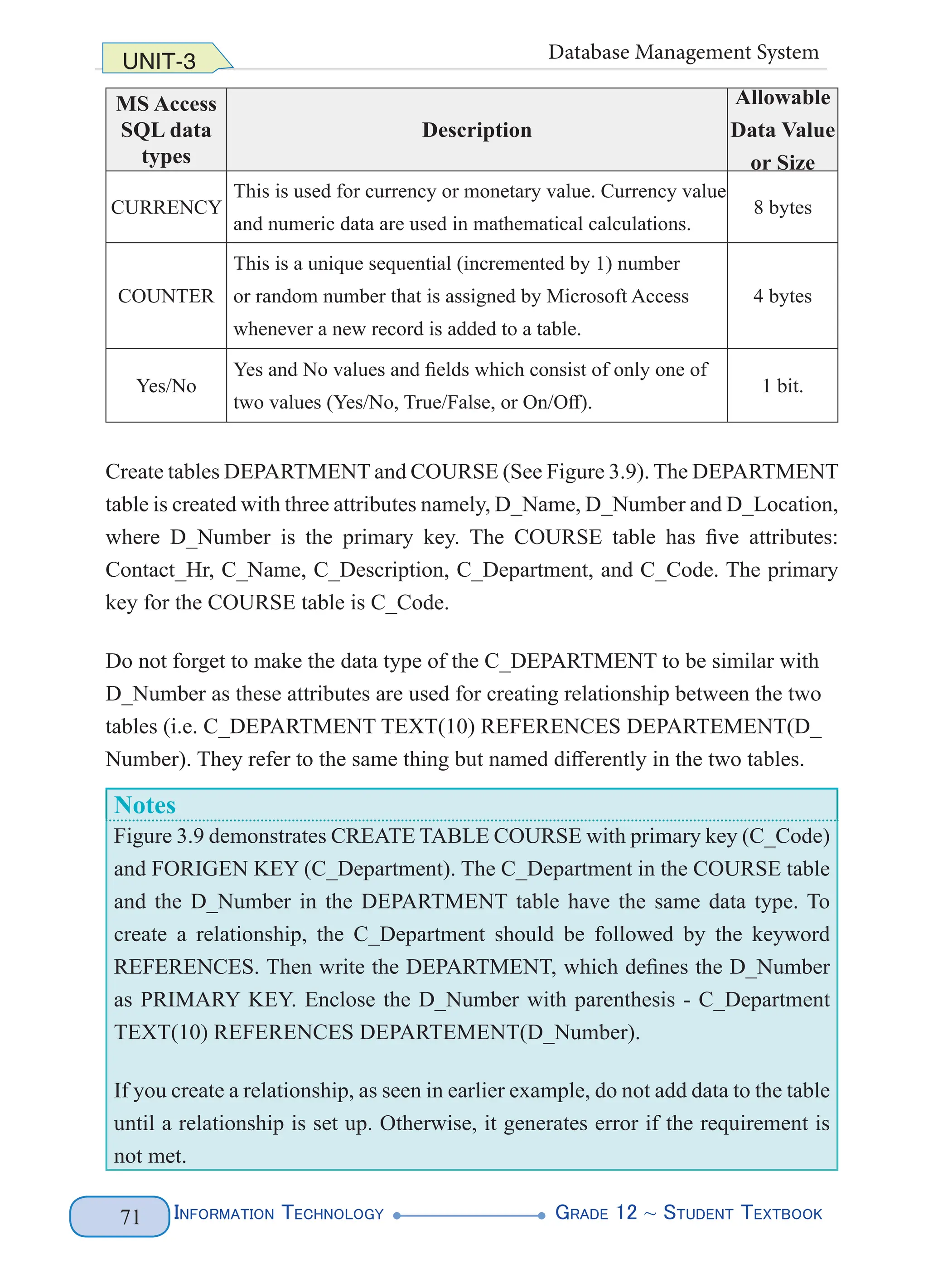

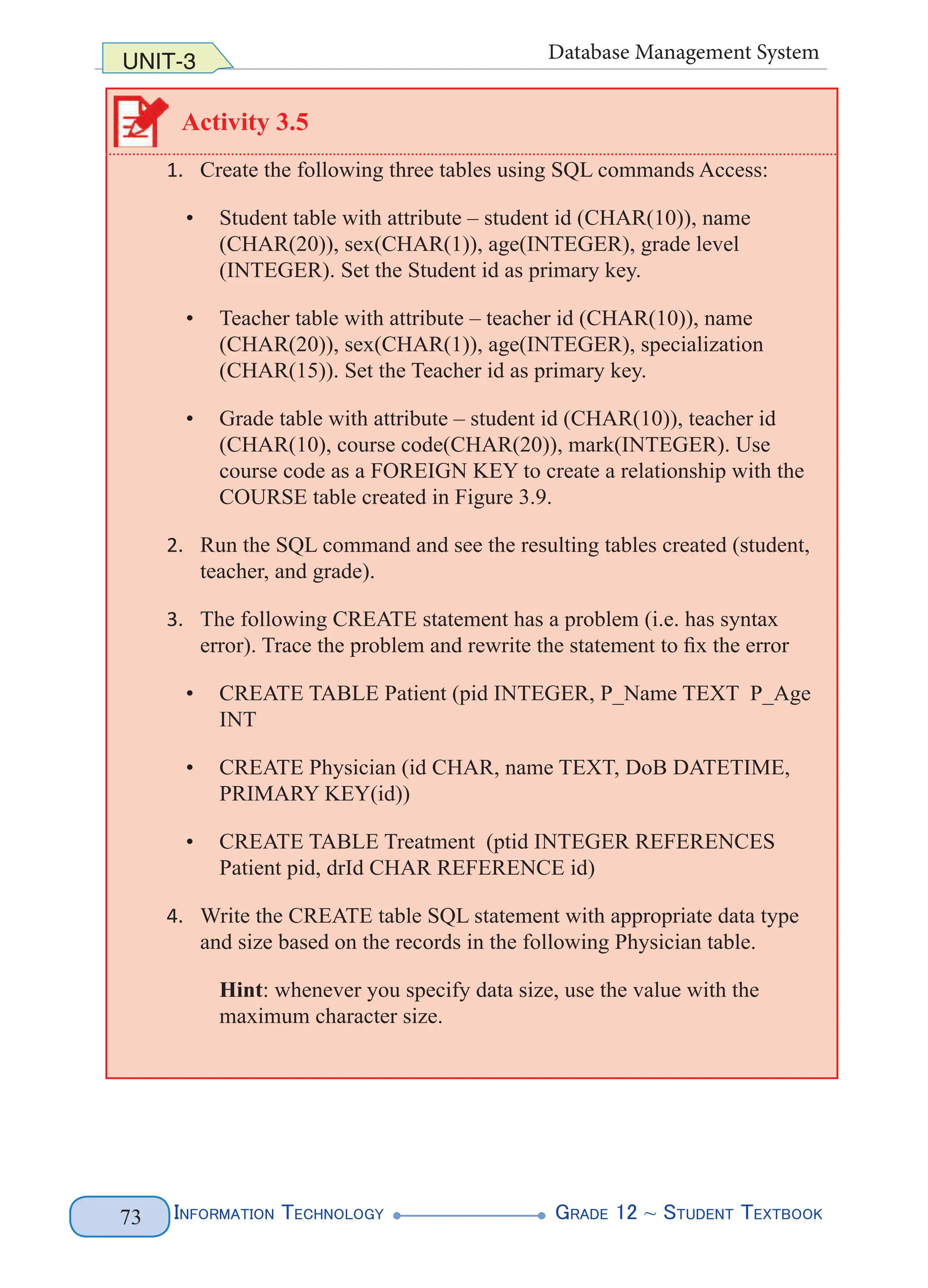
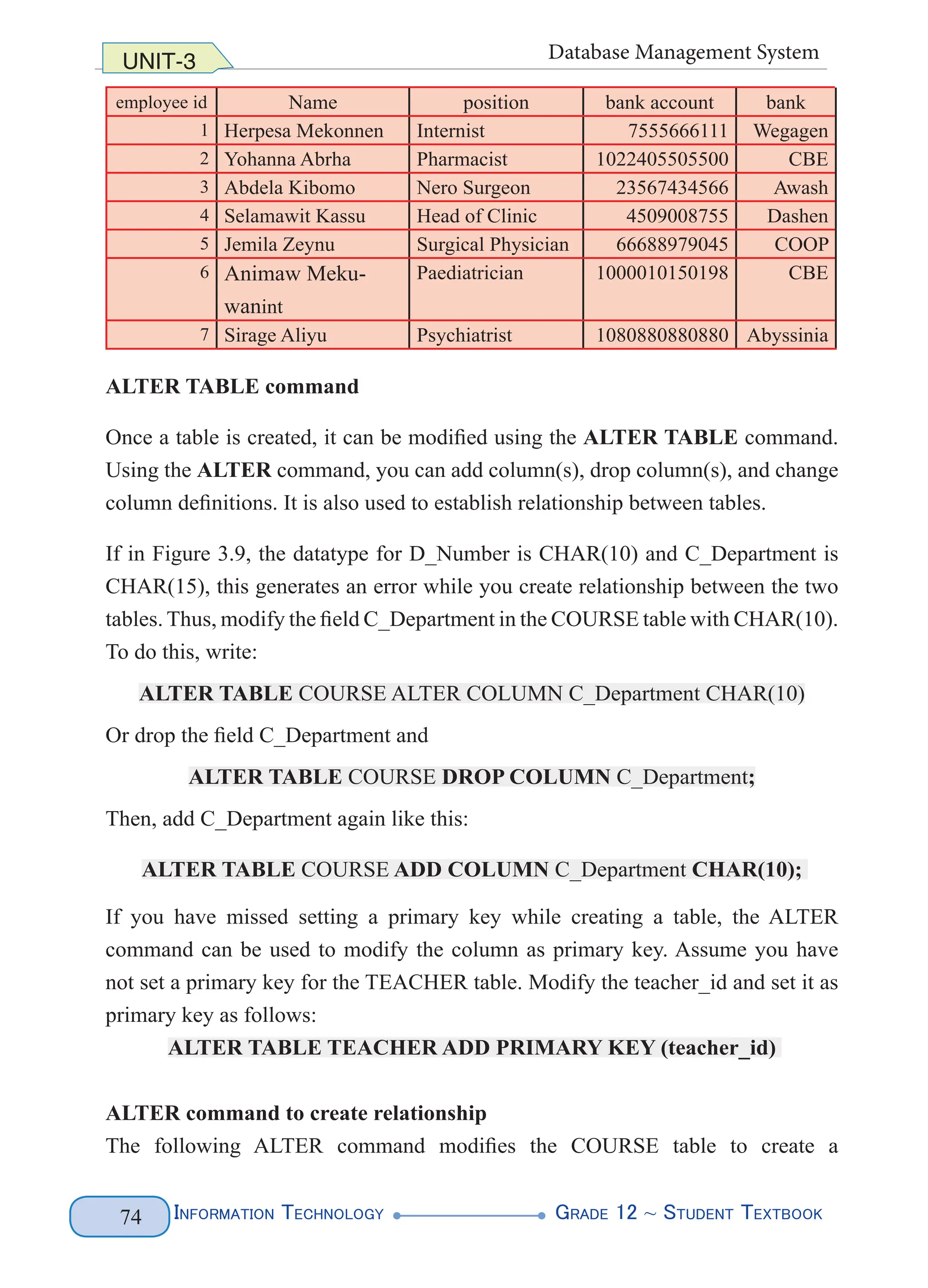
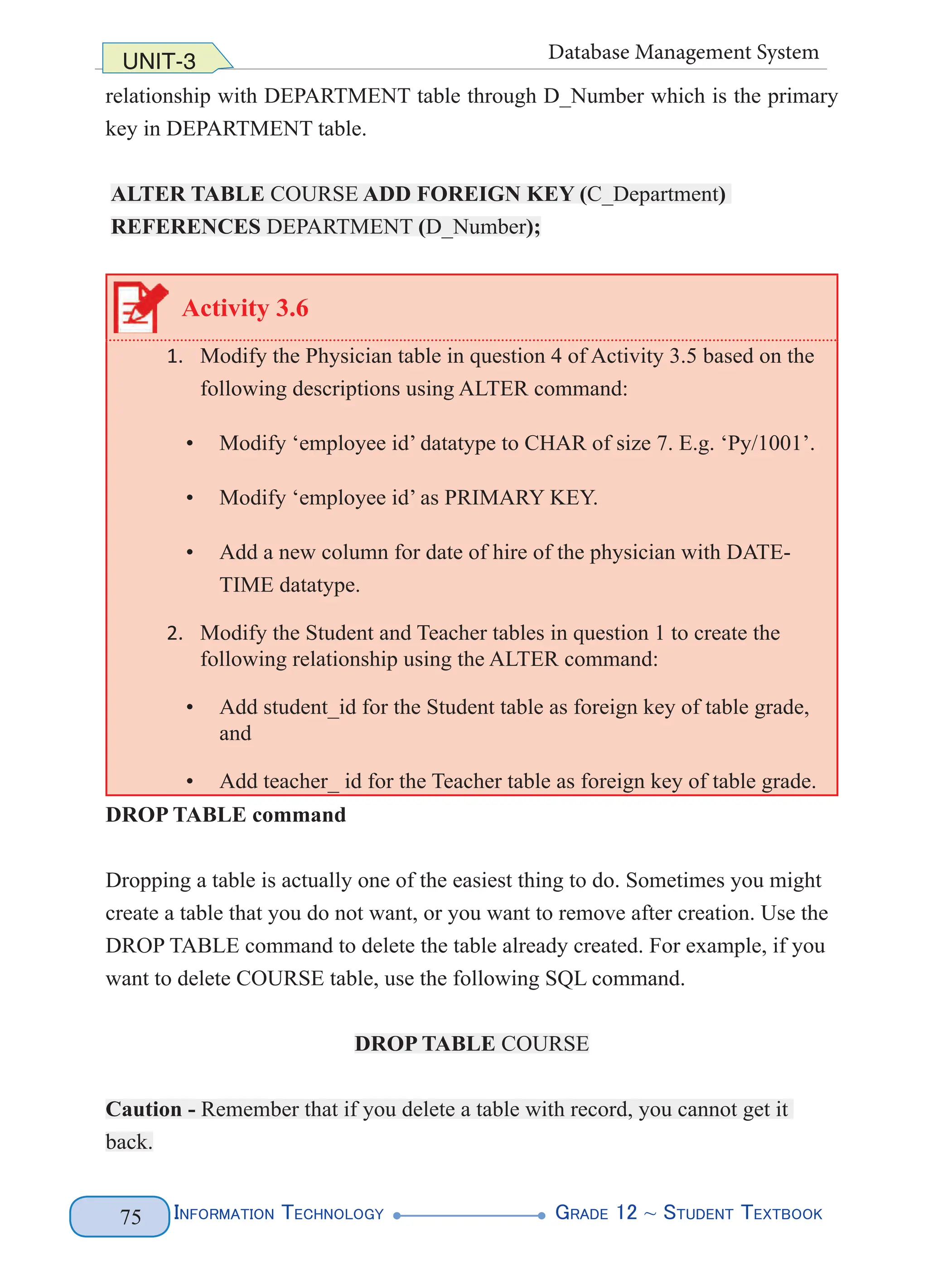
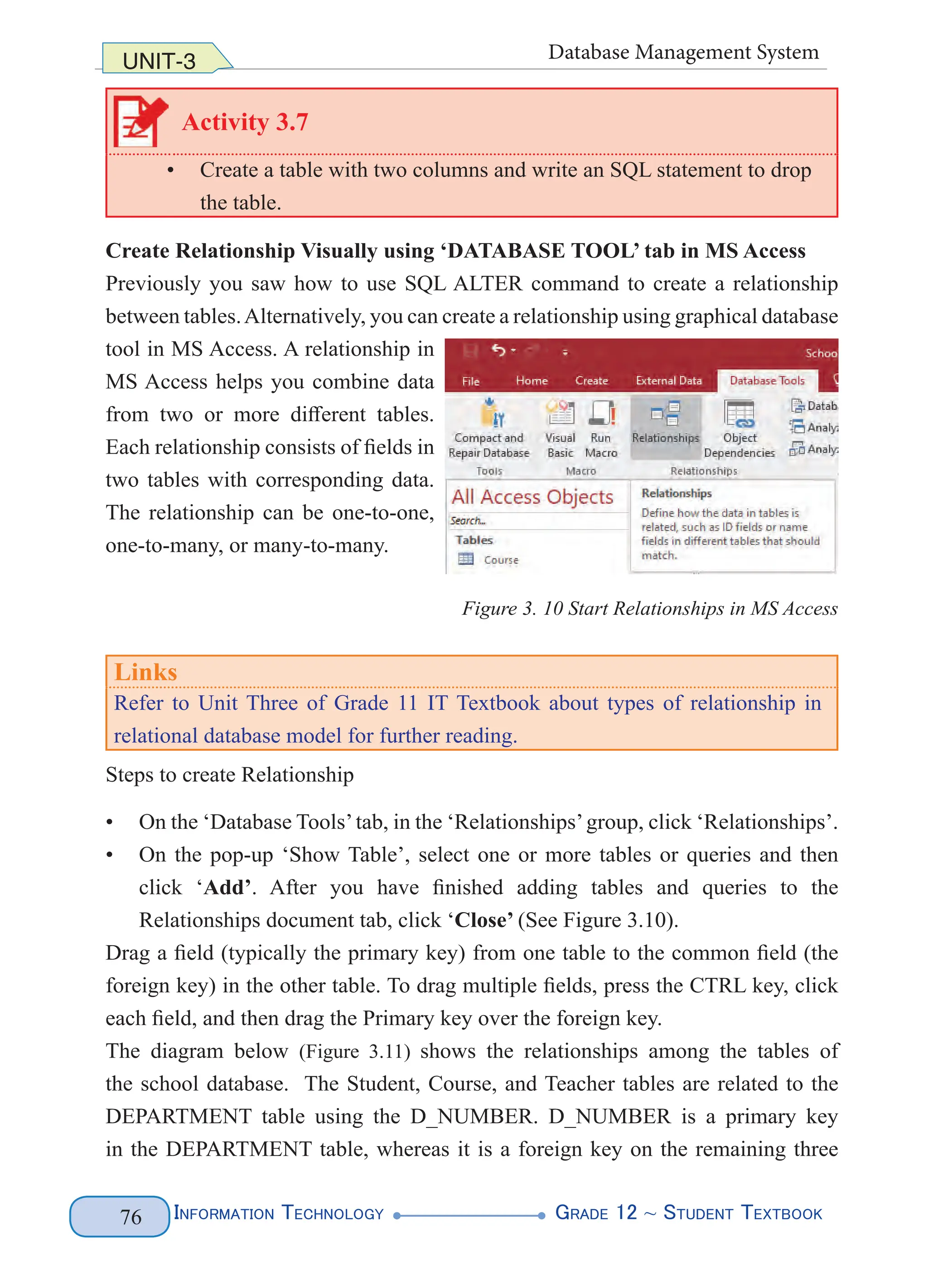
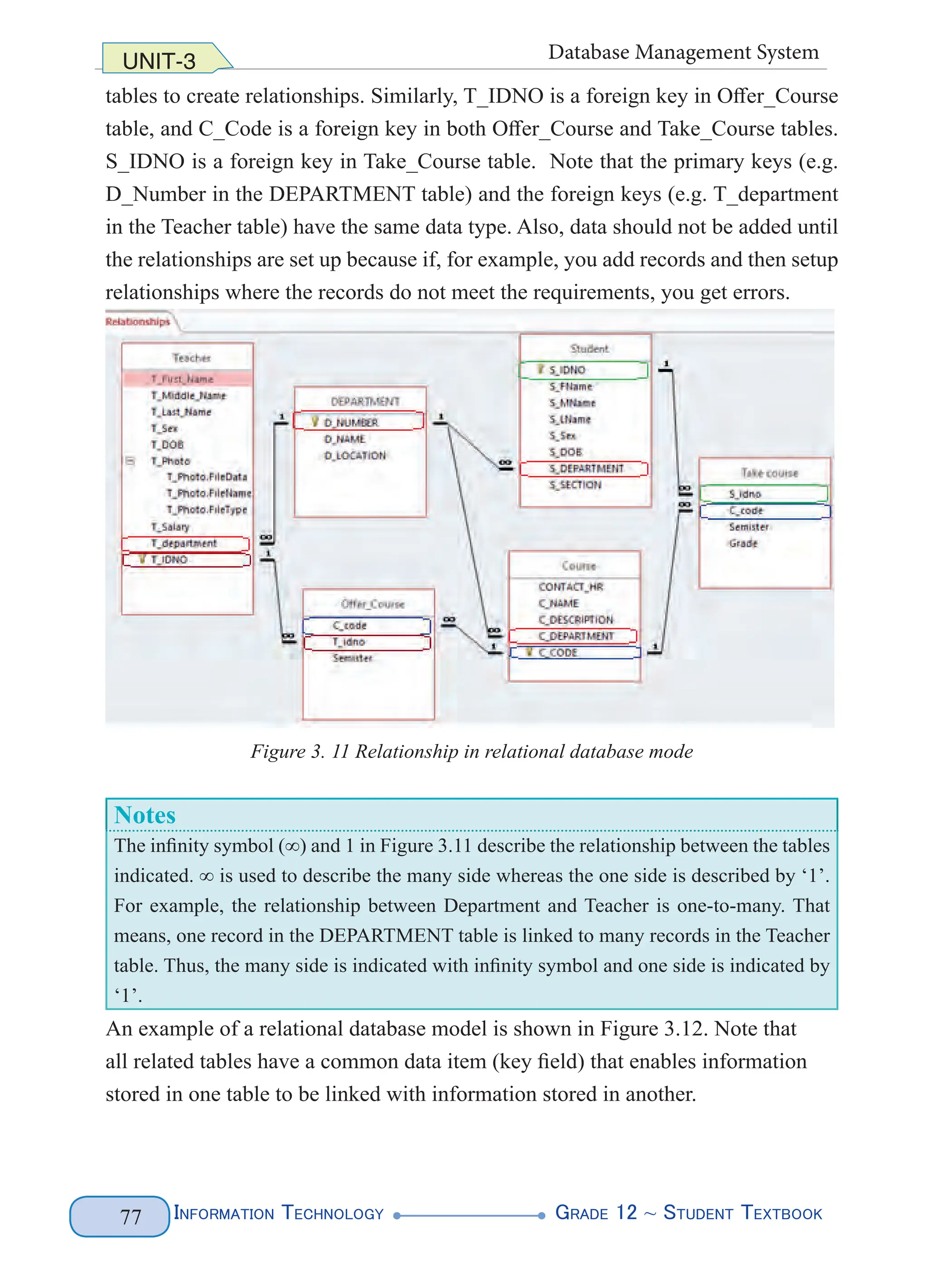
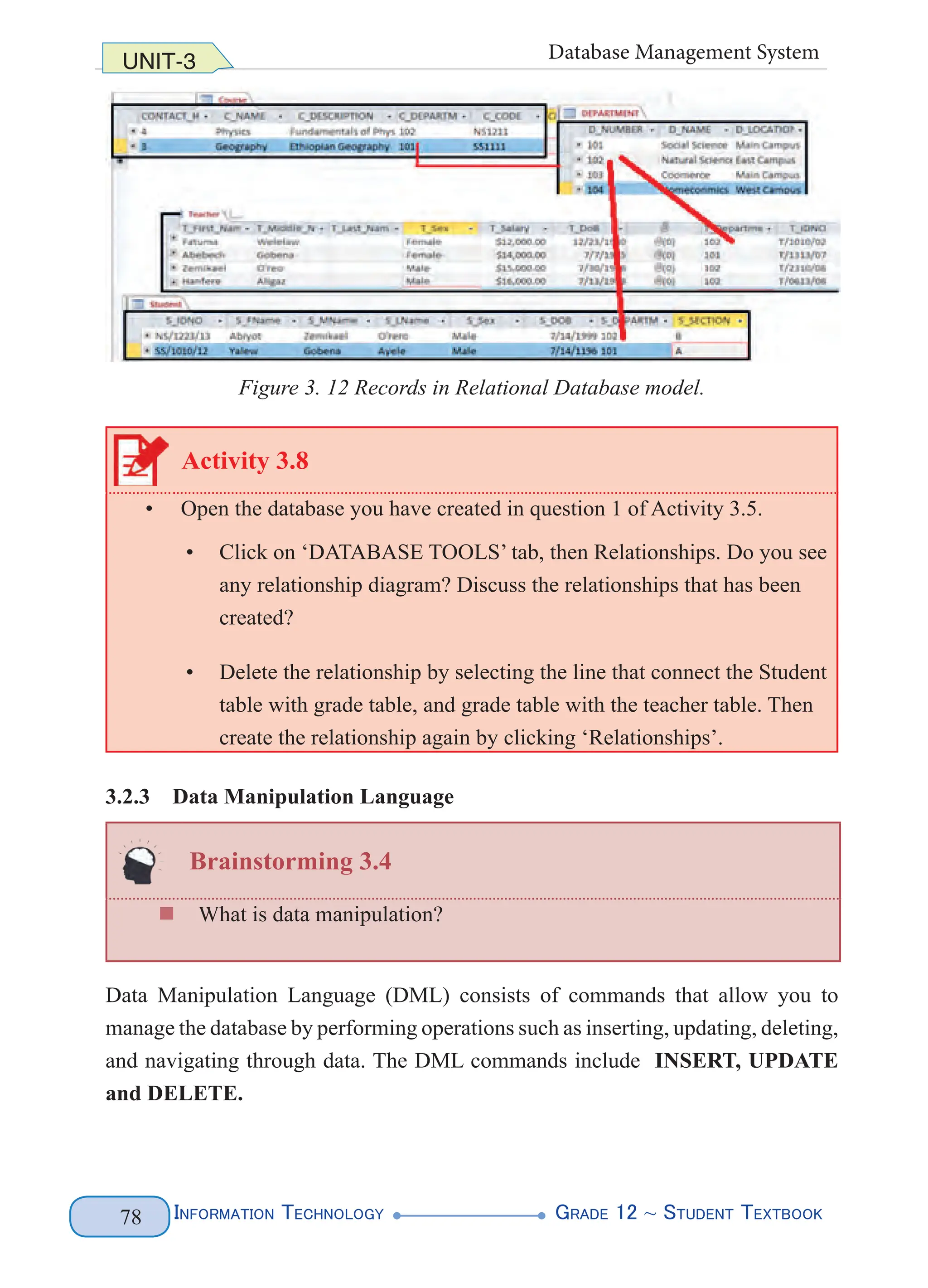
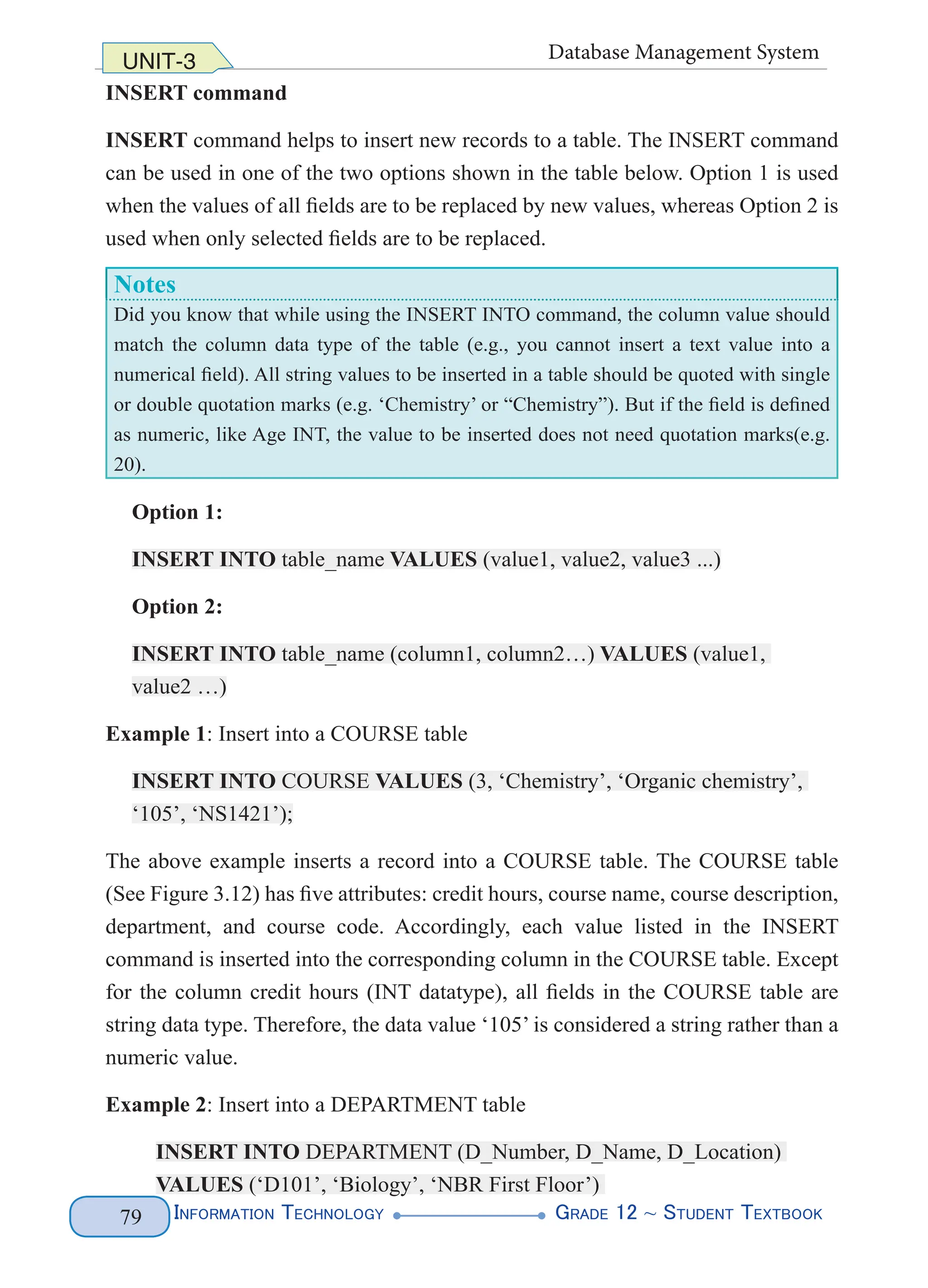


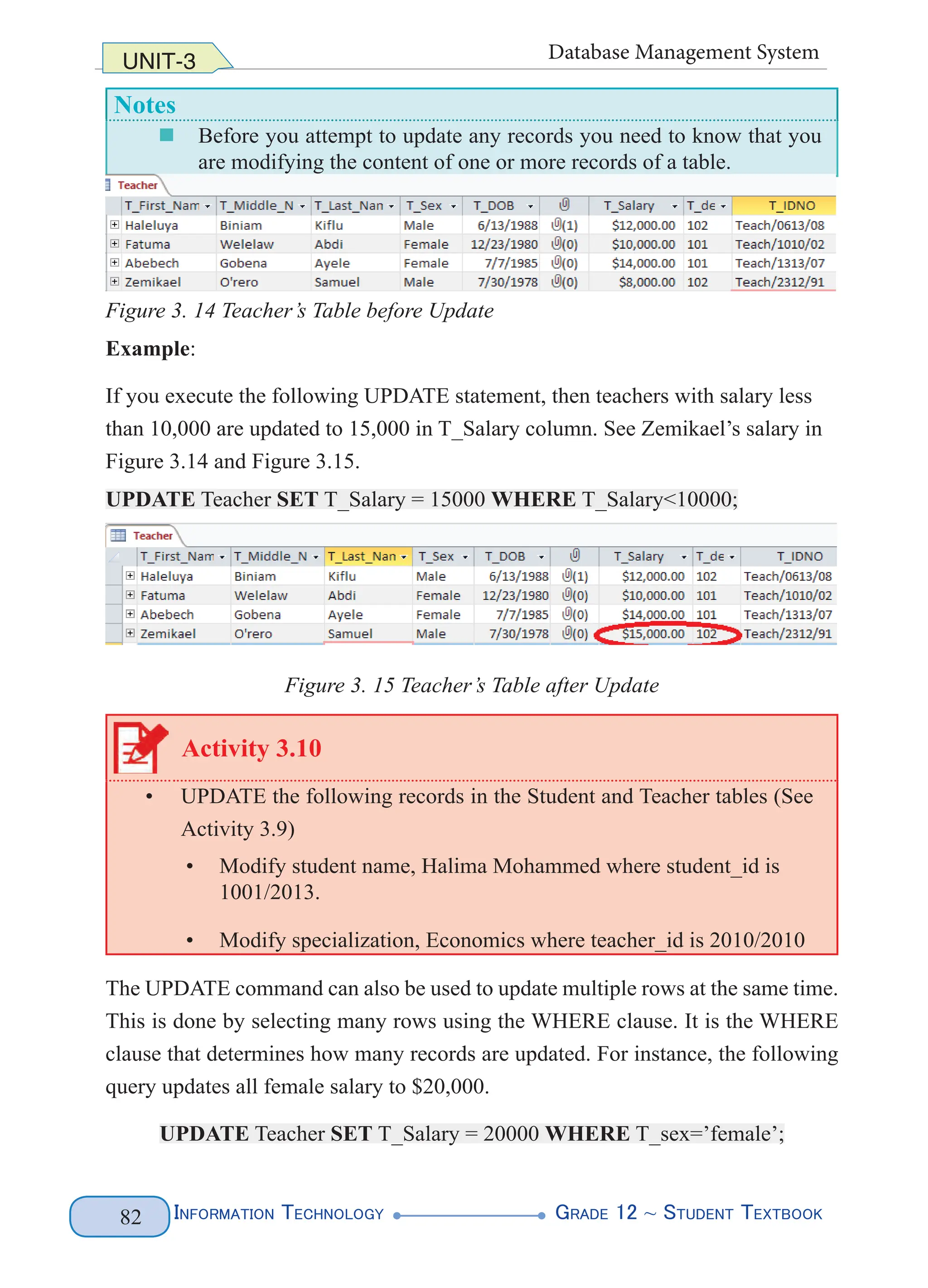


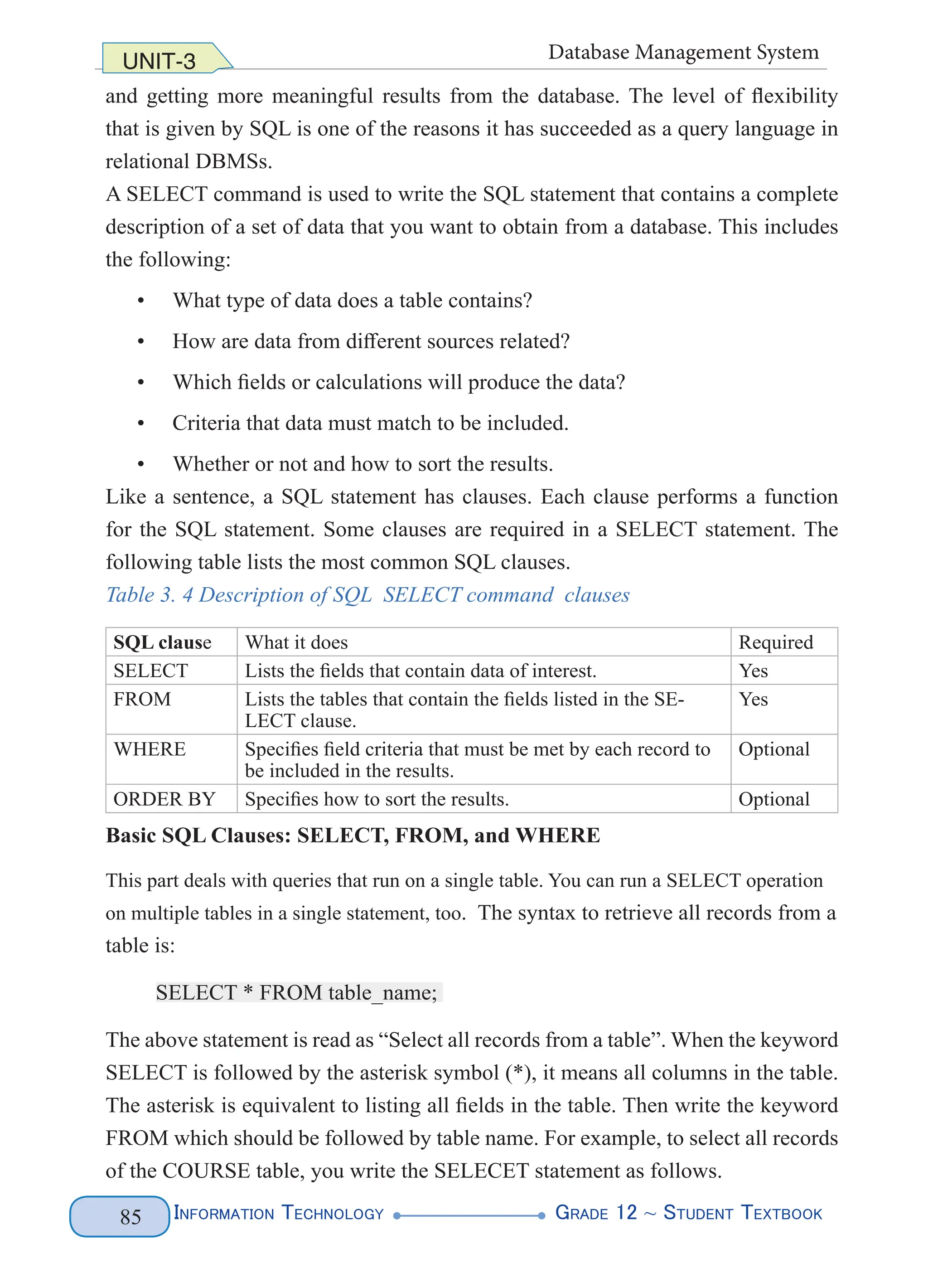
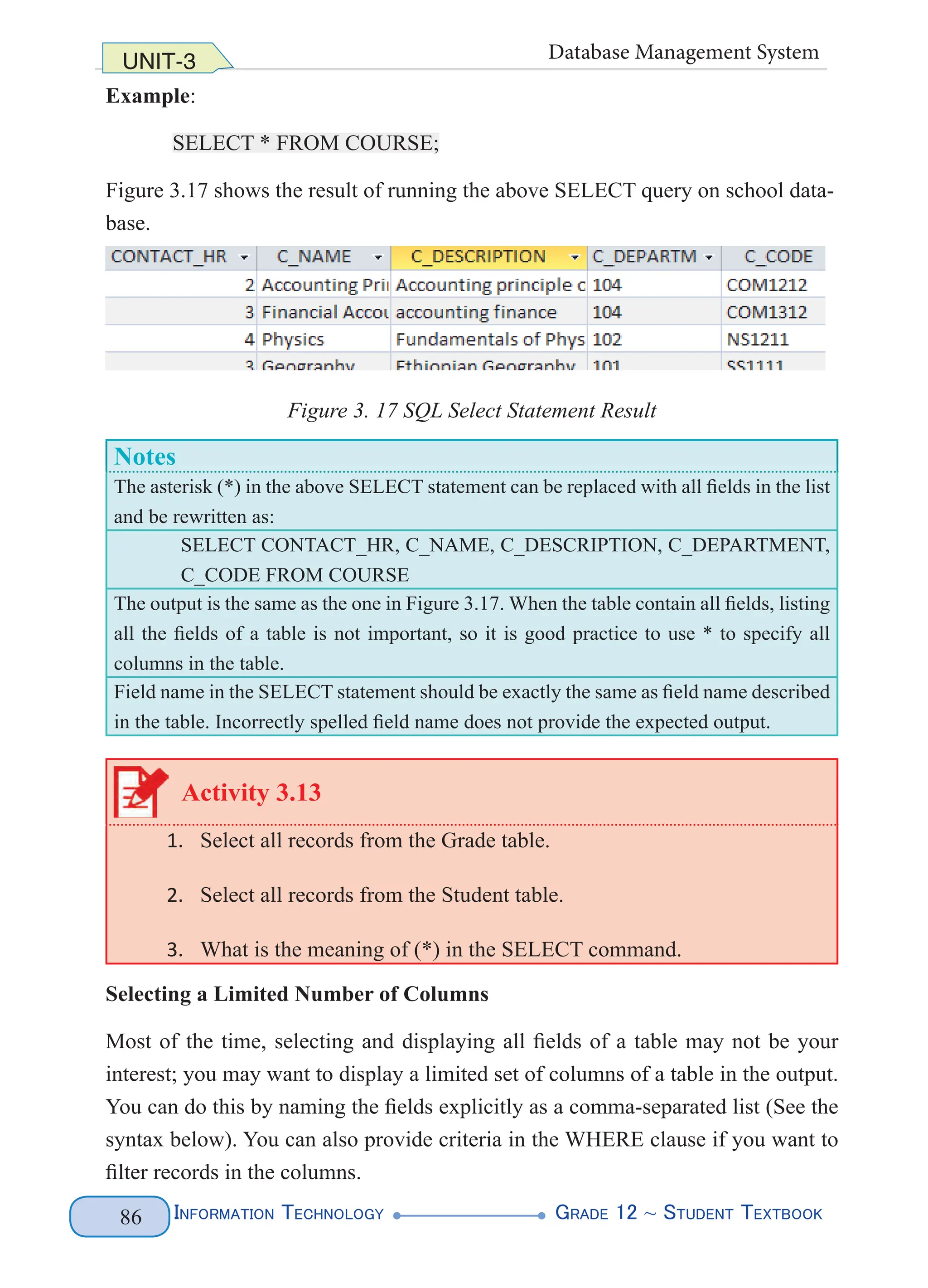
![Information Technology G
rade 12 ~ Student Textbook
87
UNIT-3 Database Management System
A SELECT SQL statement takes the general form as follows:
SELECT field1, [field2]
FROM table
[WHERE criterion];
Notes
[WHERE criterion] is an optional clause. It can be used to filter the output
that is returned by the FROM clause. The keyword WHERE is followed by an
expression that can evaluate to TRUE, FALSE, or UNKNOWN. The expression
can be tested using standard mathematical comparison operators (e.g. =, >, >=, <,
=<, !=), Boolean operators (e.g. !, AND, OR), or special operators.
String literal (e.g. male) is a sequence of characters enclosed in single quotation
marks (‘male’). Sometime you may probably find using double quotation marks
to enclose string, but the SQL Standard defined to use is single quotation marks.
Example:
The following SELECT query retrieves full name of male students with their sexes
from the STUDENT table.
SELECT S_Fname, S_MName, S_LName, S_sex
FROM STUDENT
WHERE s_sex = ‘male’;
Figure 3.18 shows the output from the above SELECT query:
Figure 3.18 SQL SELECT with Limited fields - Results from STUDENT Table
Example: WHERE clause - using comparison in DATETIME
To retrieve records where the values are greater than or equal to the comparison
value, retrieve all sales from March 15, 2020 to the present, including sales on that
date.
As can be seen in Figure 3.19 below (all records in the SALES table is shown in the
left, and sales made on and after March 15, 2020 is shown in the right).](https://image.slidesharecdn.com/g12-it-stb-2023-web-240506201855-05da823c/75/G12-IT-this-is-information-technology-text-for-all-94-2048.jpg)
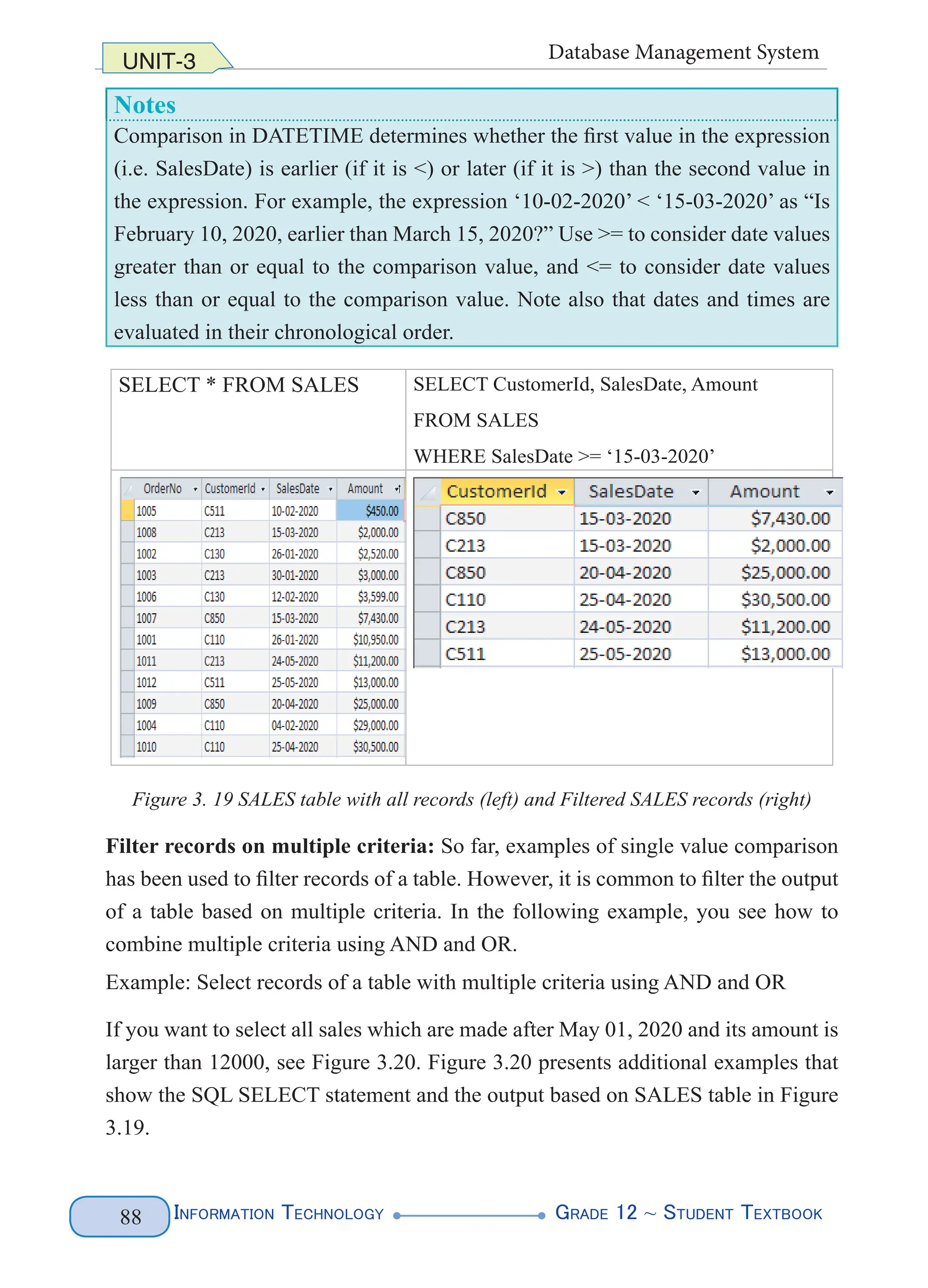
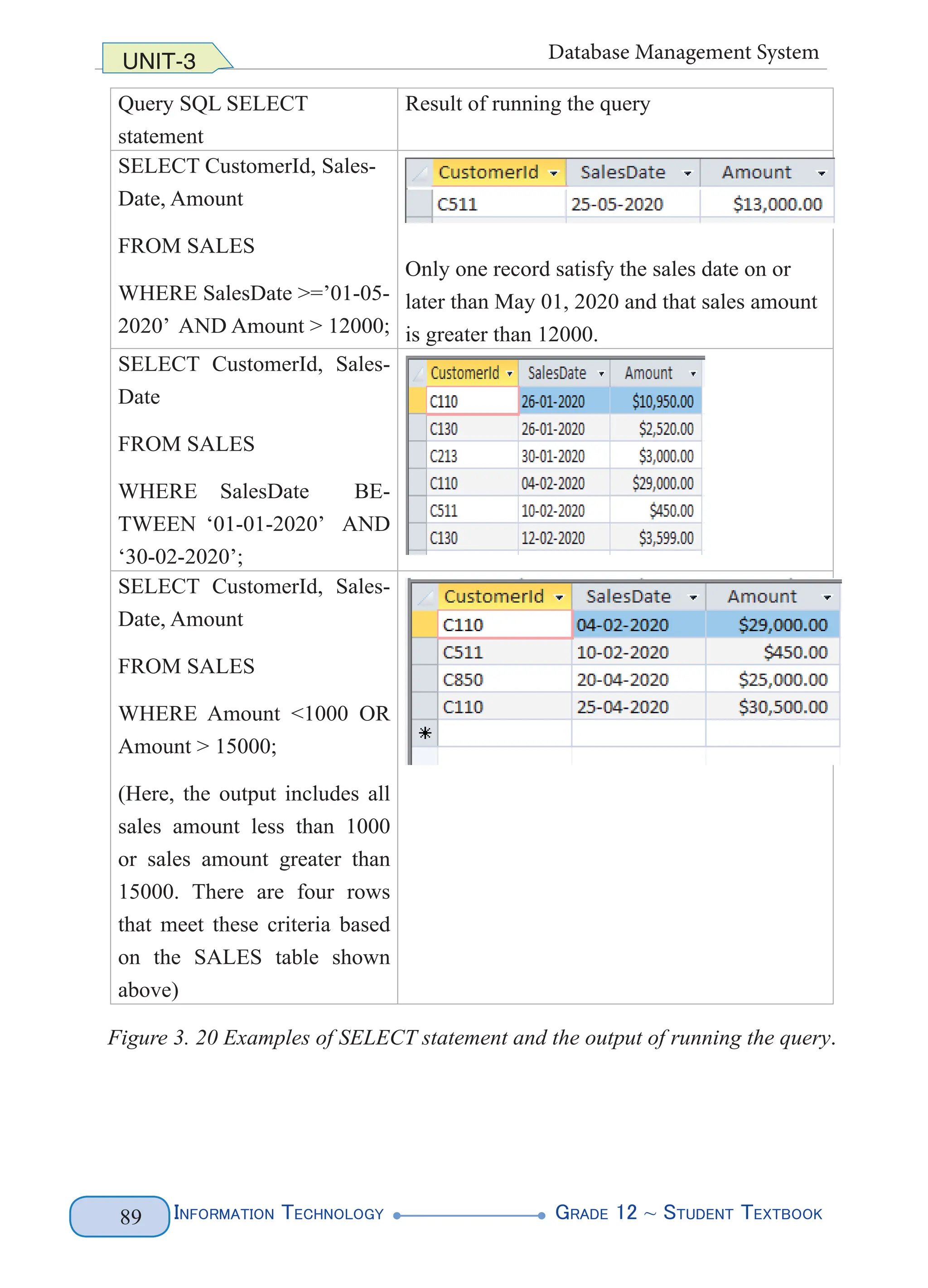
![Information Technology G
rade 12 ~ Student Textbook
90
UNIT-3 Database Management System
Notes
The second example in the above figure (BETWEEN … AND) is an example of a range
condition, which tests the given value (i.e. SalesDate) against range of values defined
by two other values in the expressions (i.e. ‘01-01-2020’ AND ‘30-02-2020’). The
BETWEEN . . .AND defines the range by using the second value in the expression as the
start point (i.e. ‘01-01-2020’) and the third value in the expression as the end point (‘30-
02-2020’). Therefore, both start point and end point are part of the range. Accordingly, a
record is included in the output only if the expression of the first value in the expression
(i.e. SalesDate) falls within the range specified.
Activity 3.14
Please refer to the Student and the Teacher tables that are used in Activity 3.10.
1. Select all students whose marks are above 50. [Hint: marks>50]
2. Select all female teachers. [Hint: sex = ‘F’]
3. Select names of students who are grade 12. [Hint: grade = 12]
SELECT Command ORDER BY Clause
Example: SELECT with ORDER BY clause
SELECT column1, [column2], …
FROM table_name
ORDER BY [column] [ASC][DESC]
You can select records of a table to be ordered in specific field’s category. You can
order using alphabetical or numerical order. In the syntax above the ORDER BY
clause is used to order the output in ascending or descending. The keyword ORDER
BY is followed by the field’s name i.e., [column], which can be used to order the
records in ascending (i.e., if ASC is mentioned or left empty) or descending (i.e., if
DESC is mentioned). ASC stands for ascending and DESC stands for descending.
Ascending is the default order. Writing the query in Figure 3.21 retrieves the full
names of the teachers with their salary in ascending order (See Figure 3.21). T_
Salary is followed by nothing, and the output is that salary is in ascending order
(See table result in Figure 3.22).](https://image.slidesharecdn.com/g12-it-stb-2023-web-240506201855-05da823c/75/G12-IT-this-is-information-technology-text-for-all-97-2048.jpg)
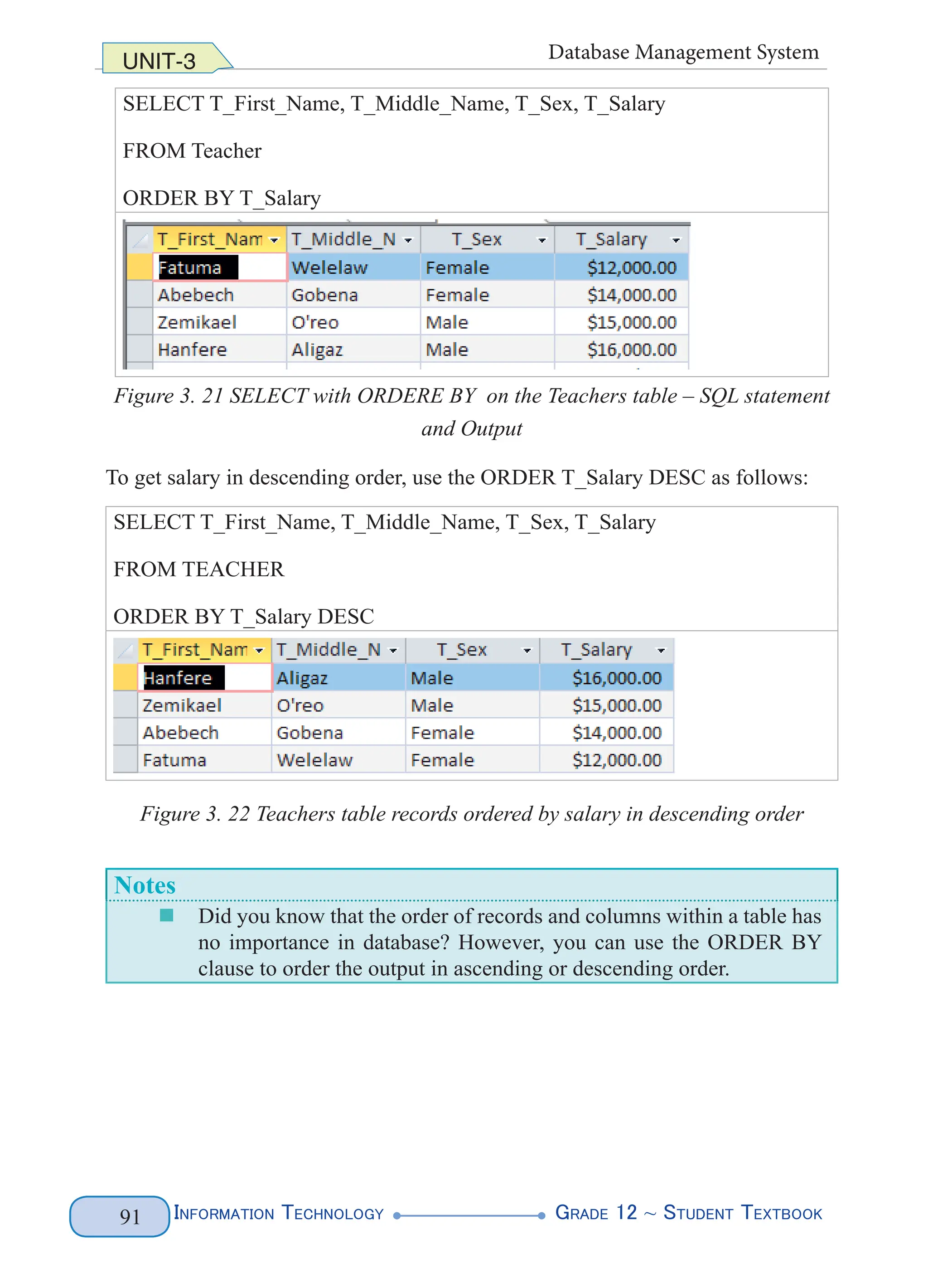
![Information Technology G
rade 12 ~ Student Textbook
92
UNIT-3 Database Management System
Activity 3.15
1. Select all teachers who are specialized in Mathematics and order
them by their names.
2. Select all records in the Teacher table and order them by sex.
3. Perform the following activities based on the table below
• Select patients and order by Temperature in descending order.
• Select patients and order by VisitDate in ascending order.
PatientId VisitDate Physician Temperature BodyPressure
89101 10-06-2021 Amare 38 120/70
89009 13-02-2022 Negesti 37.5 120/70
89203 15-02-2021 Murad 39 150/60
90555 04-10-2021 Azeb 38.5 130/80
89777 29-01-2022 Chala 39 160/70
Selecting records from Two Tables
The SELECT command can be used to select records from two tables. While
selecting records from two tables, the records in the two tables must have some
link; otherwise, the resulting set does not provide relevant information. The general
syntax of the SELECT statement that is to select records from two tables is given
below.
SELECT table1.column1, [table1.column2], table2.column1, [table2.column2]
FROM table1, table2
WHERE table1.column1 = table2.column2
Notes
Unlike the earlier syntax, the column is described along with table that contains
the field. For example, table1.column1, refers to column1 in table1. Describing
column name along with their table is important when you are selecting records
from two tables. This practice avoids naming conflict among similar column
name found in two tables.](https://image.slidesharecdn.com/g12-it-stb-2023-web-240506201855-05da823c/75/G12-IT-this-is-information-technology-text-for-all-99-2048.jpg)
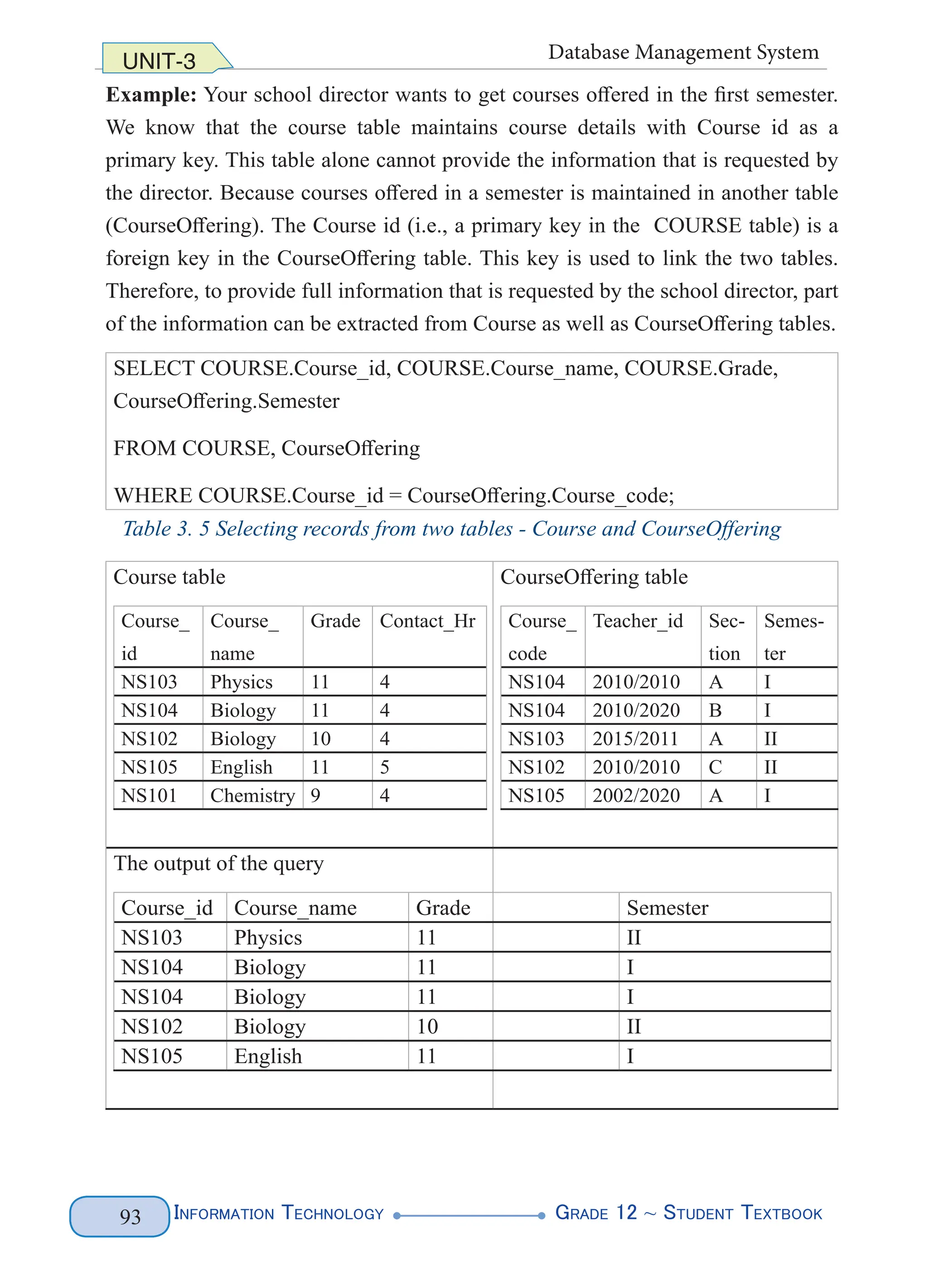
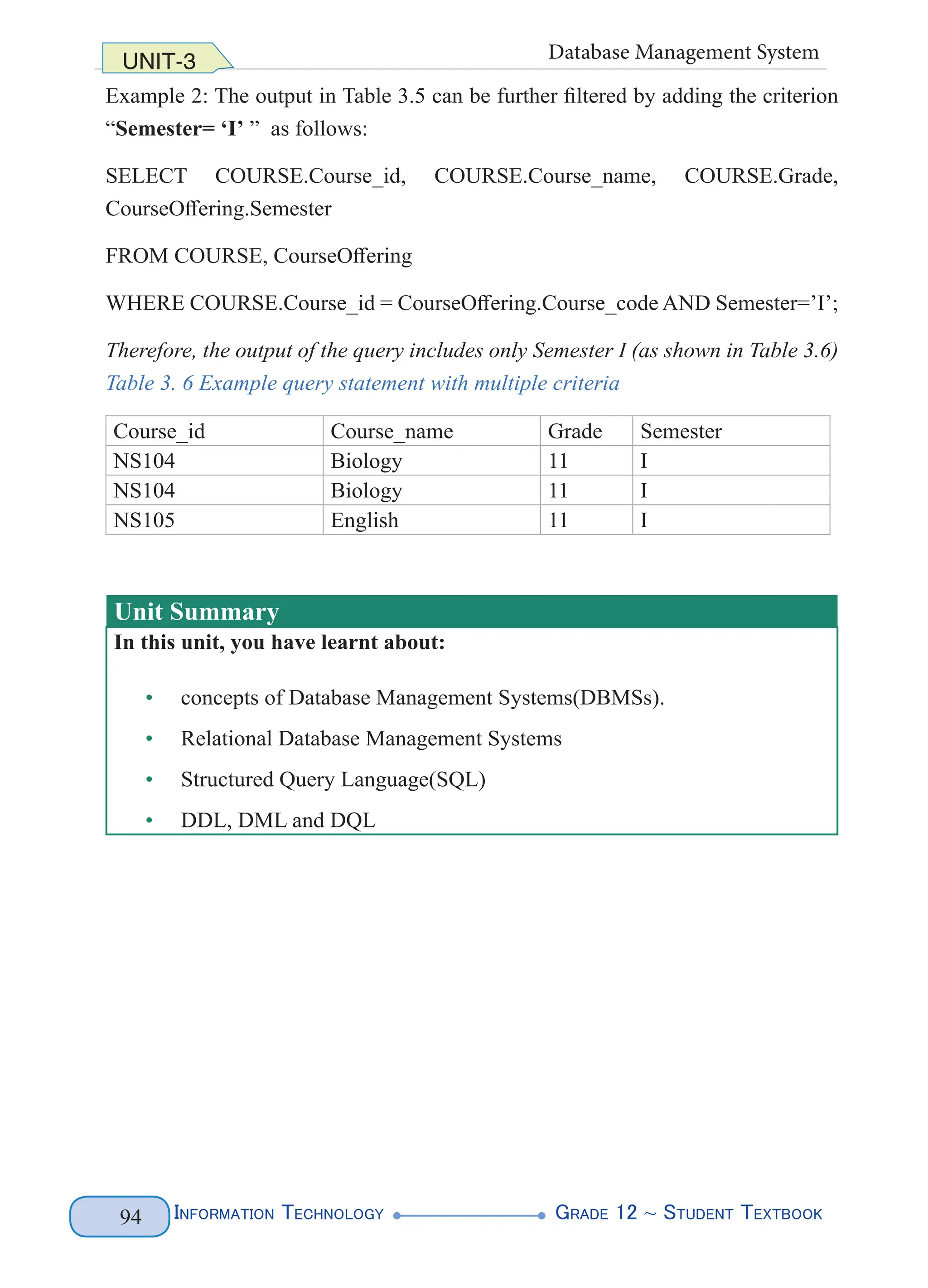

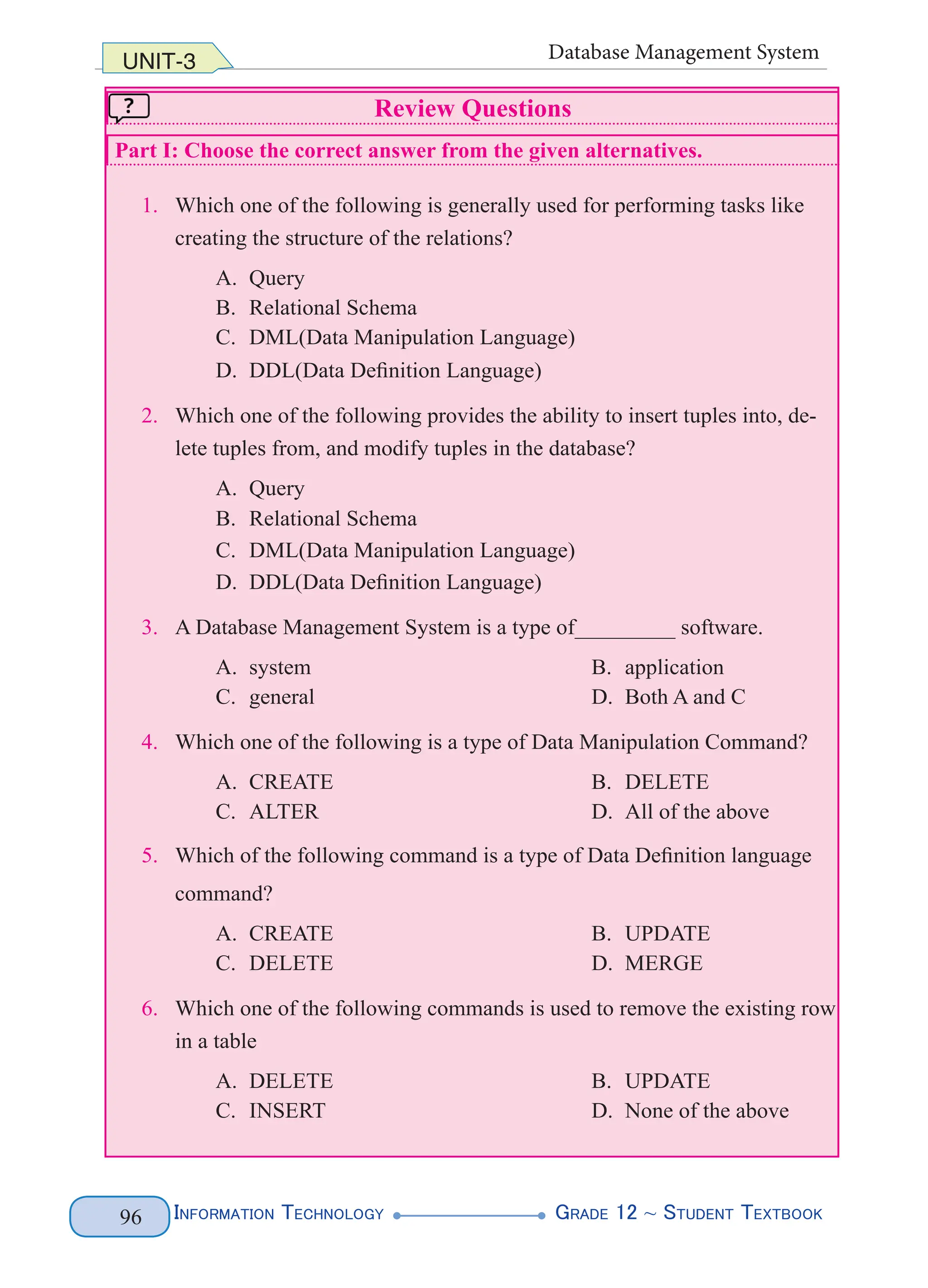

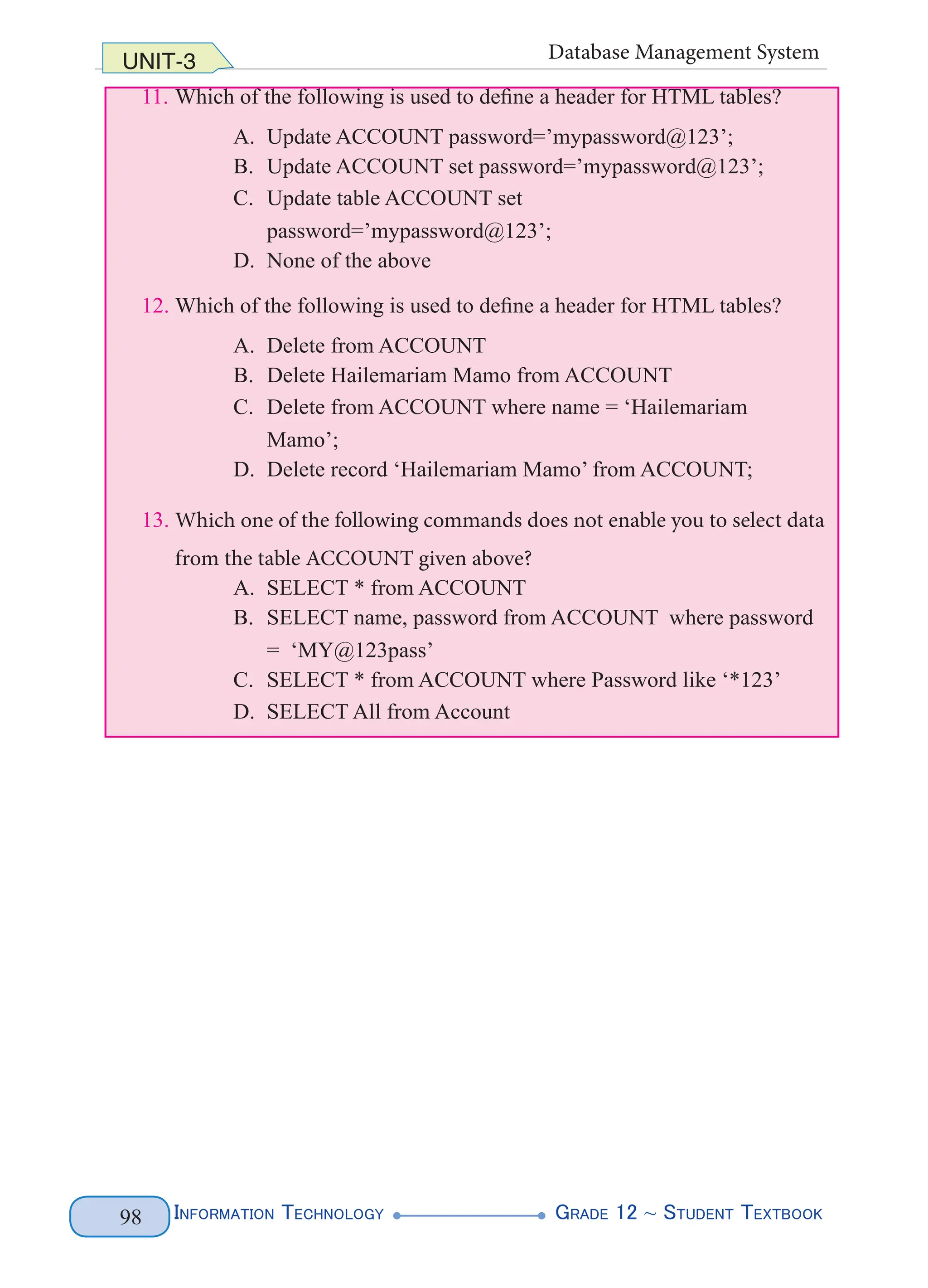
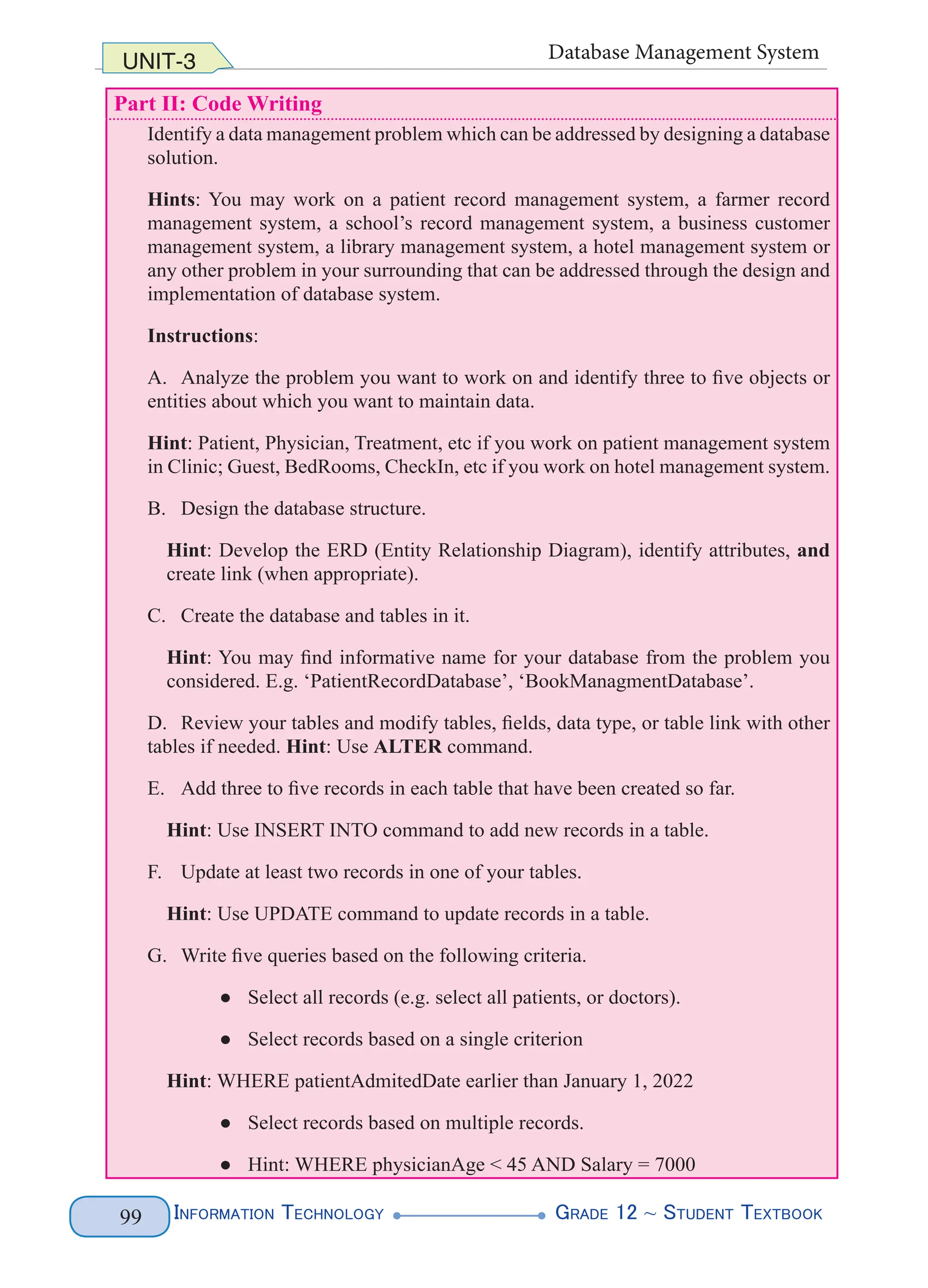
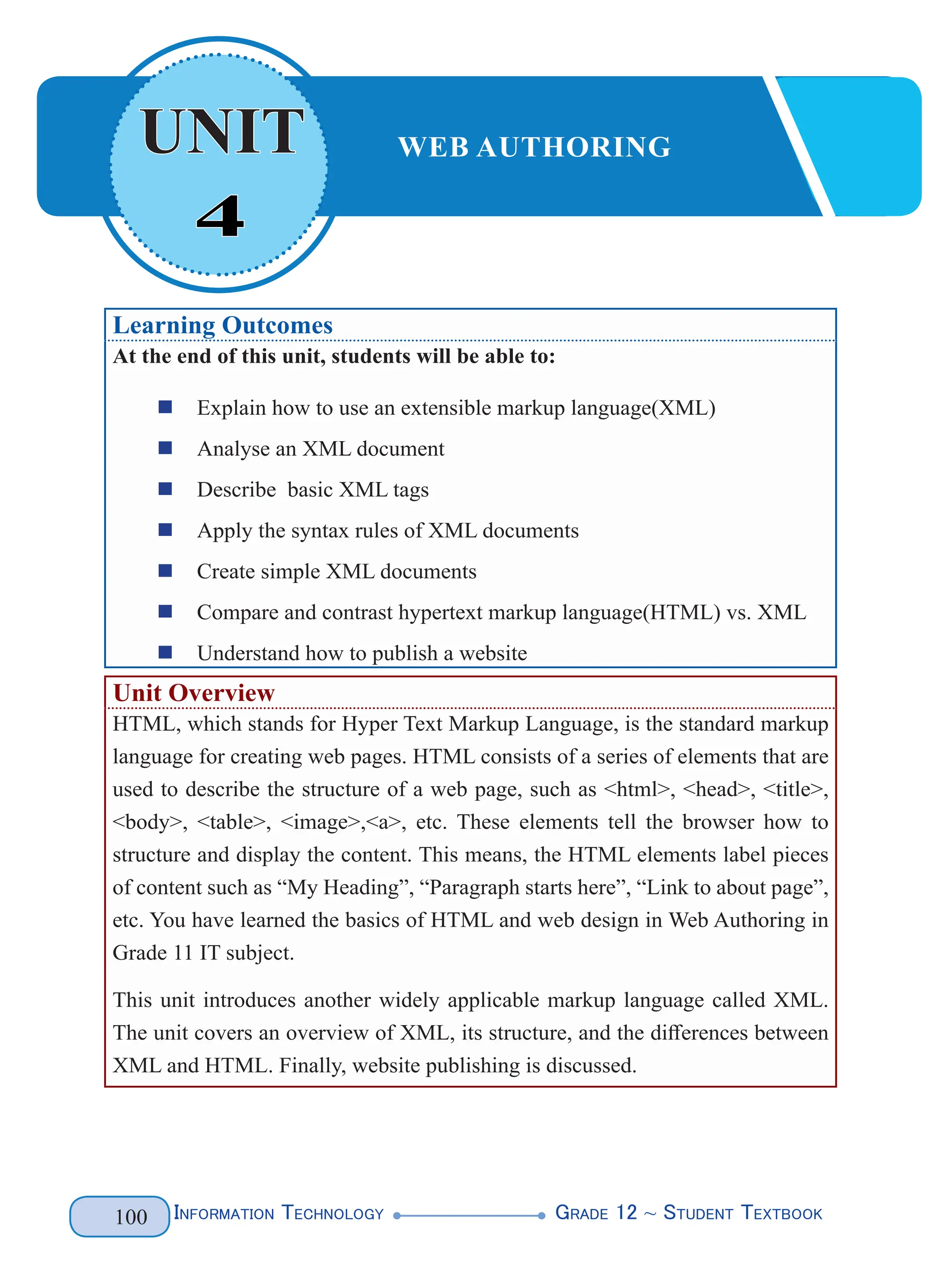

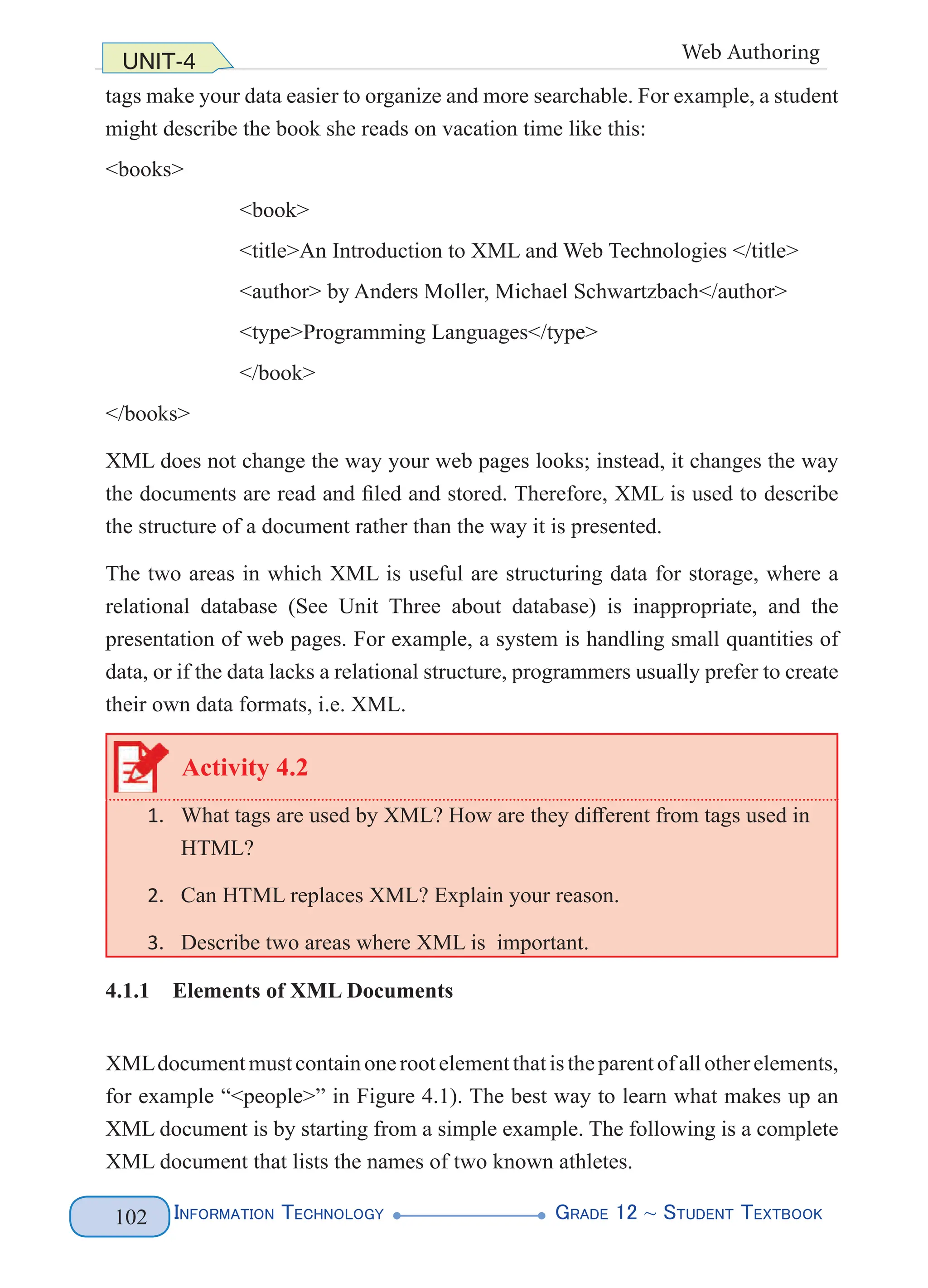
![Information Technology G
rade 12 ~ Student Textbook
103
UNIT-4 Web Authoring
XML document structure Example of an XML document
<?xml version=”1.0” encoding=”UTF-8”?>
<!DOCTYPE people[
<!ELEMENT people (person+)>
<!ELEMENT person (name)>
<!ELEMENT name (first, last)>
<!ELEMENT first (#PCDATA)>
<!ELEMENT last (#PCDATA)>
]>
<people>
<person>
<name>
<first>Haile </first>
<last>Gebrselassie</last>
</name>
</person>
<person>
<name>
<first>Derartu</first>
<last>Tulu</last>
</name>
</person>
</people>
Figure 4. 1 XML Document Structure (left) and Example (right)
The above XML lets you name parts of the document such as the first names and
the last names of two of our legendary athletes. You can name anything that is
relevant to the document you want to produce. All that matters is that you follow
the basic rules for creating tags. The above markup does not follow the basic rules
(predefined tags), rather you define your tags. Figure 4.2 highlights the various
elements of the sample document.](https://image.slidesharecdn.com/g12-it-stb-2023-web-240506201855-05da823c/75/G12-IT-this-is-information-technology-text-for-all-110-2048.jpg)
![Information Technology G
rade 12 ~ Student Textbook
104
UNIT-4 Web Authoring
Figure 4. 2 Various Elements of the XML document
The numbers shown in Figure 4.2 are interpreted as follows:
1. XML declaration: describes the general characteristics of the document,
such as XML document, the version of the XML, and the encoding character
it uses. XML documents usually begin with the XML declaration statement
called the processing instructions which provide information on how the XML
file should be processed. E.g. <?XML version= “1.0” encoding=“UTF-8”?>
The processing instruction statement uses the encoding property to specify
the encoding scheme used to create the XML file. Encoding is the process
of converting Unicode character into their binary equivalent representation
depending on the type of encoding(‘UTF-8’ or ‘UTF-16’).
2. Document Type Declaration (DTD): describes the structure of the document
in terms of which elements it may contain, along with any restrictions it may
have. In other words, it describes the root. The above example is about people.
The document ‘people’ is described with five elements. These are described
below.
E.g. <!DOCTYPE people […]>
3. Internal DTD subset: a DTD is internal if the elements are declared within the
same XML file. In the following example, internal declarations that are local to
the XML document are used.
<!ELEMENT people (person+)>
<!ELEMENT person (name)>
<!ELEMENT name (first, last)>](https://image.slidesharecdn.com/g12-it-stb-2023-web-240506201855-05da823c/75/G12-IT-this-is-information-technology-text-for-all-111-2048.jpg)
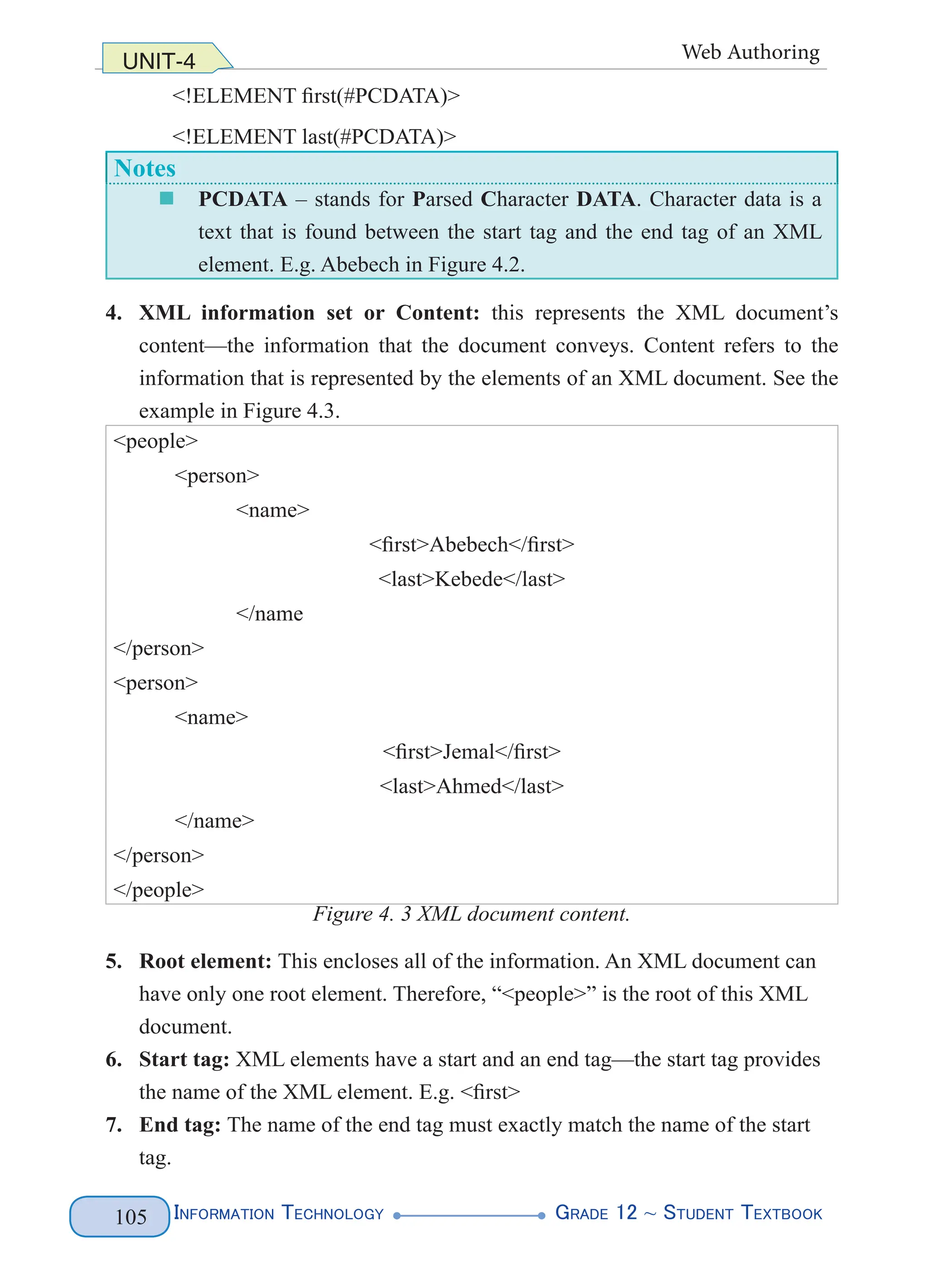
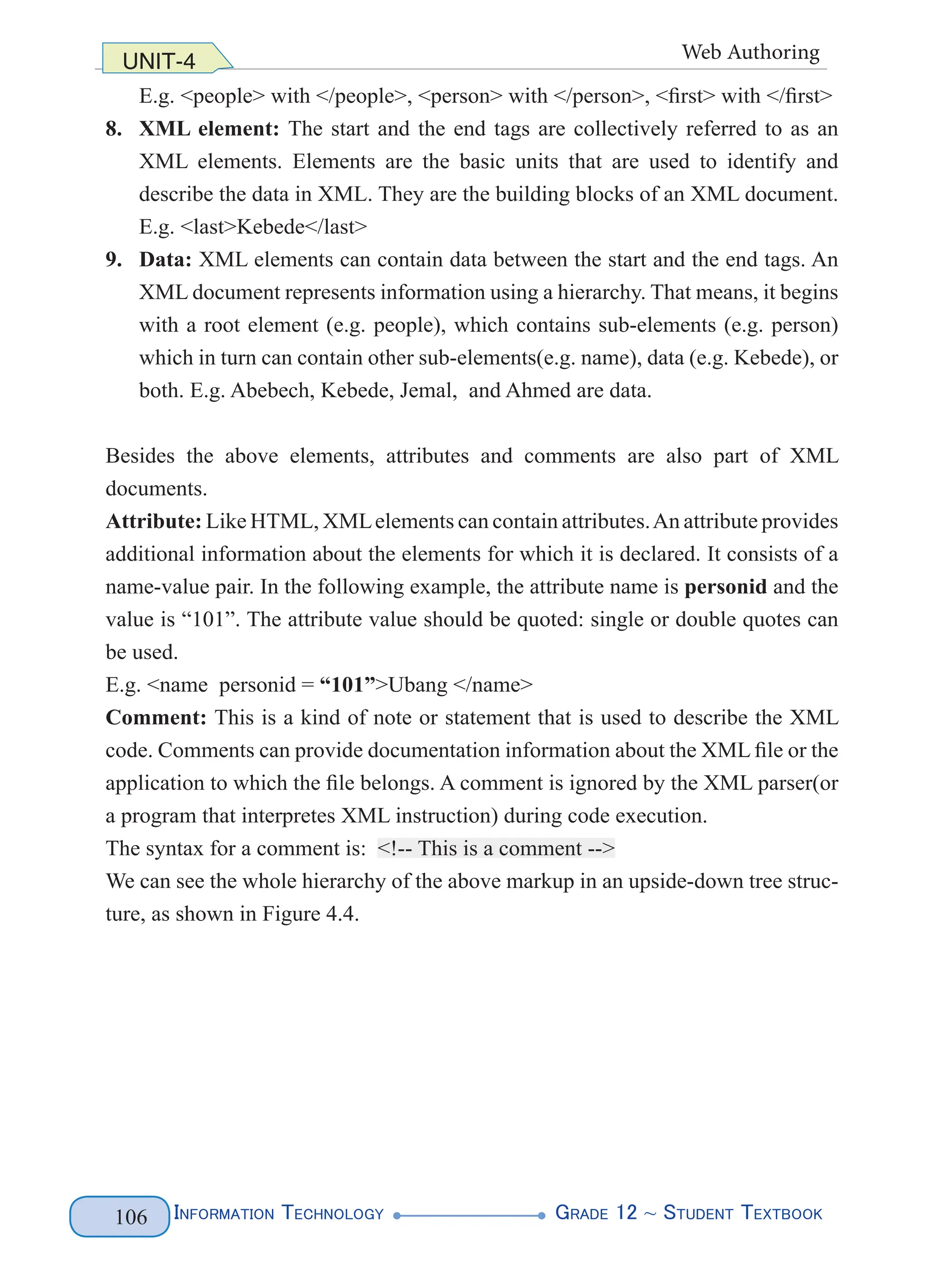
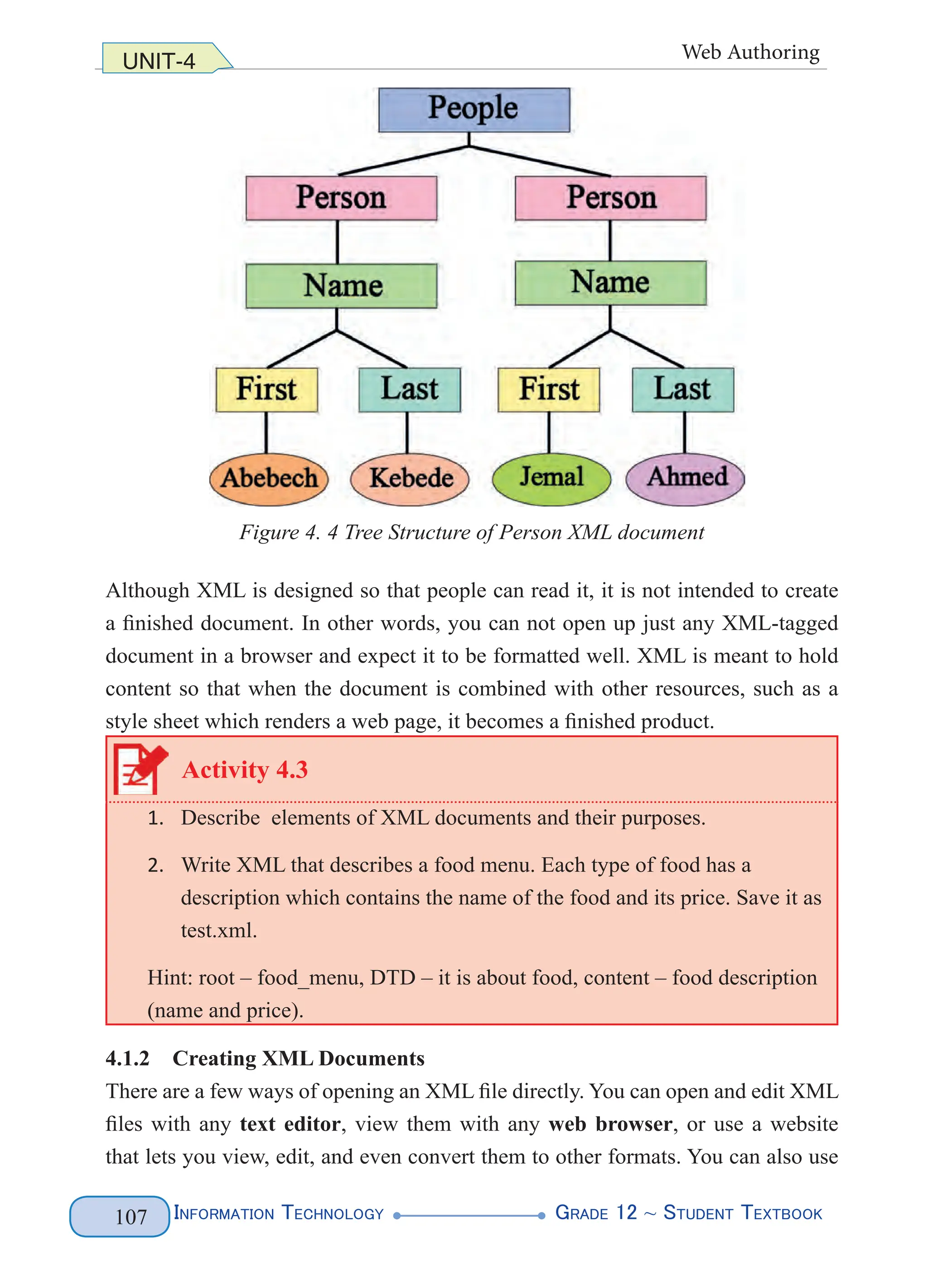
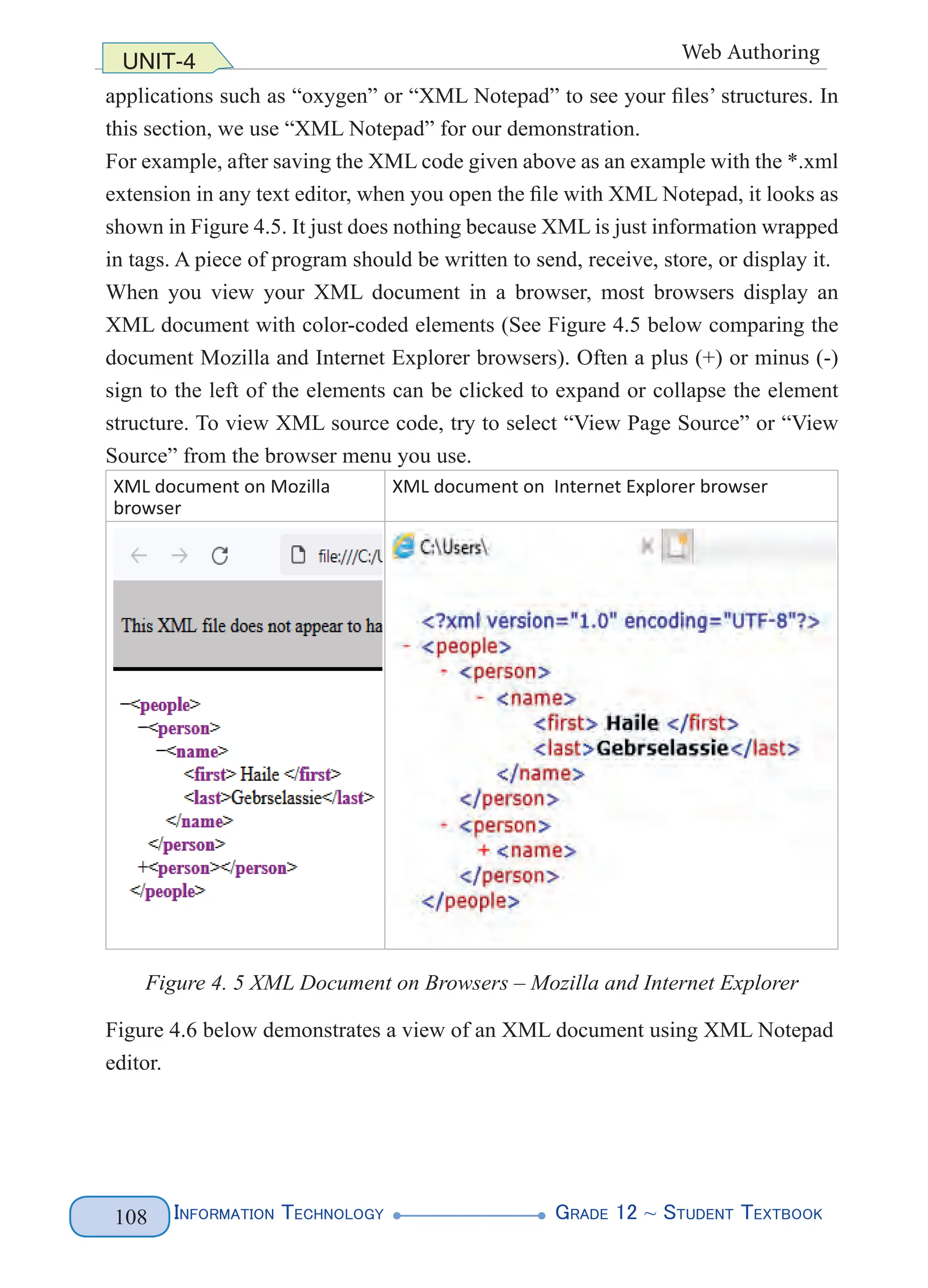
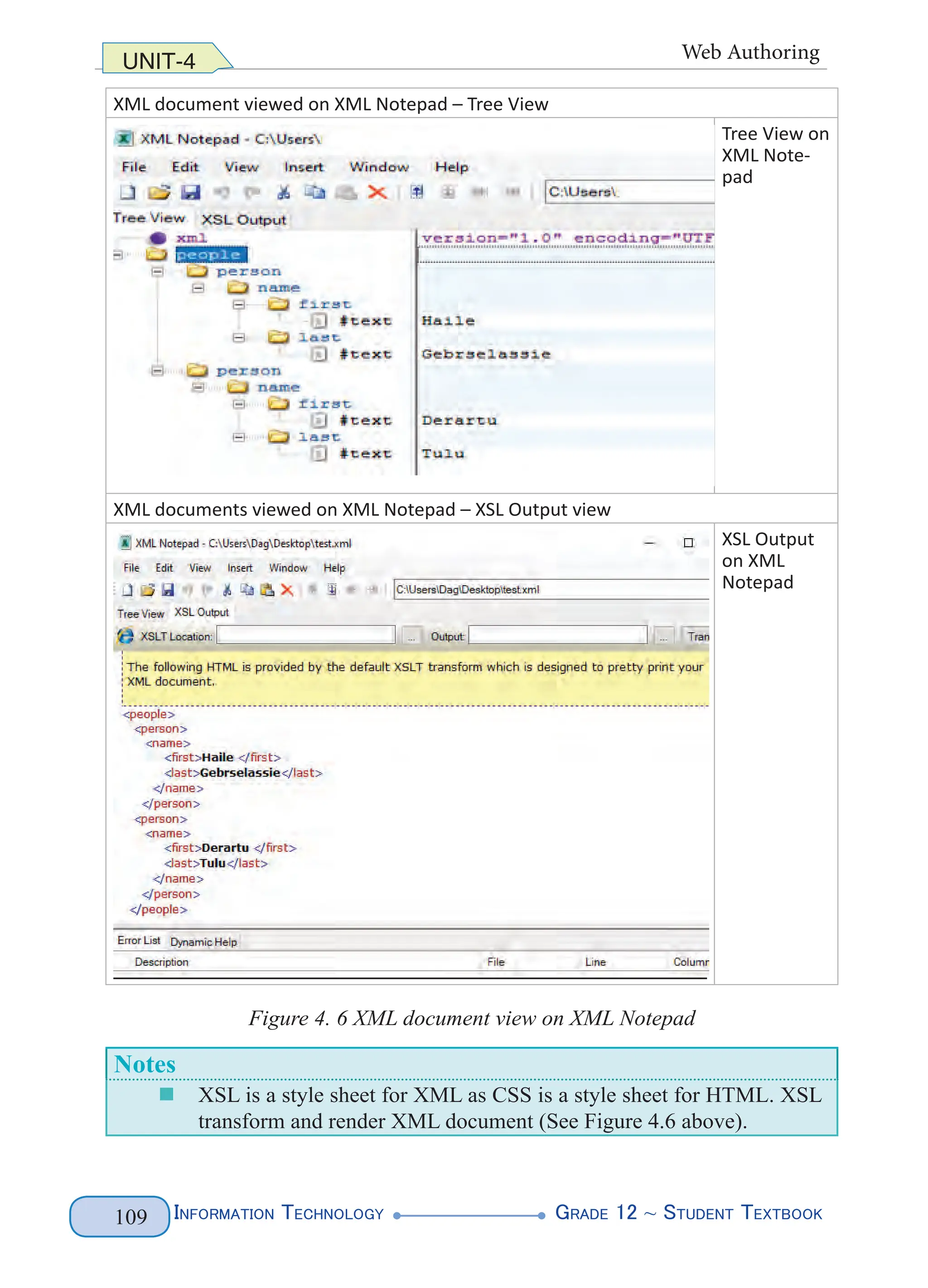
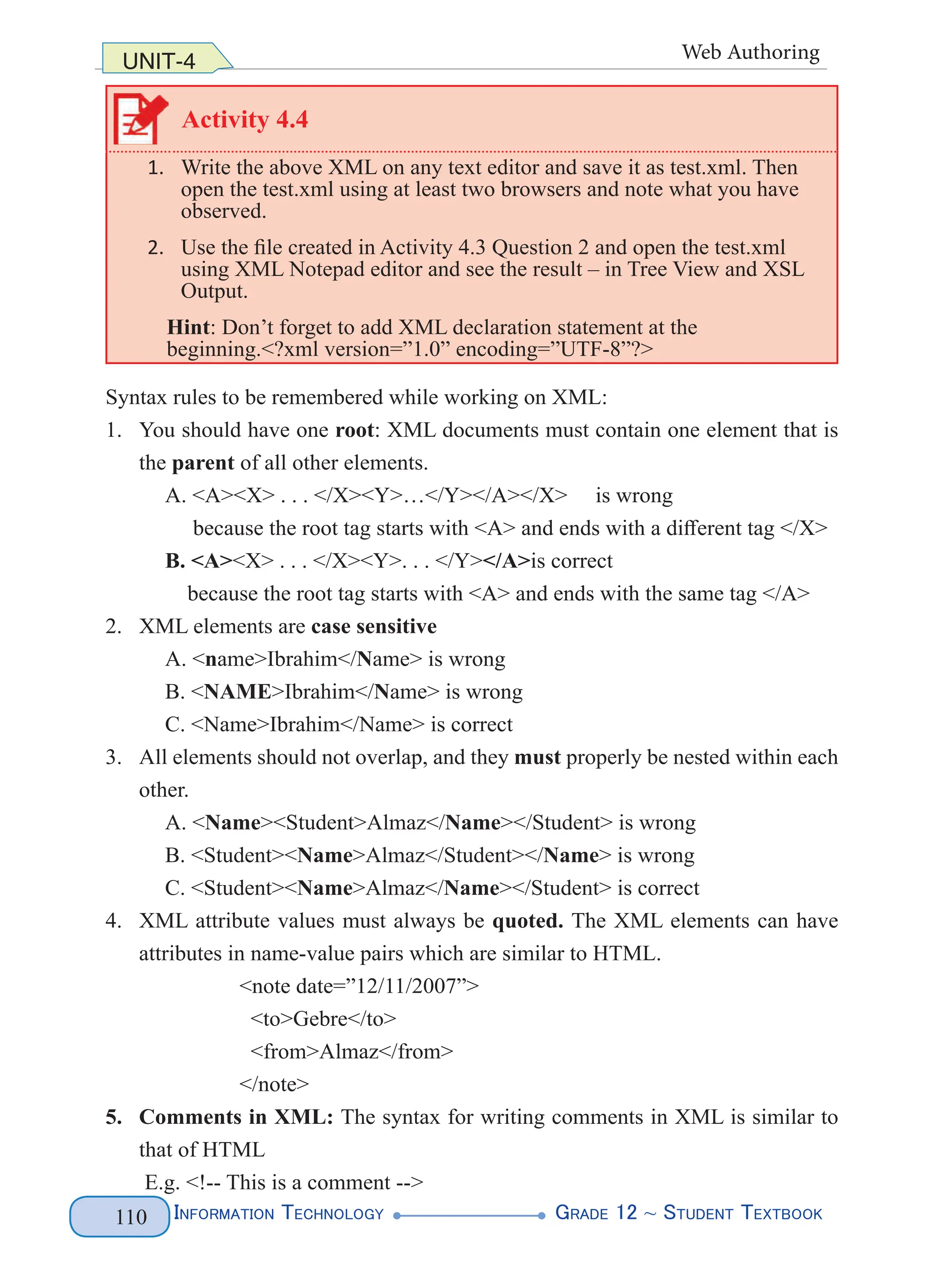
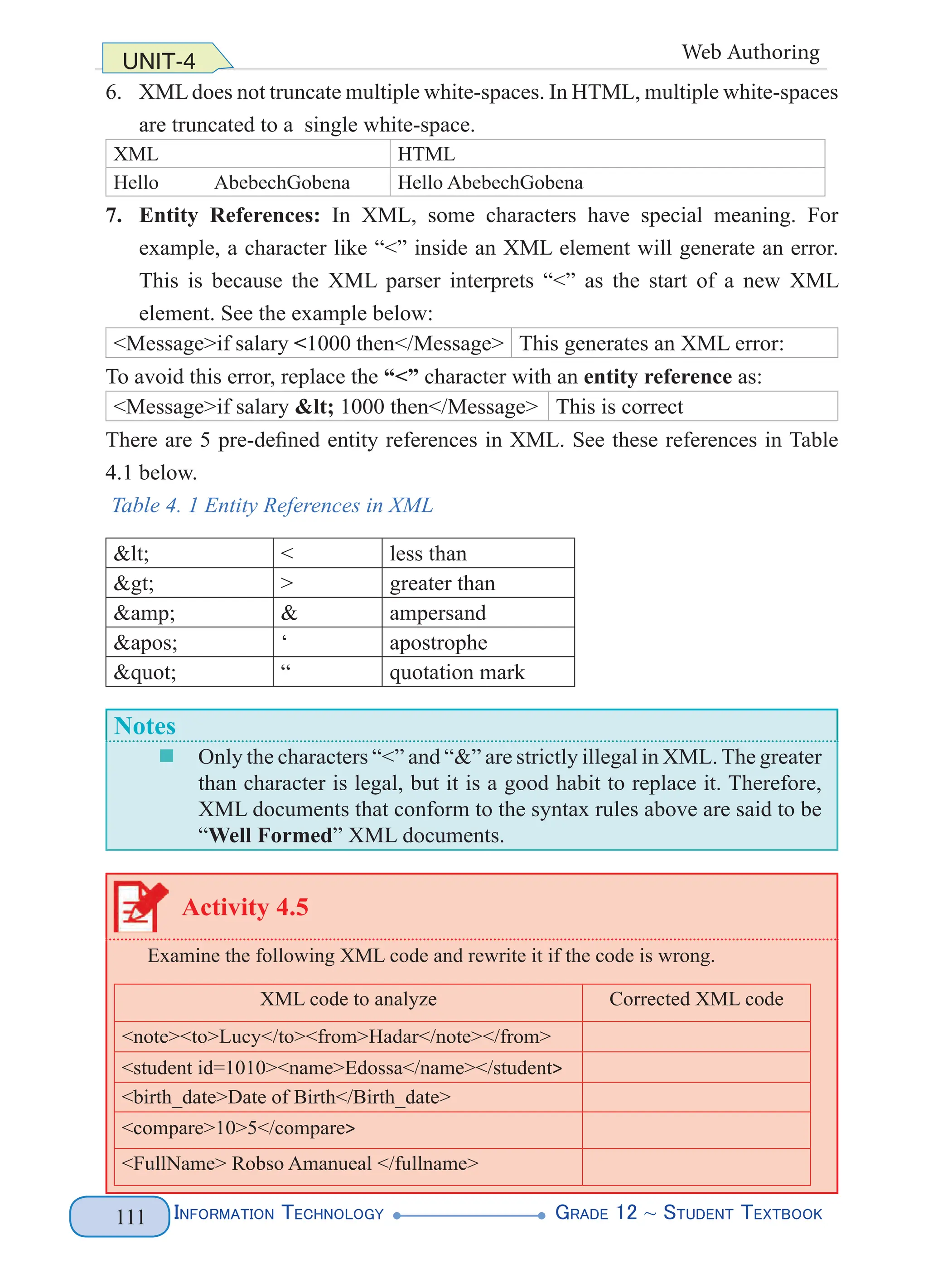
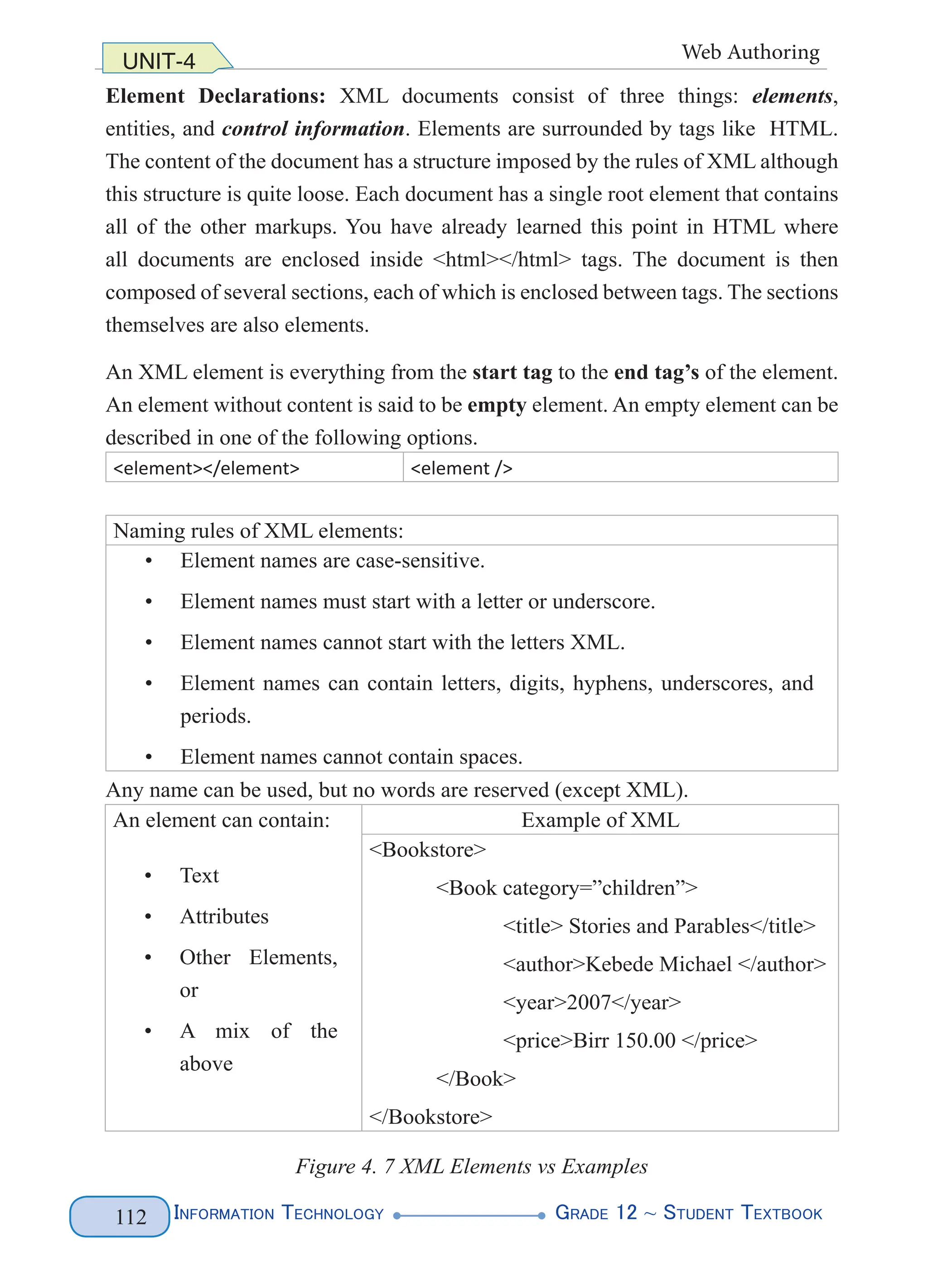
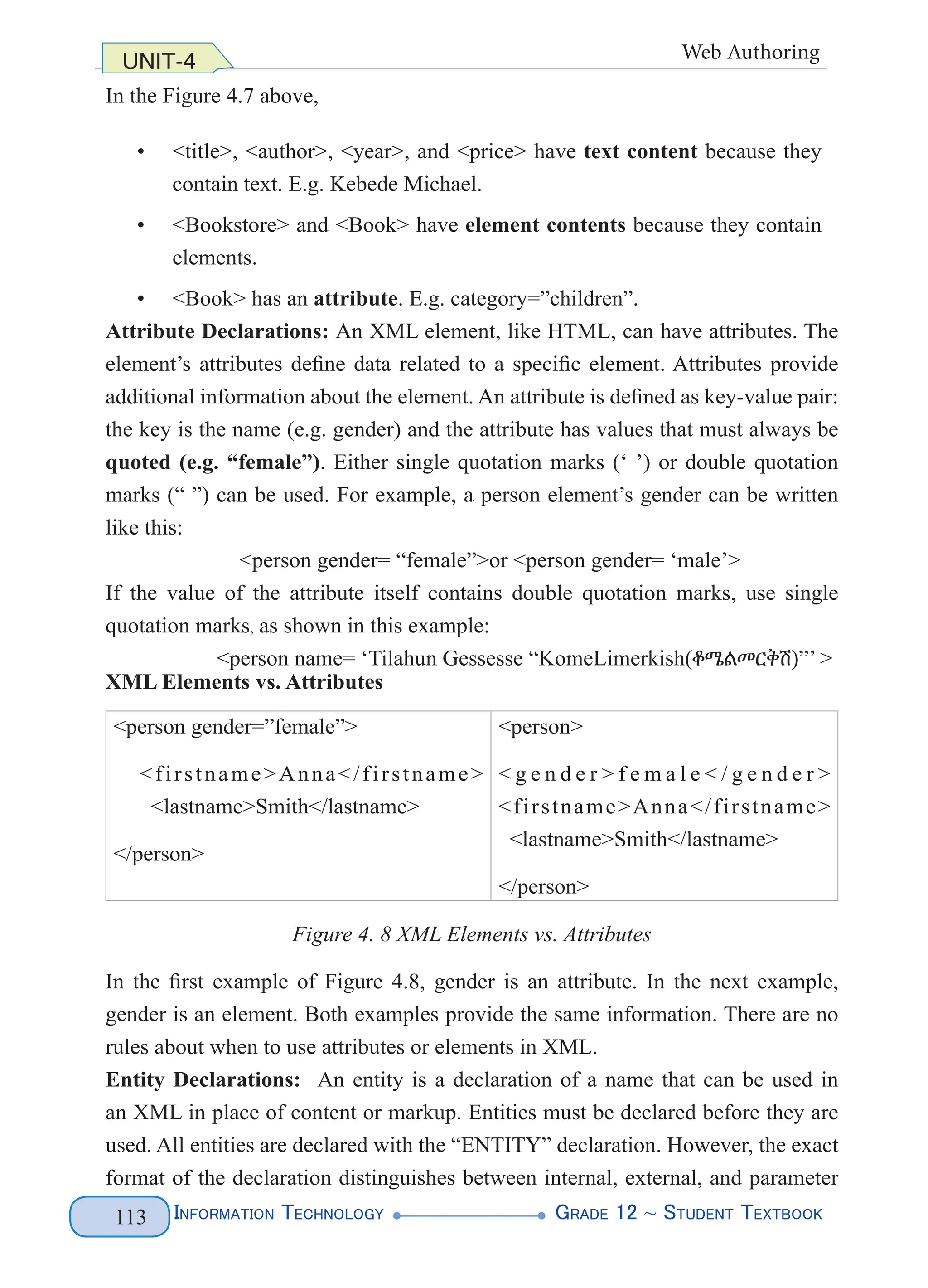
![Information Technology G
rade 12 ~ Student Textbook
114
UNIT-4 Web Authoring
entities. The internal (parsed) entity declaration will be discussed for our purpose.
The purpose of internal parsed entities is generally to refer to text. It refers to data
that an XML processor has to parse.
Syntax for creating entity declaration Example
<!ENTITY name “value”> <!ENTITY publisher “Berhanena Selam Printing”>
Figure 4. 9 Entity Declaration
There are two parts to entities. The first is an entity declaration of a name that tie the
replacement content. The above example declares an entity of the name ‘publisher’.
The name ‘publisher’is associated with the content of “Berhanena Selam Printing”.
The second is using the name defined in the entity declaration subsequently in the
XML as shown below. When the entity name is used in XML, it is called an entity
reference.
<author>Addis Alemayehu</author>
<pubinfo>Published by &publisher;</pubinfo>
When the parser subsequently encounters an ampersand symbol (i.e. &) and
semicolon (i.e. ;) which identify a general entity reference, the parser looks
up that name in an entity declaration table (See Figure 4.9). In our case, the
reference, &publisher; is replaced by the content that it represents. Using the
following (left column) XML, expanding the entity reference, and replacing the
&publisher; with the “Berhanena Selam Printing” content gives the following
expanded XML.
XML document with internal DTD
<<?xml version=”1.0”?>
<!DOCTYPE book [
<!ENTITY publisher “Berhanena Selam Printing”>
]>
<book>
<author>Addis Alemayehu</author>
<pubinfo>Published by &publisher;</pubinfo>
</book>](https://image.slidesharecdn.com/g12-it-stb-2023-web-240506201855-05da823c/75/G12-IT-this-is-information-technology-text-for-all-121-2048.jpg)
![Information Technology G
rade 12 ~ Student Textbook
115
UNIT-4 Web Authoring
Output on browser
Figure 4. 10 XML Document with DTD and Output on Browser
Document Type Definition (DTD)
A Document Type Definition (DTD) defines the structure attributes of a document
and the legal elements of an XML document. It can be used by an application
to verify that XML data is valid. A DTD declared inside the XML file must be
wrapped inside the <!DOCTYPE> definition. See Figure 4.11 below.
Example of an XML document with internal DTD
<?xml version=”1.0”?>
<!DOCTYPE album [
<!ELEMENT album (singer, name, release, language)>
<!ELEMENT singer (#PCDATA)>
<!ELEMENT name (#PCDATA)>
<!ELEMENT release (#PCDATA)>
<!ELEMENT language (#PCDATA)>
]>
<album>
<singer>Ali Birra</singer>
<name>Ammalele</name>
<release>2012</release>
<language>Oromiffa</language>
</album>](https://image.slidesharecdn.com/g12-it-stb-2023-web-240506201855-05da823c/75/G12-IT-this-is-information-technology-text-for-all-122-2048.jpg)
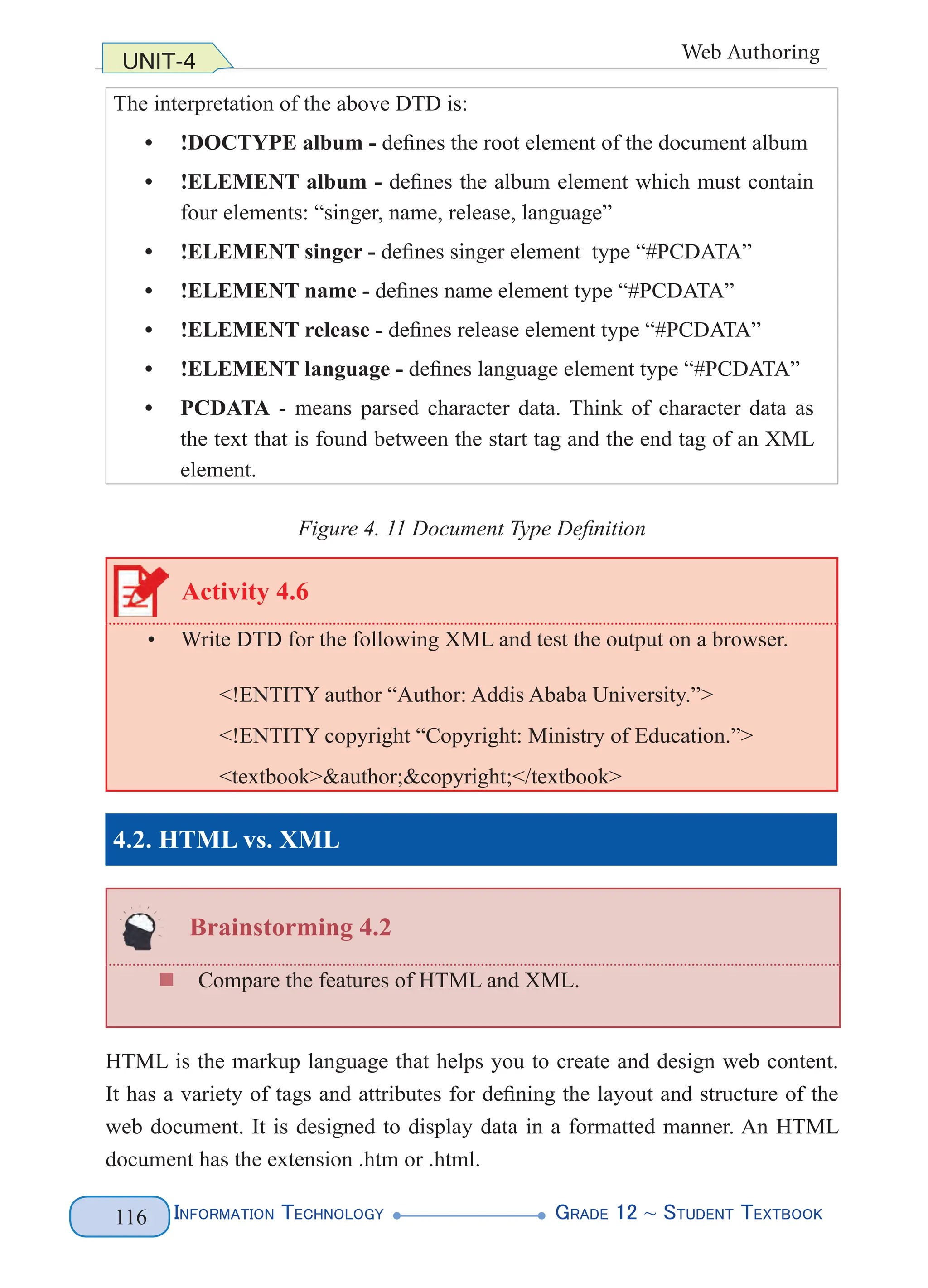
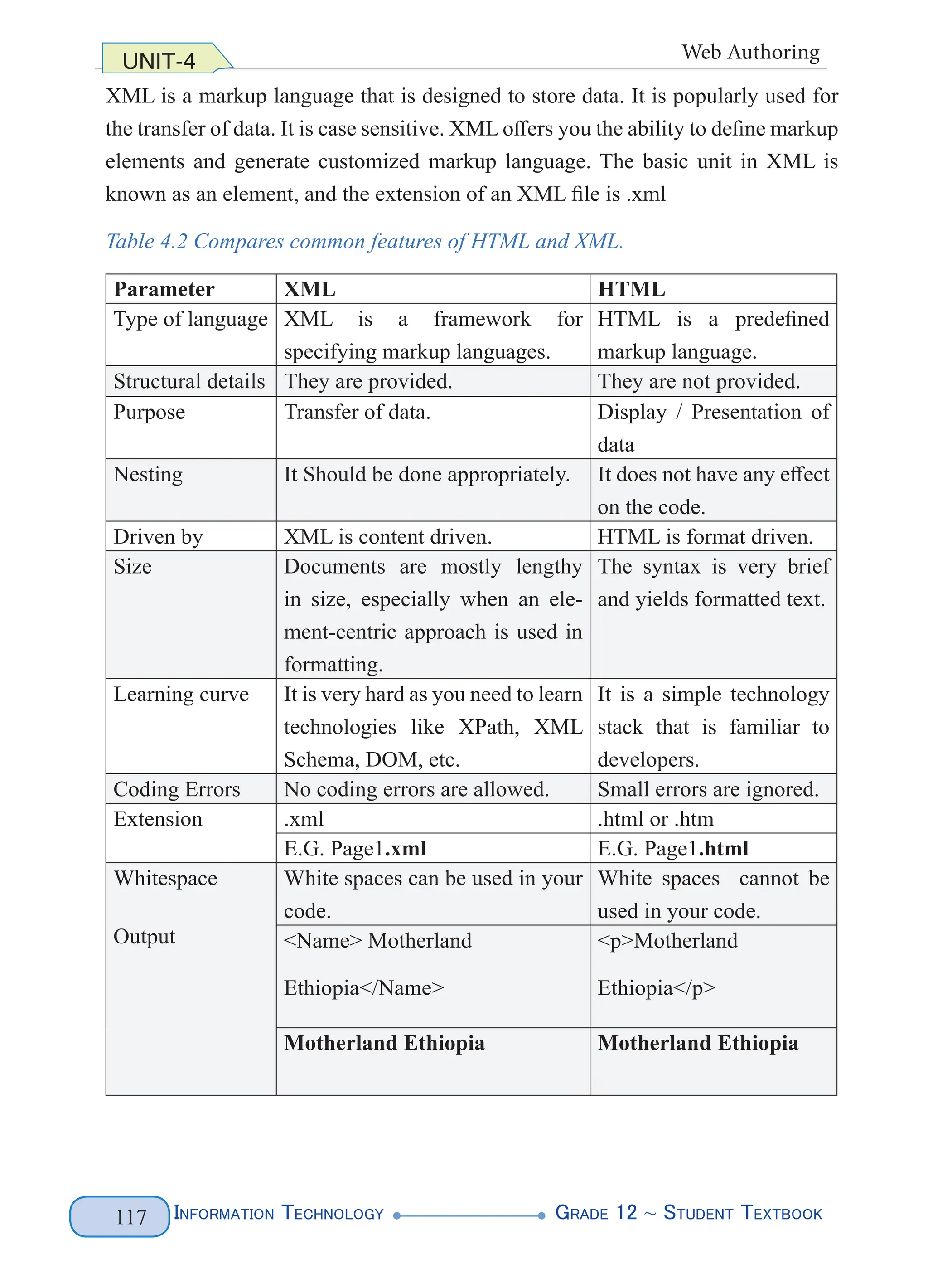
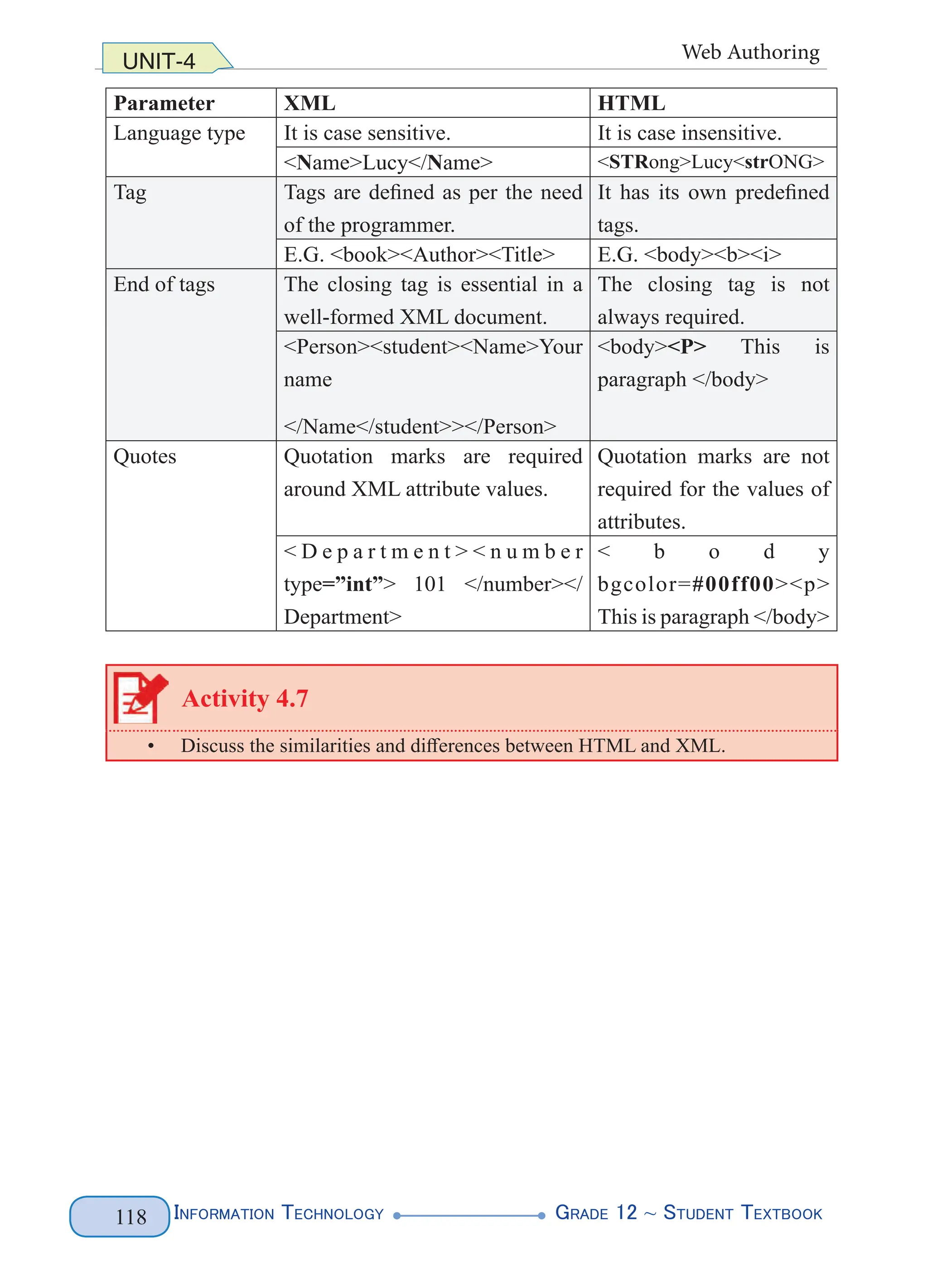
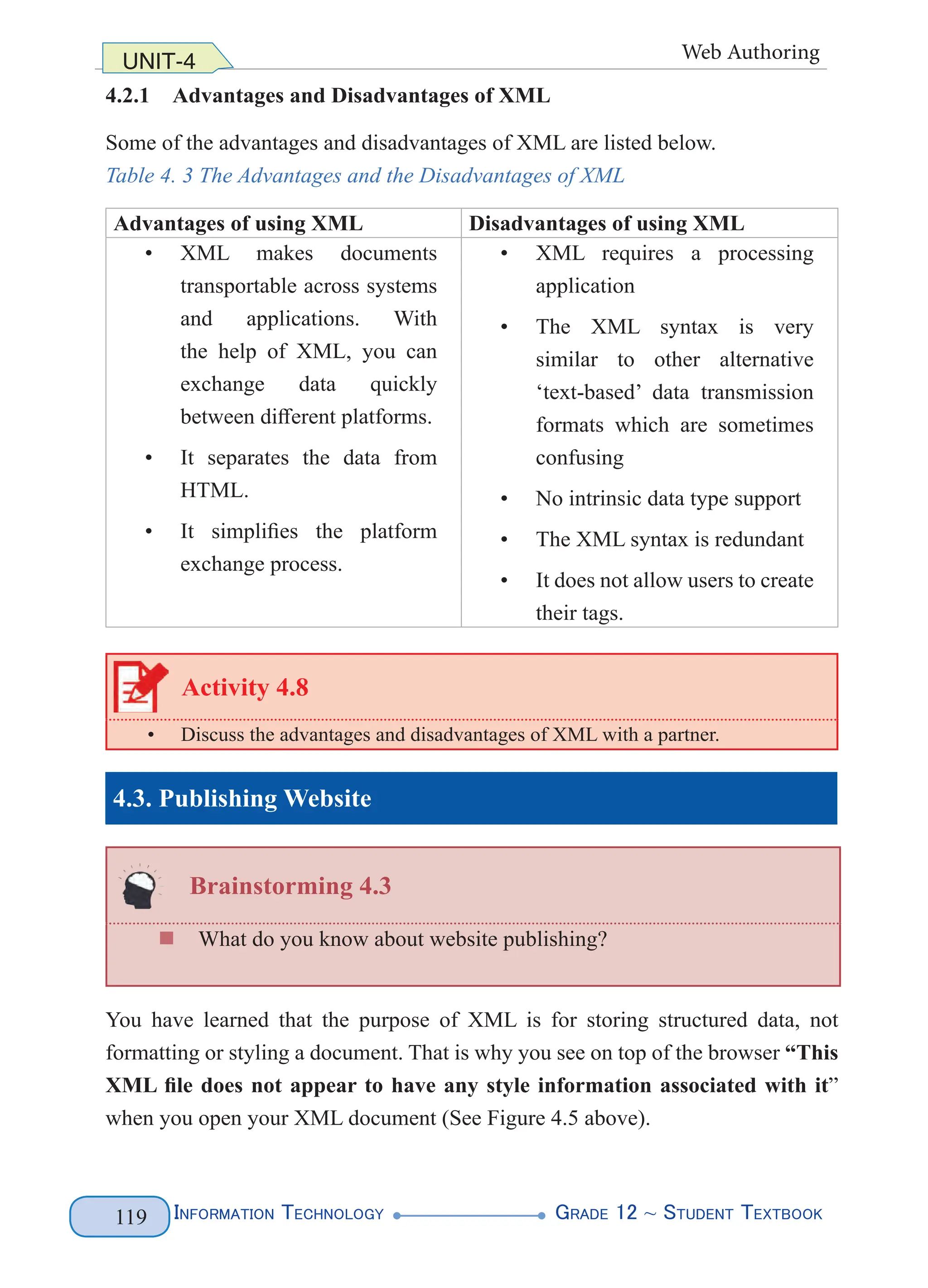
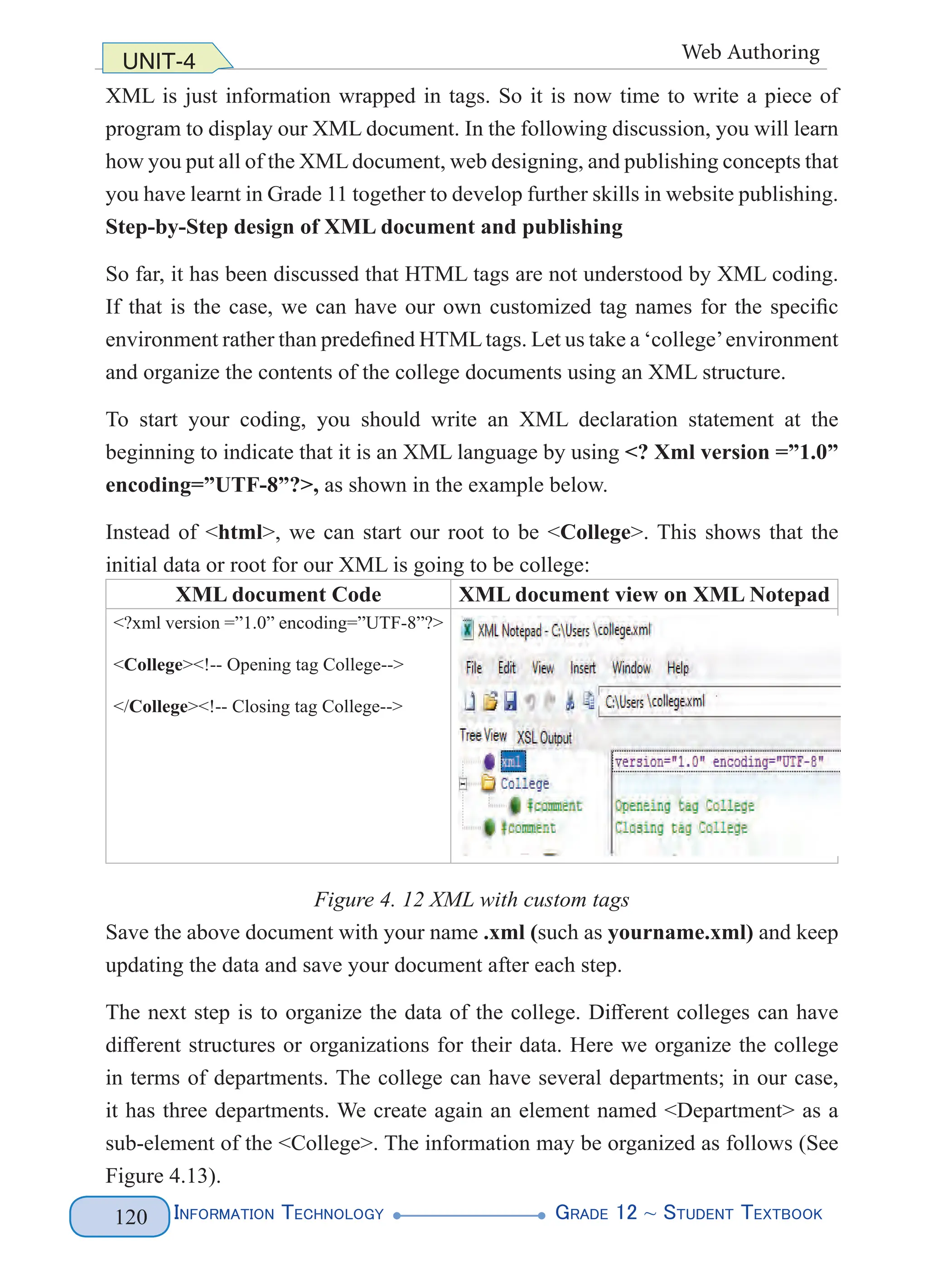
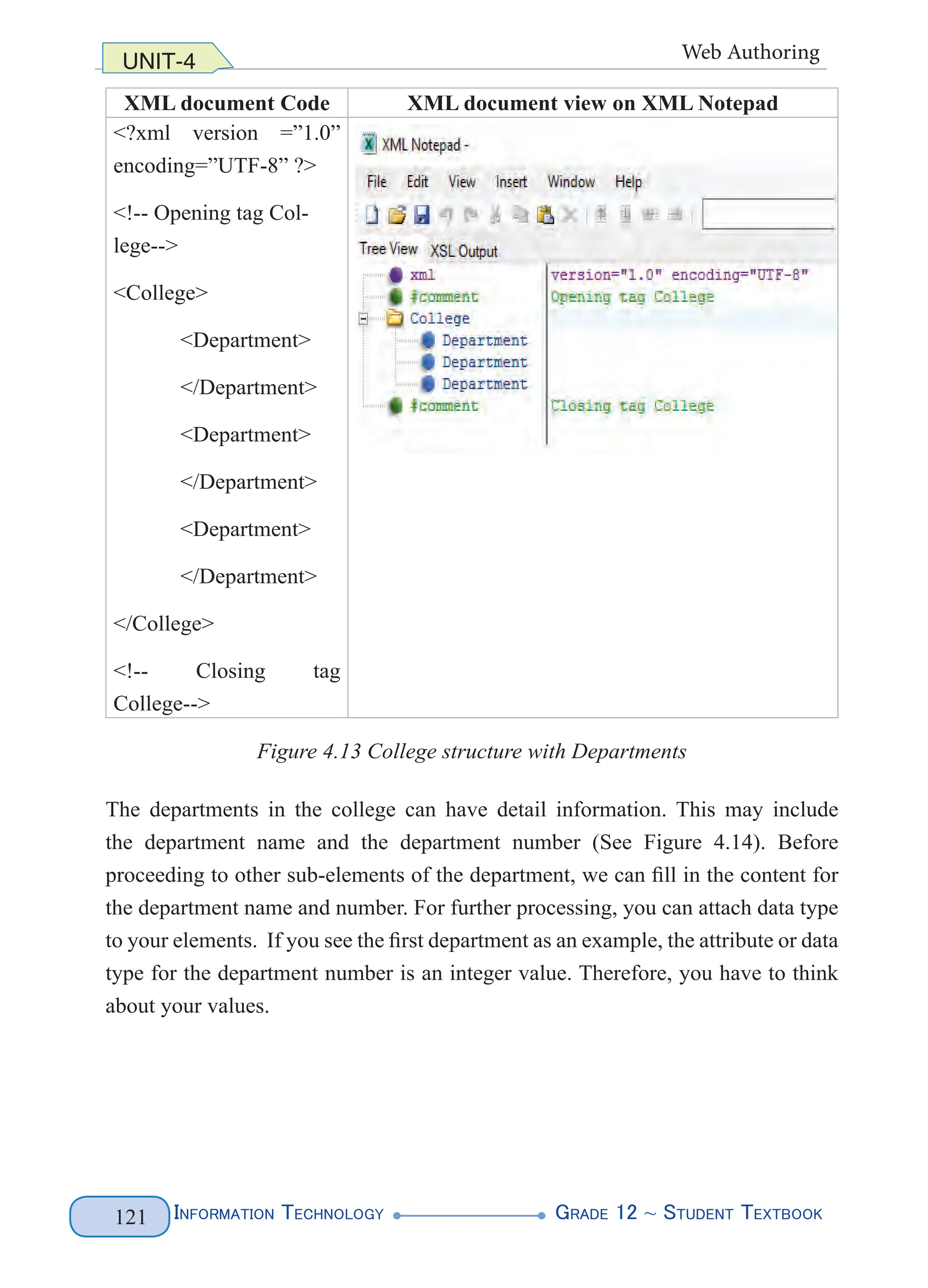

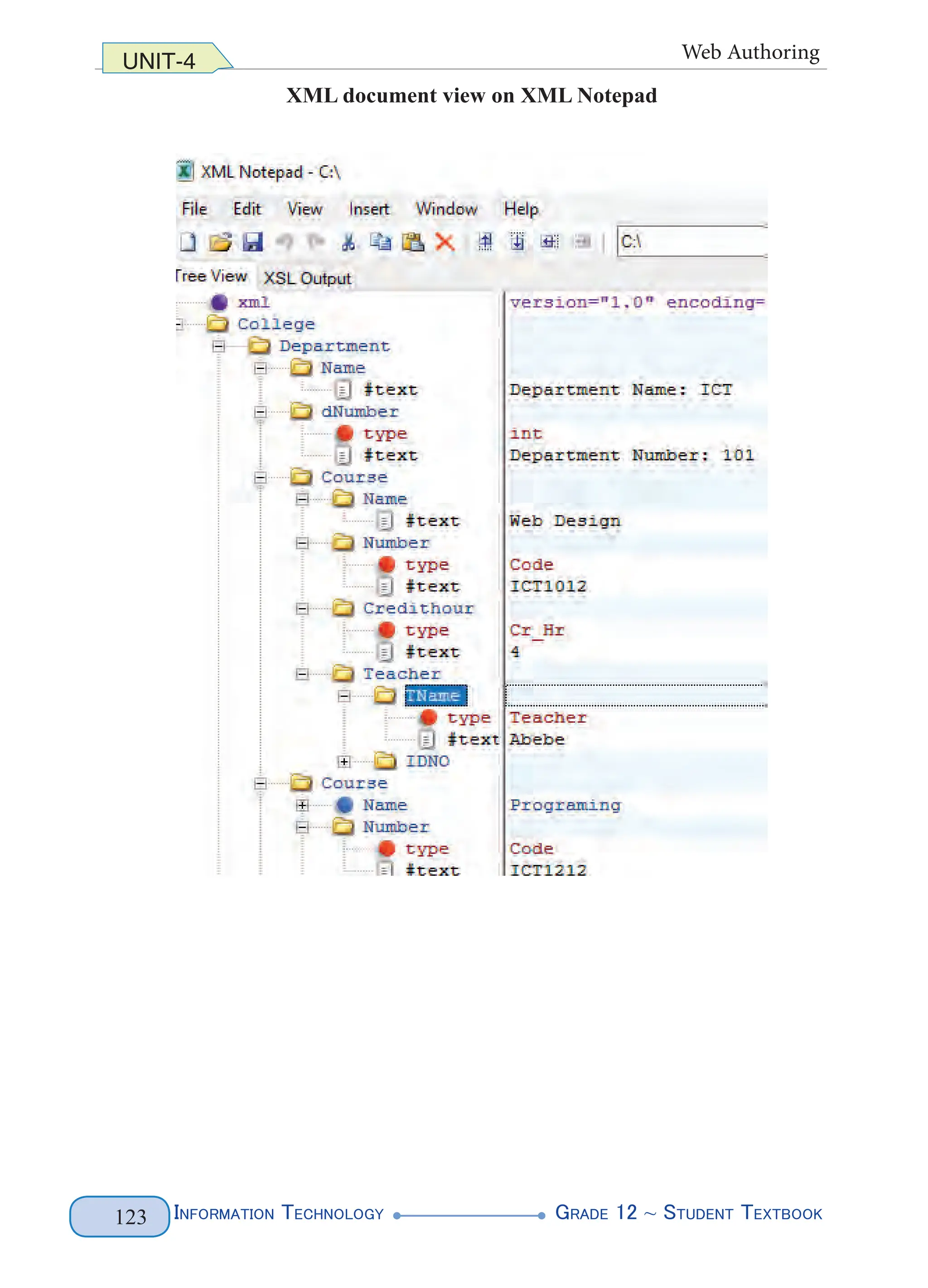
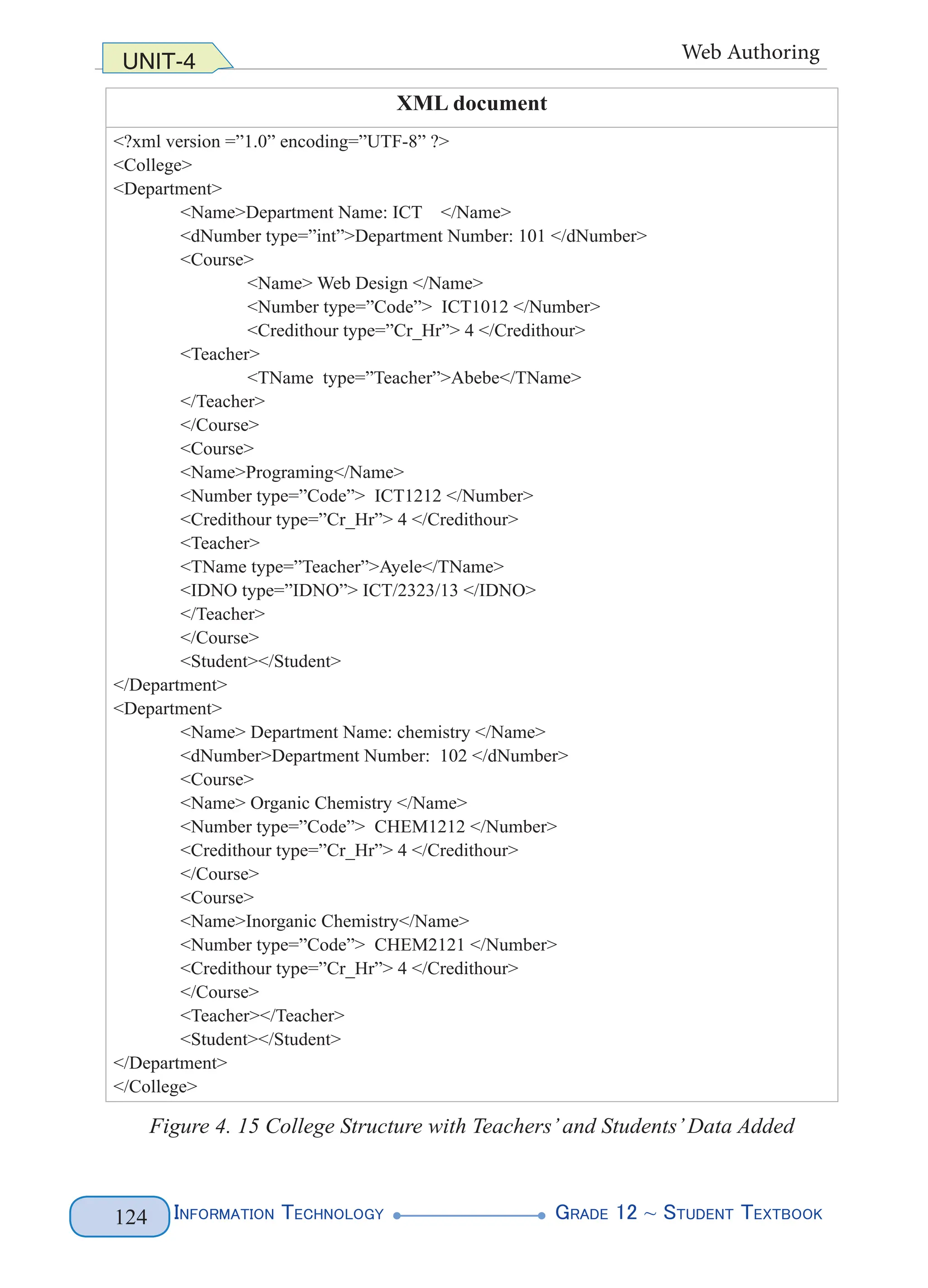
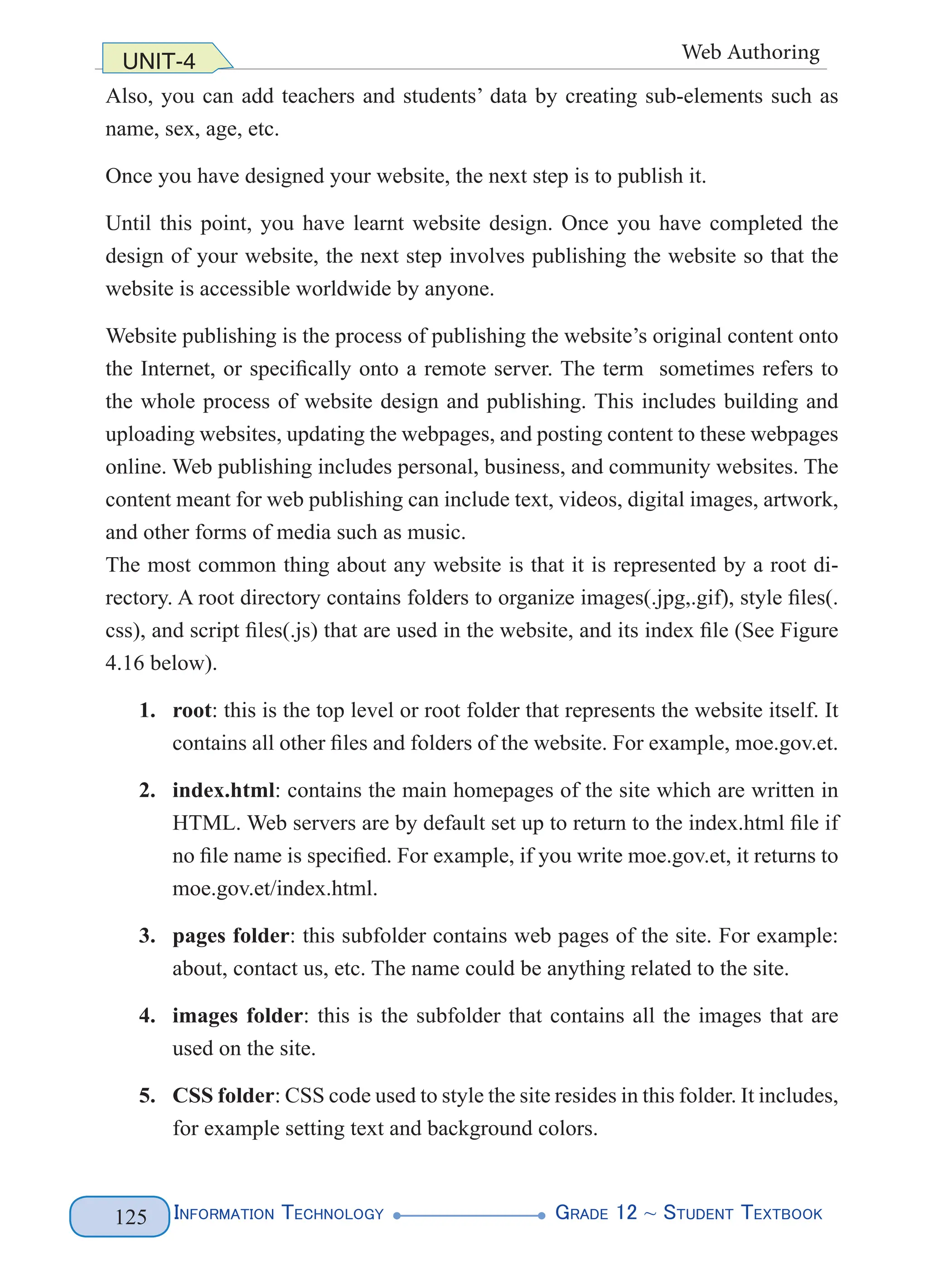
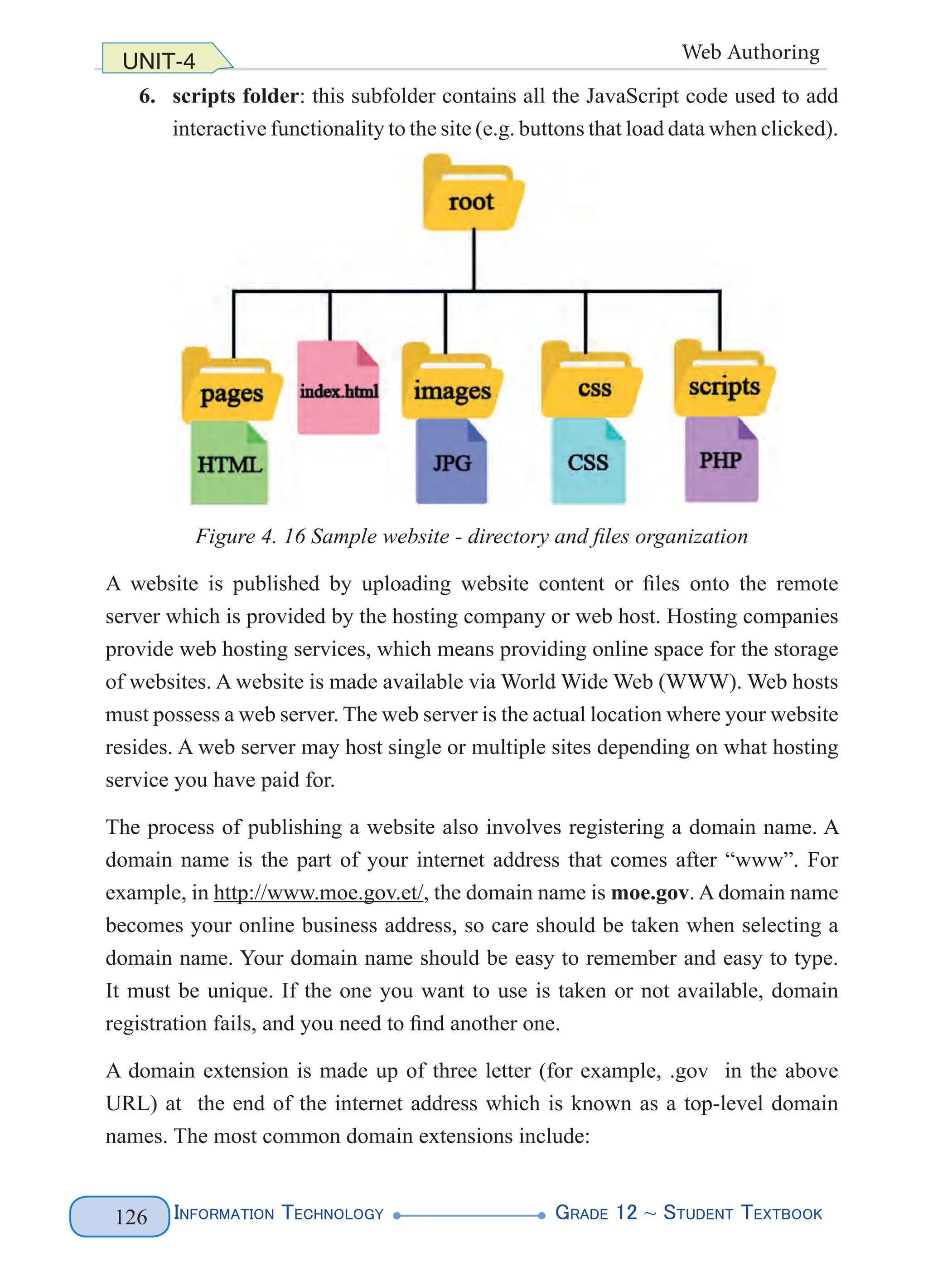
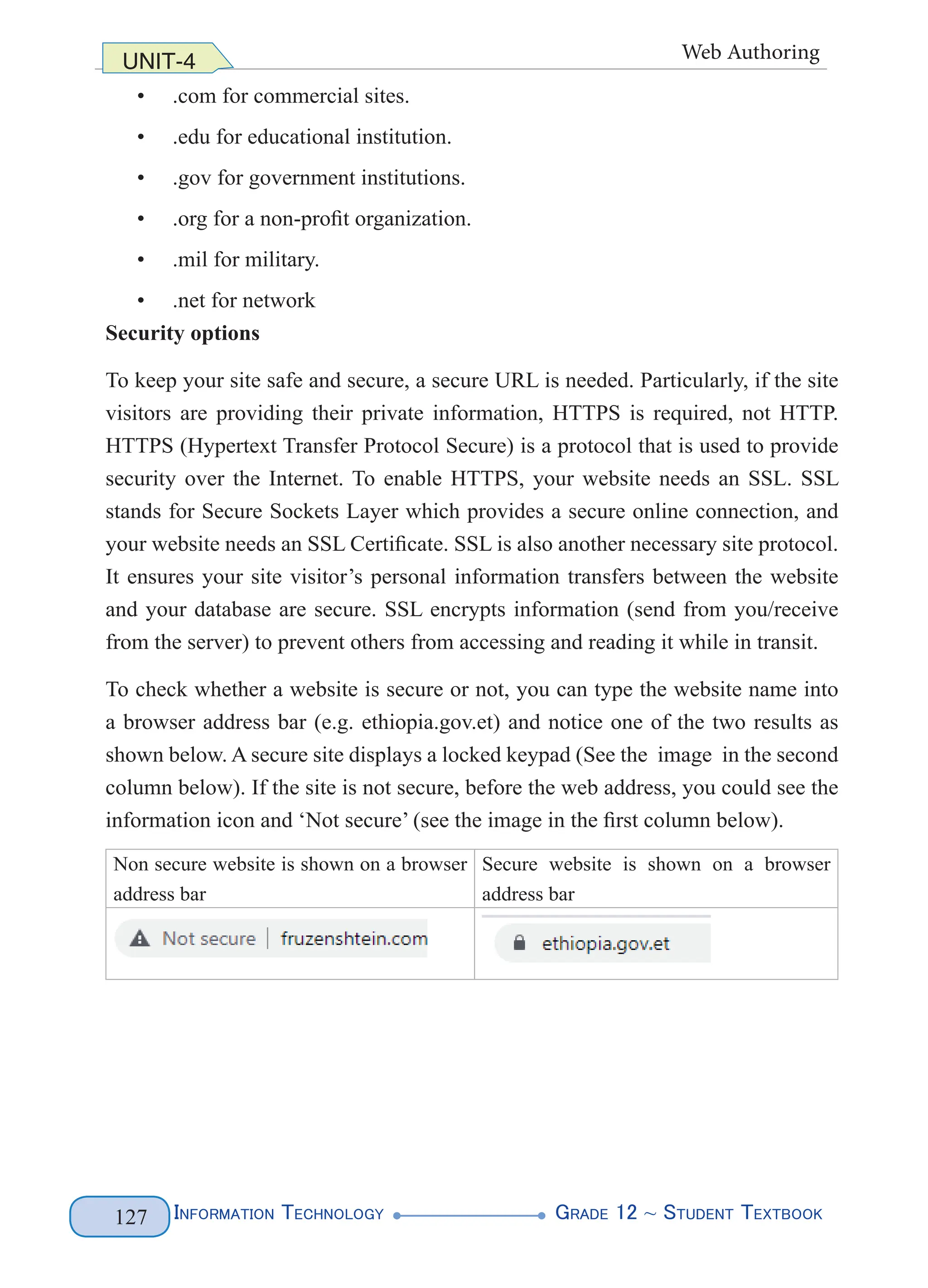
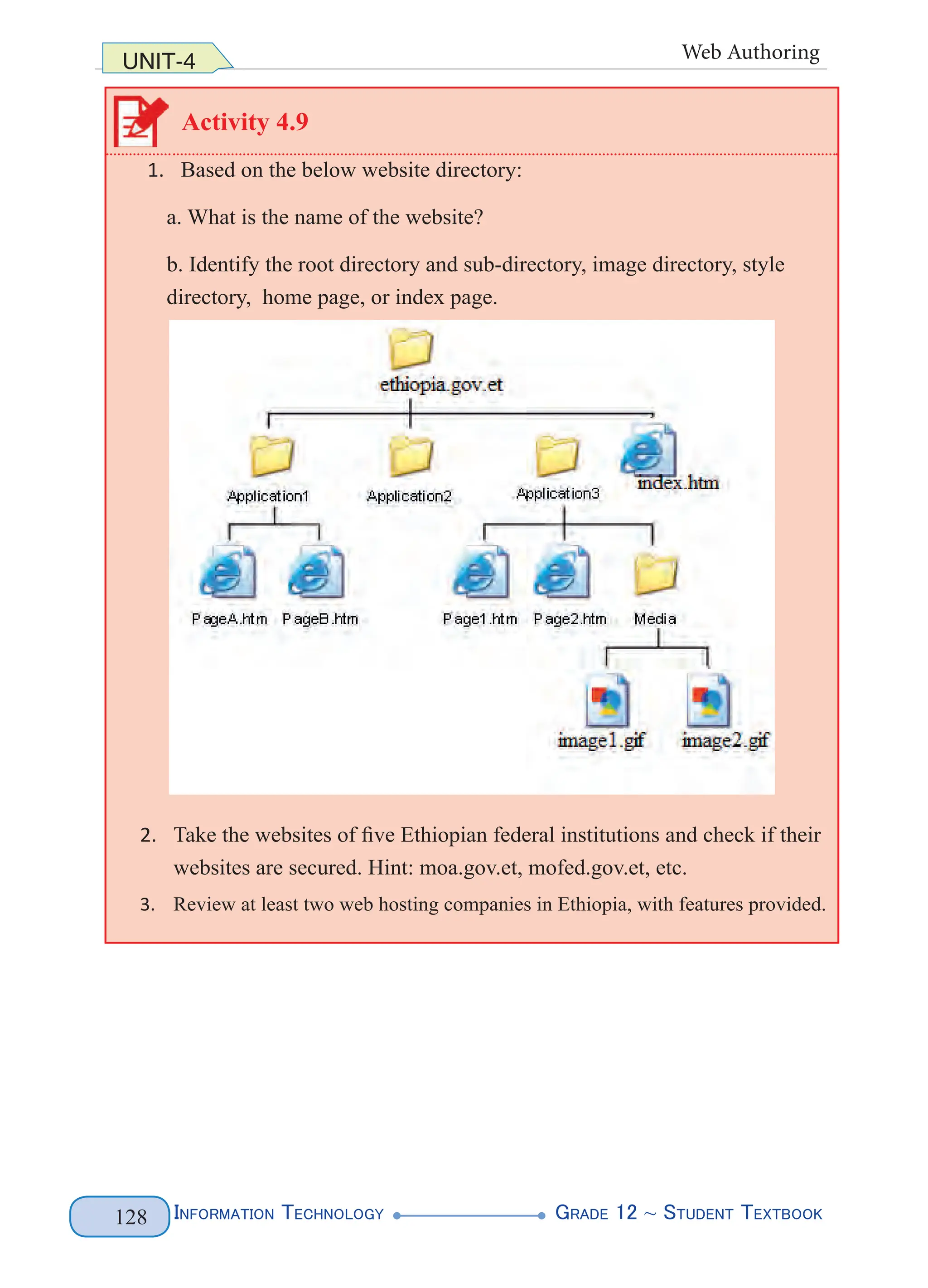
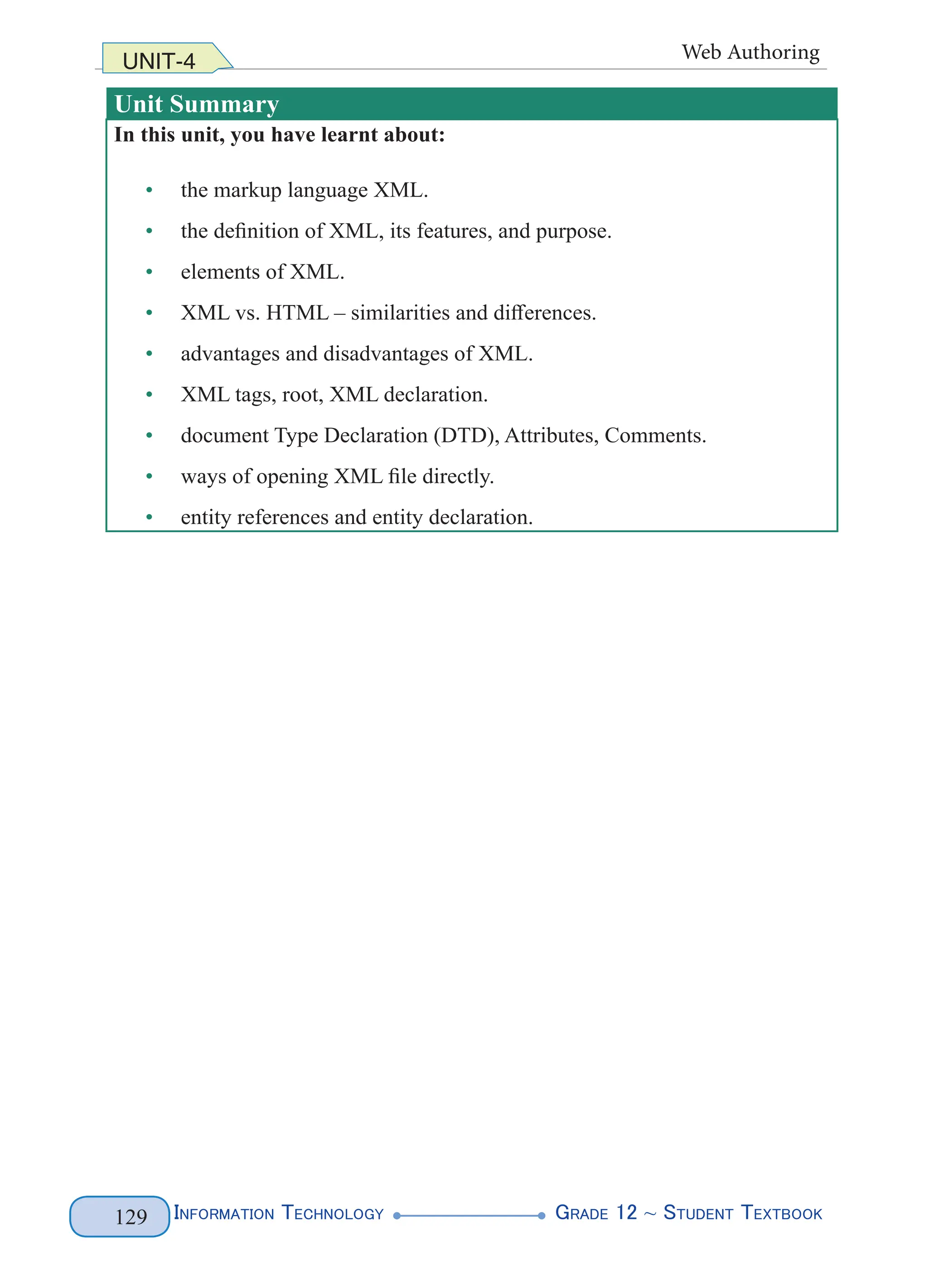
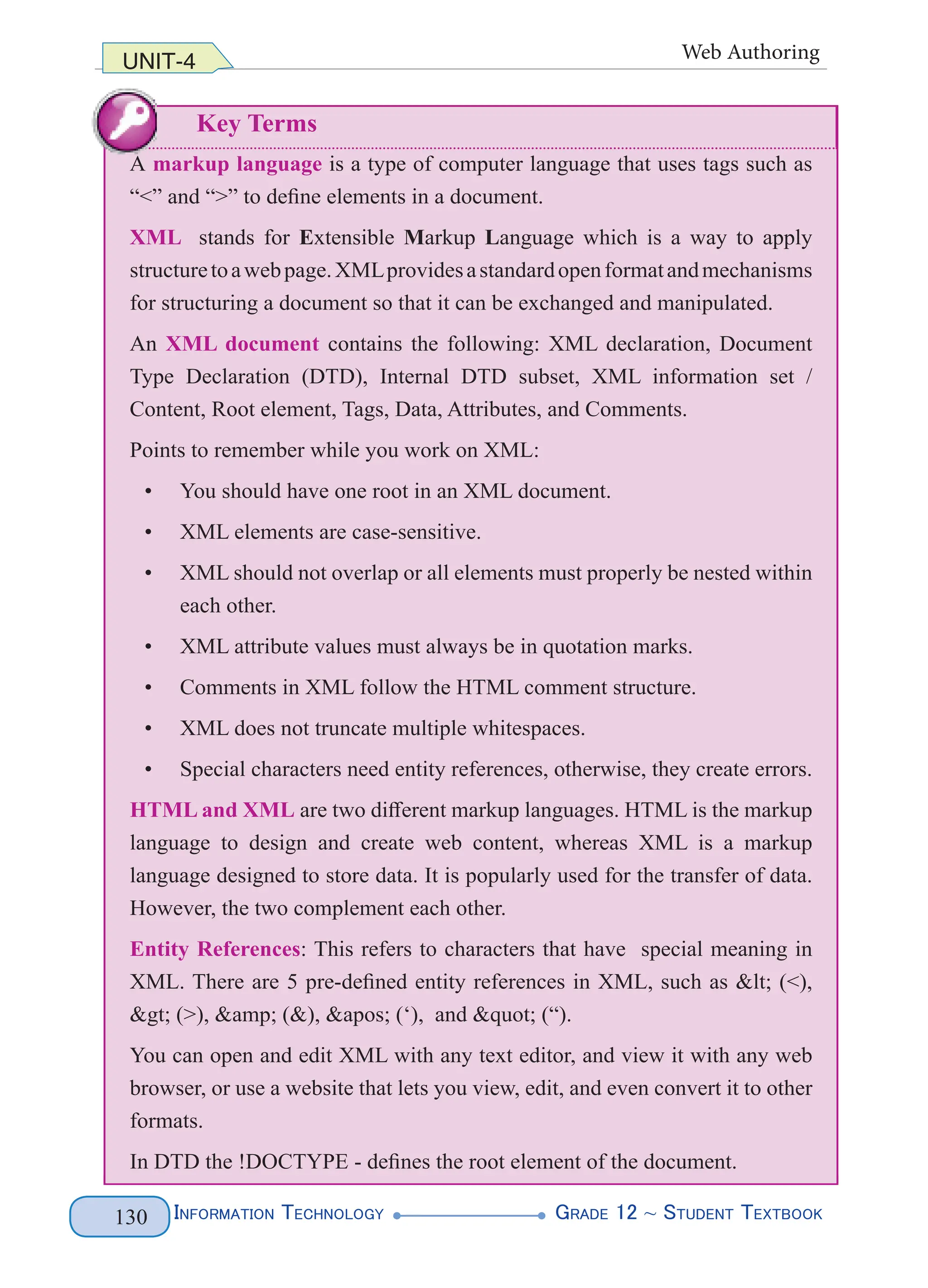

![Information Technology G
rade 12 ~ Student Textbook
132
UNIT-4 Web Authoring
Review Questions
Part I: Match the items given under column B with associated items in
column A
A B
1. XML declaration
2. HTML tag
3. *.xml
4. https://www.moa.gov.et
5. XML attribute
A. <body>
B. Extension of XML document
C. Secured website
D. <DOCTYPE … [ … ]>
E. <?xml version =”1.0”
encoding=”UTF-8” ?>
F. html
G. <student id=’101’></student>
H. <element/>
Part II: Choose the correct answer from the given alternatives.
1. Which of the following statement is true about XML?
A. Elements are not case-sensitive.
B. Quoting attribute is optional.
C. Elements may nest but not overlap
D. All of the above.
2. If you want to start XML coding, what is the correct declaration syntax
for the version of an XML document?
A. </xml version=”1.0”/> B. <?xml version=”1.0”/?>
C. <xml version=”1.0”> D. <!Element />
3. What does DTD stand for?
A. Dynamic Type Definition
B. Document Type Definition
C. Do The Dance.
D. Direct Type Definition.](https://image.slidesharecdn.com/g12-it-stb-2023-web-240506201855-05da823c/75/G12-IT-this-is-information-technology-text-for-all-139-2048.jpg)
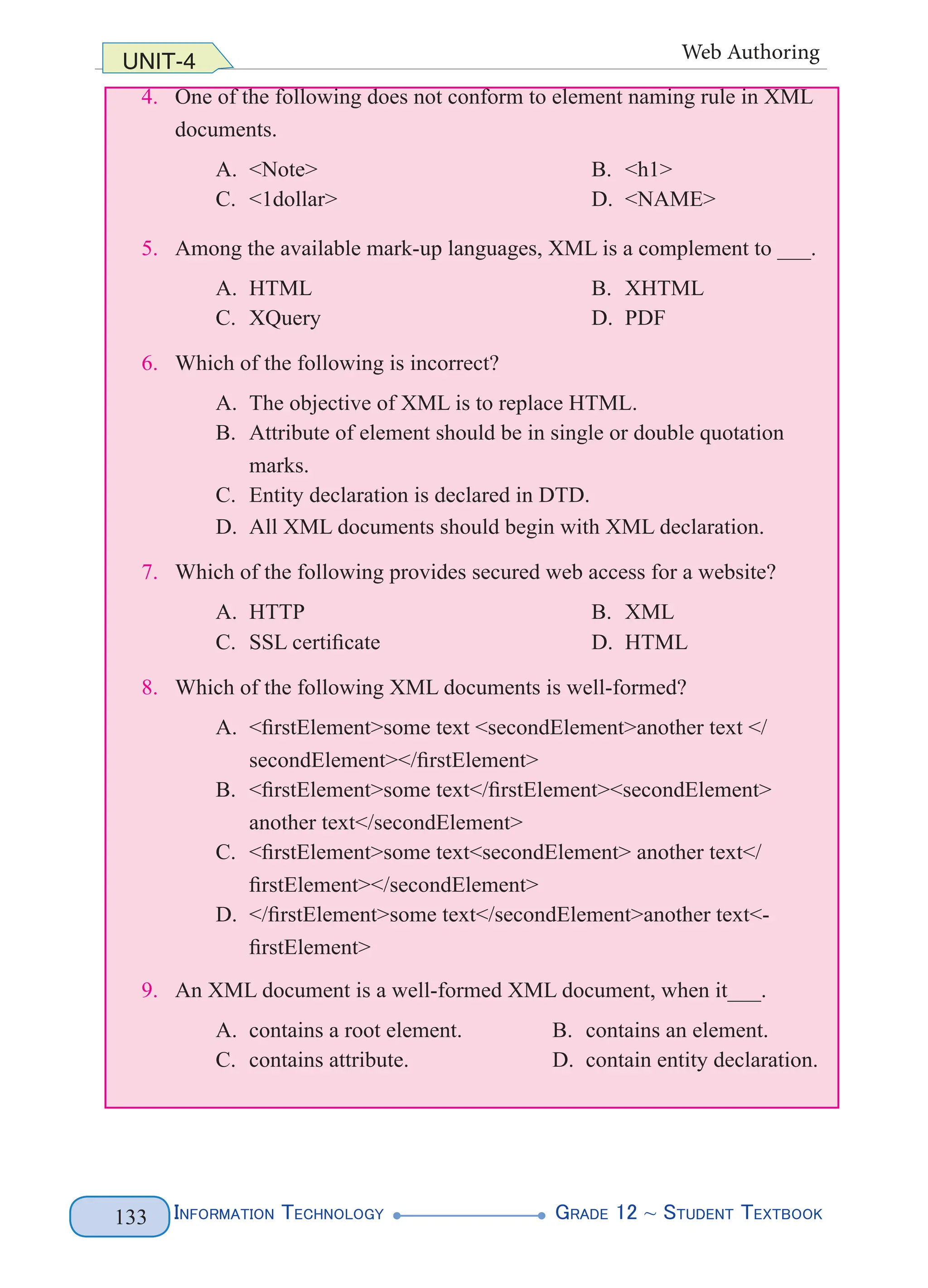
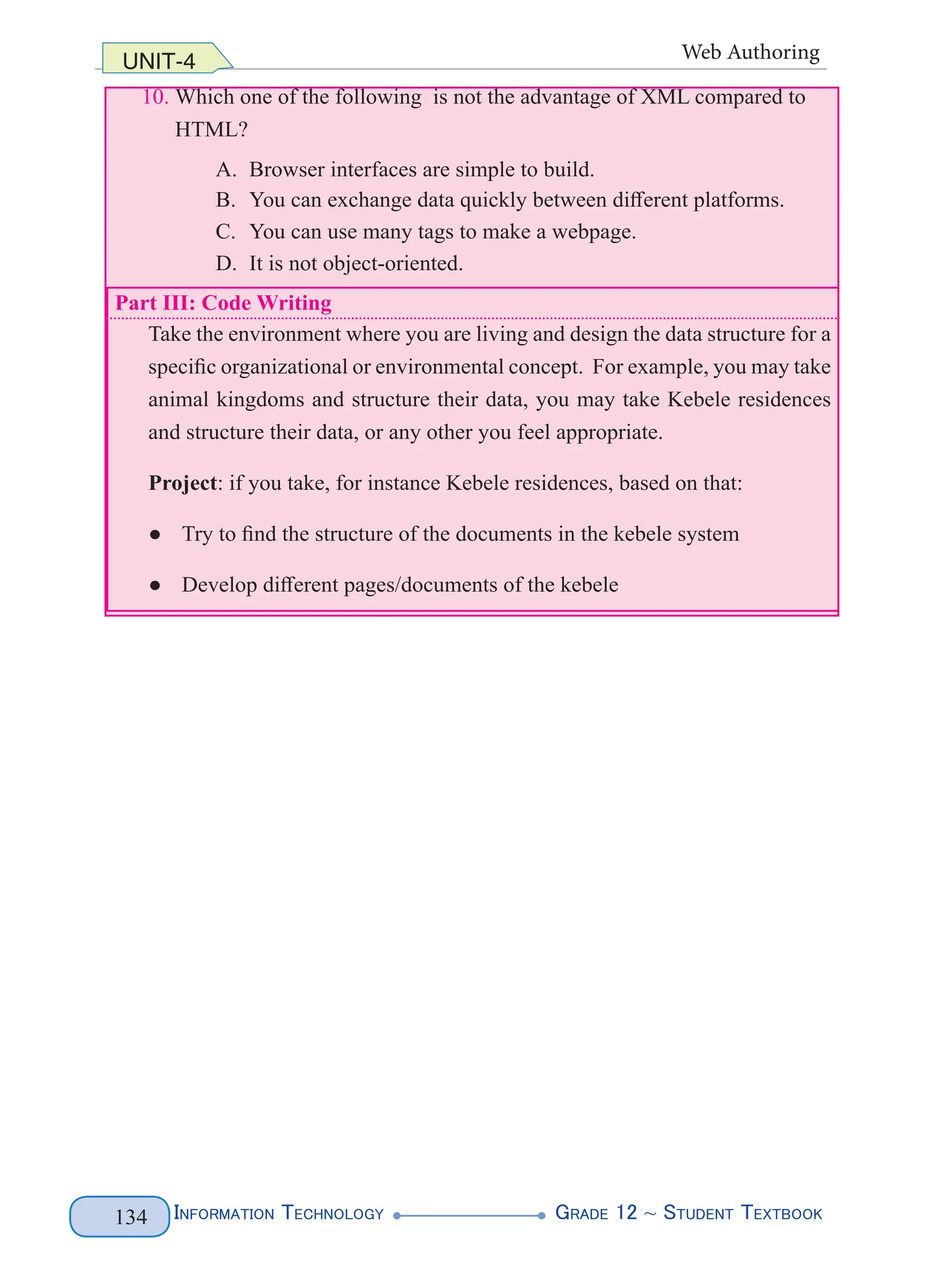
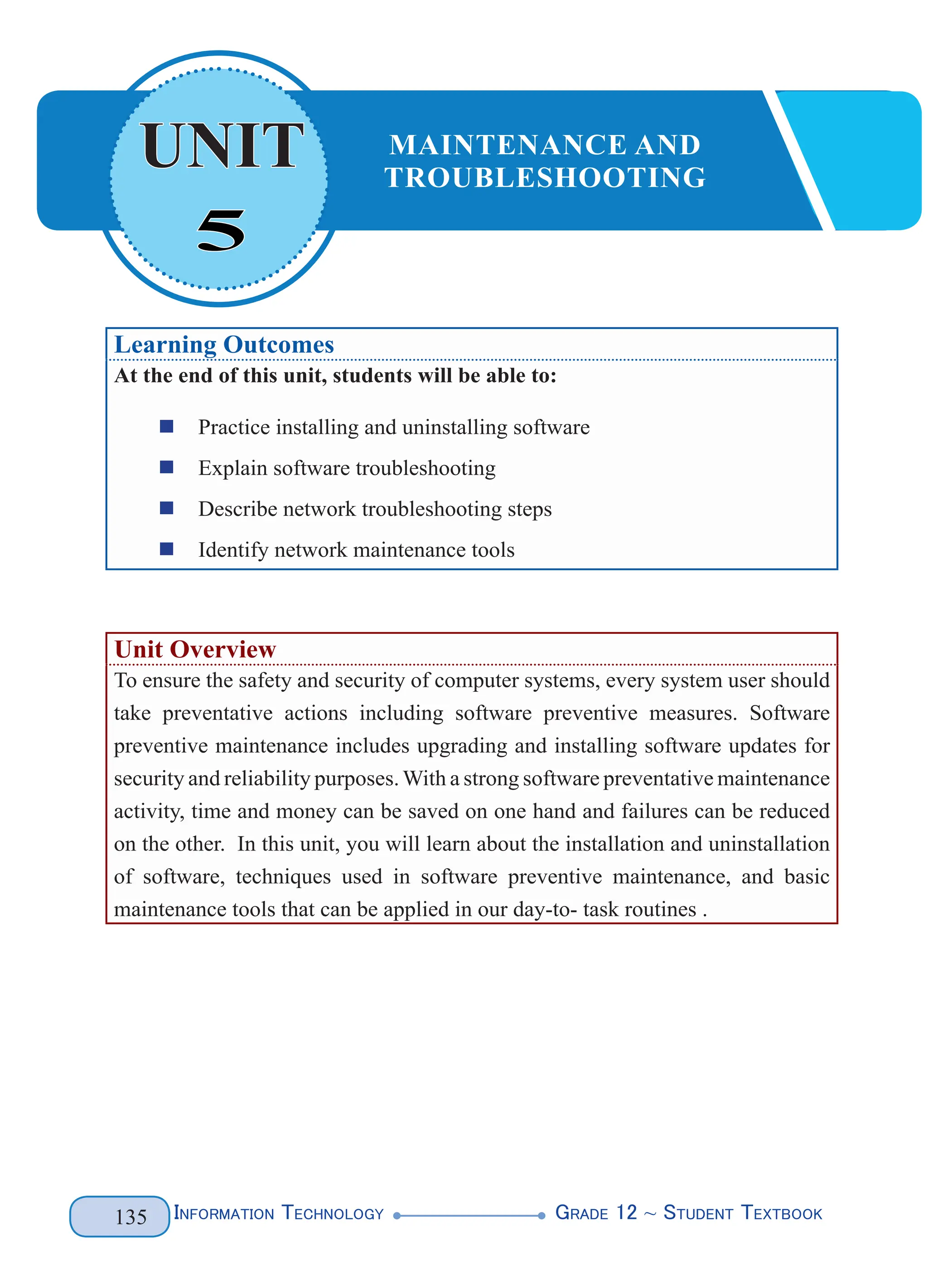
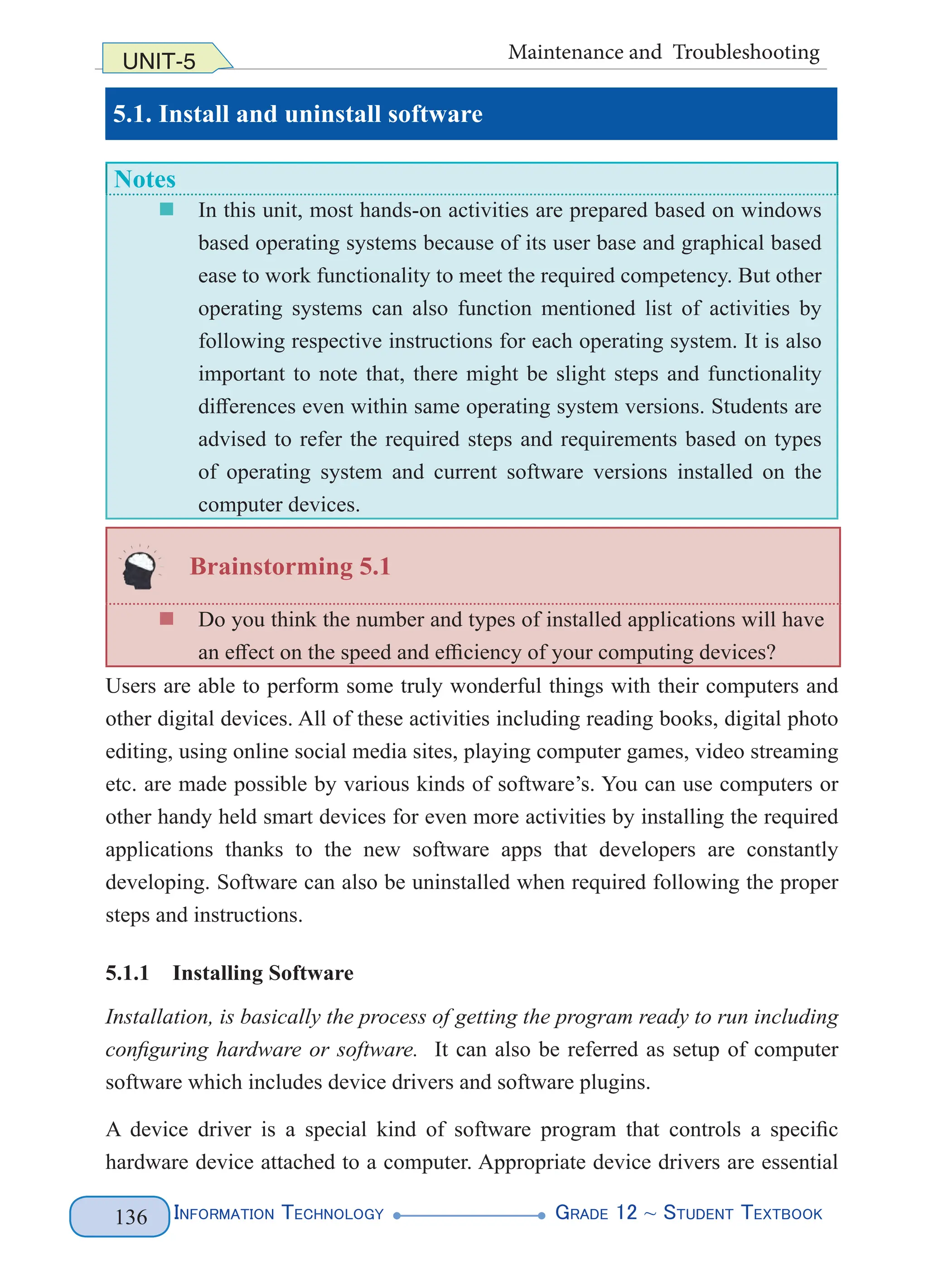
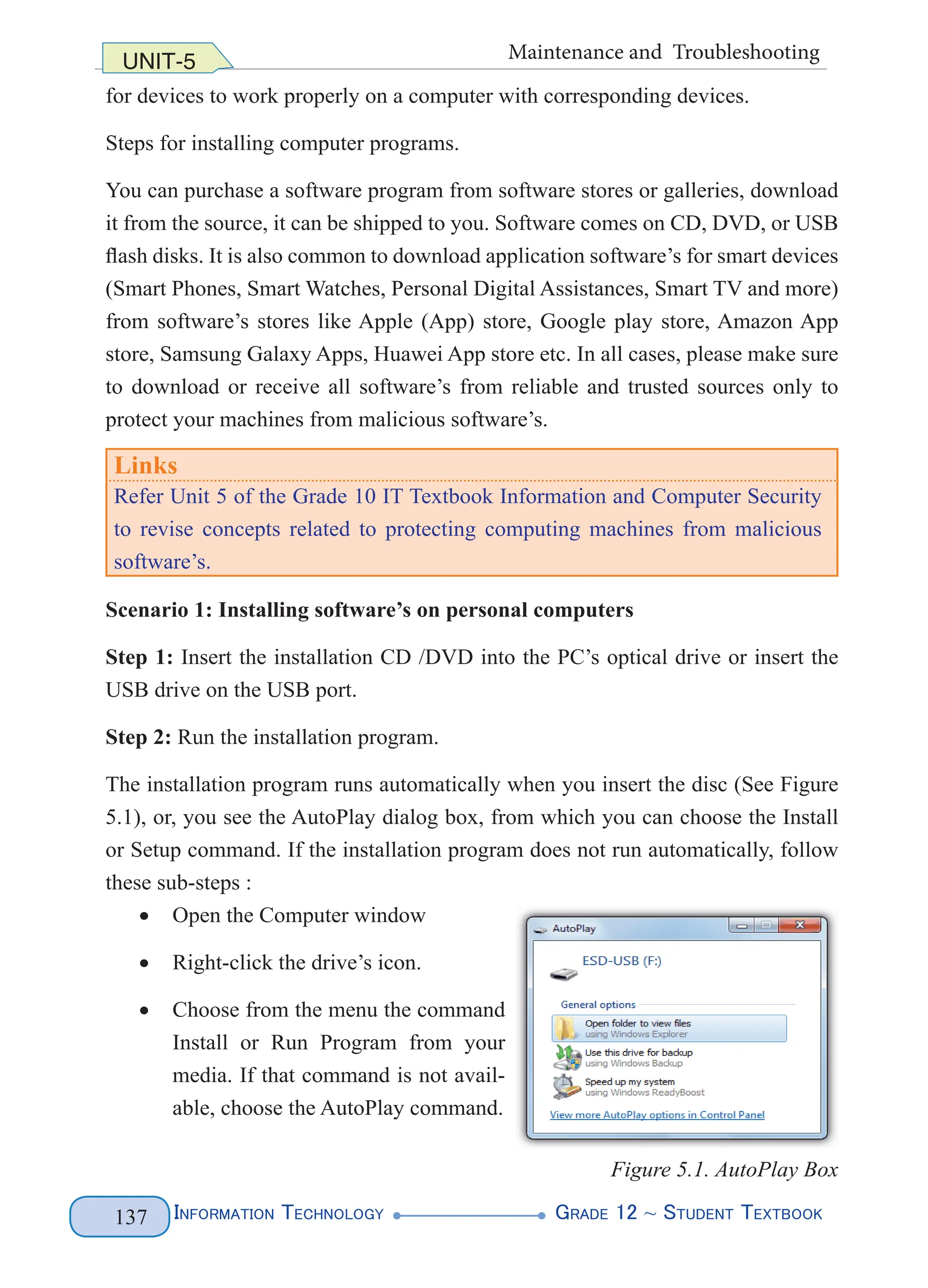
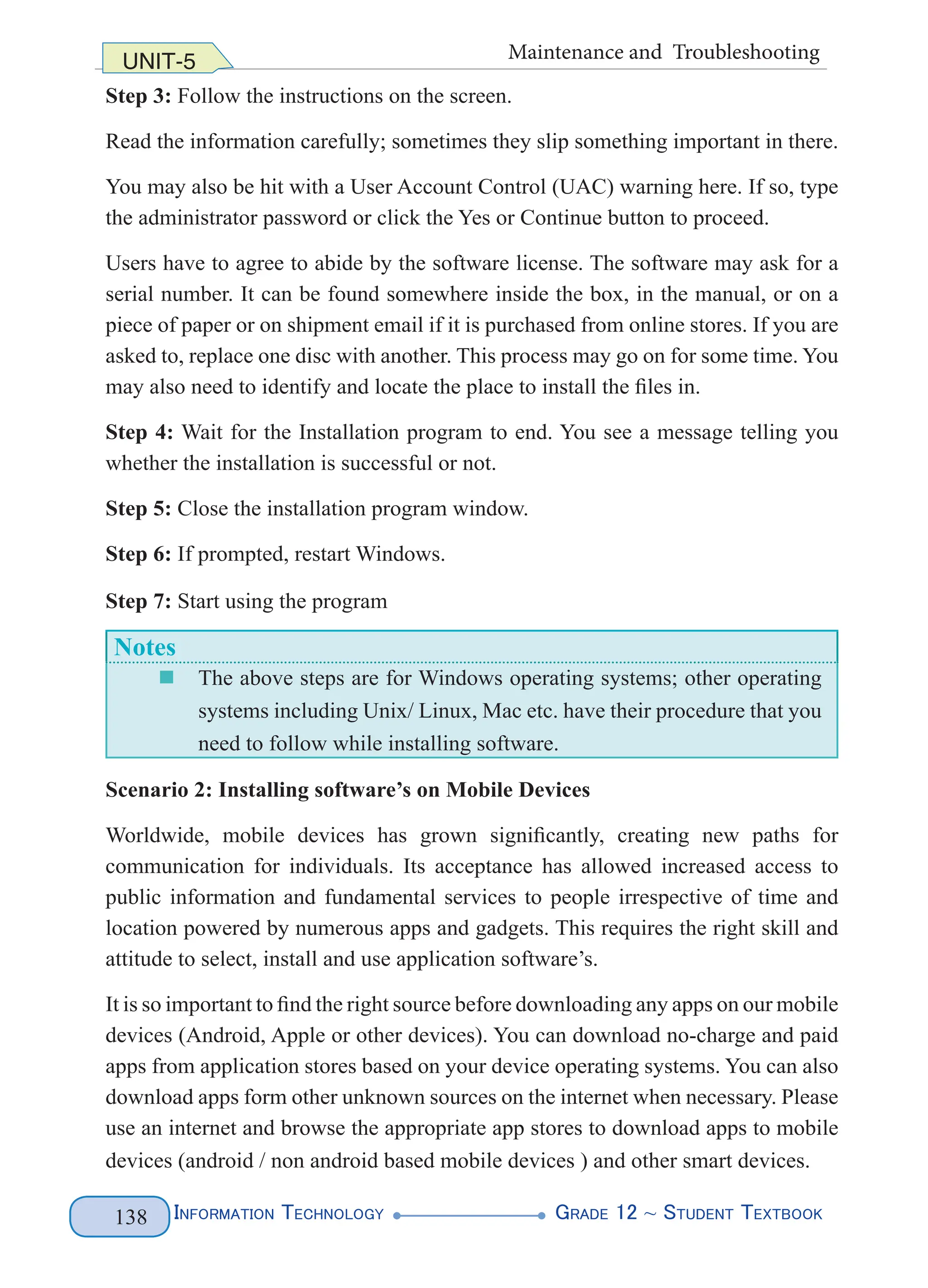
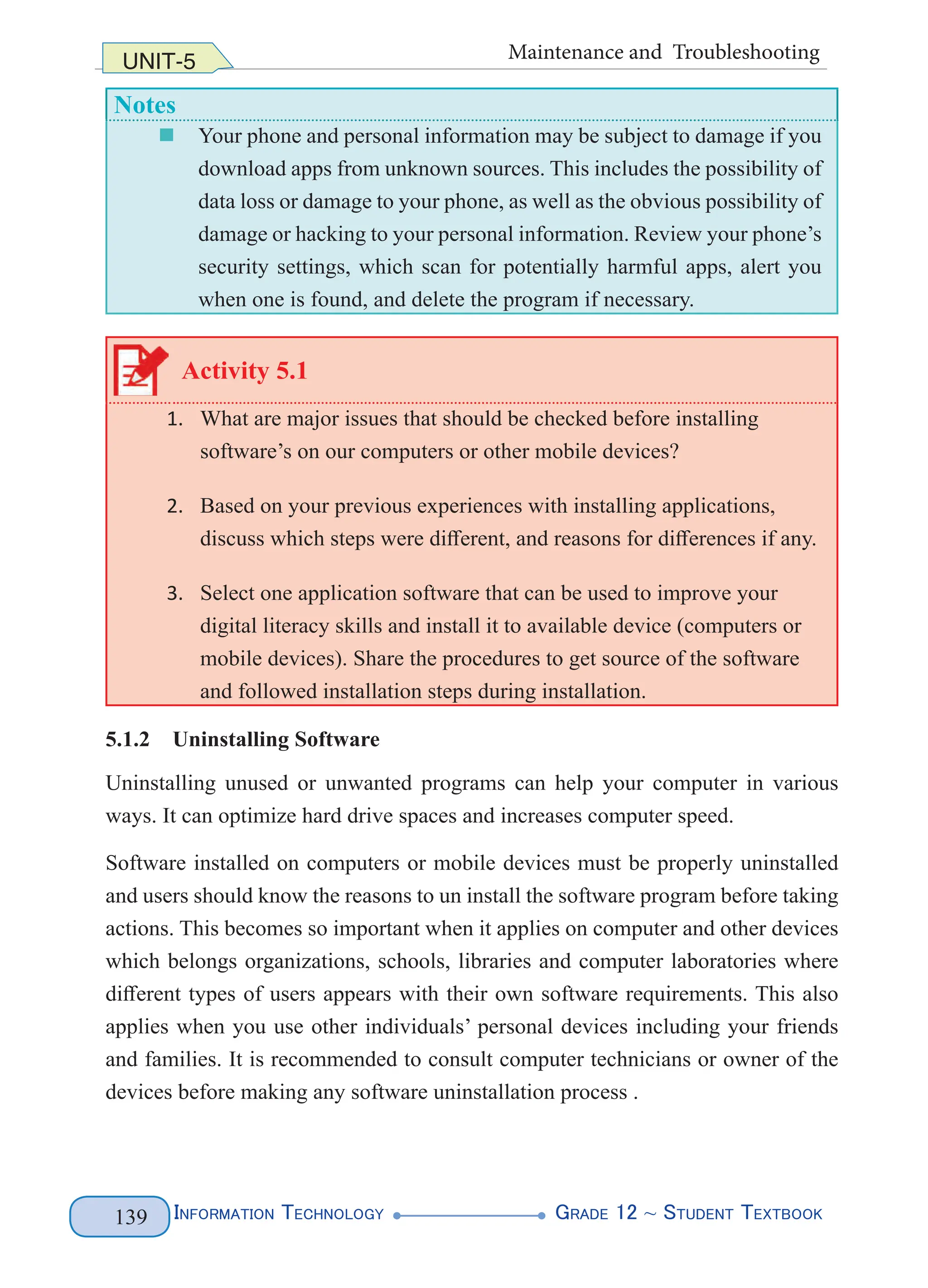
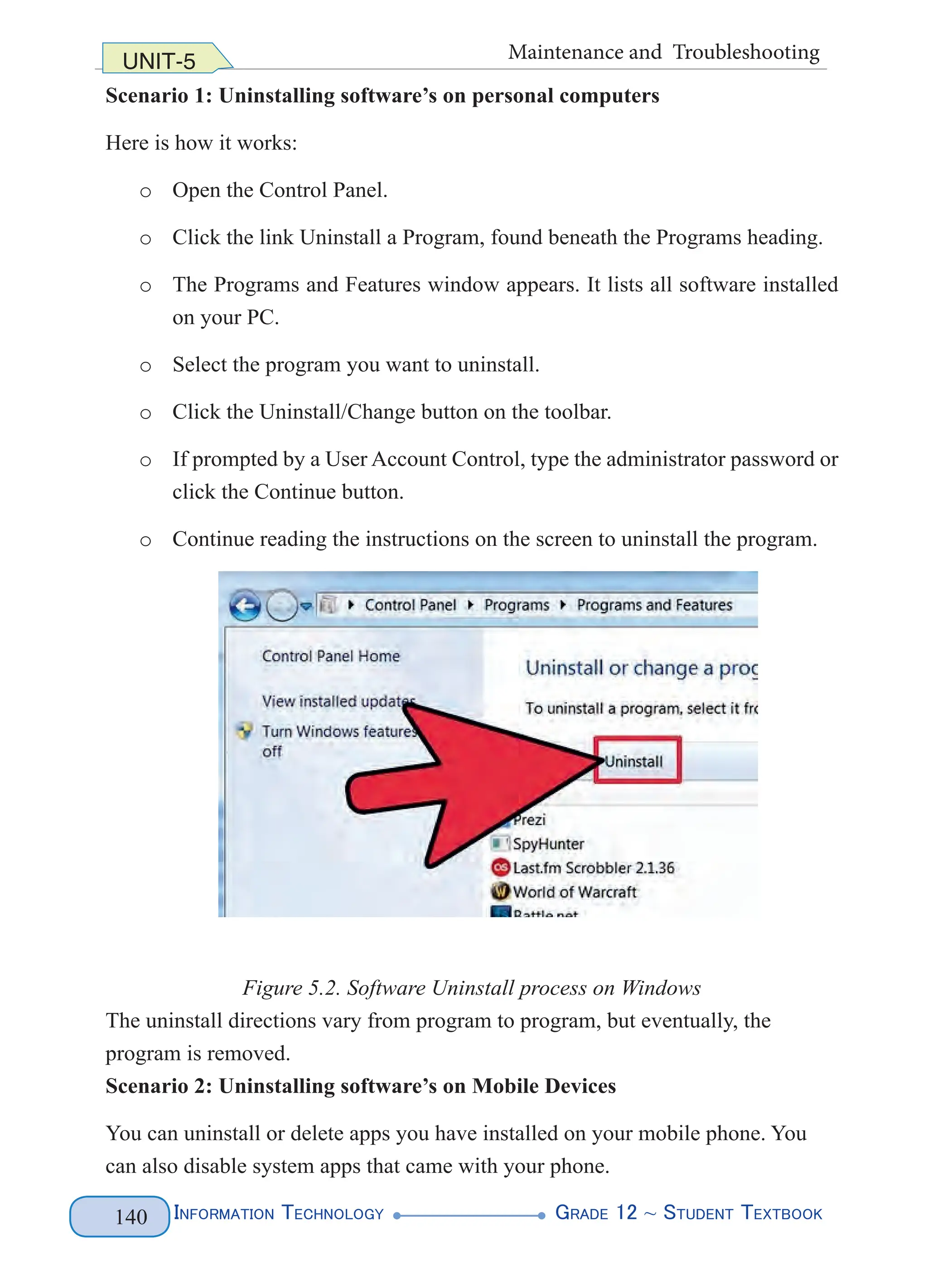
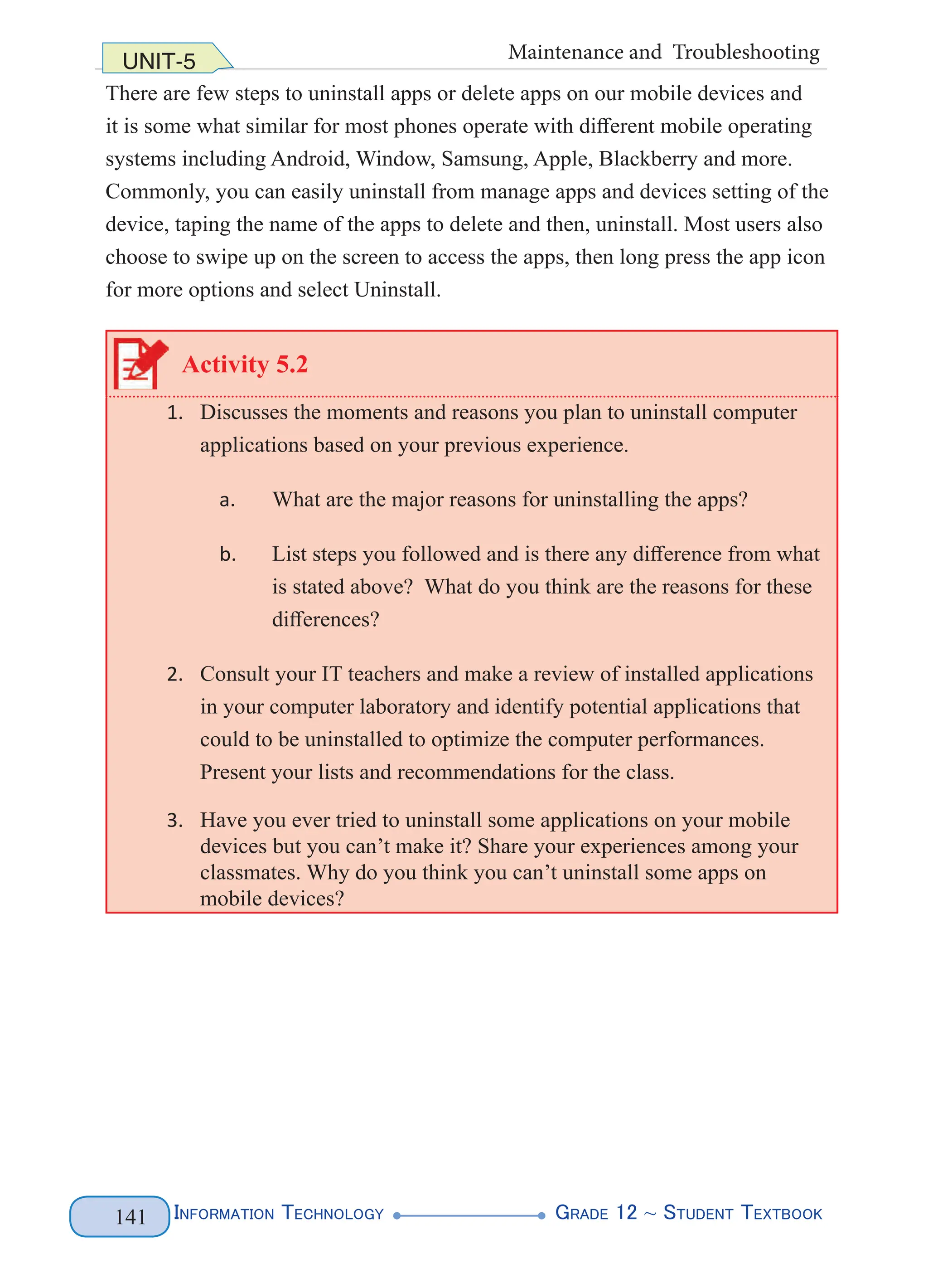
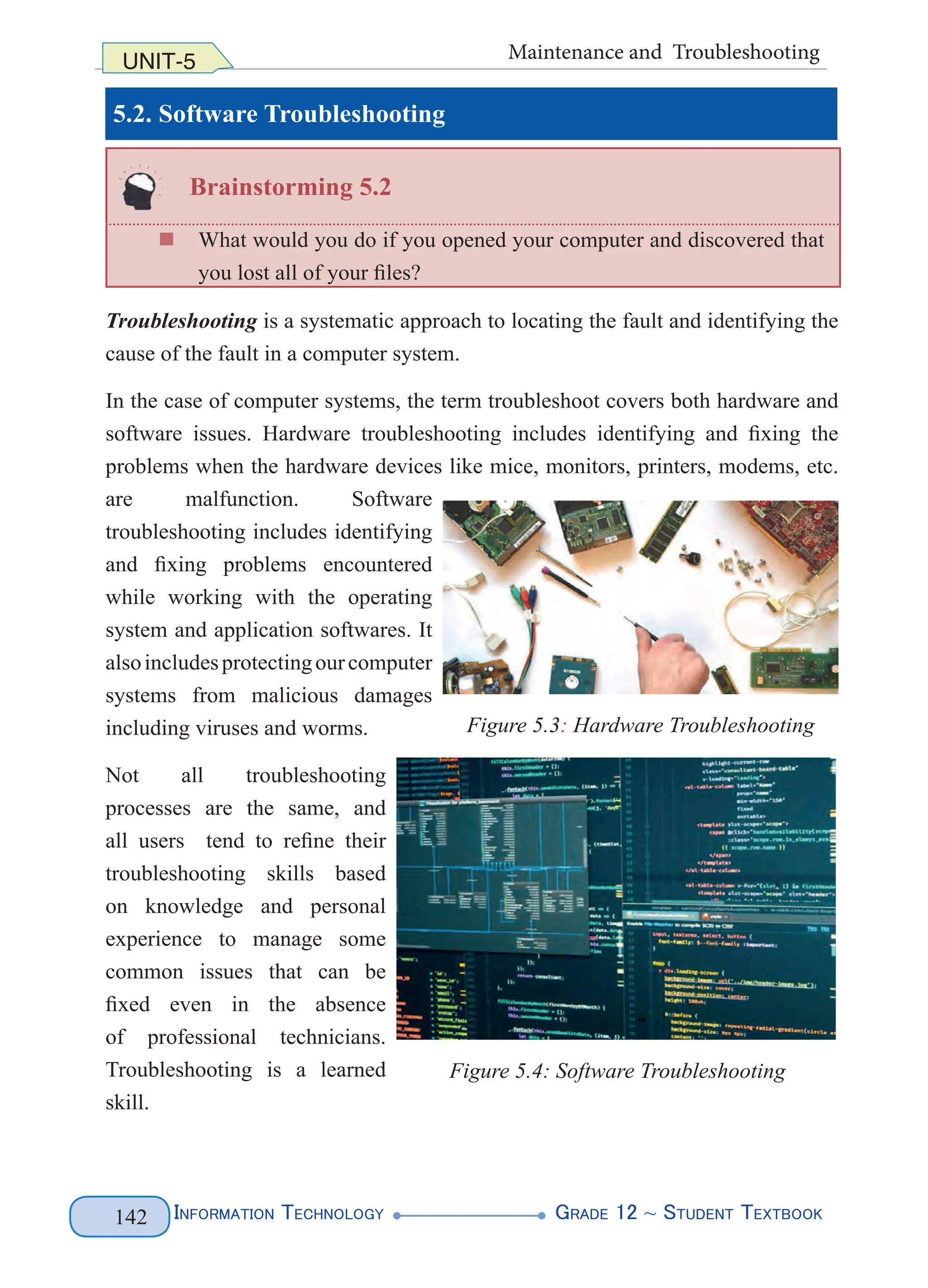
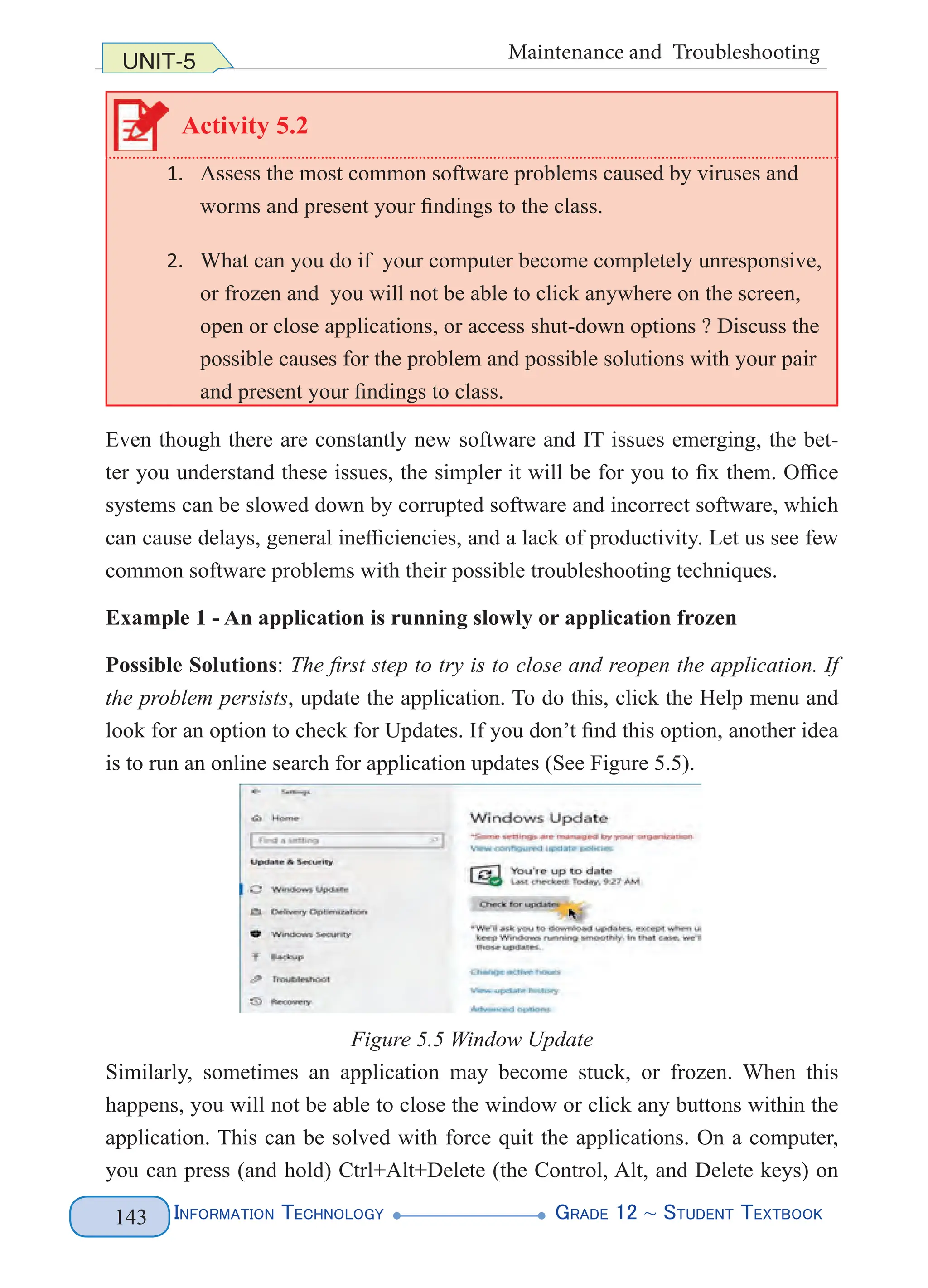

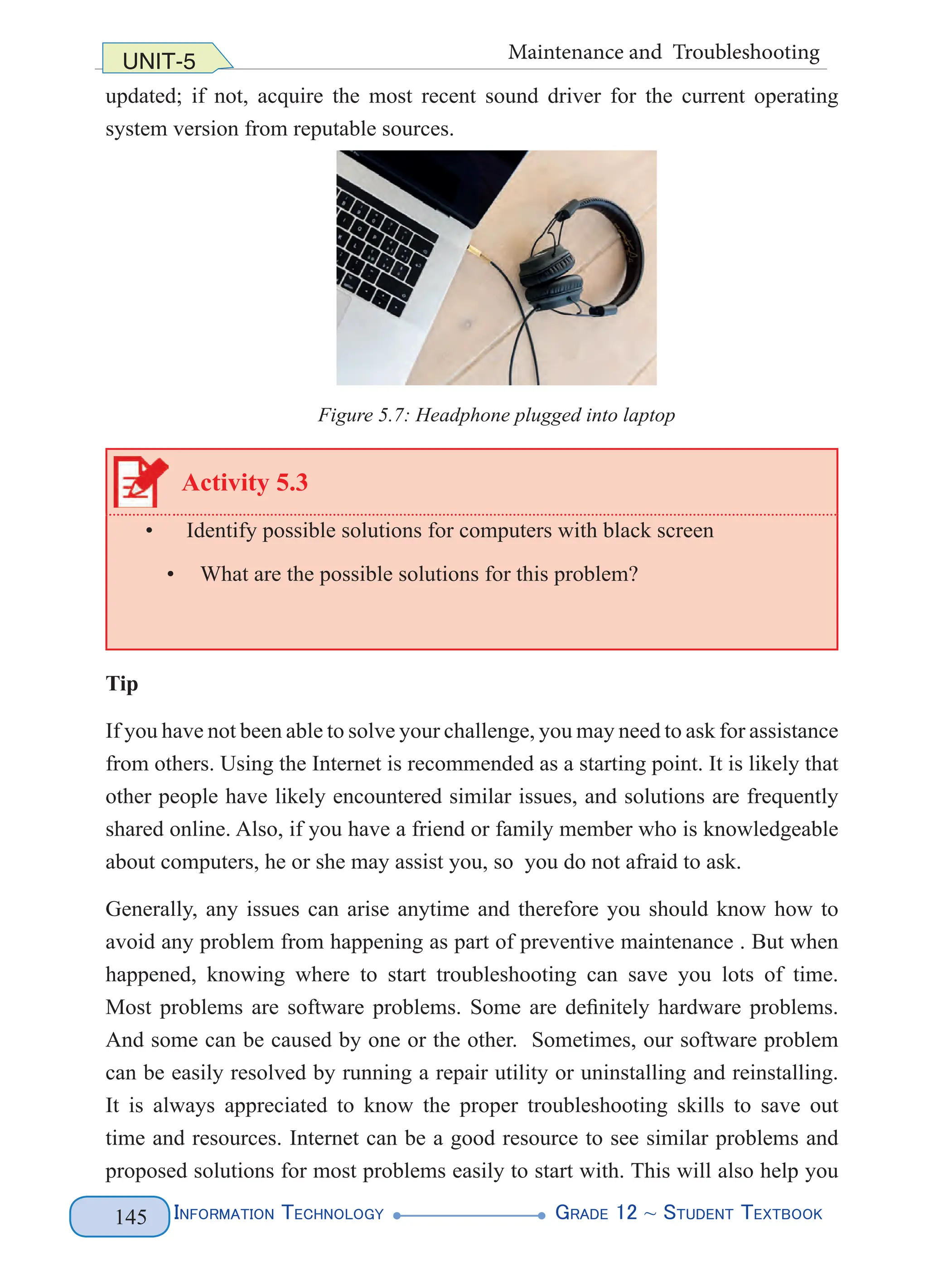
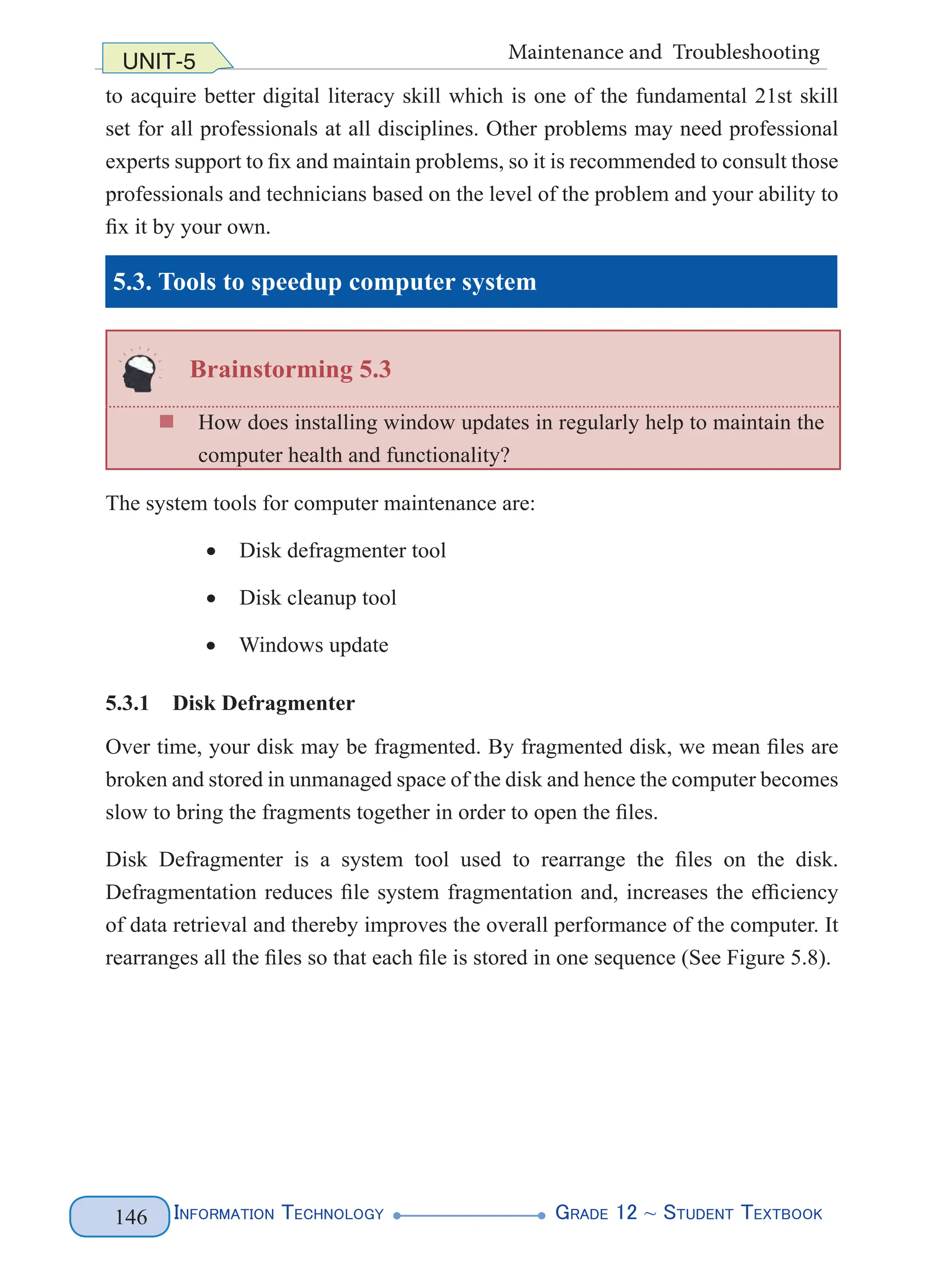
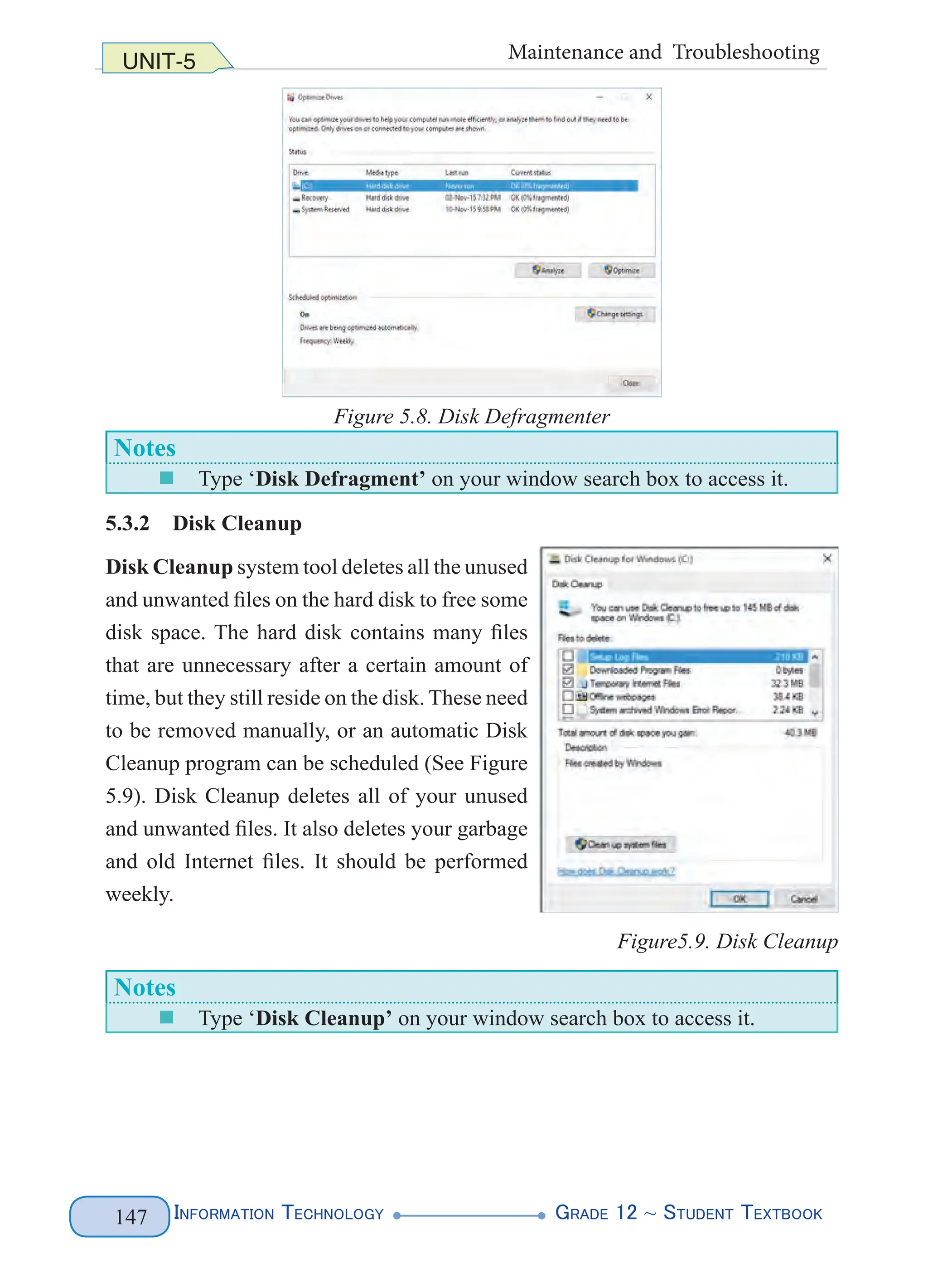
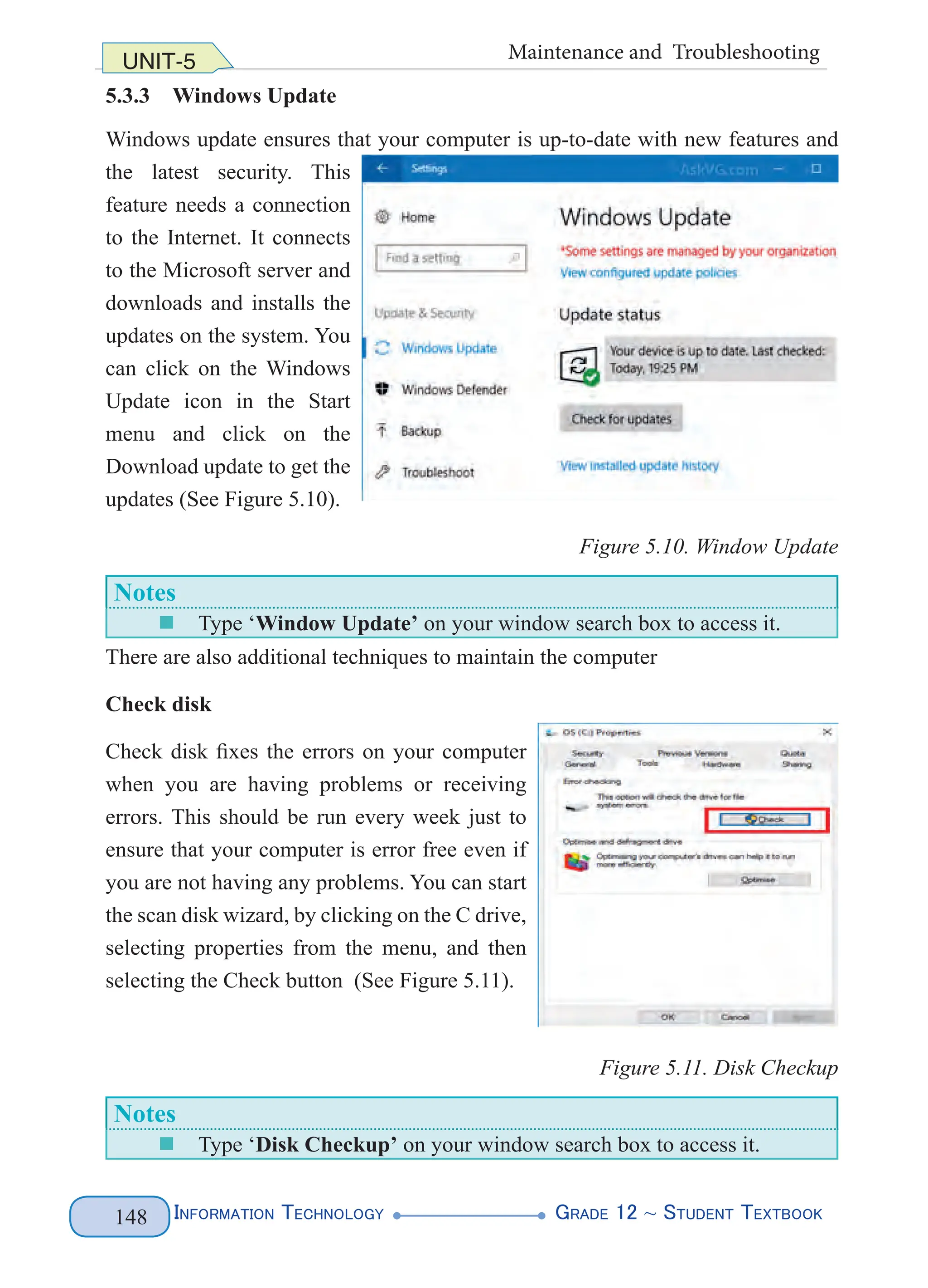
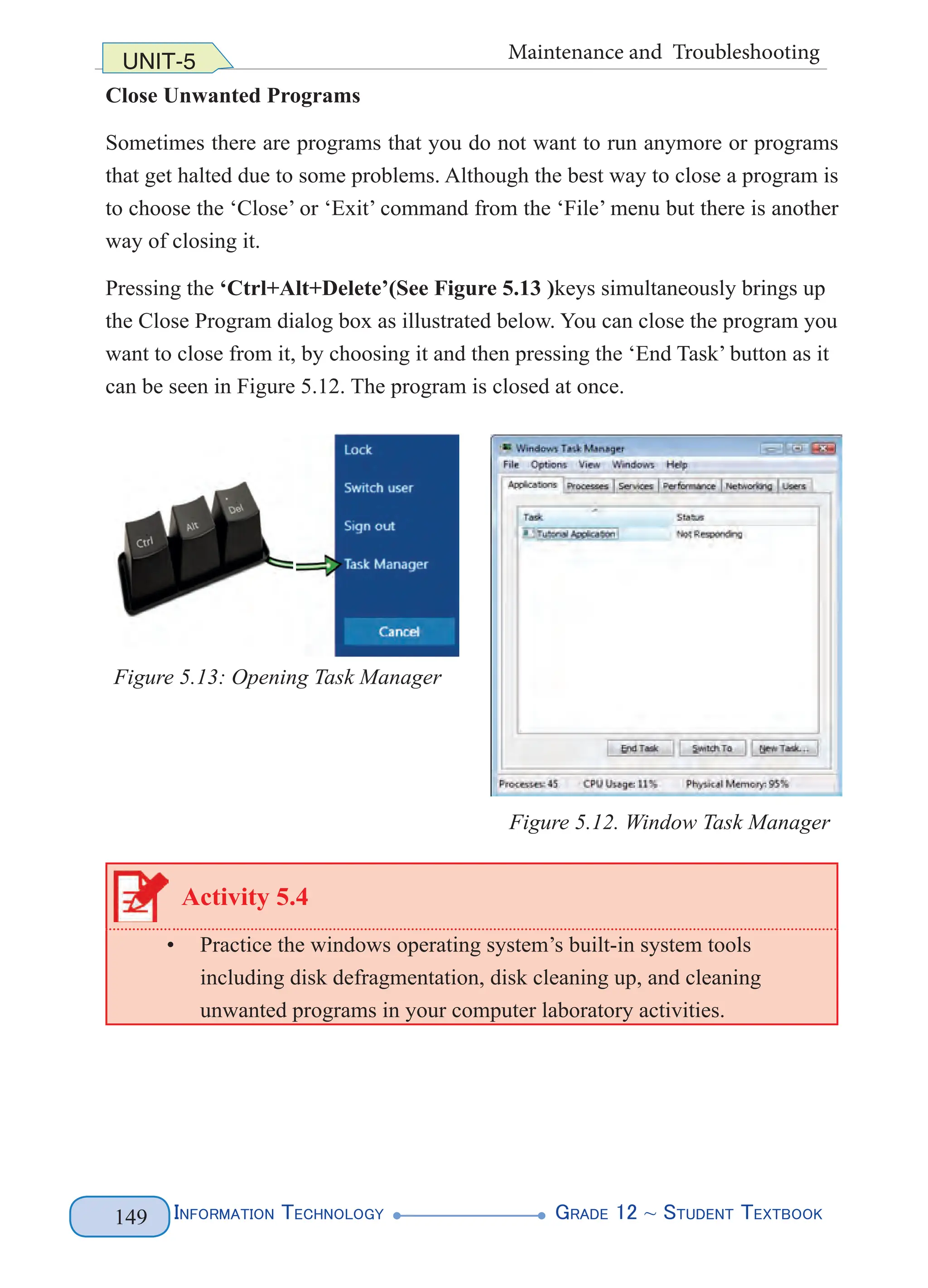
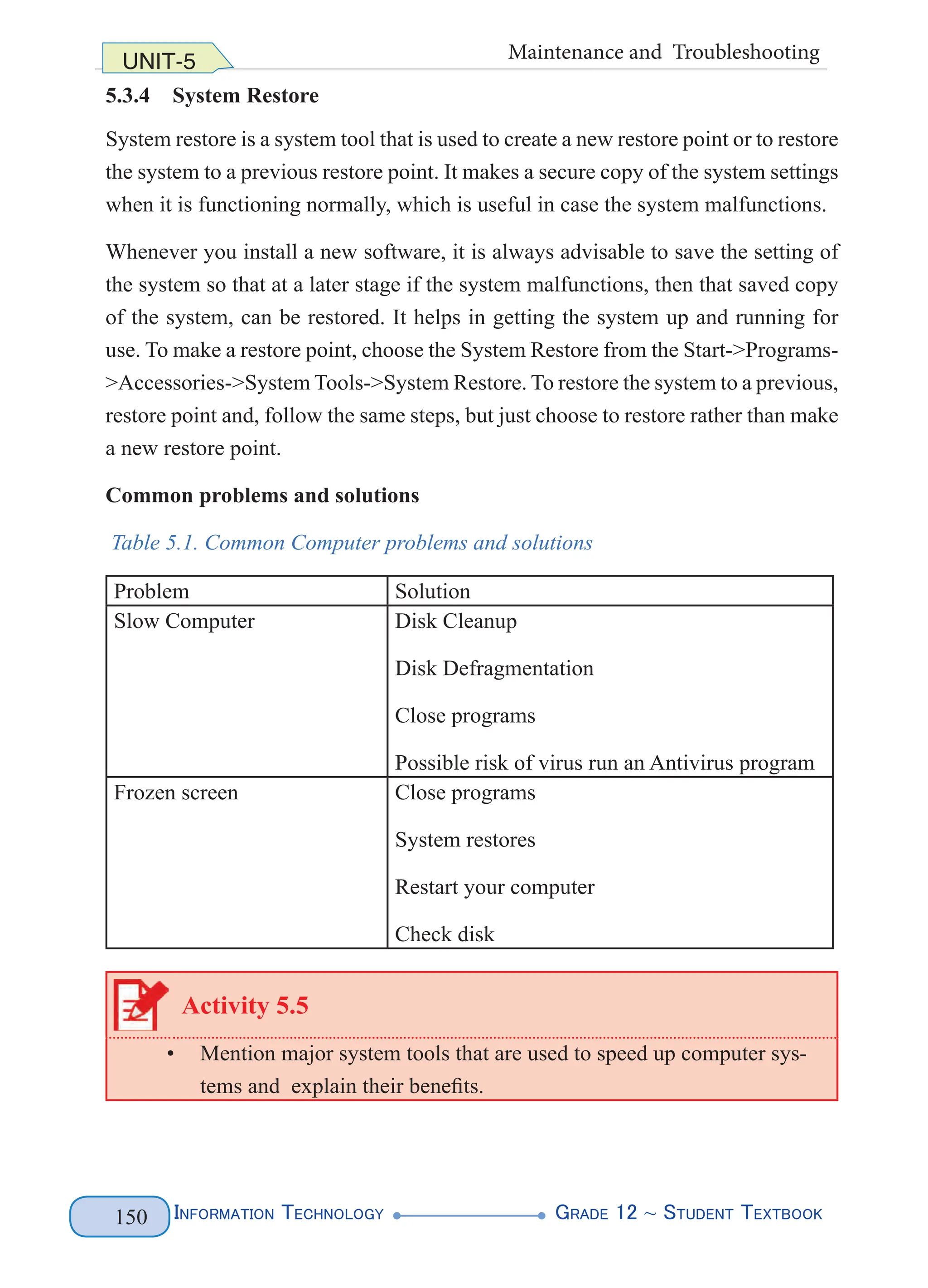
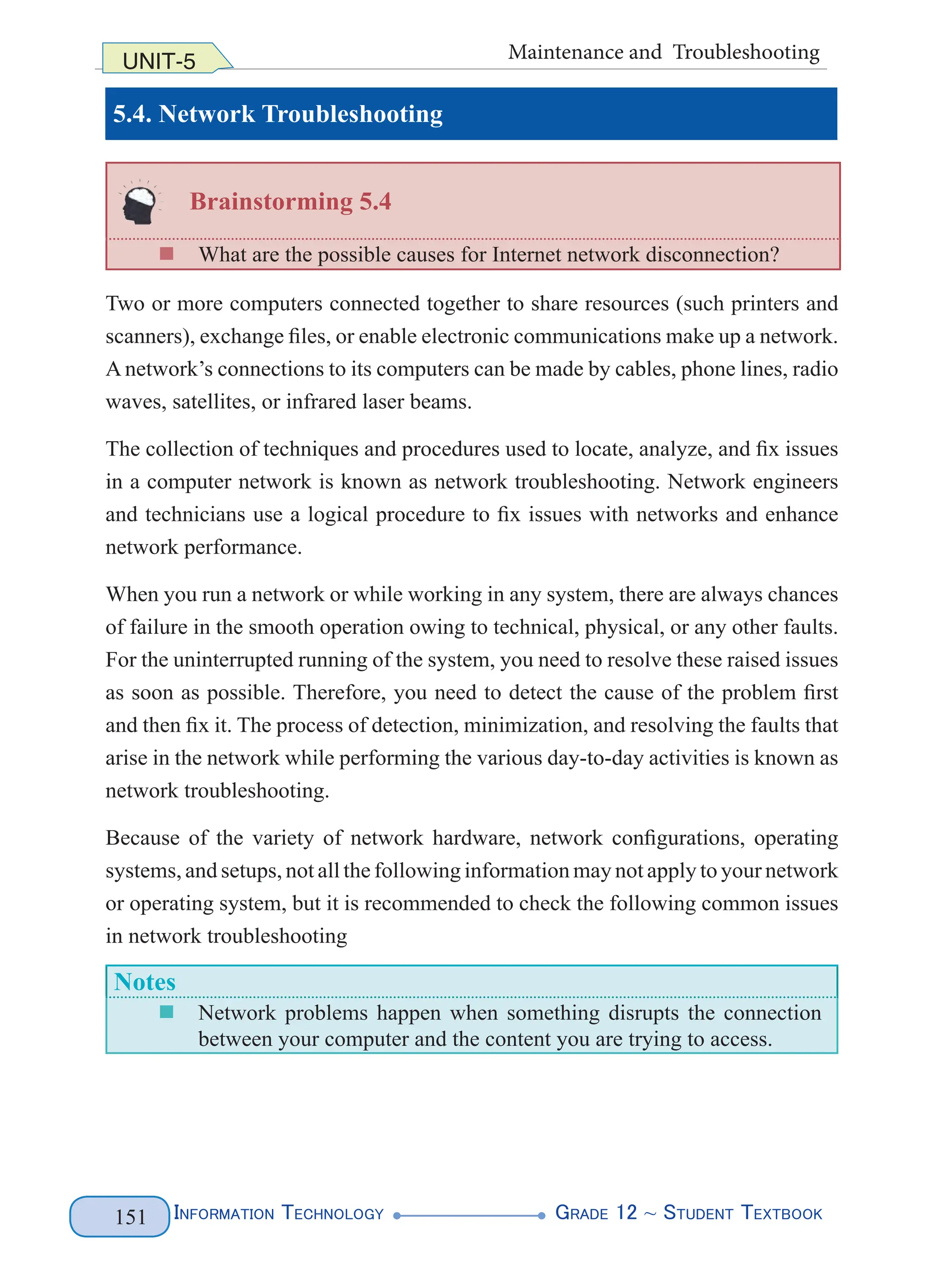
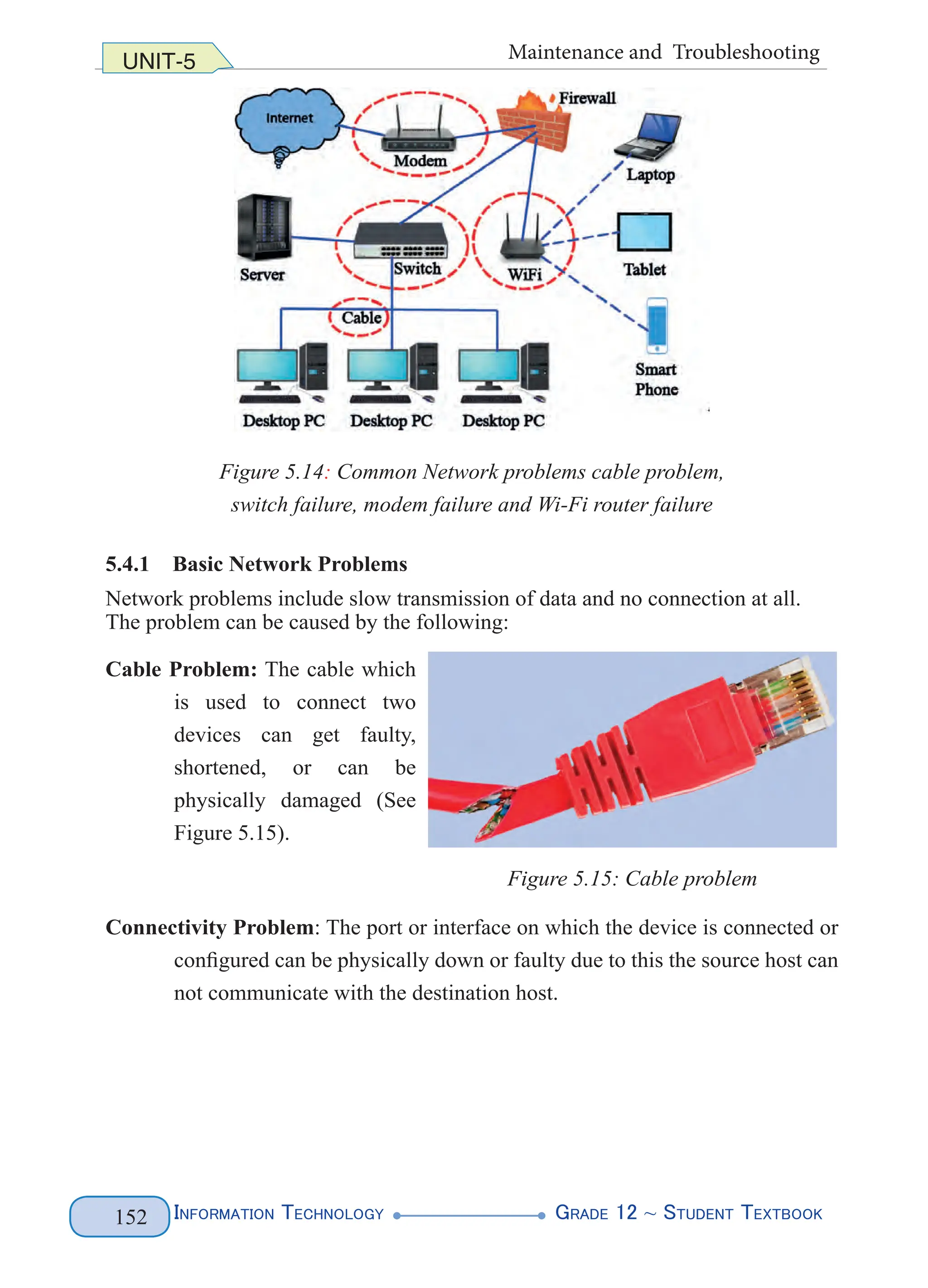
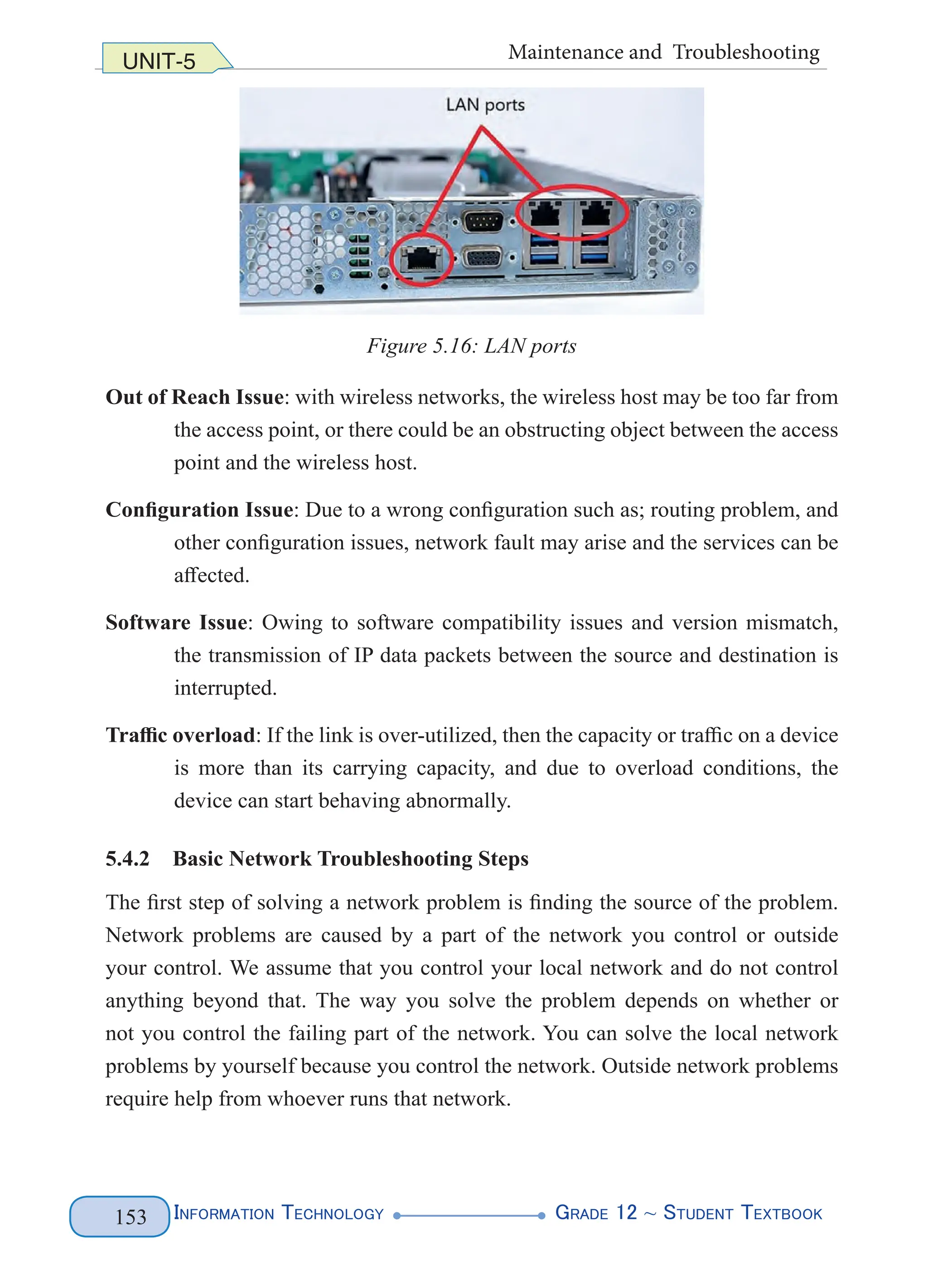

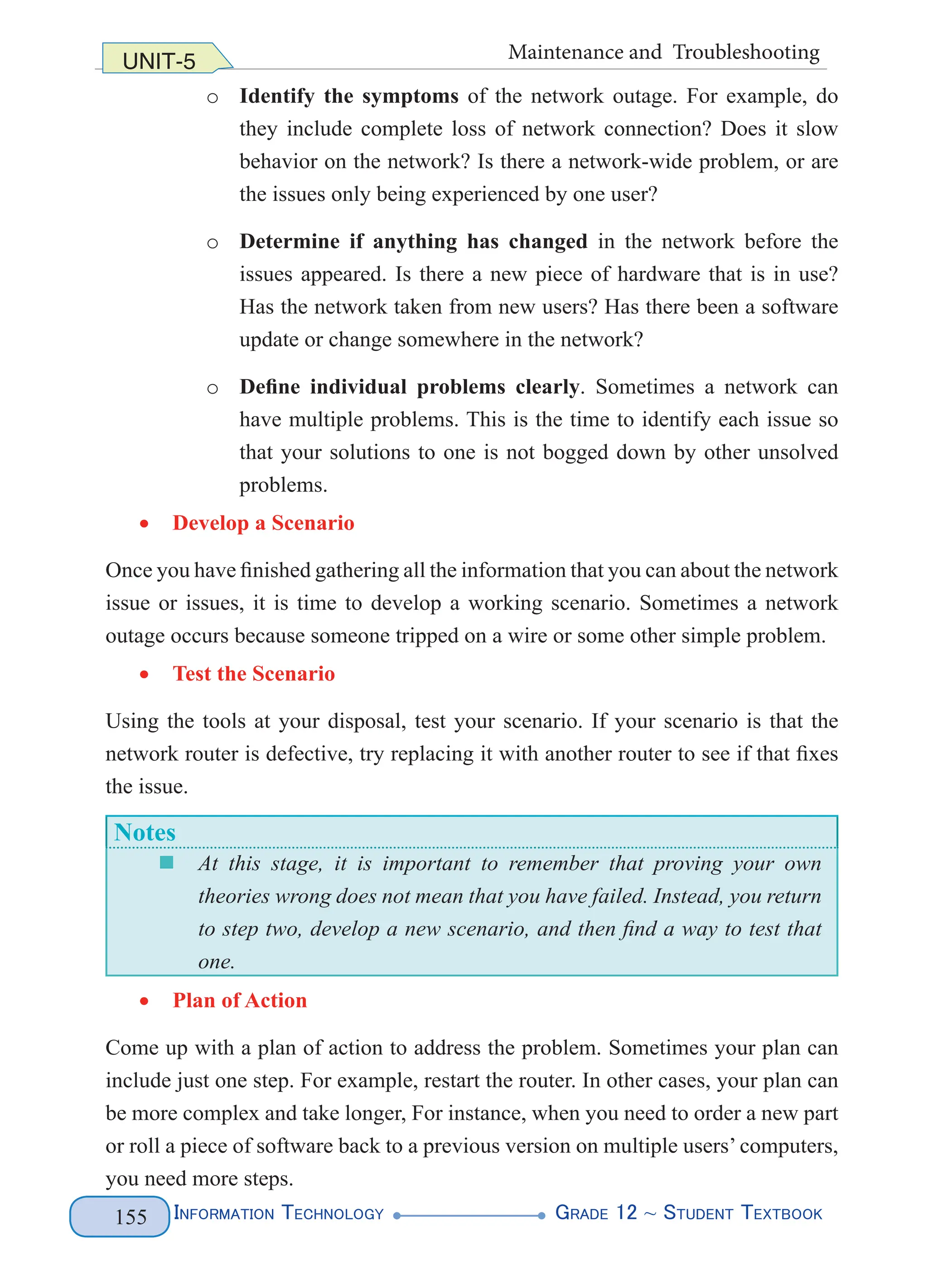
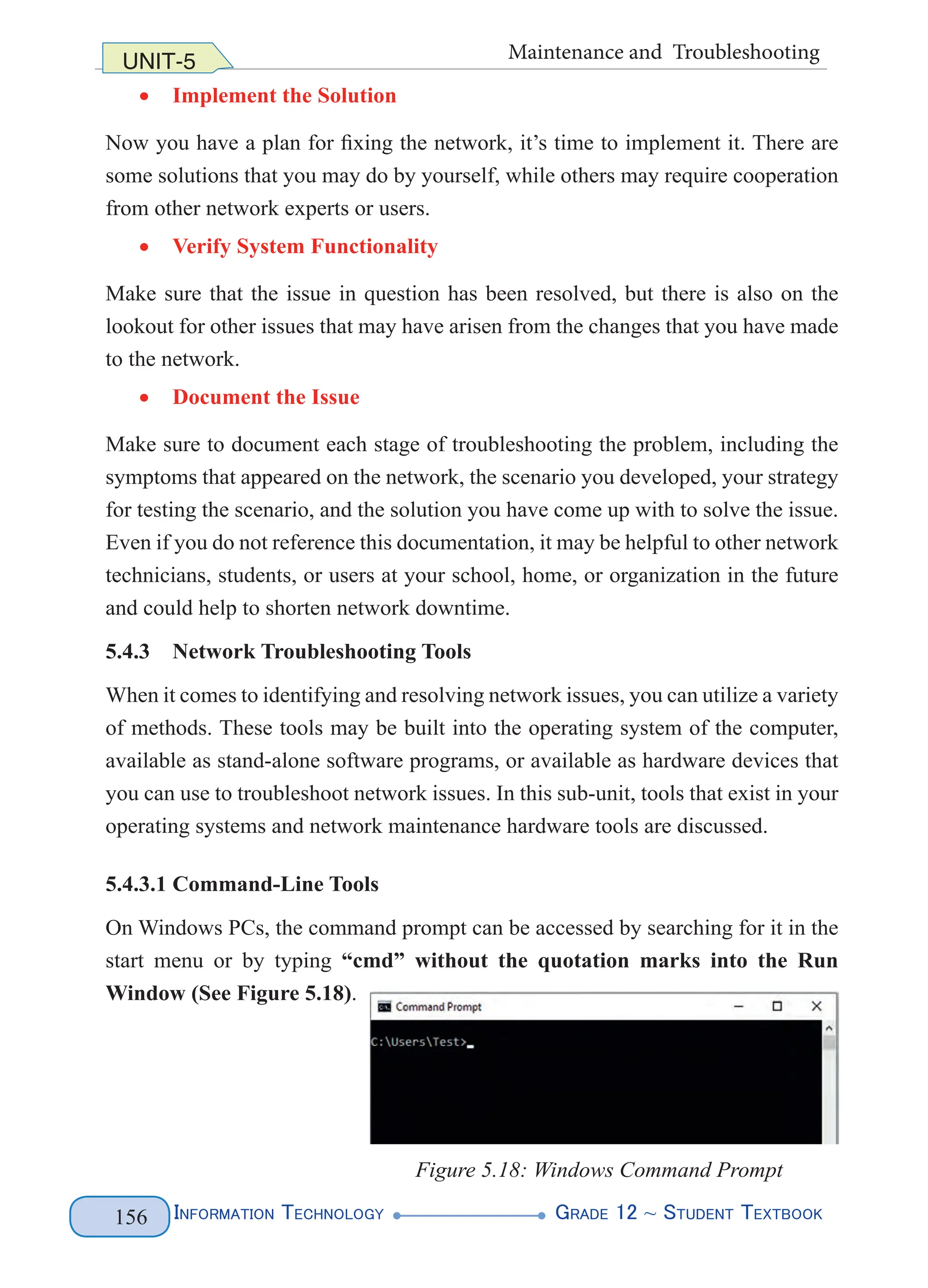
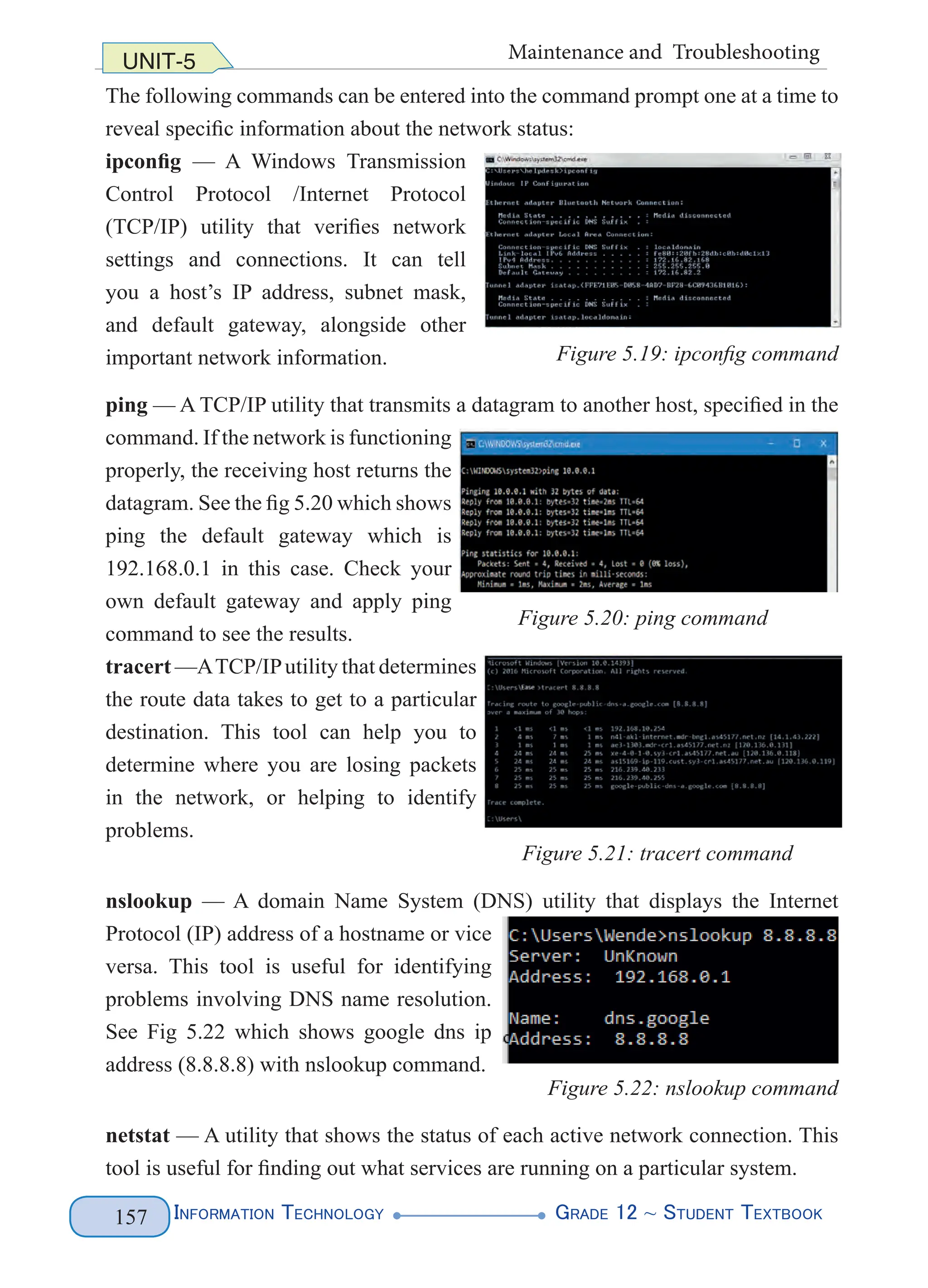

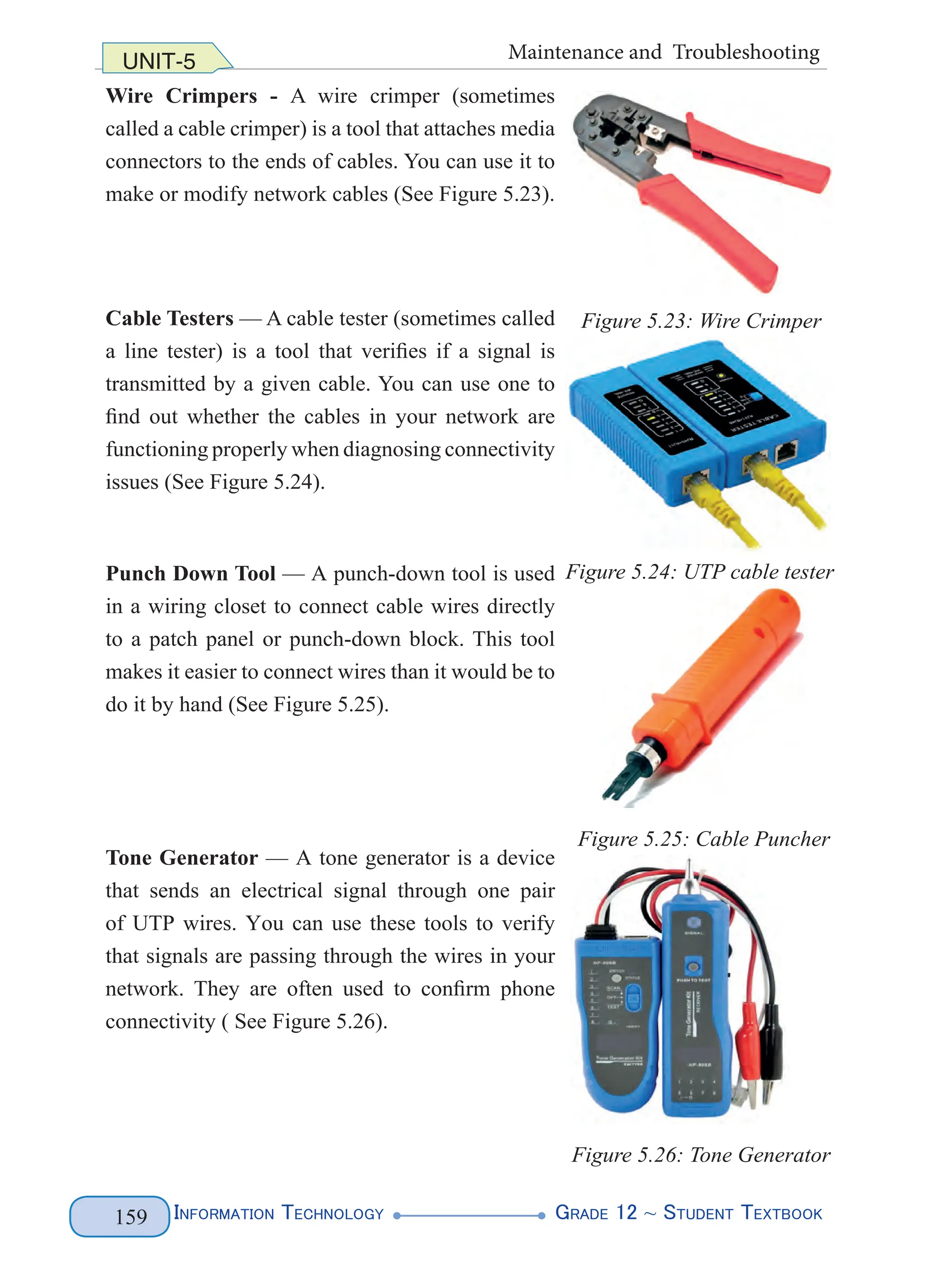

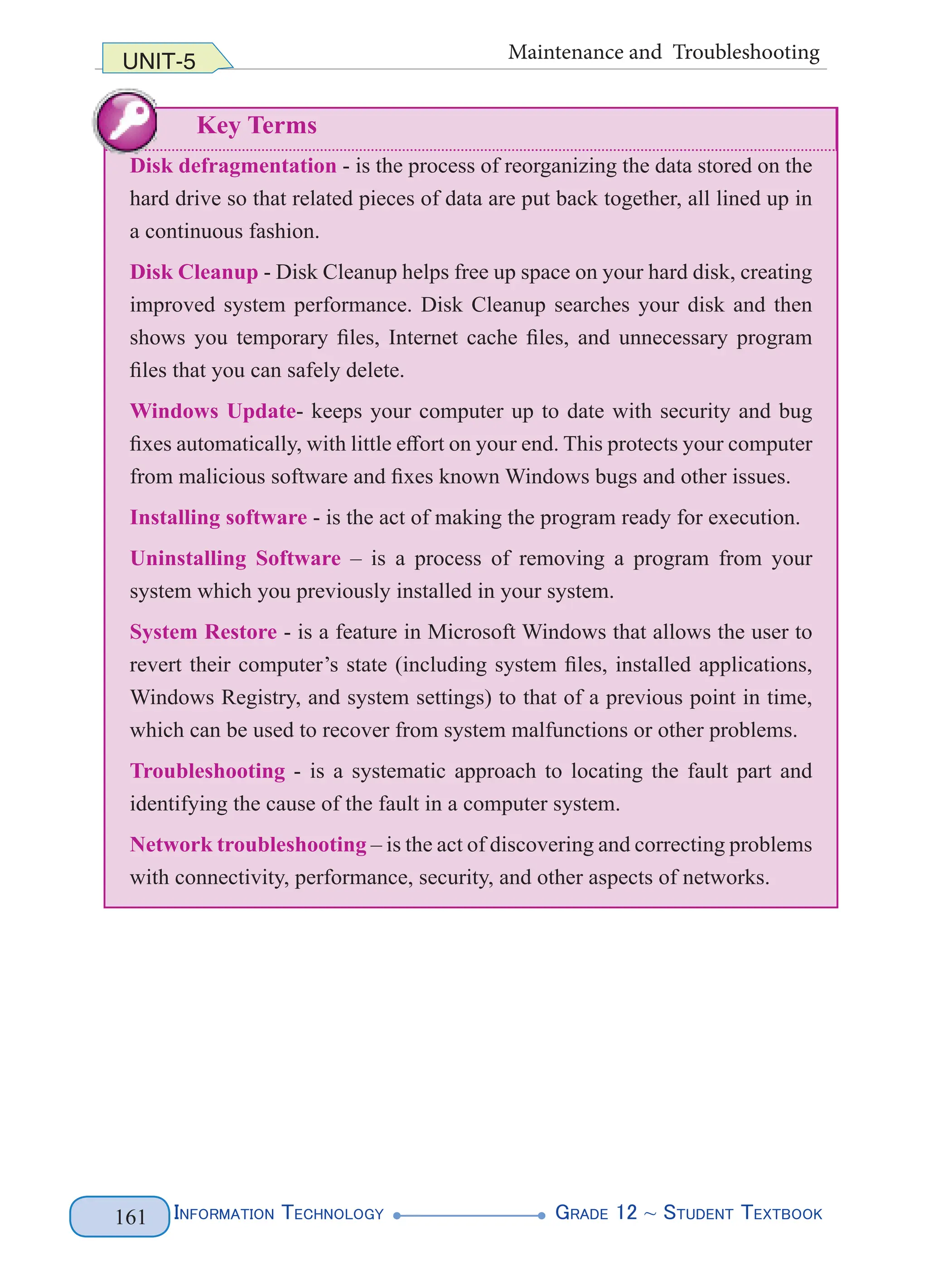
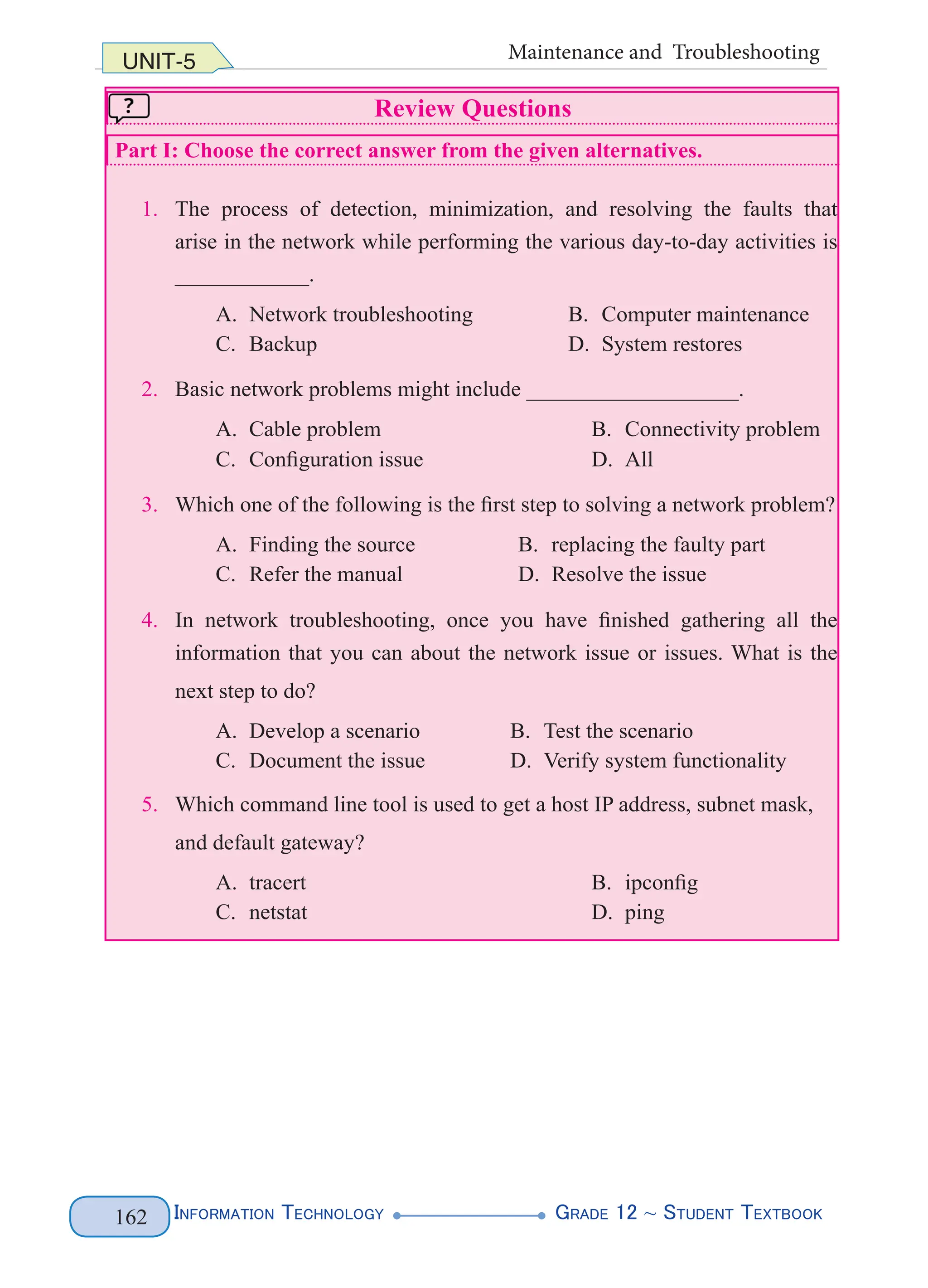
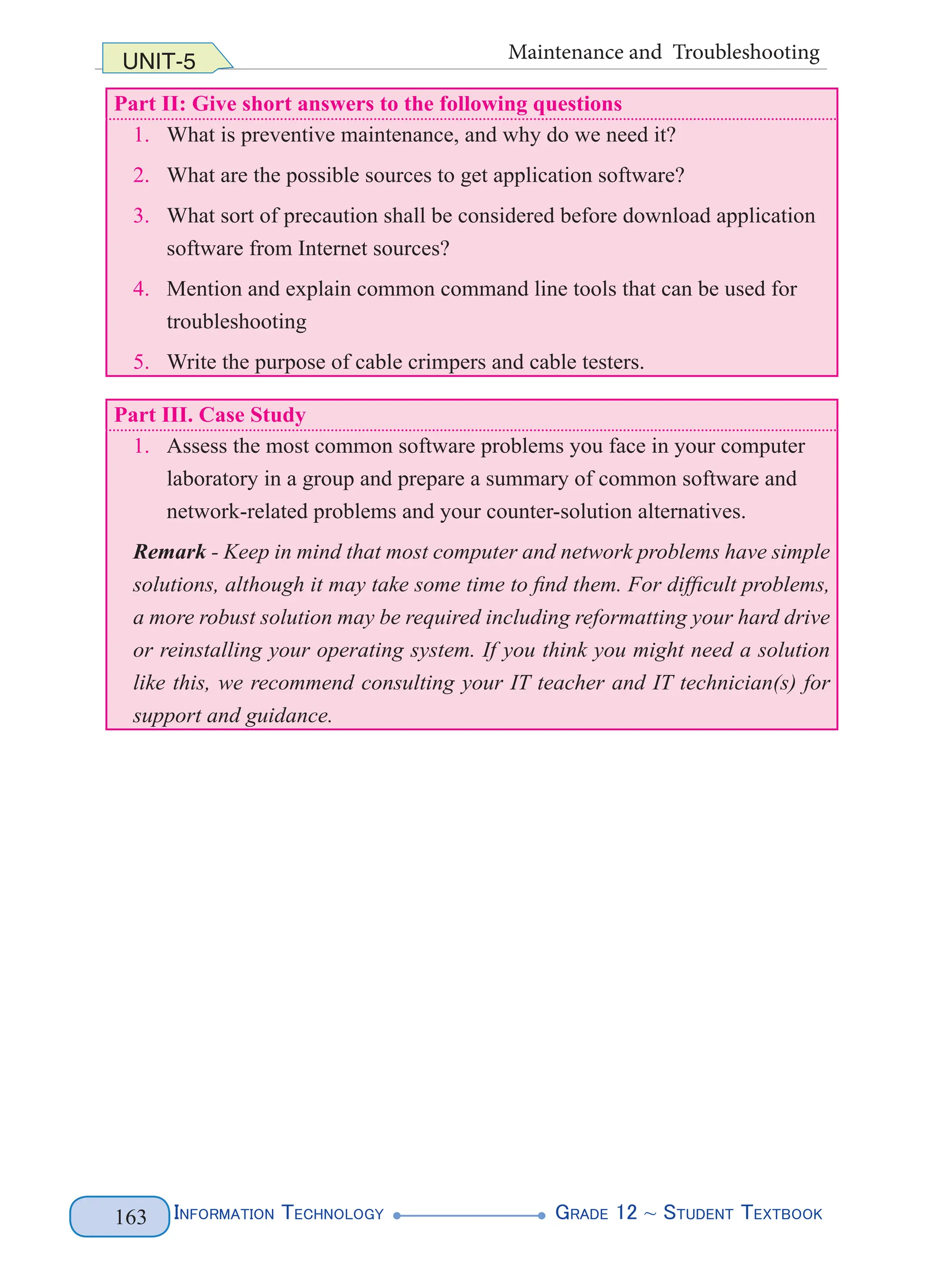

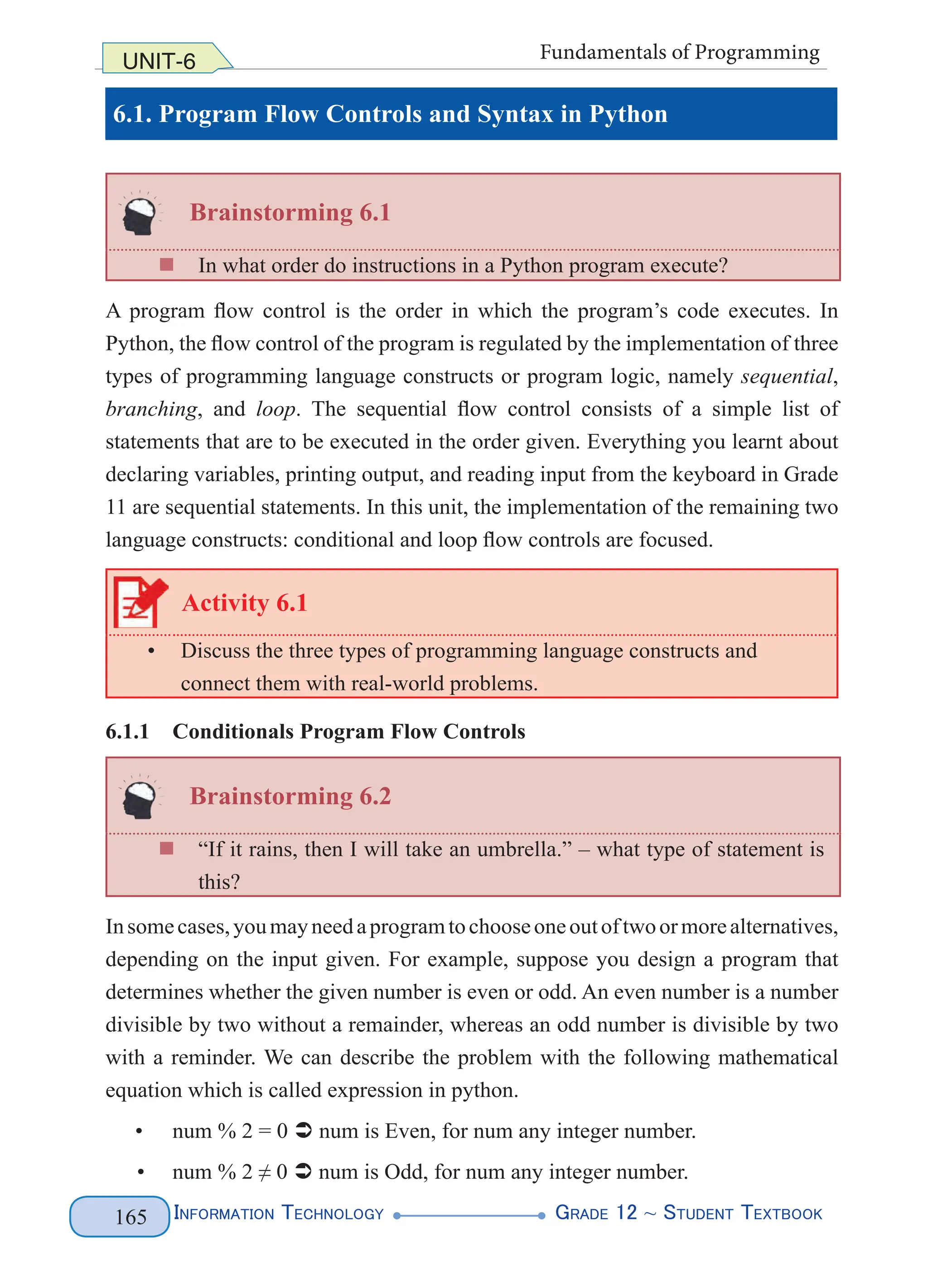
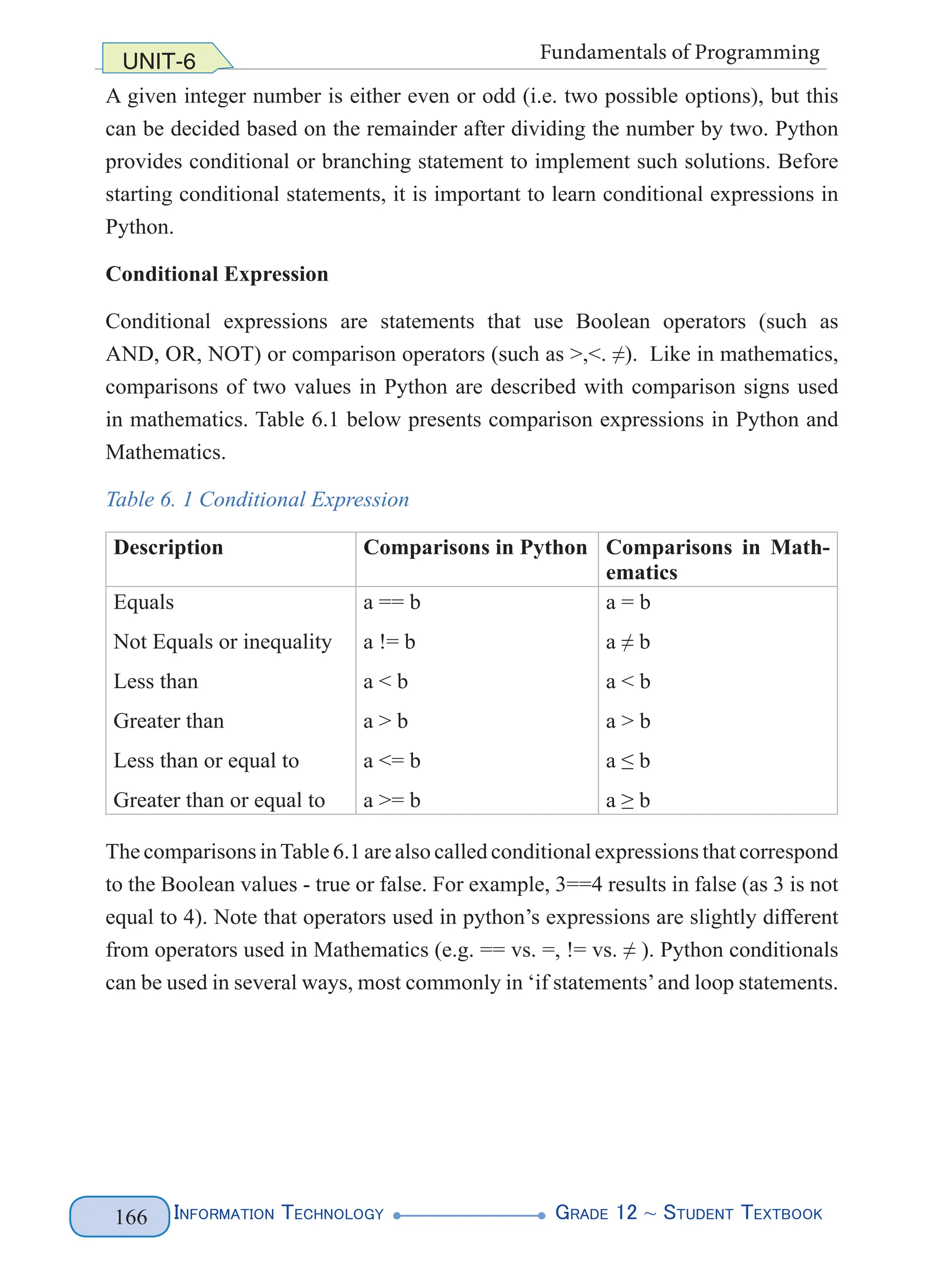
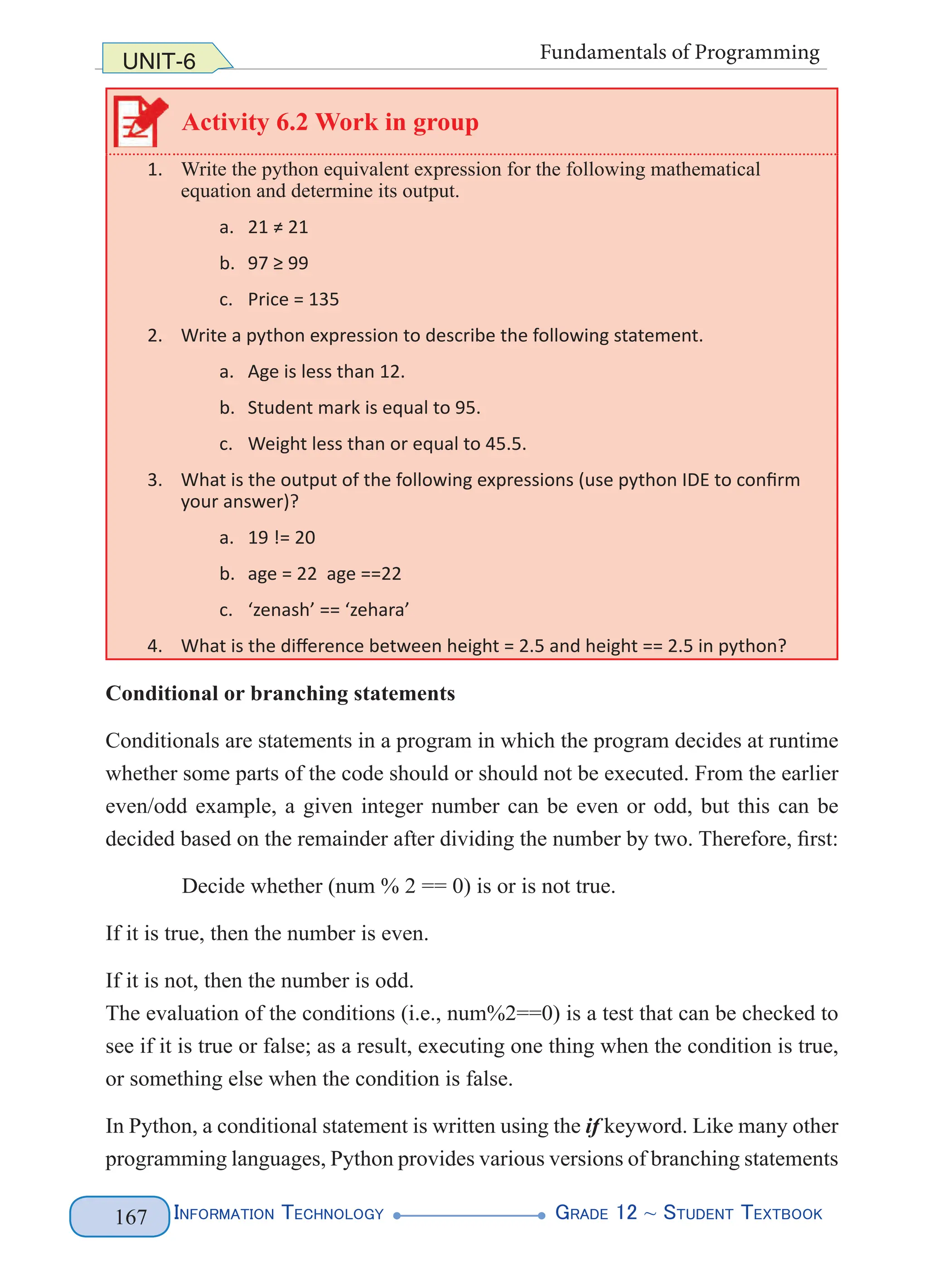
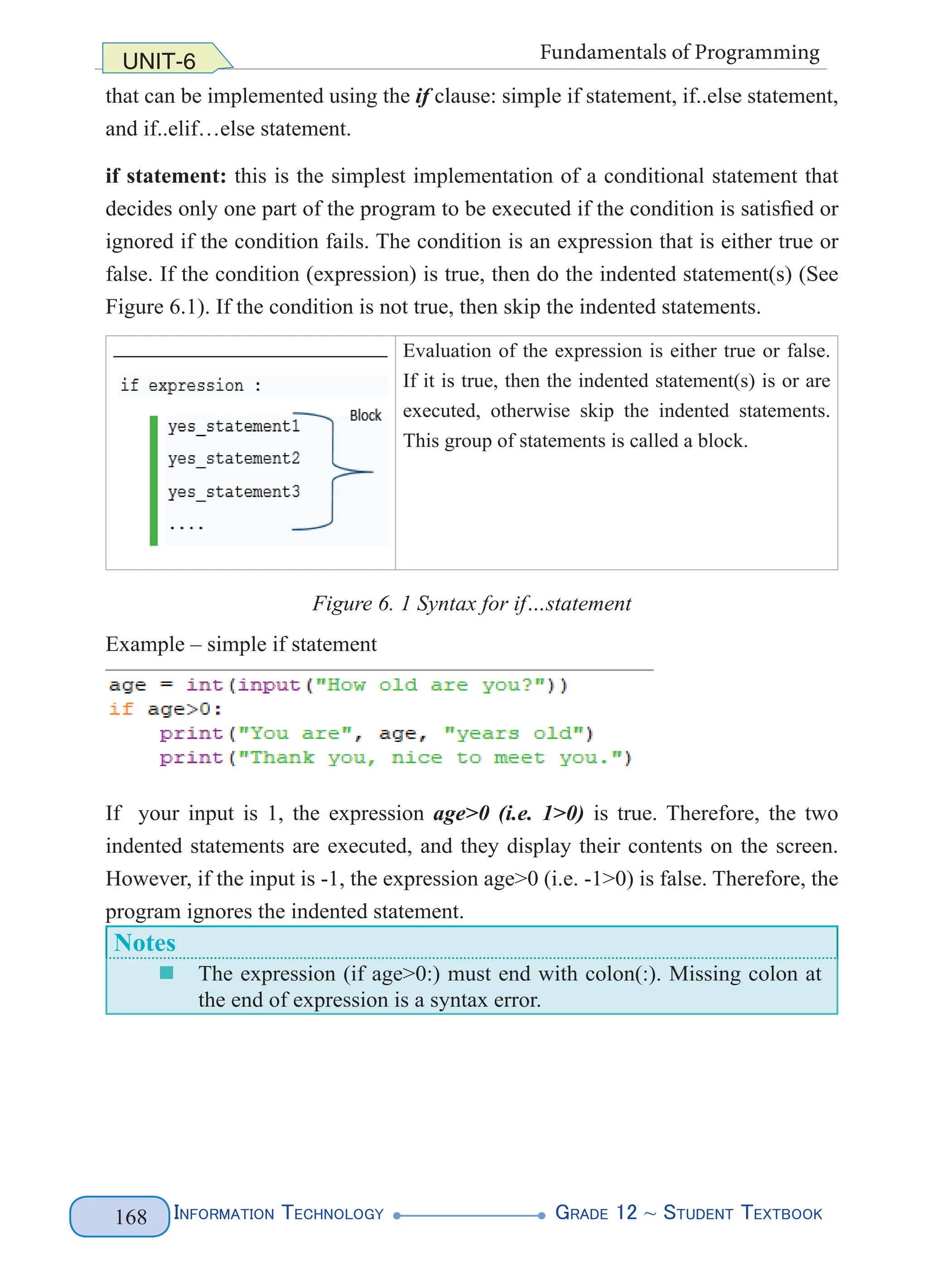
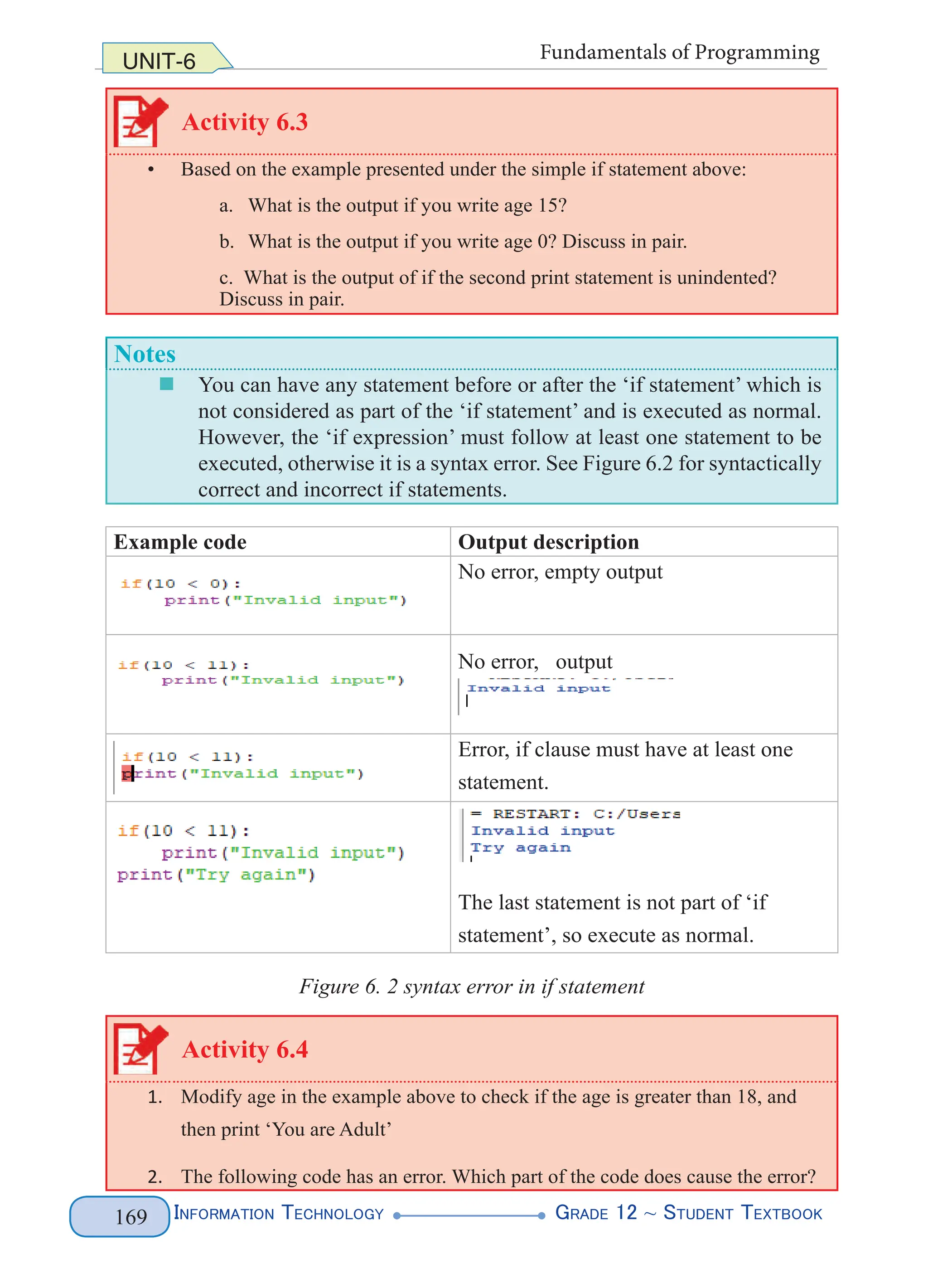
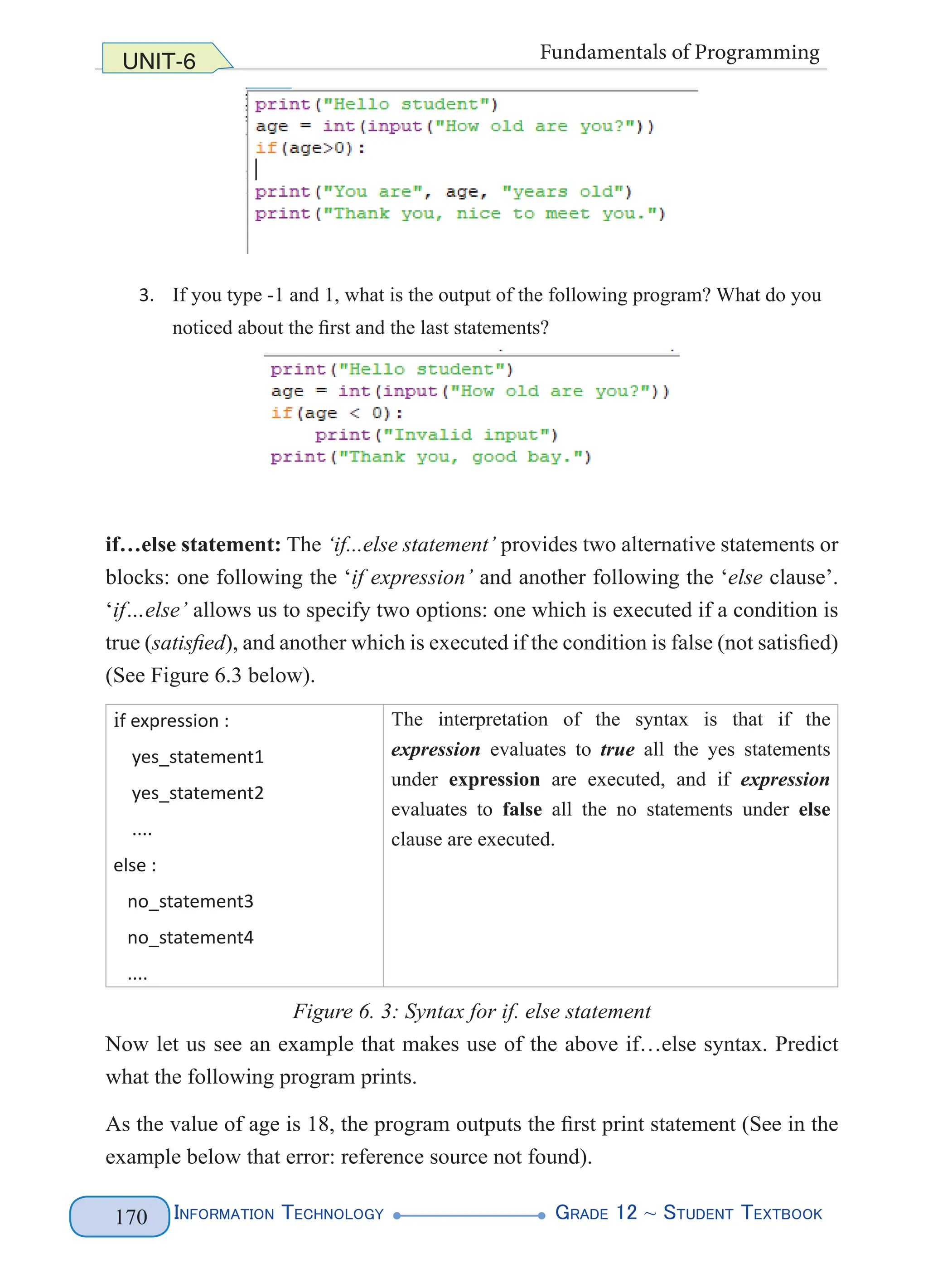
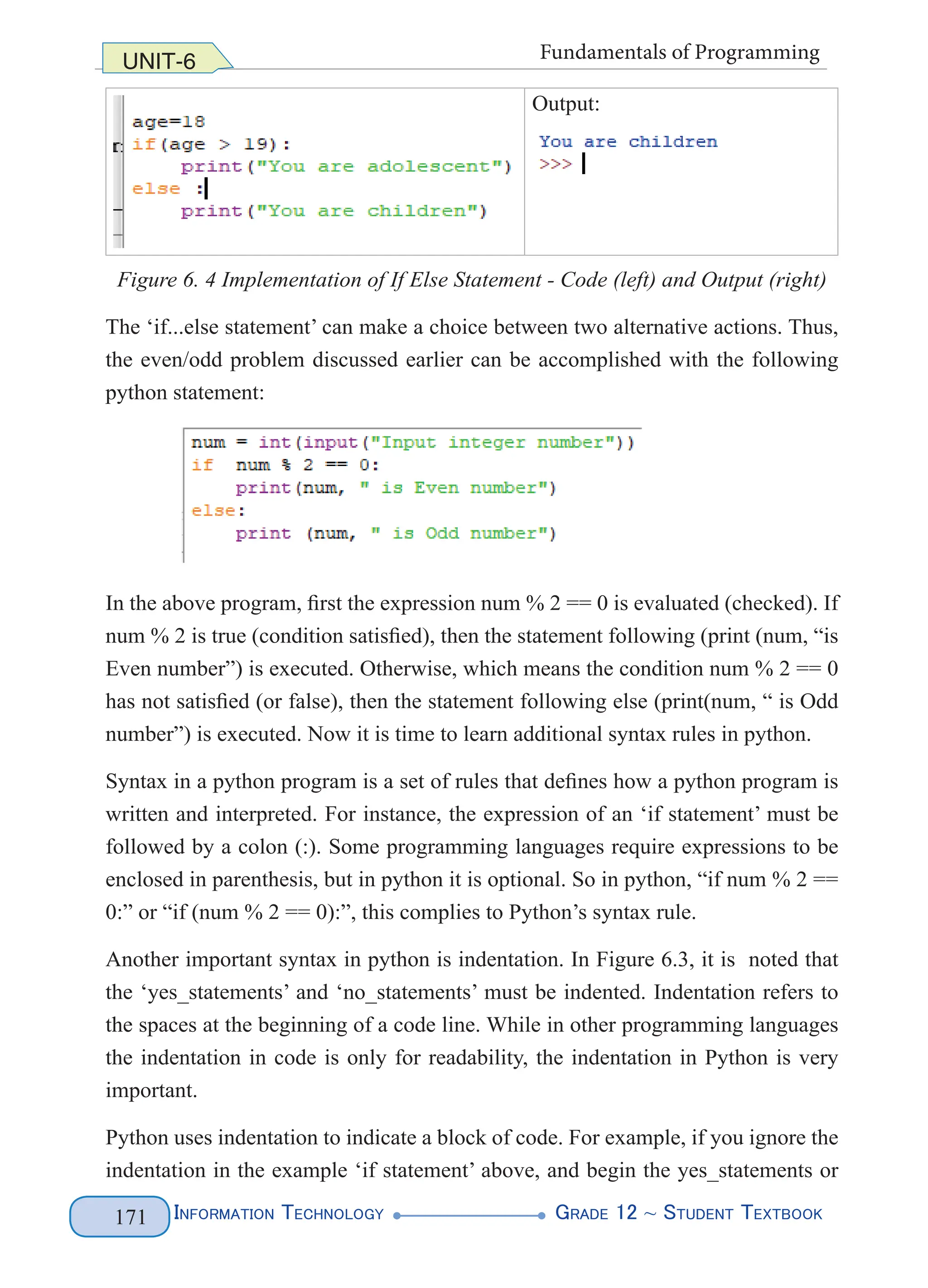
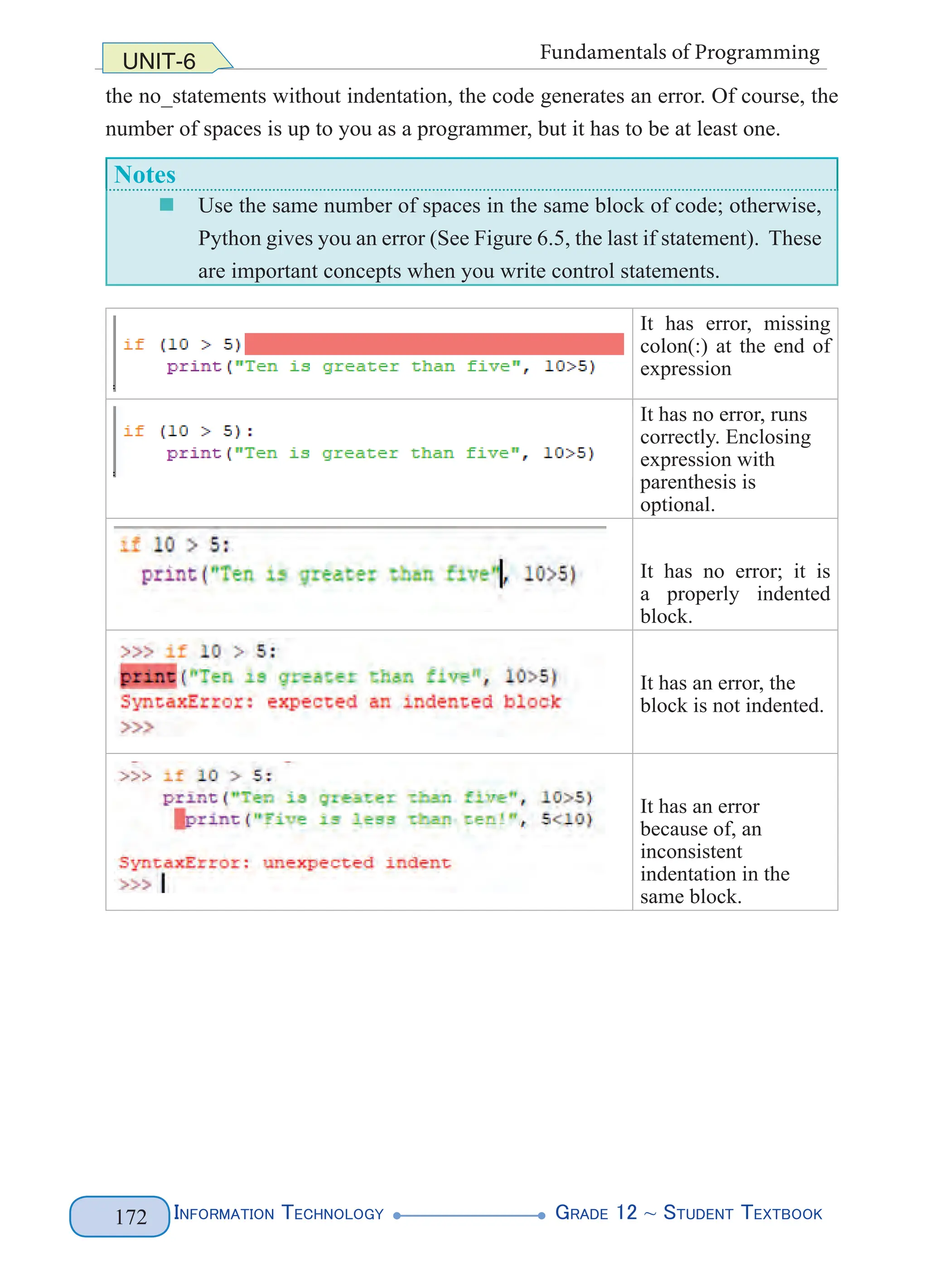
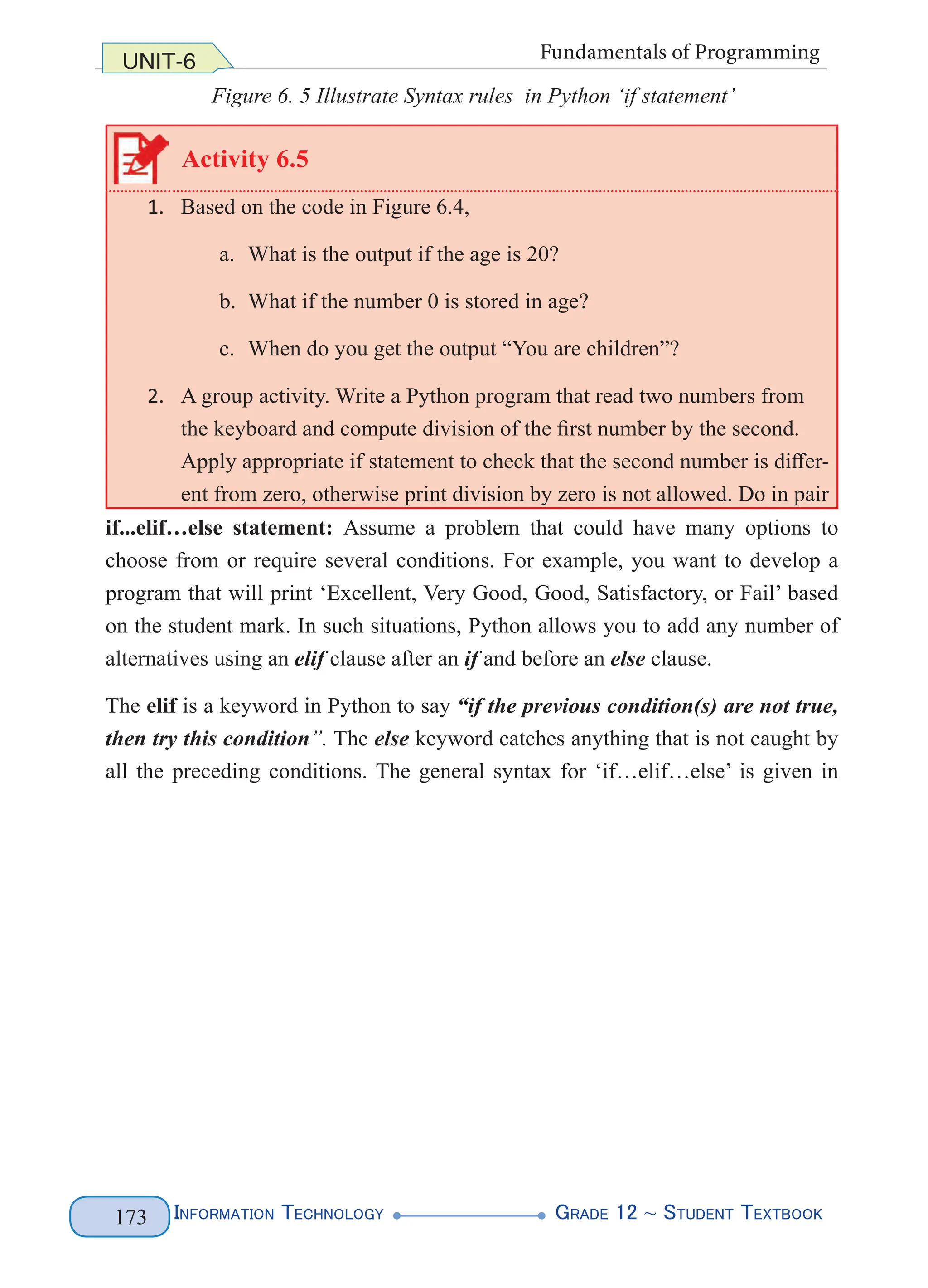
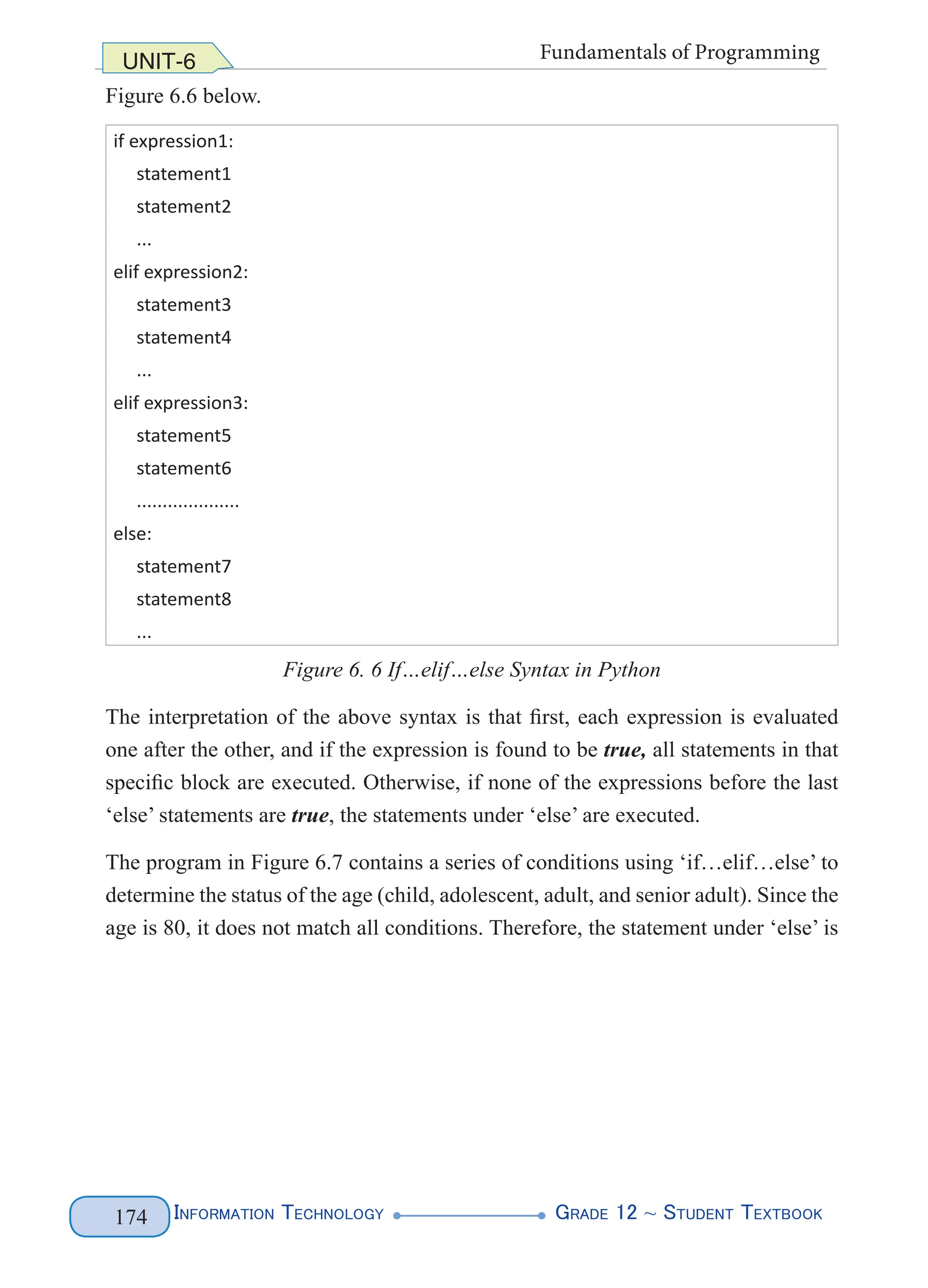
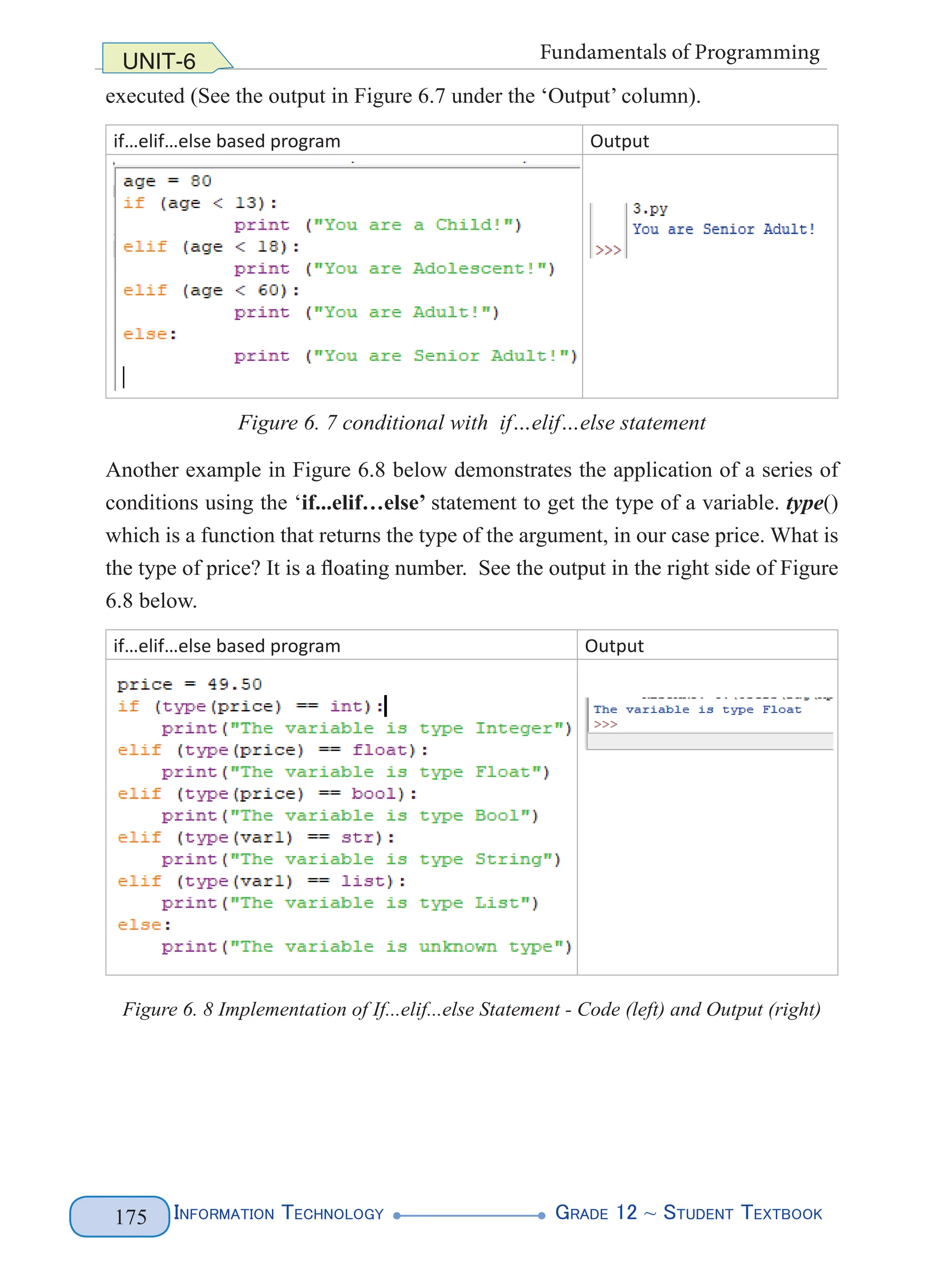
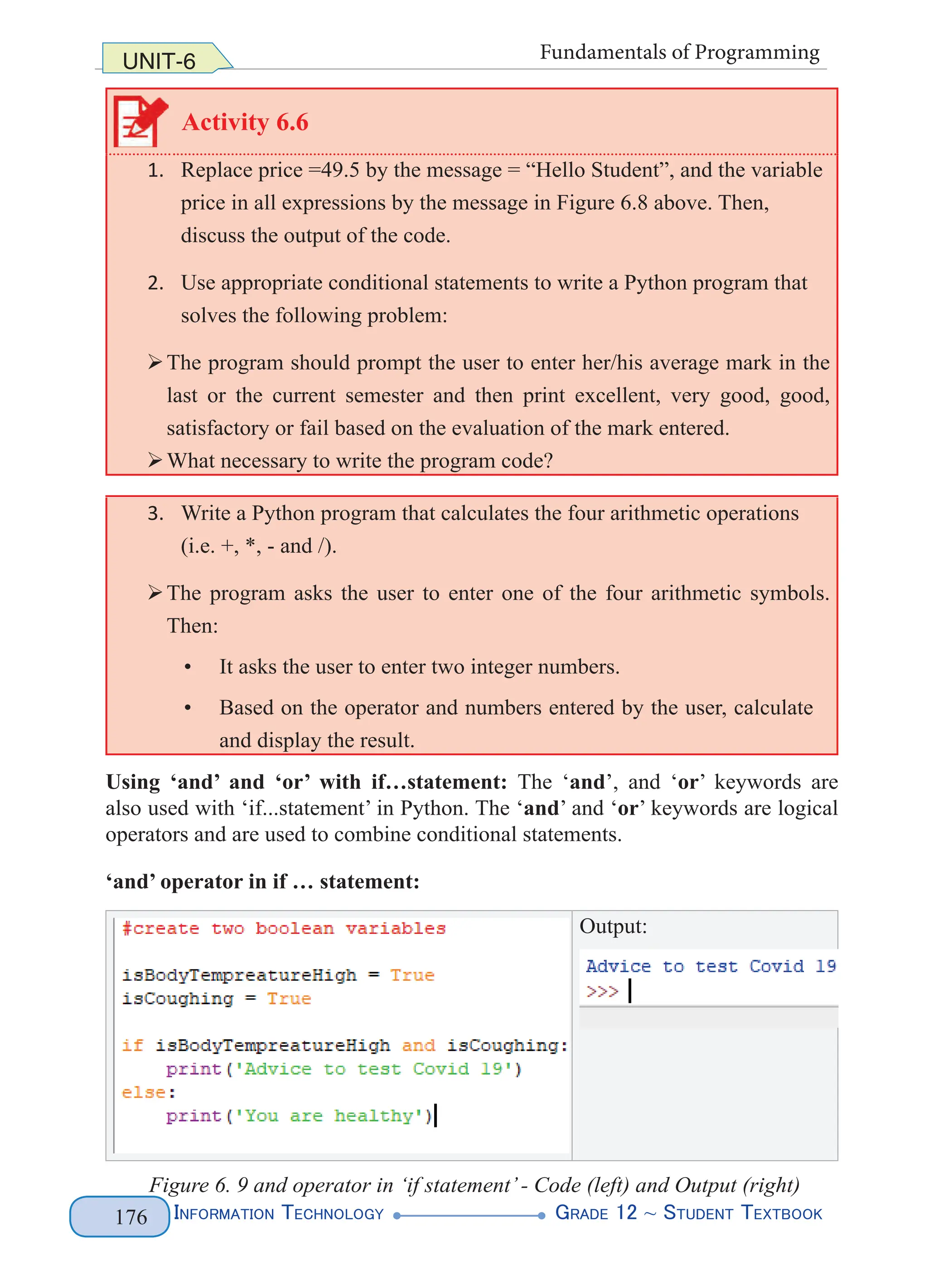

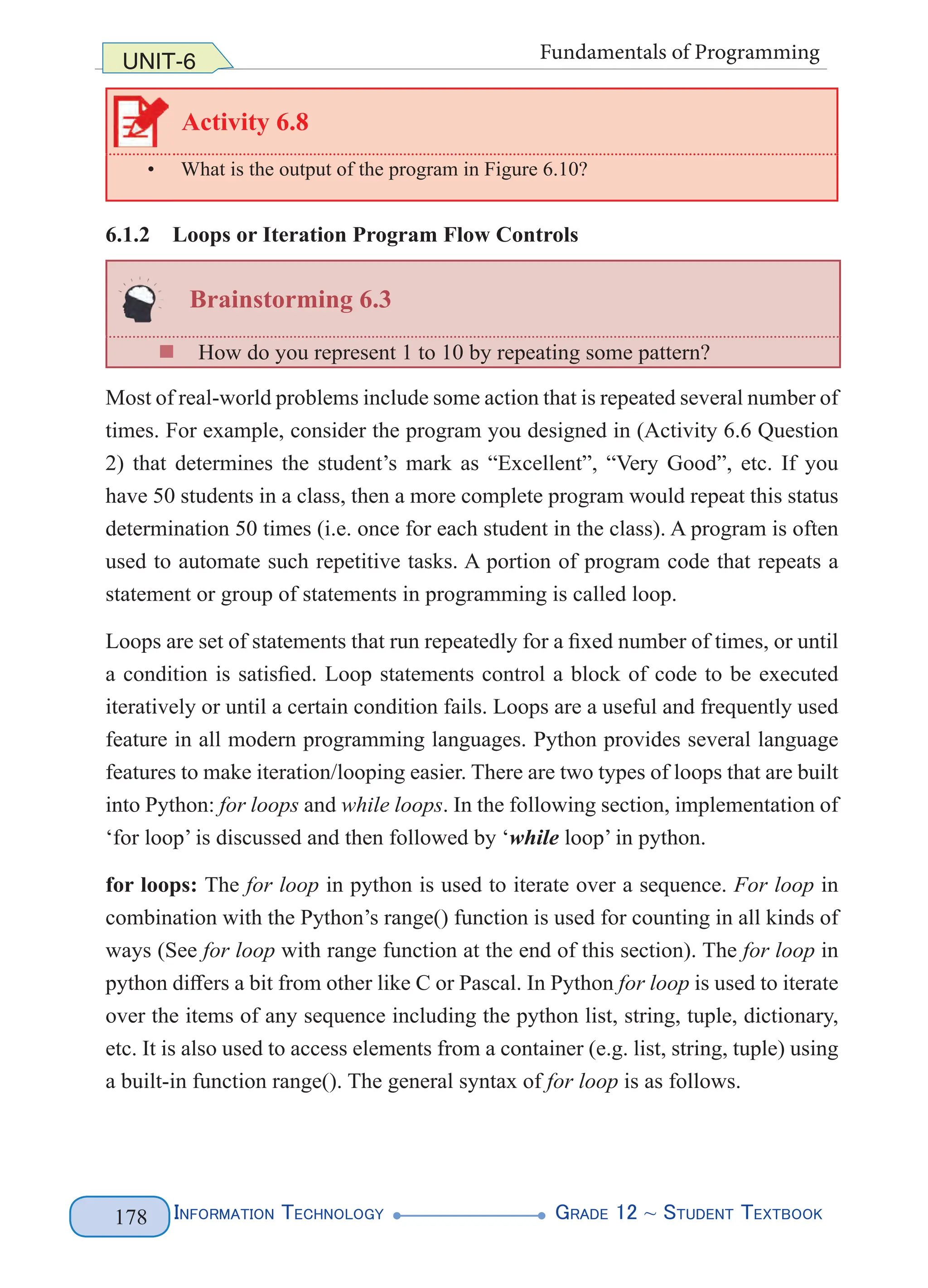
![Information Technology G
rade 12 ~ Student Textbook
179
UNIT-6 Fundamentals of Programming
Syntax:
for variable_name in sequence :
statement_1
statement_2
[....]
Figure 6. 11 For Loop Syntax in Python
The description of the above for loop syntax is:
Name Description
variable_name This represents a temporary variable that sets a new
value for each iteration of the loop.
Sequence Sequences are values that can be assigned to a
temporary variable (i.e. variable_name). Values are
provided using a list or a string or from the built-in
function range().
Statement_1, state-
ment_2
[..]
These represents a block of program statements.
Python’s syntax requires this to be indented.
for loop with range() function: The range() function returns a list of consecutive
integers. The sequence of numbers starts from 0 by default, and counts by
incrementing 1(by default), and ends at a specified number. It is widely used count
controlled loops.
Notes
„
„ In the syntax below, the range() function takes one, two, or three
parameters. The last two parameters are optional.
Syntax Example
range(x)
range(x,y)
range(x,y,z)
range(5)generate sequence 0 to 4
range(2,5)generate sequence 2 to 4
range(1,10,2)generate sequence 1,3,5,7,9
Figure 6. 12 Range Function Syntax with One, Two, and Three Parameters
range(x): generates a sequence of numbers from 0 to x, excluding x, incrementing
by 1. Figure 6.13 demonstrates a simple counter program using range(5).](https://image.slidesharecdn.com/g12-it-stb-2023-web-240506201855-05da823c/75/G12-IT-this-is-information-technology-text-for-all-186-2048.jpg)
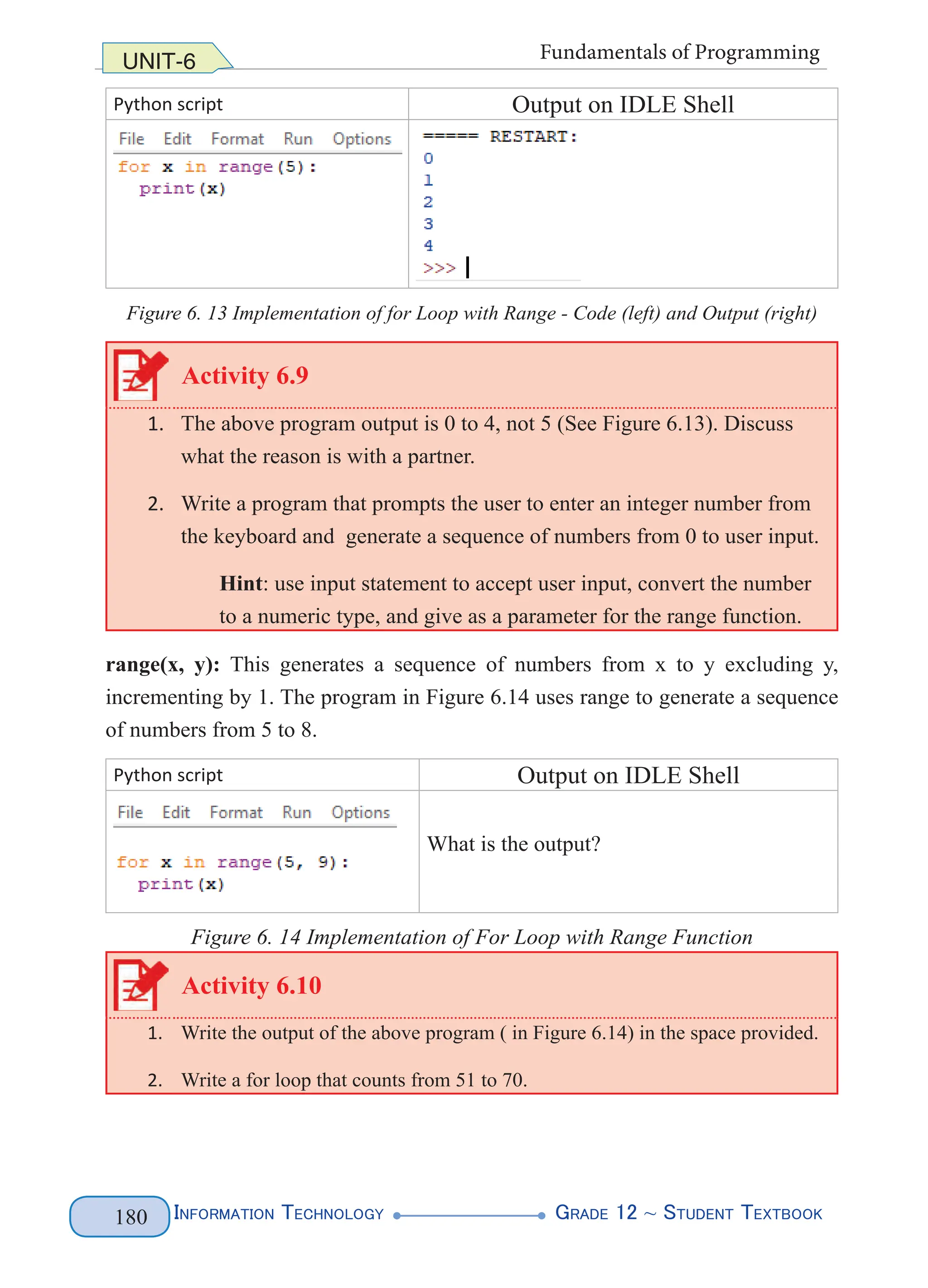
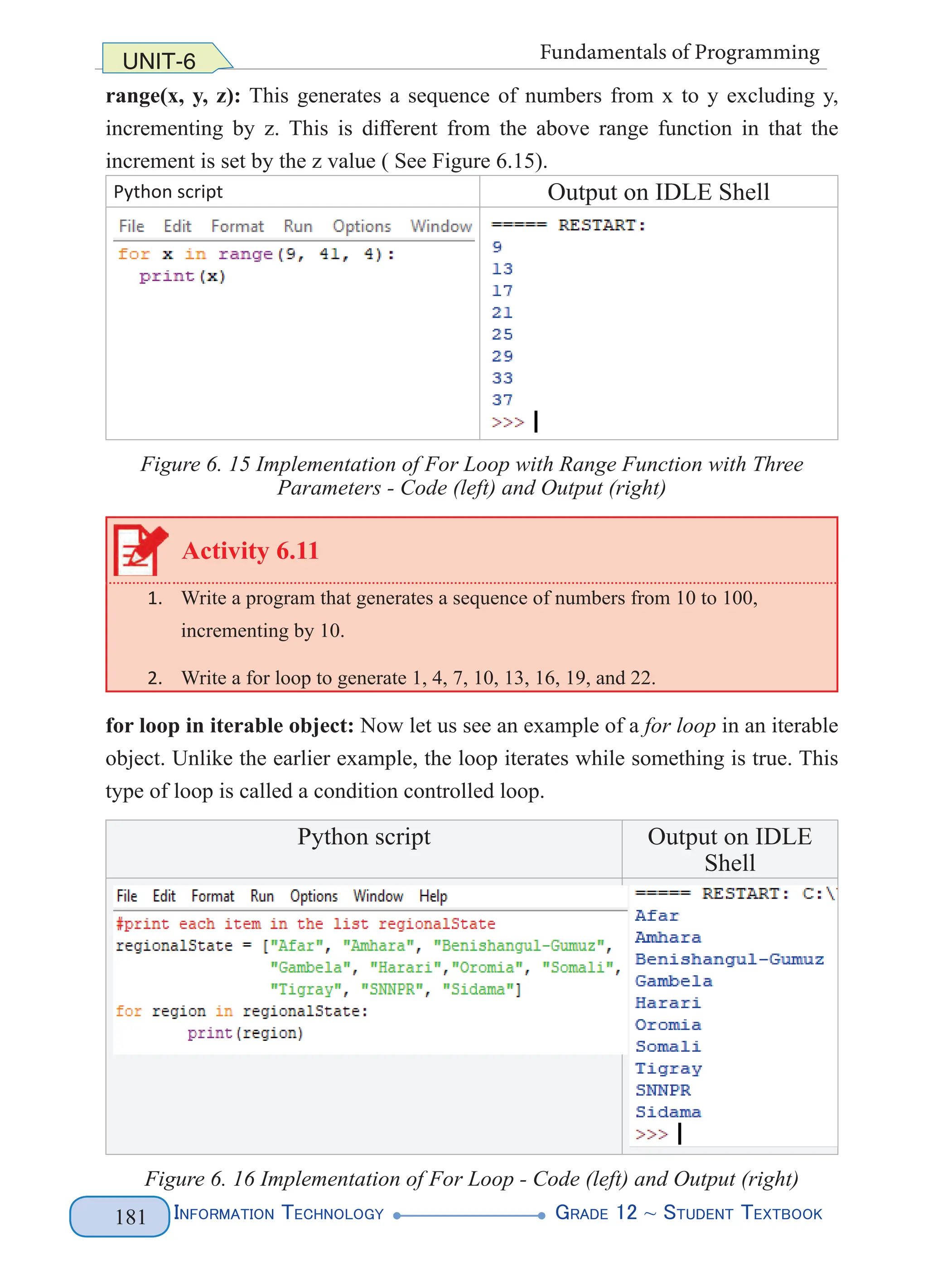
![Information Technology G
rade 12 ~ Student Textbook
182
UNIT-6 Fundamentals of Programming
The for loop program in Figure 6.16 is condition controlled. The ‘regionalState’
is a sequence that contains a list of regional states. When the for loop is executed,
the first item (i.e. Afar) is assigned to the ‘region’. The ‘region’ is a temporary
variable that actually represents an element in the list.After this, the print statement
executes, and the process continues until we reach the end of the list (i.e. Sidama),
or while there is an element in the list. See the output in Figure 6.16 above on the
right hand side.
Activity 6.12
Write a for loop statement that displays the following list of fruits.
• fruits = [“Mango”, “Orange”, “Banana”, “Pineapple”, “Papaya” ];
Syntax: for variable_name in string
for loop can iterate through string. The string is an iterable object in python because
it contains a sequence of characters. Thus, applying for loop in a string allows us
to access the content character by character.
Python script Output on IDLE Shell
Figure 6. 17 for Loop in a String
In the above program, in each iteration, one character is accessed from the string
value and stored in the letter variable, and printed on the screen. The iteration
continues until the last character (i.e. m) is accessed and printed on the screen.](https://image.slidesharecdn.com/g12-it-stb-2023-web-240506201855-05da823c/75/G12-IT-this-is-information-technology-text-for-all-189-2048.jpg)
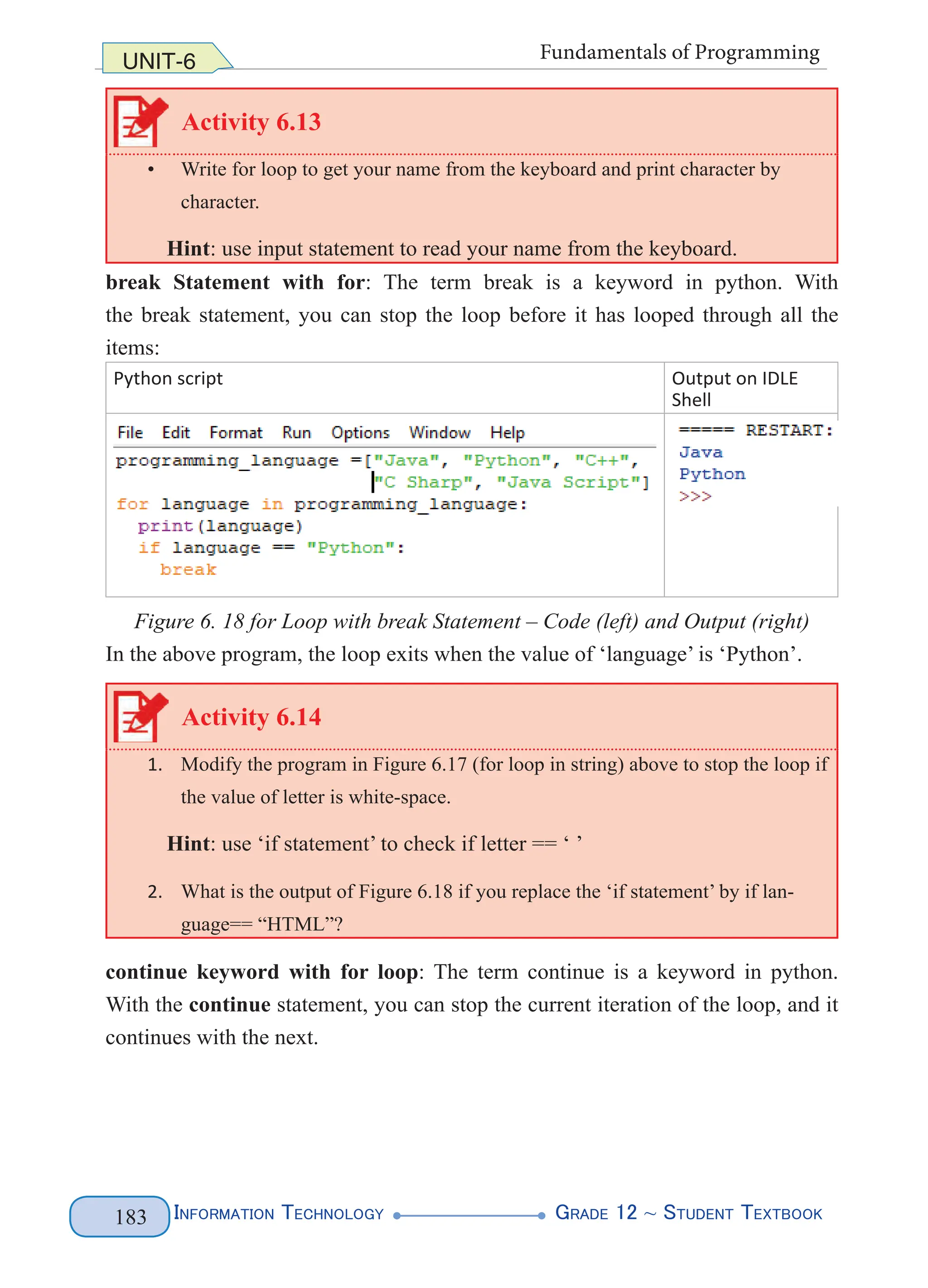
![Information Technology G
rade 12 ~ Student Textbook
184
UNIT-6 Fundamentals of Programming
Python script Output on IDLE
Shell
Figure 6.19 for loop with continue statement - Code (left) and Output (right)
Activity 6.15
• Modify the above statement to escape “Java” and “C++” using continue
keyword.
Hint: use the operator to combine the condition if language ==”Java” or
language==”C++”.
while Statement: The while statement in Python supports repeated execution of a
statement or block of statements that is controlled by a conditional expression. The
general syntax for the while statement is:
Syntax:
while expression:
Statement_1
Statement_2
[…]
Note that in python expression must end by
colon(:). Statements under the while must be
indented.
Figure 6. 20 while loop syntax
The while loop runs as long as the condition (expression) evaluates to True
and executes the program block (statement_1, statement_2 …). The expression
is checked every time at the beginning of the loop and the first time when the
expression evaluates to False, the loop stops without executing any remaining
statement(s).](https://image.slidesharecdn.com/g12-it-stb-2023-web-240506201855-05da823c/75/G12-IT-this-is-information-technology-text-for-all-191-2048.jpg)

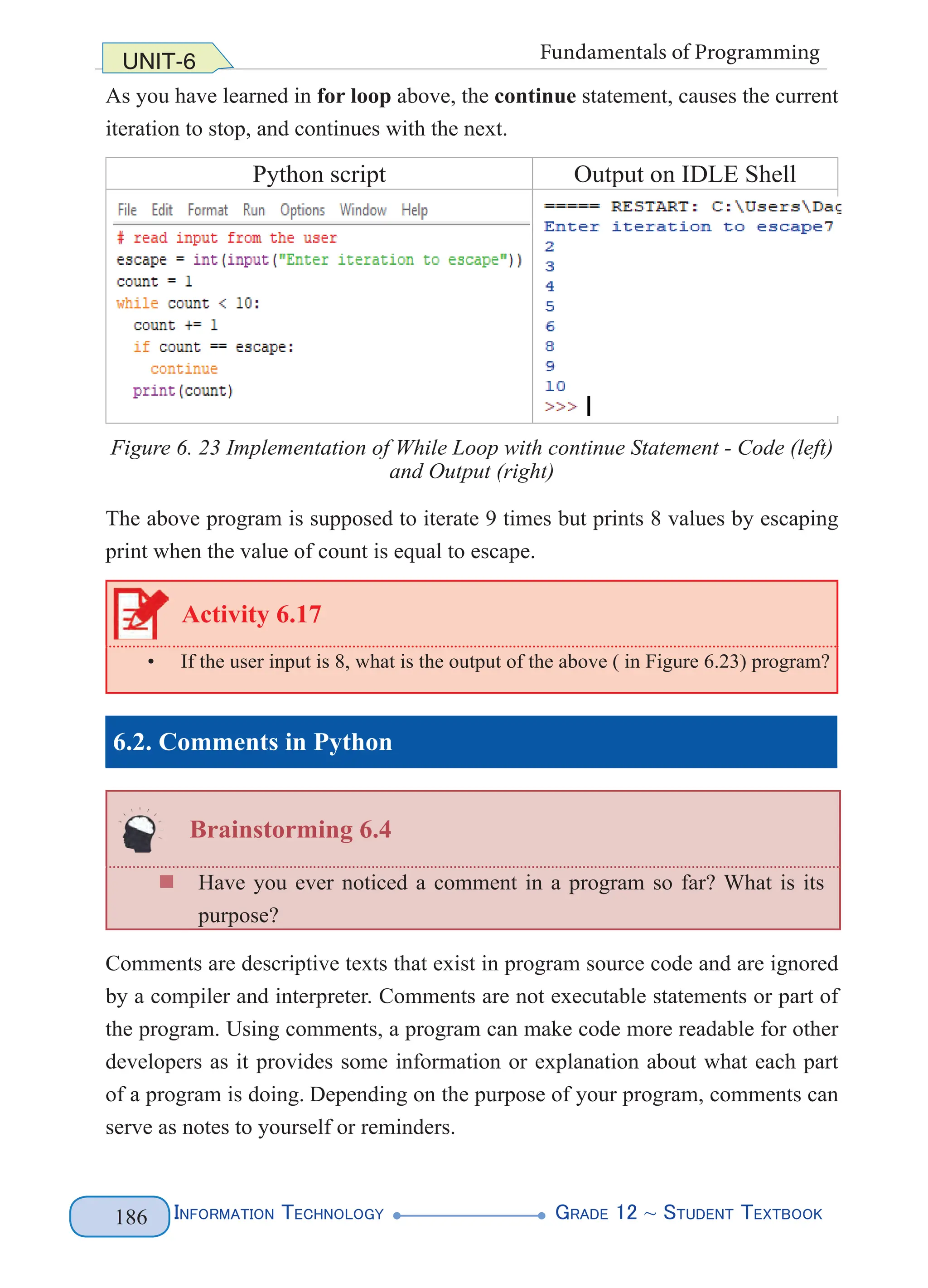
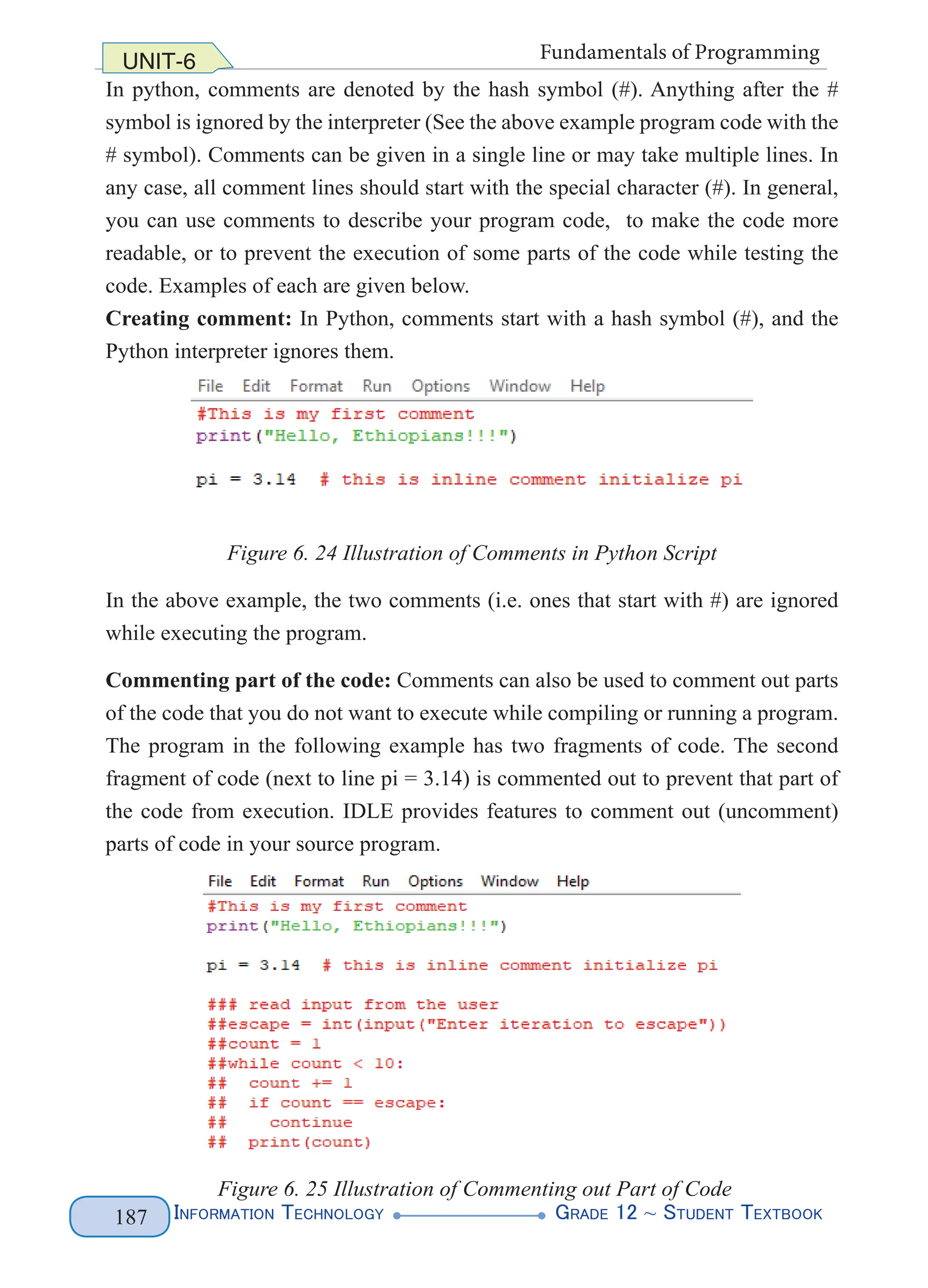
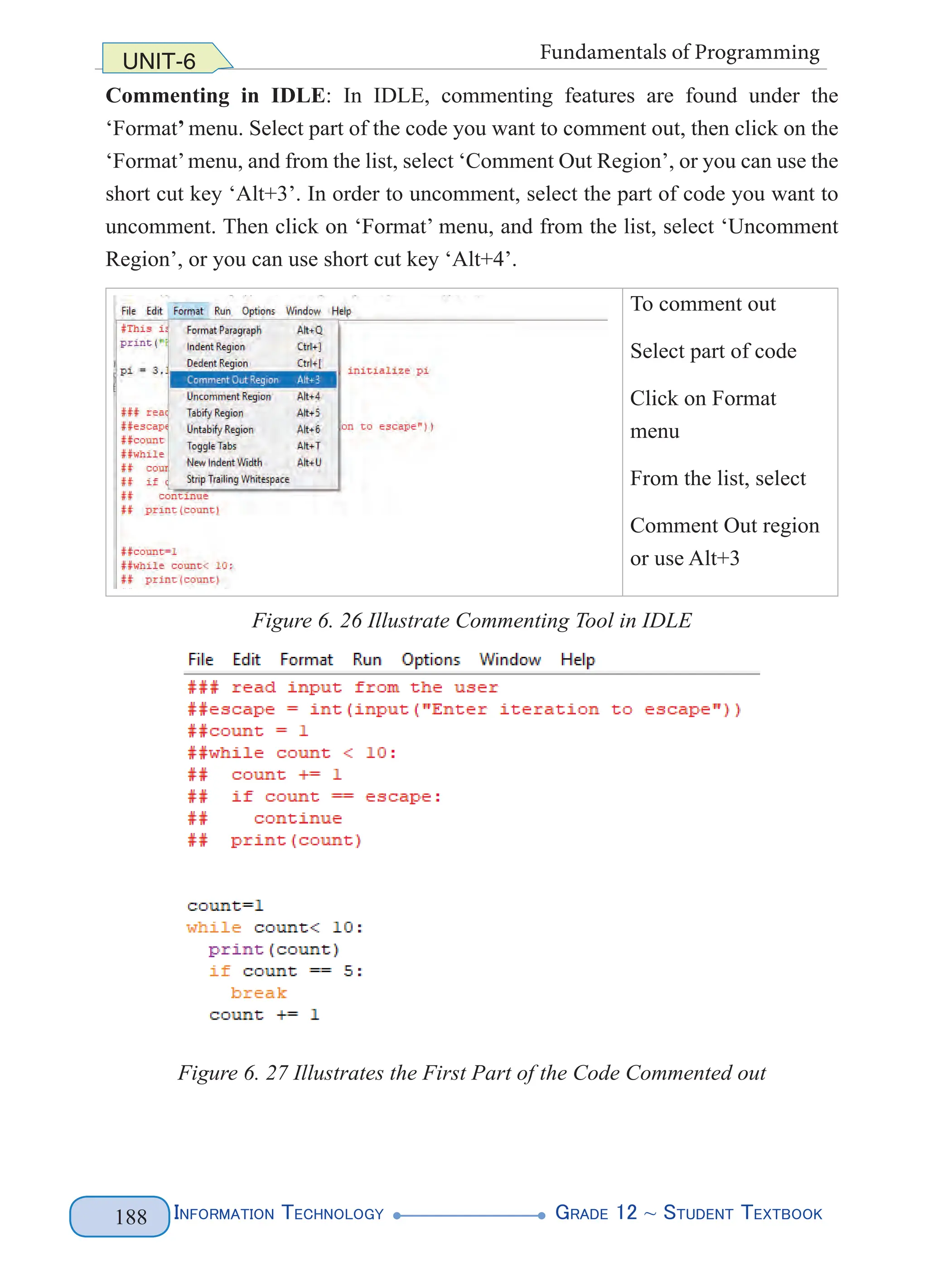
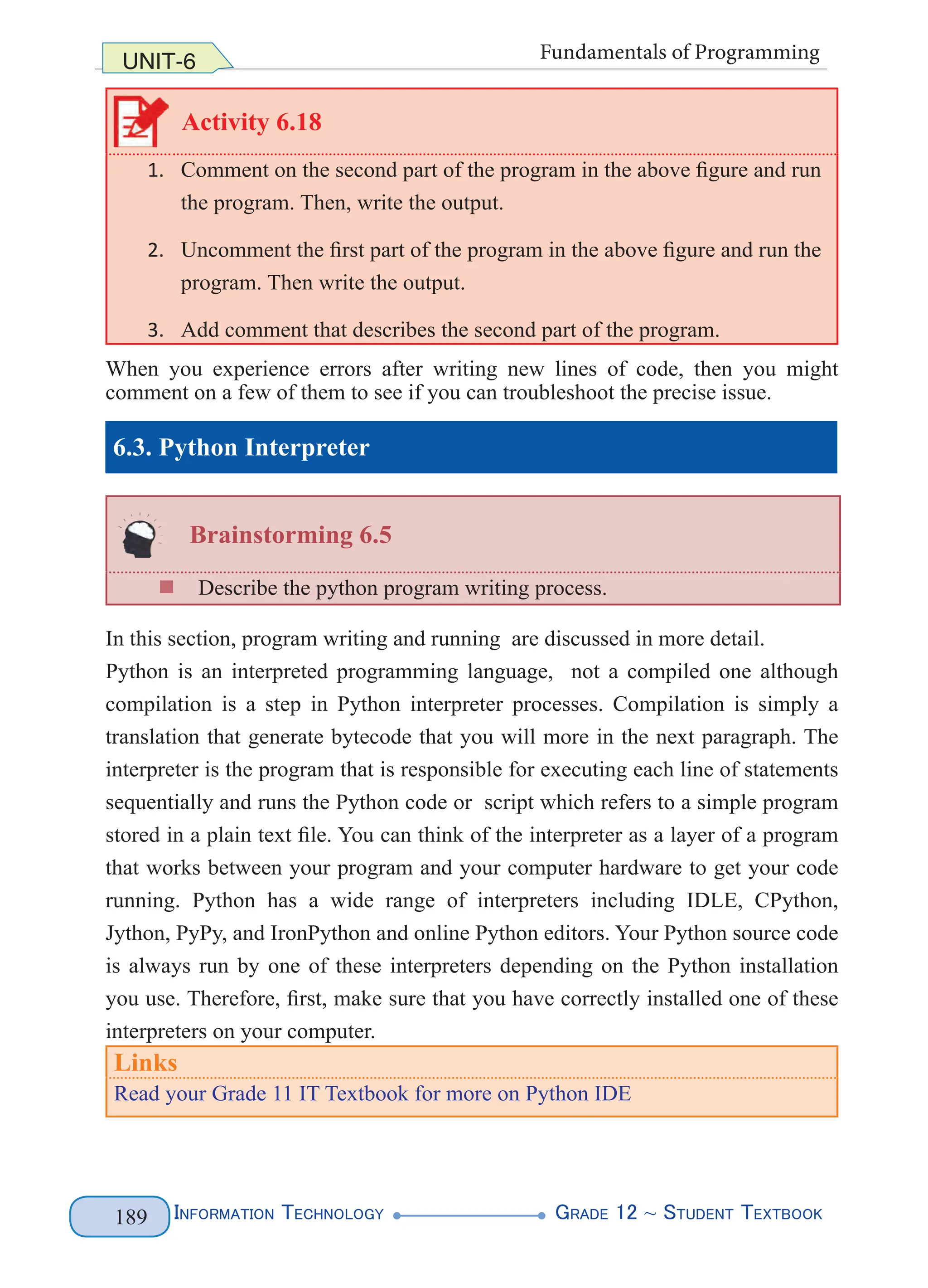
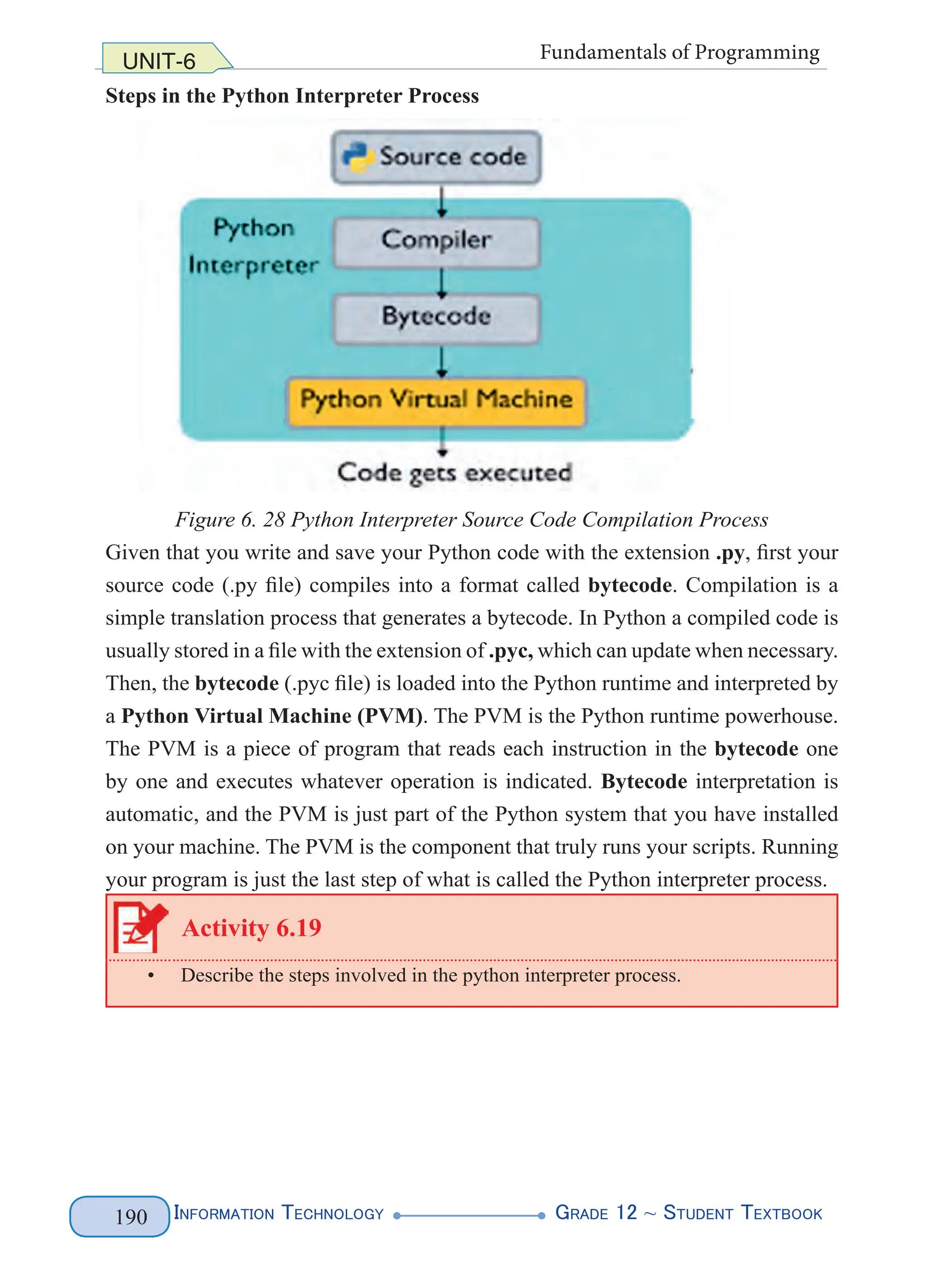
![Information Technology G
rade 12 ~ Student Textbook
191
UNIT-6 Fundamentals of Programming
6.4. Testing and Debugging Programs
Brainstorming 6.6
„
„ Why do we need to test a program?
Once you write your program source code, you save the file and run the code to
test whether the desired or expected output is generated. The program sometimes
fails to run correctly because of a bug. A bug is an unexpected problem in your
program. Bugs can appear in many forms, and some are more difficult to fix than
others. Some bugs are tricky enough that you will not be able to catch them by just
reading through your program. Luckily, Python IDLE provides some basic tools
that help you debug your programs with ease. Debugging means, having complete
control over the program execution.
Getting Started Interpreter DEBUG Mode
If you want to run your code with the built-in debugger in Python IDLE, you
need to turn to debug mode feature. To do so, select Debug → Debugger from the
Python IDLE menu bar. In the interpreter, you should see [DEBUG ON] appear
just before the prompt (>>>), which means the interpreter is ready and waiting (See
Figure 6.29 below).
When you run your Python file, the debugger window appears (See Figure 6.29
below):](https://image.slidesharecdn.com/g12-it-stb-2023-web-240506201855-05da823c/75/G12-IT-this-is-information-technology-text-for-all-198-2048.jpg)
